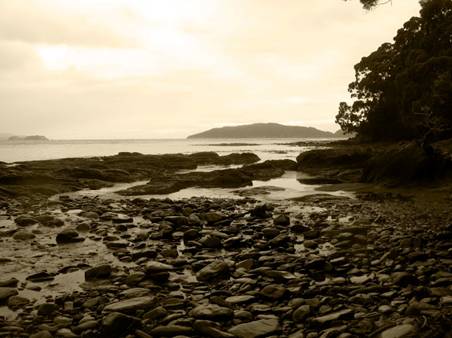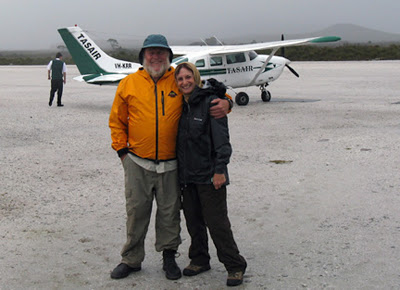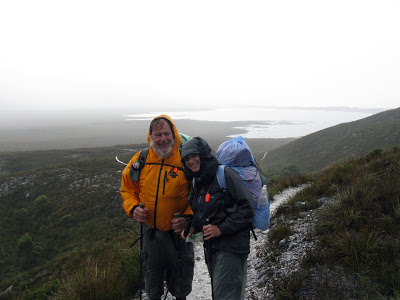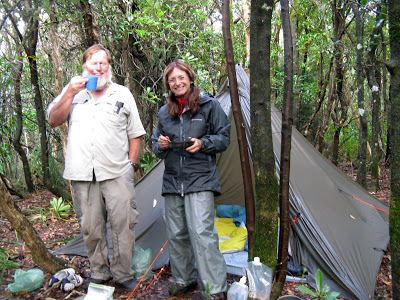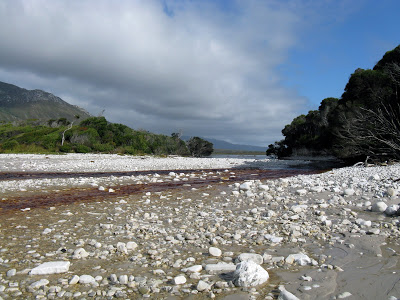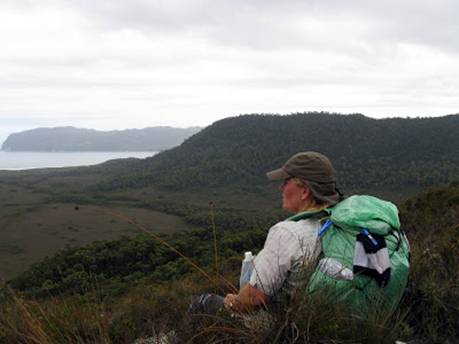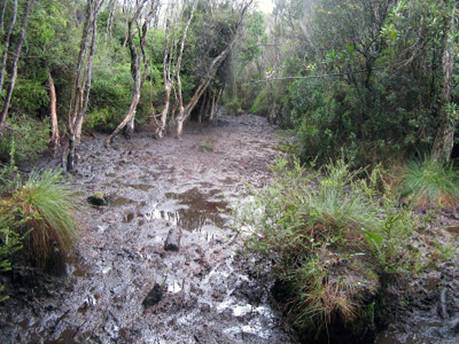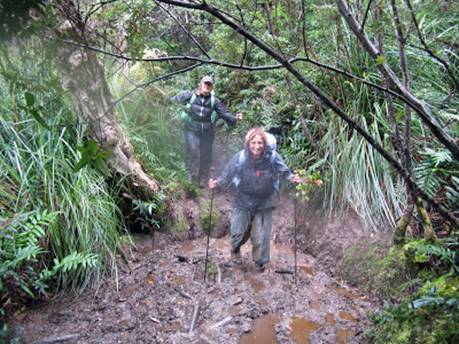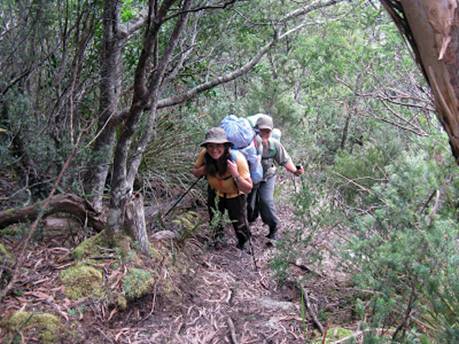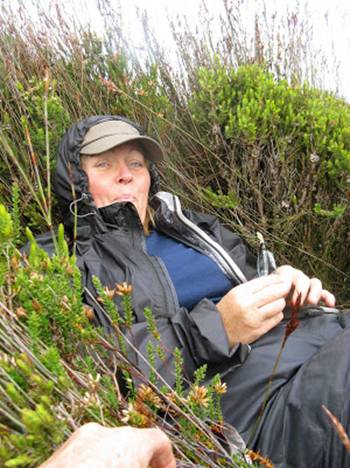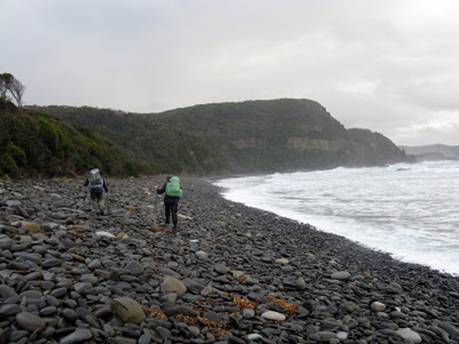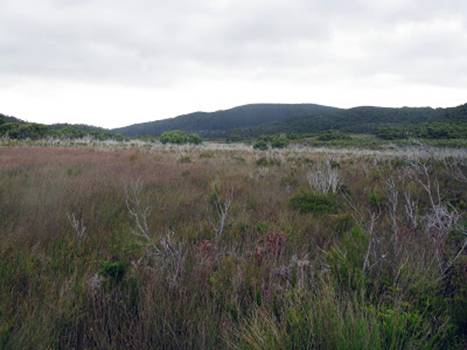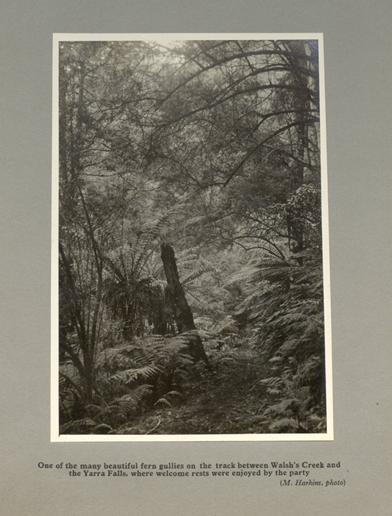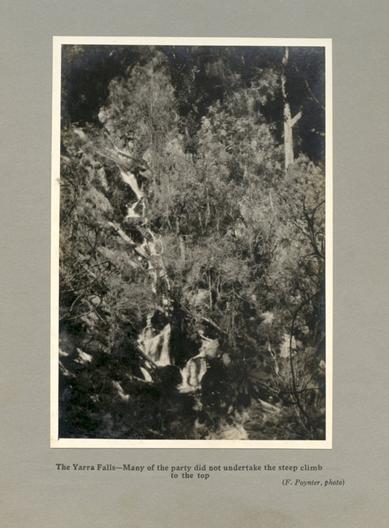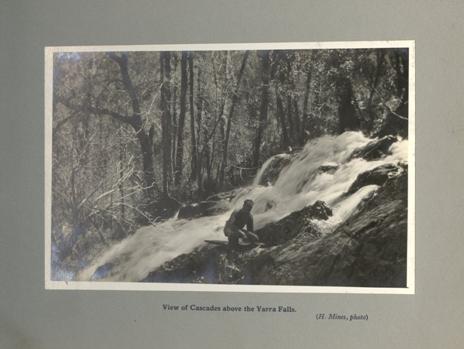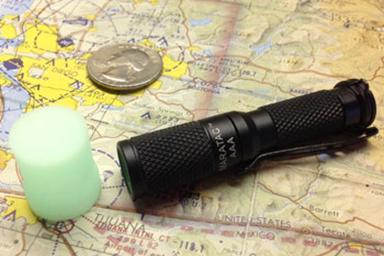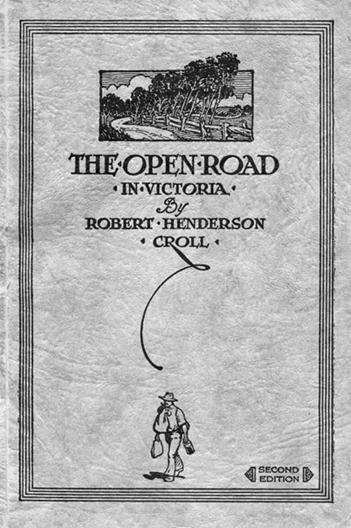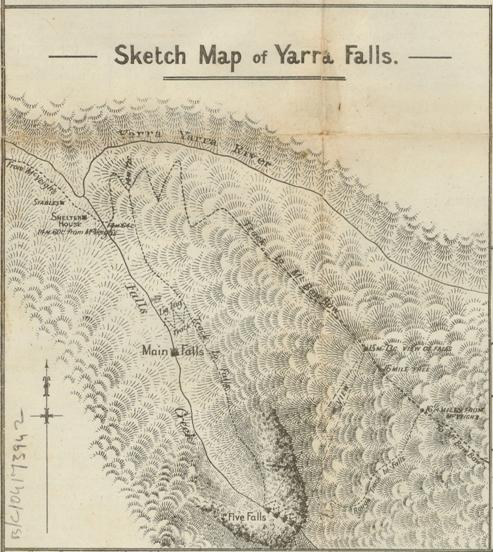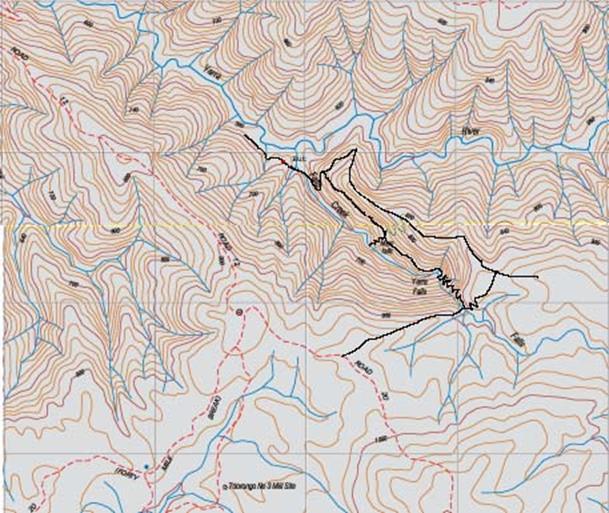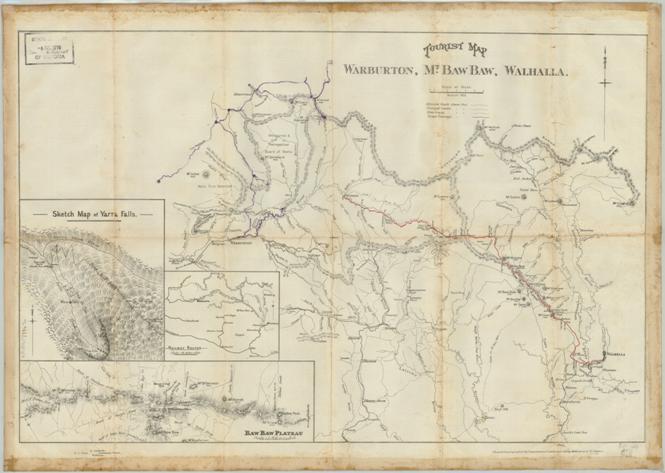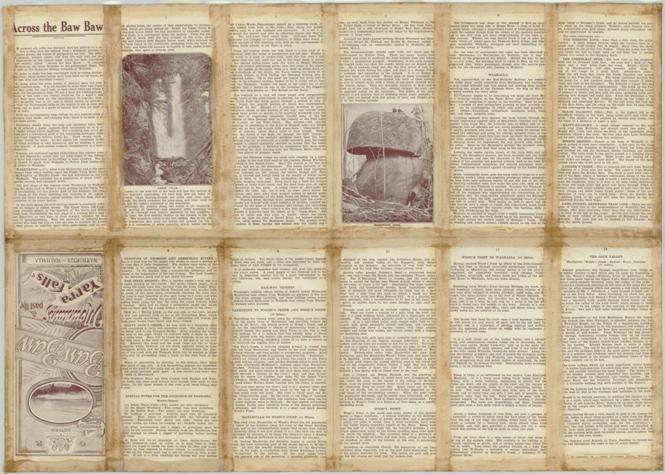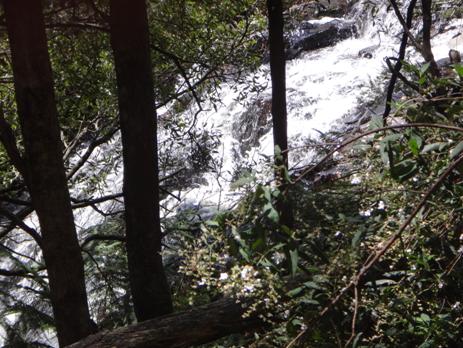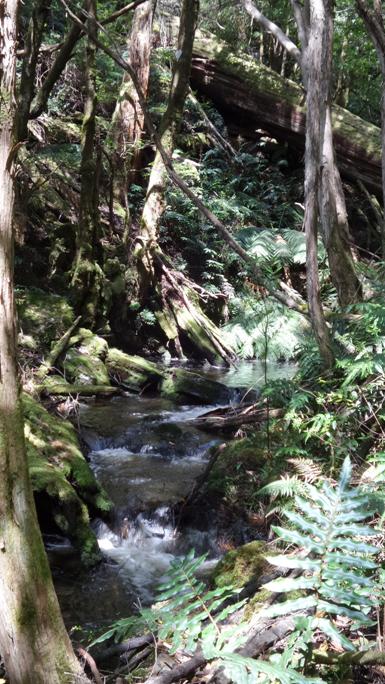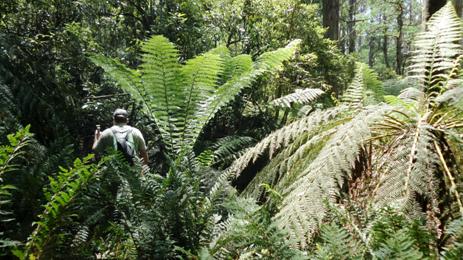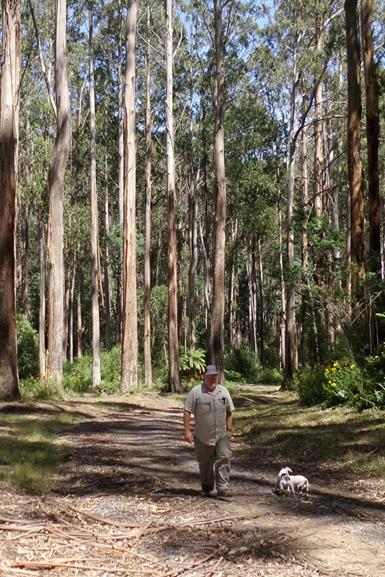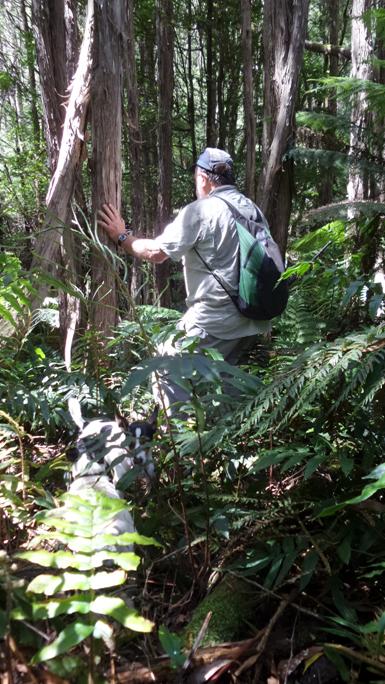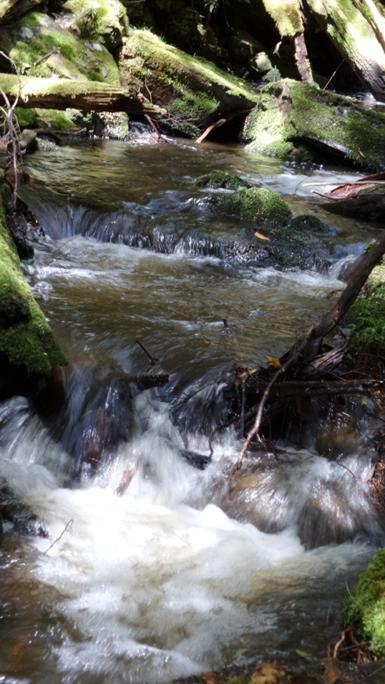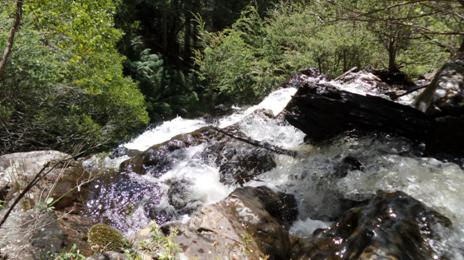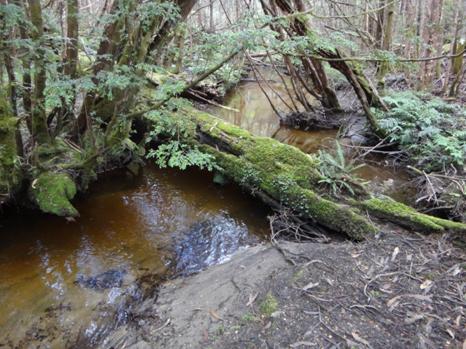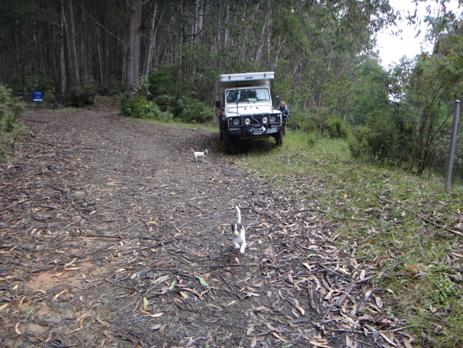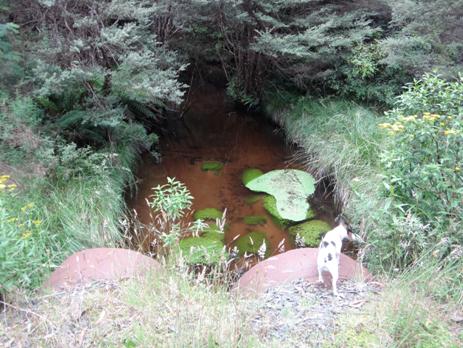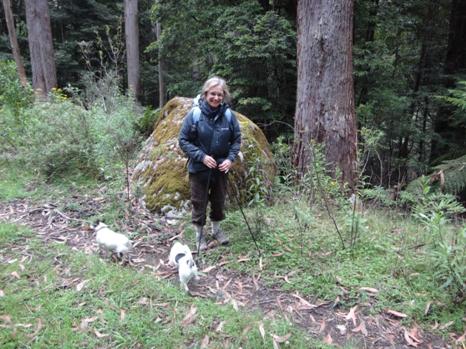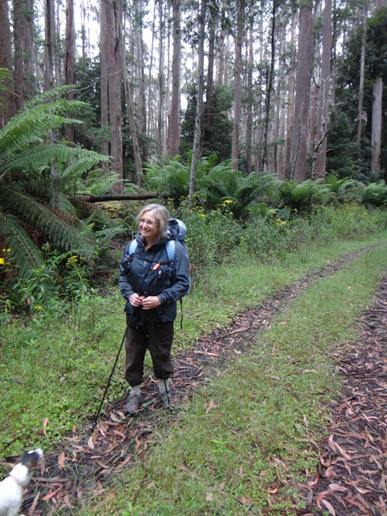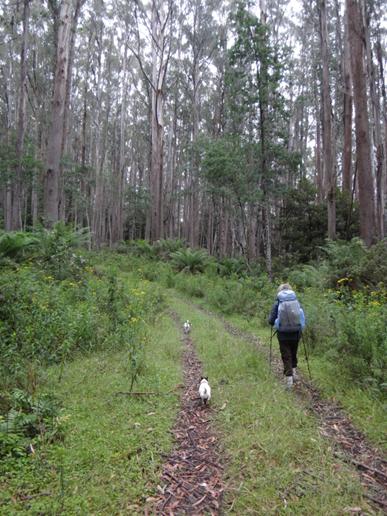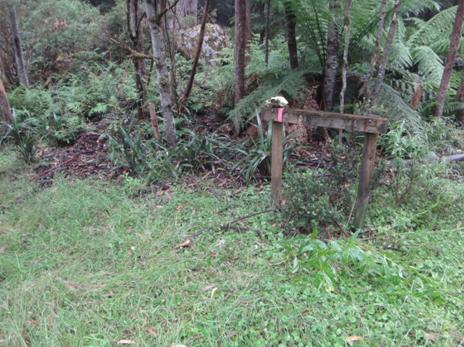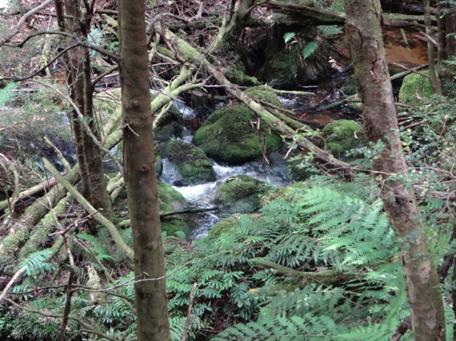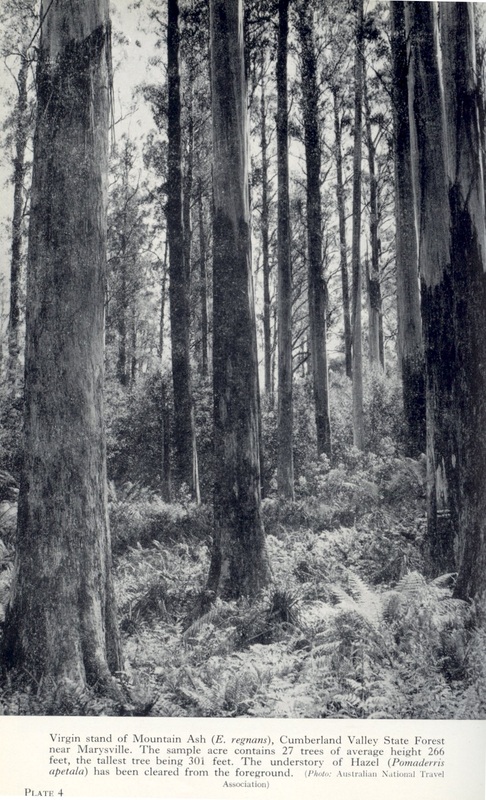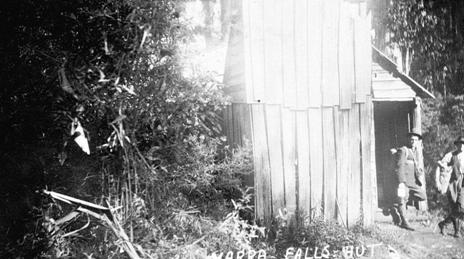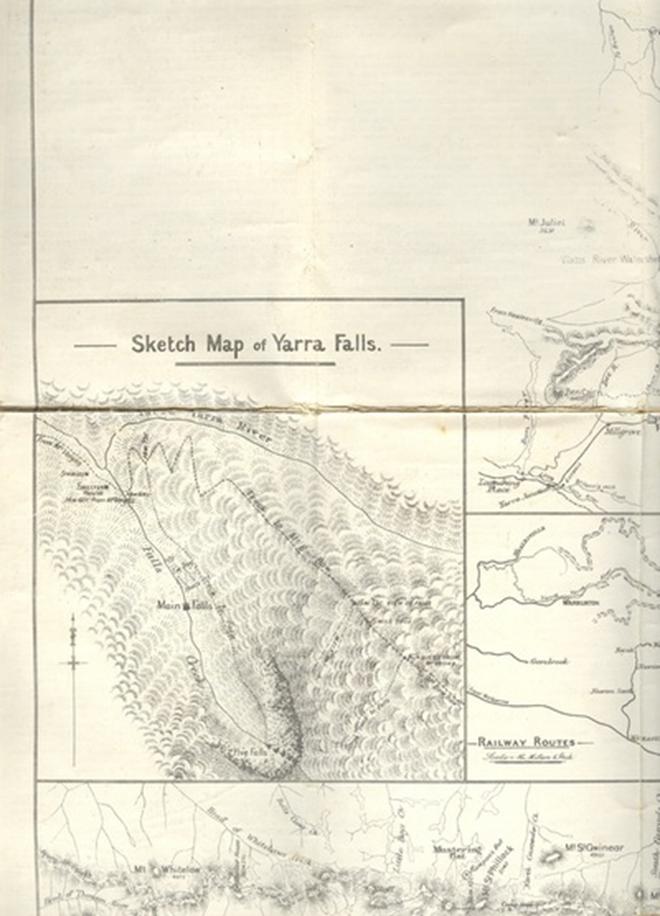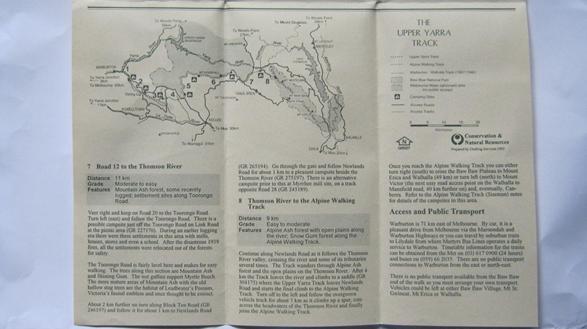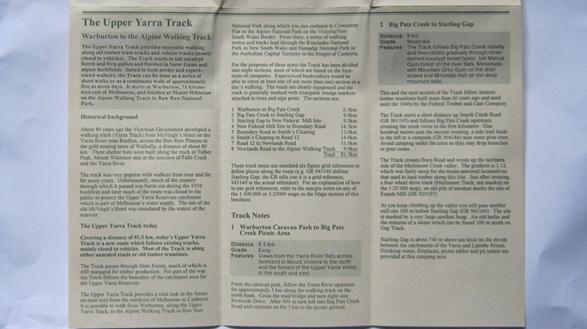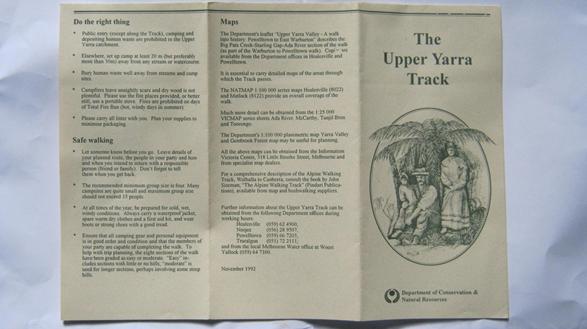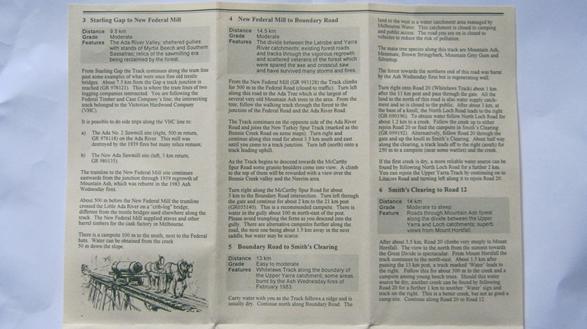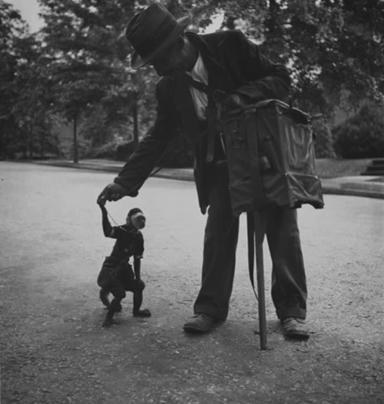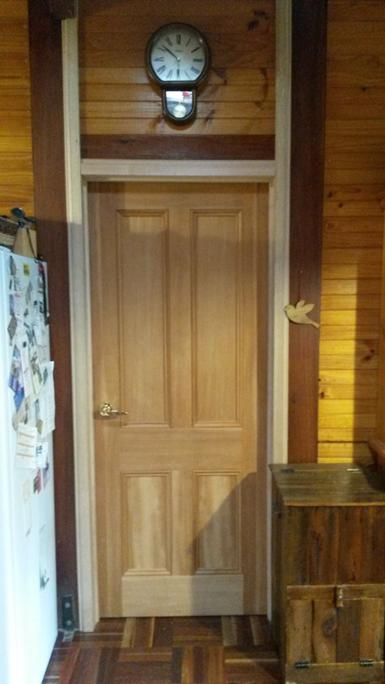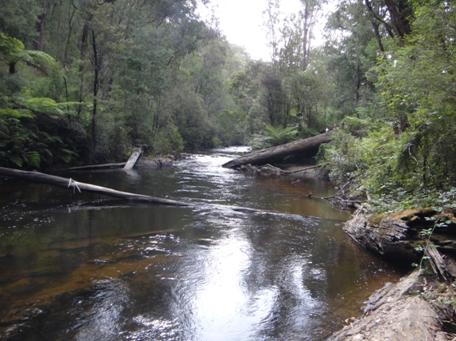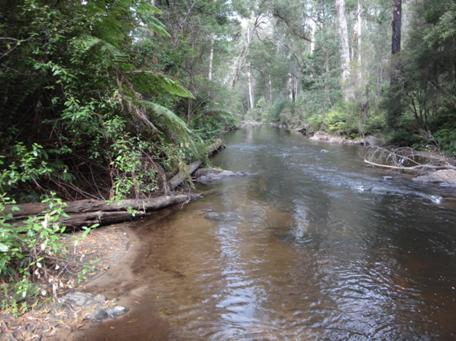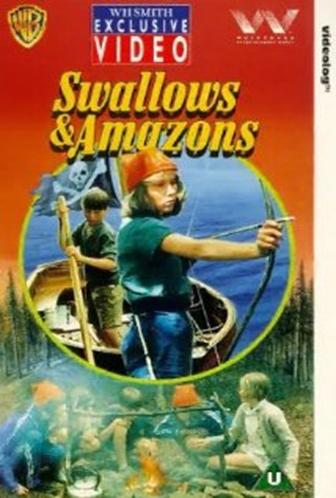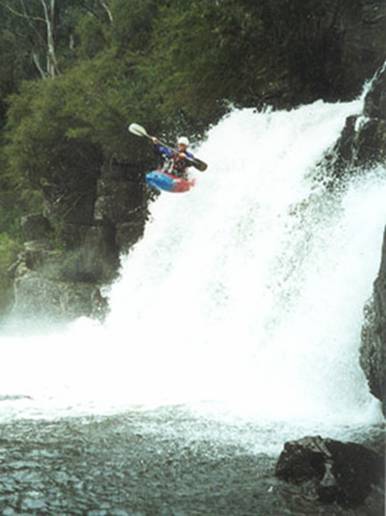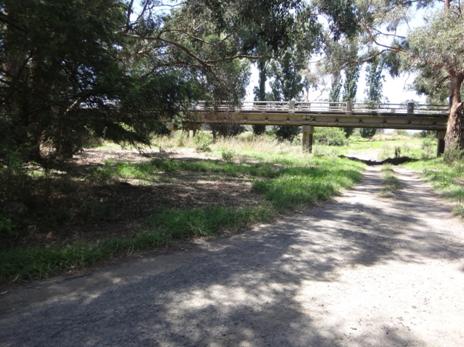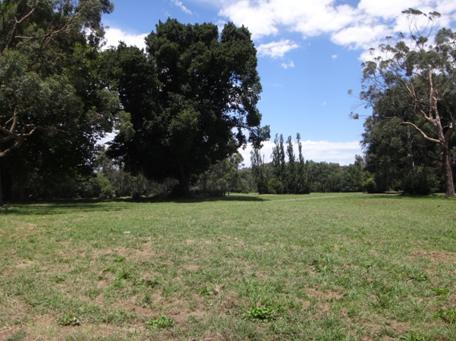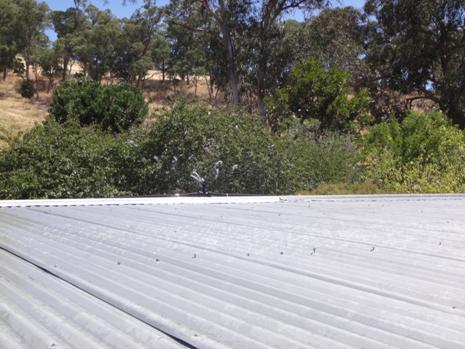Ultralight Hiking:
See also:
NEW

Della
& I (combined age then 120) heading off from Freney Lagoon on the second
day of our walk across
All about light weight, ultra light hiking, backpacking, bushwalking, hunting, tracks, trails, adventures, gear, reviews…
I have been
hiking/hunting now for over sixty years, a little more slowly than I once did,
walking in the Victorian
This is a ‘work in progress’. I will be adding to it on a regular basis adding new photos, adventures, product/ideas, suggestions, etc. You should also look at HIKING ADVICE also a section of gear advice for my son written in 2011 WORLD TRAVEL KIT FOR SON. You can also see my older posts here: Hiking 2014.htm & Hiking 2013 & Earlier. Hope you find something interesting.
PS: UPPER YARRA TRACK: I have recently created this site The Upper Yarra Walking Track Australia’s oldest (& best), an approx. 10-14 day walk with numerous resupply points, plentiful water and camping spots now extending from Moe railway Station @ 150 kilometres up the Latrobe, Tyers & Thomson River valleys, via Yallourn North, Erica & Walhalla, across the Baw Baw Plateau, along the Upper Thomson River, past the Yarra Falls & Mt Horsefall, along the Little Ada, Ada and Yarra valleys via Warburton to Lilydale Railway Station. Now, complete with Track Instructions
30/12/2015: Fire watch: Fire season again and we are once again endangered by two kinds of
maniacs: second: those poor benighted imbeciles who light fires on total fire
ban days (and who are not permanently locked up or executed for their misguided
efforts); and firstly: the crazy leftist bureaucrats and eco-nuts who (in a
misguided attempt to ‘save’ all our native bush) lock it away beyond all
rational use or management, ban any controlled fuel reduction burns, then blame
‘global warming’ when it all disappears in a gigantic puff of smoke on the
first really hot, windy day. What else was
29/12/2015: The
25/12/2015: Up Into
the
Our family celebrate Xmas tomorrow (due to work commitments), so what better day to continue our exploration of the ‘closed track’ which used to link Downey (North of Tanjil Bren) with Newlands Rd (Baw Baw Plateau)? We are hoping that this track will complete our ‘Winter Route’ of The Upper Yarra Track (http://www.finnsheep.com/THE%20UPPER%20YARRA%20WALKING%20TRACK.htm) . It has been very hard going, so we might have to find an alternative track up the ridge from Strahan (North West of Tanjil Bren) to the Block 10 Road.This track crosses the West Tanjil River just below Downey, follows it upstream on the true right bank for a couple of kms then heads up a ridge towards the plateau.

Spot is an expert at these river crossings, well practiced in keeping his paws dry. These huge iron pipes used to form an immense culvert.

He loves to lead the way; having a good time, I'd say! We are marking the track with tape as we go.

Sometimes it is hard going for the dogs (as well as the people)! This herringbone fern is particularly awkward to navigate.

Sometimes you come across the ruins of a forest giant. Who knows how tall this one was before its top broke off? Remember, these were the world's largest trees - up to 120 metres tall!

This younger tree is vying for the record.

It has come up right next to the stump of its parent tree. The younger tree is more than 3 metres diameter at its base; The stump larger still.

It was quite a substantial road once. This cutting is over 5 metres deep. 2-3 semis could easily pass on it. Such a pity such tracks were not retained for land management and recreational purposes.

Tiny just can't help but drink from every deer wallow! There was plenty of good deer sign, but the area must be well-nigh impossible to hunt.

Everywhere along the way are scenes of great beauty.

And interesting wildlife: this pigeon was almost as tame as Della's! Gippsland is wonderful!
Unfortunately we made it only about half way to the top. We may try
coming down from
Even though the forecast was for 35C yesterday, at Mt Baw Baw and Tanjil Bren it only reached 21C! 14 degrees difference! We are so lucky to have these mountain areas (relatively) so close by. Wonderful for cool summer hikes. The Upper Yarra Track traverses the outstanding Baw Baw Plateau with many camping and scenic attractions. The Mt Darling- Snowy Bluff wilderness is also only a couple of hours away and (also) being around 1.5km in elevation is much cooler in the summer months. Of course, check the weather outlook. It can snow at any time of the year at these elevations - and there is always the risk of bushfire in very dry conditions. After rain is always nice, as everything will be cool and freshened up.
See also: http://www.theultralighthiker.com/spots-hunting-adventures-1-mystery-river/
http://www.theultralighthiker.com/not-quite-alone-in-the-wilderness/
http://www.theultralighthiker.com/camping-by-the-moroka-river/
http://www.theultralighthiker.com/snowy-bluff-mt-darling-wilderness/
http://www.finnsheep.com/THE%20UPPER%20YARRA%20WALKING%20TRACK.htm
http://www.theultralighthiker.com/upper-yarra-track-update-section-one-moe-yallourn-rail-trail/
23/12/2015: Early
Visits to
The Argus

A.J.Campbell Junction of Yarra and Falls Creek (1905)
Interesting but rarelv visited scenes are to be found at the upper
sources of the Yarra between Mount Baw Baw and the main
The Argus
THE FAR
REMARKABLE FALLS.
Except to a few surveyors, occasional prospectors, tourists, or
opossum hunters the region of the
For years I had desired to ascend to the fountain-head of the Yarra, and the chance came recently, when a party of four consisting of a surveyor, a Gippsland bushman, a field naturalist, and a photographer, undertook the trip.
The junction of Walsh Creek with the Yarra, 67 miles from town, is easily reached by rail and coach in one day. We put up at McVeigh's Upper Yarra Hotel, on the direct road to Wood's Point, where it commands a view of a fine flat in the fork of the two streams, at an elevation of 1,000 ft. above sea level.
At 7 a.m. next day we leave McVeigh's, with an addition of two to our party- a pack-horse and his owner. We need the horse to carry a tent and provisions for a week, and the owner to look after it. The track leads along the South side of the river, and is high enough to enable us to look down on the stream, bordered with fine ferns, and running swiftly over a rocky bed. Heavily timbered ranges rise from the opposite side. On our side, on a narrow flat, are some whitegums, 200ft., by actual measurement, in height. At half-past 9, several miles from Walsh Creek we reach Contention Creek. Why so-called we could not ascertain. We unpack our camera to photograph "the highest habitation on the Yarra." There is a gold-mining claim, yielding payable gold.
The occupant of the hut welcomes us with bush hospitality, and the billy is soon on the fire. After an hours spell, we dive in single file into the forest. At first the way, although overgrown, is tolerably good, but when we descend into the gullies, and get enveloped in thick scrub, we find the going difficult. Our packhorse, save when bumping his load against a tree, or when grunting loudly on the steep pinches, be- haves splendidly, and mile by mile we move along the mountain sidelings, while the river is heard below, though lost to sight in thickets. Not only are we getting smothered in timber, but the mountains appear to be converging. On the opposite side occasionally a valley densely timbered, opens, denoting that some tributary comes down to join the main stream.
It is refreshing to descend, when we get a little warm, into the beds of rivulets, to rest under ferns, protected by groves of sassafras and beech. We slowly but surely forge our way along through the forest, enlivened by the voices of a few birds-lyre birds, cockatoos, and parrots. Three snakes are seen but only one is dispatched. We sight a blazed tree on a steep sideling. "Ah", says the pack horse owner, "this must be where the last party lost their packhorse. They said they blazed the place." We shudder when we gaze down and wonder what we should do should our horse topple over with tent and tucker, and disappear among the vegetation far below. Our experience came on the return journey, when our horse fell twice, and nearly rolled into the river.
Abut 4 o'clock, when getting weary, we break suddenly upon a splendid stream. It is Falls Creek, where we pitch our camp. We indulge in mutual congratulations over our safe arrival. A circular flat is selected for the camp - a most charming and picturesque spot, enclosed by tree ferns, presided over by stout stemmed beeches. Between tent and stream is just space for a table and a fireplace. Ferny beds are made, and we feel exceedingly happy and snug when enjoying our evening meal. High ranges, clothed with vegetation, wall us in completely. The world is shut out, and we are alone, with the silence broken only by the sound of the running waters, and the rustling of the leaves when they are stirred by wandering airs.
The business of next day is to explore the creek from its junction with the Yarra to the top of the falls. Where the junction occurs, a hundred yards below our camp, the Yarra comes in seven paces wide, from the eastward, and the Falls Creek, with one third less volume, from the southeast. Crystalline waters meet on a shingly bed, ferns lending charm to the scene, and we get a lovely picture for the camera. The height above sea level is approximately 1,770ft. Keeping to the rocky bed of the stream, which is choked with logs, we gradually ascend.
We arrive at a pretty vista, opened up by the fall of trees which have cleared an opening along the creek bed. On our left is a wall of vegetation, chiefly beech, gilded on top with sunshine. At 11 a.m., after rounding a bend, and brushing aside overhanging fronds, we catch a sight of the lowest fall. The water descends in a leap of about 70ft. and spray from it is wafted upon us like "scotch mist". It needs no small effort on our part to climb over friable earth and large flat stones to the head of the fall.
Shortly afterwards we catch sight of a second fall. Before we attempt to renew the climbing process we sit down in full view of an interesting scene to lunch. When again on the move upwards, we find the climbing harder work than ever. It may even be said to be dangerous. As soon as the second fall is conquered, a third appears, and beyond it a fourth. Perspiring freely, we climb on, laying hold of rocks, tree stems, and tufts of grass to pull our selves up. As we rise, we notice that the scrub is thinning, and that the big trees are eucalypts, sure signs that we are passing from the region of moisture on to comparably dry levels.
Near the top we encounter an outcrop of silurian rock, with all the slate-like strata vertical. Where the falling stream meets the rock it is diverted at right angles and drops50ft. down a gulch. We surmounted six falls in all, and were not sorry when we came to the uppermost for we found ourselves almost "played out". Though we started early in the morning, we did not reach the summit till late in the afternoon. At the sixth, or top fall the stream is divided by rocks. It descends for a little distance in two branches which eventually meet in the sasaffras below. Our aneroids indicate that we have seen 1,000ft. since the morning. Between the first fall and the last we jump 700ft. in about one-fifth of a mile, their length being all told.
Our surveyor picks up the old Baw Baw track, by which we descend the
sharp spur dividing the Yarra proper from Falls Creek, and we arrive in camp in
an hour. When the track from Contention Creek to Falls Creek, a distance of
about 11 miles, is reopened, a new and interesting route will be available for
tourists to one of the most romantic regions in
AN
On a subsequent day we explored the range above our camp. Starting
early we ascended 1,000ft. by the track which had brought us down from the
summit of the falls. The upper levels, above the scrub, were covered with big
eucalypts and tall grass. We headed easterly, and soon got into beech timber,
mixed with sassafras. The "forest floors" are carpeted with stiff
Our path is very scrubby and obscure in places, but the surveyor and bushman, who take the lead in turns, keep to it instinctively. Our traveling is slow-about a mile and a half an hour- through our having to step high over logs. Sometimes we brush through scrub bearing white star flowers, and the vegetable dust shaken off as we pass sets up irritating coughs. In a sunbeam we could distinctly see the dust when the scrub was shaken. The plant is called "choke" bush (Aster stellulatus). When we are fairly in the beech forest avenues of magnificent trees open up in every direction. Their stems are bedecked with moss and lichen, and they bear masses of dark green foliage. The track we are on cuts the line from Noojee to Aberfeldy, one of Whitelaw's early tracks; but we keep our own, passing a signboard on a tree marked "To the Yarra Head".
We come to a gumtree ridge, occupied with immense trees, and observe one or two black cockatoos, some gang-gang cockatoos, and a family of handsome King parrots. The scrub chiefly consists of a dwarf "Christmas" tree, or Prostanthera. Both flowers and foliage diffuse around a heavy perfume. Then we arrive at a tiny hill and an outcrop of granite, at an altitude of 2,000ft. above sea level. After that we pass through acres upon acres of fine, tall eucalypts, standing as close together as they can grow, straight stemmed, shooting skyward from 100ft. to 150ft. This wealth of timber is known to extend along the ridge for 10 or 11 miles. Once we are properly in the granite country the vegetation changes to acacias (silver wattle, &c.), pittosporum, native hazel, leatherwood, &c.
While photographing and botanising were proceeding, the surveyor pushed along the "T" track, encountering much fallen timber, and reached the Tanjil track at over 4,000ft. Turning south-west along it, and passing the "14-mile tree", he struck the Yarra for the last time. Here at 3,160ft., it is only two paces wide, descending by a depression from the base of Mount Baw Baw, whose rounded crest could be plainly discerned three or four miles away, backed by a great billowy cloud, while above all was the ethereal blue. Following the stream down with difficulty for about two miles, the surveyor reached the bridge where we were, and we all returned to camp, which was reached about 6 o'clock.
The fewness of the birds surprised us. We neither heard nor saw magpies above Walsh Creek, and very few laughing jackasses. In the beech forest we heard the pretty rose-breasted and pink-breasted robins. We saw a few pairs of flame-breasted robins on the saddles of the range. A lyre-bird entertained us there, whistling near our camp. We noticed many lyre- bird dancing-grounds in the gullies and in the open scrub among the tall gums. There appear to be no fish in the streams.
Of plants we made an interesting collection, some 300 specimens, representing about half that number of species. A yellow flowering tree, Daviesia, attracted us much on the ridges. Near Walsh Creek we came across a patch of about five acres of boronia (B. pinnata), with small but sweetly-scented foliage and tiny pinkish flowers. Subsequently, on our submitting a sample of the shrub to a perfumory chemist, he reported that it yielded enough essential oil to have a commercial value.
We tried to find Hoddle's marked tree, "1843", near our camp, but failed. Wear and tear for well-nigh threescore years had no doubt obliterated it.
22/12/2015: Upper
Yarra Track 1912 Victorian Railways Brochure: Picturesque Victoria and How to
Get There: ‘Click on ‘The Warburton-Walhalla Trip Via the Yarra Falls and Mount
Baw Baw’: PS: It is in Pdf. I have tried and tried to convert this to Word so I
can post it whole, but I have failed…There is an absolutely beautiful [c 1900]
photo by A.J. Campbell of the junction of the Yarra and Falls Creek which I
hope soon to emulate. The Upper yarra falls were originally called ‘

21/12/2015: Upper
Yarra Track Winter Route:

We were looking for a ‘closed road’ which shows on the map Noojee

Turns out the GPS and map are seriously ‘out of kilter’ in this small area of map. I have found this before, eg on my walk to Mt Darling last year (http://www.theultralighthiker.com/snowy-bluff-mt-darling-wilderness/) I guess up to a km wrong! This meant I did a fair amount of bush bashing no doubt along what had once been old snig tracks etc, finding nothing but photo ops.
Finally we managed to locate the spot where the ‘road’ had crossed the river. Several huge pipes still lying in the river bed over which we were able to clamber without even getting our feet wet. This was on the way back actually. On the way across we took off our shoes and waded in our Crocs, as it did not appear we could make it dry-footed across the pipes. The water was so chill Della practically had a seizure. Sissy!
After we had crossed the old road was easy to see and we followed it
a couple of kms up the mountain, but not quite as far as

Disease can sometimes look beautiful: observe this amazing gall.
Della has not quite recovered from her (second) eye operation, so we
turned back without having found our way to Frangipani Saddle where this route
meets the ‘Upper Yarra Walking Track’ thus completing our ‘Winter Route’. There
is always room for another adventure. It will most likely be a couple of weeks
before we get back as we are working in the kids’ store Xmas-New Year. We have
cleared and marked the path (with blue tape) from the end of the driveable
section of
http://www.theultralighthiker.com/western-tyers-river-great-for-crays/
http://www.theultralighthiker.com/the-western-tyers/
http://www.finnsheep.com/THE%20UPPER%20YARRA%20WALKING%20TRACK.htm
http://www.theultralighthiker.com/upper-yarra-track-update-section-one-moe-yallourn-rail-trail/
http://www.theultralighthiker.com/upper-yarra-track-update-section-three-wirilda-to-moondarra/
http://www.theultralighthiker.com/upper-yarra-track-section-four-moondarra-to-erica/
http://www.theultralighthiker.com/upper-yarra-track-summary-cumulative-distancestimes/
http://www.theultralighthiker.com/upper-yarra-track-osheas-mill/
http://www.theultralighthiker.com/a-beautiful-world/
http://www.theultralighthiker.com/upper-yarra-track-winter-route-caringal-scout-camp-tyers-junction/
http://www.theultralighthiker.com/upper-yarra-track-winter-route-western-tyers-to-tanjil-bren/
http://www.theultralighthiker.com/kirchubel-if-you-go-nowhere-else-in-the-world-at-least-go-here/
16/12/2015: Blossoms
at last: Eight days have passed since I observed these in full flower in


16/12/2015: Water: Hiking Desalinator or Survival Still @10 grams that may save your life: I am just working on this idea. Here I have epoxied a copper flange to an old can of powdered milk and attached 1 metre of old silicone tube. I was catching the water in a Vargo 450 ml (cool lips) titanium mug. I was just cooling the steam with wetted down tea towels. I collected nearly 400 mls in an hour. I need to improve the steam condensation. I will purchase a Platypus hydration tube (as that is what I figure folks will carry (which is a much lighter weight 102 cm PU tubing) which will hopefully shed heat better.
I will also make up a trough so I can cool nearly all its length with water. I expect I will more than double its output. If you needed to do this in the wild (presumably by the sea) you could make a trough in the sand, line it with your raincoat and fill it with water. You could also bury the collection cup in wet sand and perhaps cover it with something else to prevent steam escaping. Doubling output would produce more than 2 litres in 3 hours – enough for a day of low activity – so certainly enough to save your life.
I am imagining adding the flange to your existing billy lid or placing it in an extension ring which sits between billy and lid. Such an extension ring, if I can figure out how to make it adjustable (and fit) would weigh only 15 grams or so and fit with your other cooking things in your billy or pot.
PS: I just made the flange from a piece of copper water pipe using a plumbing flaring tool. You could cut the flared end from a car's brake line obtained from an auto wreckers. I used a small piece of 'Dynasteel Epoxy Putty' [250C] to attach it.
See also:
http://www.theultralighthiker.com/sawyer-water-filter/
http://www.theultralighthiker.com/dehydrated-water/
http://www.theultralighthiker.com/water-filter/
http://www.theultralighthiker.com/rivers-in-the-sky-never-die-of-thirst/
http://www.theultralighthiker.com/survival-still/

14/12/2015: Super AAA
Torch: You really could spotlight a fox with one of these beauties: 175 grams,
4 AAA batteries, 320 lumens. Approx $70: http://www.ledlenserusa.com/p7-2-348.html#start=1
13/12/2015: Some people are just tired of living: http://imgur.com/NbdNuql
13/12/2015: Leeches: In Australia (and elsewhere) it is quite common to encounter these beasties in the wetter areas. They avoid sunny patches. They do you no harm, though many (like me) have an allergic reaction to their ‘bites’, so it is good to avoid them as much as you can. I have already recommended ‘Anthisan’ antihistamine ointment to treat allergic reactions to bites http://www.theultralighthiker.com/insects-can-ruin-a-camping-trip/ (you will have to order it over from a NZ pharmacy) and the practice of using surface spray (eg on your calves), tucking your trousers into your socks and wearing long-sleeve shirts in ‘leechy’ spots such as rainforest areas http://www.theultralighthiker.com/ultralight-personal-hygiene/ .
When you put up your tent for the night you don’t want to erect it on a hundred leeches and have them wriggling all over you all night. I have seen shady areas where when you wave your warm hand over the ground a hundred leeches will stand up and wave at you! You need to carry a small atomiser containing surface spray such as ‘Baygon’ (which can be bought from some supermarkets in bulk - ie not in spray cans) to suit such decanting. Atomisers of various sizes are available all over (try eBay). You will need to match the size to your need. You need to be able to spray the entire footprint of your tent plus an area say a metre around it. If/when you do have a leech attach to you, remember it will do you no harm (indeed they have been used for centuries for their supposed health benefits) and will eventually drop off. If you want to hurry that along a bit, a lighted cigarette or some salt will move them on mighty quickly.
If (like my wife) you don’t like the idea of sleeping on surface spray, carry enough salt in a snap lock bag to sprinkle the same area. This will kill and keep leeches at bay too.

12/12/2015: Leadbeater’s
Possums:

11/12/2015: Kirchubel:
If you go nowhere else in the world, at least go here. Just a few kms walk
outside the small

Many beautiful wildflowers carpet the verges: buttercups,

And Alstromoerias.

Just before

It is so like

The dogs enjoy the rich, earthy smells of the deep forest litter beneath the majestic gums.

An old (closed) bridge begins Kirchubel‘s Tramway, its exploration to be saved for another day. Maybe some of the 18 old timber bridges yet survive?

The first of the

There is a cast iron pipe at the top of the falls. Water supply to
the lost

Some recollections of this township (lost over 50 year ago) yet
survive: Colin Bigwood writes, ‘In the
early 40's my dad Roley Bigwood, my mum Elsie, and my younger Brother David and
myself Colin went to Kirchubel's sawmill to live. My Dad worked mainly on the
breaking down saw, and had a scar on his right upper-arm to show until he died
where the saw grabbed his thumb while fitting a packing block to the leading
edge of the bottom blade. He also was a leader in on one of the benches. When
we first got there Mr. and Mrs.
See also:
http://www.theultralighthiker.com/western-tyers-river-great-for-crays/
http://www.theultralighthiker.com/the-western-tyers/
http://www.finnsheep.com/THE%20UPPER%20YARRA%20WALKING%20TRACK.htm
http://www.theultralighthiker.com/upper-yarra-track-update-section-one-moe-yallourn-rail-trail/
http://www.theultralighthiker.com/upper-yarra-track-update-section-three-wirilda-to-moondarra/
http://www.theultralighthiker.com/upper-yarra-track-section-four-moondarra-to-erica/
http://www.theultralighthiker.com/upper-yarra-track-summary-cumulative-distancestimes/
http://www.theultralighthiker.com/upper-yarra-track-osheas-mill/
http://www.theultralighthiker.com/a-beautiful-world/
http://www.theultralighthiker.com/upper-yarra-track-winter-route-caringal-scout-camp-tyers-junction/
http://www.theultralighthiker.com/upper-yarra-track-winter-route-western-tyers-to-tanjil-bren/
11/12/2015: Levitation brace gives users spring-loaded
knees Whether they're playing sports or suffering from joint injuries, some
people could definitely benefit from using a wearable assistive device. That's
where Levitation comes in. It's a spring-loaded knee brace that augments the
user's quadriceps. I may soon need a pair of these: http://www.gizmag.com/levitation-spring-loaded-knee-brace/40709/

10/12/2015: Upper
Yarra Track Winter Route:
Percy Burn Viaduct,

There are a number of pleasant spots to camp along the way. I can’t tell you how many times my kids played on this old log as they grew up. The oldest is now 34: she first went there when she was two! I have caught a couple of lovely crays or three underneath it.

There are two campsites at Palmers. This is the first.

The second one where the bridge used to cross the river is where the tramline carried on to Growlers. It is still possible to walk along it – and the more who do, the easier it will be. You can continue on along the road, but the views of the river and forest are better from the tramway. nowadays.

A refreshing dip on a hot day will surprise you how very cold the water is on the South Face of the Baw Baw Plateau.

There are some wonderful rapids in this section of the river I used to enjoy when I was suicidally young and ebullient! There is also great fishing. The 2-3 km of the old railway is quite flat – a serene & peaceful camp could be made here and there along it. There is also a single pleasant camp where it rejoins the road just below Growlers, and multiple sites a little over a km further at Growlers itself.

The old railway is easy going in places at least.

With great views of the river.

And some amazing rapids.

You never tire of watching water flow over stone.

Spot enjoys the view too.

The road carries on up the river to Growlers.

There are many wonderful stands of ash regrowth.

Growlers is a pleasant camp.

A quarter century ago I used to walk across the bridge at Growlers and follow the road which has now disappeared into the forest a couple of kms downstream to where there were immense sawdust piles over 20 metres high scattered along the river flats. Who knows how many forest giants they represented? Their insulative ability and I guess decomposition in their depths made them magically warm spots in the forest where no frost or snow would linger. They were a favourite bedding spot for deer, for that reason. I often put up a fine stag here. The forest is probably far too thick for hunting.
After you come out on to the Tanjil Bren Rd it is only a few kms to the turn off to Christmas Creek, a very pretty camping spot where you may wish to spend a night a couple of kms off your main route.

You can imagine camping by the bridge at Christmas Creek for a couple of days.

You continue along the

After Tanjil Bren, a really beautiful side trip is to walk west
along the
09/12/2015: Baw Baw Plateau: has to be THE most beautiful area in
the world. We spent yesterday afternoon driving and walking around parts of its
South Face working out possible winter routes for our Upper Yarra Track
project, discovering mainly that we need to go back there for many awe-struck
days yet. More pics and posts to follow but feast your eyes on these two gems:
Sunset view towards the Strezeleckis from the


http://www.theultralighthiker.com/western-tyers-river-great-for-crays/
http://www.theultralighthiker.com/the-western-tyers/
http://www.finnsheep.com/THE%20UPPER%20YARRA%20WALKING%20TRACK.htm
http://www.theultralighthiker.com/upper-yarra-track-update-section-one-moe-yallourn-rail-trail/
http://www.theultralighthiker.com/upper-yarra-track-update-section-three-wirilda-to-moondarra/
http://www.theultralighthiker.com/upper-yarra-track-section-four-moondarra-to-erica/
http://www.theultralighthiker.com/upper-yarra-track-summary-cumulative-distancestimes/
http://www.theultralighthiker.com/upper-yarra-track-osheas-mill/
http://www.theultralighthiker.com/a-beautiful-world/
http://www.theultralighthiker.com/upper-yarra-track-winter-route-caringal-scout-camp-tyers-junction/
09/12/2015: We went for a fantastic afternoon walk
on the Baw Baw plateau near Tanjil Bren yesterday. Wonderful waterfall and
inspiring beech forest were just two of the photoworthy features! Steve and I
have concluded that we are so lucky to live in Gippsland with boundless magical
beauty surrounding us! Anywhere else in the world, these features would be
crowded with tourists and hemmed in by fences and explanatory signs!


07/12/2015: Kershaw Ken Onion Speedsafe Folders: If you need to get your knife open with one hand quickly, this range of knives may be right for you. The smallest (The Chive) weighs only 2 ounces, so may even fit with your ultralight hiking kit: https://www.youtube.com/watch?v=YRZNUioNPC4

06/12/2015: Jeeralang Sights: Right behind our home there are lots of forestry tracks where we usually go for a walk with the dogs of a late afternoon. This one (No 4 Road) is about 400 metres further up the mountain so it is much cooler on a 30C day like yesterday. Some shady spots we wondered whether we should have brought a jumper. Spot is always keen to lead the way:

Amid majestic blue gums and mountain ash. It is 50” rainfall country up here, just a couple of km behind us.

He can get a long way ahead. He loves to flush the swamp wallabies. Fetch ‘em up, Spot. There are lots of tree ferns…Tiny is becoming thirsty.

Fortunately there are beautiful cool springs and runnels for the dogs (and us) to quench our thirst. Della leads the way.

There are some really beautiful sticks of timber. A couple of houses here.

Lots of wildflowers: daisies,

And more daisies. These ones are so shiny, like they’ve just been painted.

Even common vetch has a beauty all its own.

Perhaps we will go for another walk this afternoon. It’s very hard to decide…
05/12/2015: Some of Merrin’s trees (which we planted just before this time last year) are doing well. Here her quince fruiting:

03/12/2015: Shiftwear: E-ink sneakers: These people will make a fortune: Play the video, I dare you. It will soon move to clothes I’m sure. I am planning to have my entire skin replaced with E-ink so that I can display all manner of interesting perspectives of myself instantaneously, even in video: https://www.youtube.com/watch?v=O5XhzmjUVnk http://www.shiftwear.com/

03/12/2015:


02/12/2015: Upper
Yarra Track: Winter Route:
From Caringal you can journey to

Pitmans Creek Track.
If you come down the Pitmans Creek Track from Buckle Spur you will first encounter Skinners camp just before you get to the river. It used to be a beautiful well-maintained camping area with toilets, barbecue facilities, shelter, information boards, etc. The Government seems to have abandoned it. You can still camp there though, or you can carefully cross the bridge and camp on the South side of the river. There are lots of blackberries and a few old fruit trees about, so you might get a feed – apart from the abundant trout and freshwater crays in the river. There are rabbits about in the blackberries too, so if you have brought your sling (http://www.theultralighthiker.com/how-to-make-a-sling/ - plenty of stones in the river) , you might be in luck!

Skinners camp.

The dogs managed the bridge - surely you can?

As you cross the river to the South bank there is a river heights
gauge on your left. It was just below .2 metres yesterday and the river quite
canoeable. If you walk East along the riverbank reserve about 200 metres, after
crossing a small rivulet you will come to the abandoned chimney of Morgan’s
Mill which is on private land. There are two or three cottages about. It is
worth a photo. https://en.wikipedia.org/wiki/Western_Tyers,_Victoria
I believe there is a road easement through the two locked gates (you can step
around them) on Morgan’s

Mill Chimney ruins.

Creates some interesting perspectives...

There are a number of other pleasant spots to camp every km or so as
you make your way to the West along the

Upstream from the bridge.

Downstream from the bridge. Note gauge.

A Note on Crays: These guys are not yabbies. As you can see they are as big as lobsters, and just as delicious! They are easily caught especially if you have some string and bait. Some spoiled meat or fish-heads perhaps. I would usually put out a number of baits along the river in likely spots (near logs, bank overhangs, deep holes, etc) tied to @ 2 metres of string (I find the coloured builder’s line easiest to spot). As you come back to check them you will notice you ‘have’ a cray if the string is taut. Slowly pull it towards you, being sure not to jerk it and frighten HIM off. (Lady crays with babies are always out of season). A trout landing net is handy for scooping him up, or you can pin him with a forked stick, then step into the river and pick him up behind the claws. Don’t let those claws bite: it is as bad as getting on the wrong side of a ferret! If you don’t have any bait or string you can still pin them with a forked stick. A pair of polarised sunglasses will help you spot them on the river bottom where they are greenish rather than the red which is their cooked colour. When you cook them, you only need to wait until they change colour. A couple of minutes at most. If you haven’t a billy large enough, you might need to kill them by plunging a knife through their brains, then breaking them into cookpot-sized pieces - or throw them on the hot coals for a couple of minutes. They are Della's favourite food!

Typical Mountain Ash and Beech forest.

Much less typical, but strikingly beautiful plantation trees: Norfolks?
See also:
http://www.theultralighthiker.com/western-tyers-river-great-for-crays/ http://www.theultralighthiker.com/the-western-tyers/
http://www.finnsheep.com/THE%20UPPER%20YARRA%20WALKING%20TRACK.htm
http://www.theultralighthiker.com/upper-yarra-track-update-section-one-moe-yallourn-rail-trail/
http://www.theultralighthiker.com/upper-yarra-track-update-section-three-wirilda-to-moondarra/
http://www.theultralighthiker.com/upper-yarra-track-section-four-moondarra-to-erica/
http://www.theultralighthiker.com/upper-yarra-track-summary-cumulative-distancestimes/
http://www.theultralighthiker.com/upper-yarra-track-osheas-mill/
http://www.theultralighthiker.com/a-beautiful-world/
http://www.theultralighthiker.com/upper-yarra-track-winter-route-caringal-scout-camp-tyers-junction/
01/12/2015: Upper Yarra Track: Winter Route: Caringal Scout Camp: Tyers Junction

You might reach here by walking down the rail trail from Collins
Siding (10 km – 2-3 hours), where the cottages are on the main
See: Tyers Junction Rail Trail: http://www.railtrails.org.au/component/railtrails/?view=trail&id=49&layout=print&tmpl=component

Della, Spot, old railway cutting.
Caringal Webpage: http://www.vicscouts.com.au/caringal.html
There are both powered and unpowered campsites at the Scout camp. I notice other folk camp at the picnic area outside too, or on the roadside across the river. I imagine though a hot shower, proper toilet facilities, undercover cooking, maybe some company etc are worth the $12.


They also have more motel-style accommodation for less intrepid, better-heeled adventurers. Of course there is similar paid lodging elsewhere on the trail, for example: Yallourn North, Erica, Rawson, Walhalla, Mushroom Rocks, Baw Baw, Tanjil Bren, Noojee…

It is a really beautiful spot where the waters of the East and

From Caringal you can journey to

It was really beautiful. A job of clearing for someone, but maybe
not me. It is worth walking along it as far as the old washed out bridge. You
might pick it up on the other side (and if you have your machete with you http://www.theultralighthiker.com/the-worlds-greatest-machete/
) journey on to
See also:
http://www.finnsheep.com/THE%20UPPER%20YARRA%20WALKING%20TRACK.htm
http://www.theultralighthiker.com/upper-yarra-track-update-section-one-moe-yallourn-rail-trail/
http://www.theultralighthiker.com/upper-yarra-track-update-section-three-wirilda-to-moondarra/
http://www.theultralighthiker.com/upper-yarra-track-section-four-moondarra-to-erica/
http://www.theultralighthiker.com/upper-yarra-track-summary-cumulative-distancestimes/
http://www.theultralighthiker.com/upper-yarra-track-osheas-mill/
http://www.theultralighthiker.com/a-beautiful-world/
30/11/2015:

O'Shea's Mill

Even a picnic table in a sunny clearing. Lots of grassy flat spots to pitch a tent.

Mountain Ash grow quickly. This one easily 2-2.5 metres diameter at the base is likely younger than me!

Pristine water from the

Or a waterfall.
30/11/2015: A
Beautiful World: We did a little afternoon excursion today to check on the
existence of some old walking tracks around Erica. The first pic is of Steve
Jones with Spot where the walking track disappears at Tyers Junction near the
Caringal Scout Camp. It seems to be one of the 'roads less traveled' judging by
the overgrowth of blackberries and abundance of fallen timber. I am sure that
not too many feet have trodden that path since we walked along it a couple of
years ago. This is notwithstanding the numerous scouts in the camp ground who
obviously do other things than 'scout', it seems! The second pic is a quick
shot as we drove home through Moe. If sunsets are beautiful, then the cooling


29/11/2015: Jurassic Update: The Culprit: Caught in the act! You would think this blue tongue lizard would have a red tongue the number of strawberries he has eaten. He is trying to hurriedly make off, but in his haste he has tangled himself temporarily in the netting. He knows the way around it though. I just weeded that bed this morning. There were a few beauties I was drooling to devour myself tomorrow, but this little fella seems able to consume his own weight in srawbs daily. What to do? As you can see, the bed is netted against birds, but this bloke has an awesome network of tunnels extending more than twenty feet from the strawberry bed to the compost bins to a further system of tunnels underneath the greenhouse and old dairy nearby…Spot barks at him but he has been forbidden to bite him as anti-snake training; besides he might bite back. He can put on a fairly impressive open-mouth display. I am beginning to regret my many acts of kindness towards blue tongues over the years: rescuing them from roadways, removing ticks from their ears, etc. I could plant more strawberries but this little guy is no doubt working on planting more blue tongue lizards!

28/11/2015: Anguish: Spotted at the National Gallery last week: What a moving painting: August Friedrich Albrecht Schenck: ‘Anguish’. As a ‘sheephusband’ for over thirty years, how many times have I seen this? Sheep have a (measured) IQ of over 60 - more than many folks who are allowed to vote (for the Greens/Labor, I suspect)) – and crows too, I have no doubt are pretty smart. They have been recorded making TOOLS, for example. Yet we eat the former, and shoot the latter…The day they acquire guns will be our last!

27/11/2015: The Buggy Shed: An icon of our farm since 1924 has finally died. Strangely it did not happen in one of those big winds we have had. It just slowly grew older and tireder, settling ever closer to the ground, giving up its many years of faithful service with barely a sigh! We will replace it with a new vehicle shed (with a hoist for working on cars!) I wonder will IT last 91 years? I doubt I will be around to see!

27/11/2015: ‘Life will find a way’…we have a blue tongue lizard (@30 cm) living in one of our compost bins (he has lots of tunnels) who lives on the strawberries in our vegie garden, it seems. At least something other than us is eating them - and we have not yet caught the mystery thief. They are netted. Who says the dinosaurs are extinct?


24/11/2015: goTenna: 52 grams which keeps you in touch with other members of your party by texting with your phone, eg if they become separated. Works up to 6 kilometres even when there is no phone service. I think this would be a good option for Della and me when hiking just in case. We carry whistles, but whilst Della can here mine, I can't hear hers. It is much lighter also than carrying 2-way radios and messages are less garbled by text (when you are deaf like me)! Many have an epirb or satellite phone for emergencies, but this lightweight device would be useful if you just become separated where it is not an emergency. It would also be great for contacting each other (eg to save money, or if your are in a foreign city where you might not have a plan). Hunters (and others) might also find the device useful because it doesn't make any noise. Two for US$199: http://www.gotenna.com/index

23/11/2015: Upper Yarra Track: Section Four: Moondarra to Erica: 20 km - 5.5 hours



When you come to the end of the walking track, our walk continues on East along the W18 through beautiful serene forest. The first suitable campsite, a really beautiful spot with water is when the trail crosses Jacob’s Creek on the Old Traralgon ‘Road’.

It is about 11 km and 3 hours easy walking away. Follow the W 18 East 1.5 kms. You will see an old (closed) bush track exiting North. This loops back onto the W18 about 1km further along. It can be taken to provide scenic views of the dam, and a quieter walk (though the W18 track is never busy). It adds about 1.5 km to the trip. You could possibly camp along it and scramble down to the lake for water, but it is a fair way.

Gardens at
Otherwise you walk along the W18 for approx 3.5 km to just before
the tar road (1-200 metres). You will see a motorcycle track join the W18 from
the South and exit it to the North where it has more the appearance of a dirt
road. This motorcycle track parallels the main road (about 100 metres inside
the bush) all the way to the

If you are short of water you can take one of these and go out on to the main road (also not busy) as there are fire dams along it (at least ten of them!) every .5 km or so; the last being just after your turn-off at ‘Conference Corner’, where you would turn to go to Cowwarr Weir and Brunton’s Bridge if you were heading that way. Each of these dams is set back 20-30 metres from the main road and surrounded by a grassy flat. I imagine you could find somewhere along here to camp if you needed to.

It is approximately 5 km to the W2 Track or ‘

Jacob’s Creek to Erica: 9 km (2.5 hours) No water until you get to Erica.

Jacob's Creek.
Leaving this camp continue West on the Old Traralgon Road 1.5 km
until you come to the Old Coach Rd then turn North. Follow it 1.5 km until you
come to Bluff (or Jacob’s

Jacob’s
As you come in to Erica there is a Hotel (which serves excellent
meals) on the West side of the street and a

Remnants of the old railway line in Erica.

The Erica Walhalla Rail Trail Begins: Only `12 km to go!
The Vicmaps for this section are Moe North T8121-1-N and Walhalla South T8122-2-S
See also: http://www.finnsheep.com/THE%20UPPER%20YARRA%20WALKING%20TRACK.htm
http://www.theultralighthiker.com/upper-yarra-track-update-section-one-moe-yallourn-rail-trail/
http://www.theultralighthiker.com/upper-yarra-track-update-section-three-wirilda-to-moondarra/
23/11/2015:

NB: This is a summary. These are ‘retiree’ walking speeds. The distances are approximate. You may do the trip much faster, but what’s the hurry? Moe-Walhalla will take 2-4 days. If you are young and fit you should be able to ride it on a mountain bike in about a day (approx 70km). There are many othe spots you can obtain water or camp. Find them in the detailed track notes (as I add them) NB. You can shorten the trip by catching a bus to Tyers/Yallourn North, or to Noojee, or to Mt Baw Baw (winter only). Recommended App: Avenza Pdf Maps plus the maps below from: http://services.land.vic.gov.au/maps/topo30maps.jsp Paper Maps: Rooftop’s: Yarra Valley-West Gippsland Adventure Map, & Walhalla-Woods Point Adventure map.
Maps:
Moe South Map T 8121-1-S:
Moe – Yallourn North (Water, Supplies, Camp) : 10 km – 2.5 hours
Yallourn North-Wirilda (Water, Supplies, Camp): 15 km 3.5-4 hours ( 25 km -5 hours)
Maps:
Moe South Map T 8121-1-S to Moe North T8121-1-N
Wirilda – W3 (Water, Camp): 7 km 2.5 hours (32 km - 7.5 hours)
W3 – Moondarra (Water, Camp): – 7 km 3 hours (39 km - 10 hours)
Moondarra – Jacob’s Creek (Water, Camp): 11 km - 3 hours (50 km - 13 hours)
Maps:
Moe North T8121-1-N to Walhalls South T8122-2-S
Jacob’s creek – Erica (Water, Supplies, Camp): 9 km – 2.5 hours (59 km - 15.5 hours)
Erica – Thomson Station (Water): 8 km – 2 hours (67 km - 17.5 hours)
Thomson Station – Walhalla (Water, Supplies, Camp): 4 km – 1 hour (71 km - 18.5 hours)
Walhalla – Poverty Point (Water): 7-8 km – 2-3 hours (79 km - 21 hours)
Poverty Point – O’Shea’s Mill (Water, Camp): 6 km – 2-3 hours (85 km - 24 hours)
O’Shea’s Mill to Mushroom Rocks Car Park (Water): 6-7 km- 2-3 hours (92 km - 27 hours) Walhalla South Map
Mushroom Rocks Car Park to
Maps:
Walhalls South T8122-2-S to Walhalla
Talhousie Glen - Whitelaw’s Hut Site (Water, Camp): 9 km- 3-4 hours (111 km - 36 hours)
Maps:
Walhalla North T8122-2-N to Noojee North T8122-3-N
Whitelaw’s Hut – Frangipani Saddle: 7 km - 2 hours (118 km - 38 hours) Add .5 hours to (Water, Camp)
Frangipani saddle -
Newlands Rd Camp to Toorongo Link Junction (Water, Camp): 9 km – 2-3 hours (134 km - 43 hours)
Toorongo (Link Junction) – Hill 956 (Falls): 7 km – 2 hours (141 km - 45 hours)
(Falls Return: 4 km – 4 hours)
Hill 956 – Fire Suppression Stream (3 x Water Camp) : 3 km - 1 hour (144 km - 46 hours)
(Fire Suppression Stream
to Noojee = Water, Supplies, Camp @ 24 km – 6-8 hours = 54 hours =toMoe/30.5
=to Warburton. I will add intermediate route/water/camp points in to this
short-cut later)
Suppression Stream - Mt Horsefall (Camp): 6 km - 2 hours (150 km - 48 hours)
(Mt Horesfall- Penny falls (Water Camp) 1 km - .5 hour each way)
Mt Horsefall - Davis No 2 Mill Site (Water): 4.5 – 1.5 hours ( 154.5 km - 49.5 hours)
Maps:
Noojee North T8122-3-N to Neerim North TT8022-2-N:
Davis No 2 Mill Site - 7.5 North Loch Rd– 2 hours (162 km - 51.5 hours) (+1 km each way to (Water, Camp)
Maps:
Neerim North TT8022-2-N:
North Loch Rd – Fire Dam (1 Km North of Track 14 near Hill 697 – Water, Camp) 9.5 km – 2.5 – 3 hours (171.5 km - 54.5 hours)
Fire dam –Mc Carthy Spur Track 8 km – 2 hours (179.5 km - 56.5 hours)
McCarthy Spur - Lashos Corner (Water.5 km South) : 6 km - 2 hours (185.5 km - 58.5 hours)
Lashos Corner - Ada Tree (Water, Camp): 5 km -1.5 hours (193.5 km - 60 hours)
Starlings Gap to Big Pats Picnic Area (Water): 9 km – 3.5 hours (210.5 km - 66.5 hours)
Big Pats Picnic Area – Warburton (Water, Supplies, Camp): 6-7 km – 2 hours (217.5 km - 68.5 hours)
Warburton – Lilydale (Water, Supplies, Camp) 40 km – 10 hours (247.5 km 2 80 hours) See: http://www.yarraranges.vic.gov.au/Lists/Parks-Facilities/Lilydale-to-Warburton-Rail-Trail
23/11/2015: Upper Yarra Track Update: Section Three: Wirilda to Moondarra
(@15 km – 6 hours) The track follows the true right bank (ie facing downstream) of the Tyers river until it crosses on an old pipeline. There are numerous spots where you could stop for a picnic, overnight or for a fish.

There are many beautiful wildflowers.

I usually don't like dogwood, but it has its beauties...
The impressive cliffs below Peterson’s lookout are a feature. Birdlife, wildlife and wild flowers abound. There are a number of side tracks which can be explored. Keep your eye out for signs of the old pipelines one of which was made of wood!

Old wooden water supply pipe.
Parks Victoria reckon this section to be 18 km and to take 5-7 hours (see brochure) http://parkweb.vic.gov.au/__data/assets/pdf_file/0010/315766/Park-note-Tyers-Park.pdf

Giant Tor along the way: wouldn't have want to be around when the Titans were playing marbles with these guys!

Pipeline crossing just South of w3 track.
Park notes: ‘The open forests are dominated by Yertchuk and Silvertop,
with an understorey of wattles, tea trees, sedges and grasses. Along the
ridges, an open

Figure 1Old lime kilns on W3 track.

Frequent glimpses of the river.

Rock face just right for climbing.
It is approximately 2- 2.5 hours to two splendid camps on the W3
track. The first may need you to carry water 15 minutes from the pipeline
crossing point (sometimes just under water) just below the W3. At the second
camp where the old limestone kilns and some ancient apple trees can still be seen,
water can easily be obtained from the river (100 metres). The cliff face
opposite the kilns is popular for rock climbing practice. Don’t! An alternative
more private camp can be found earlier by turning towards and passing through
the locked gate when you hit the W3 track, approx a further 1km along past it.
Water is available from the river. There are many miles of locked roads in the

It is a lovely little river.

So many pretty stretches.
The track descends from the W3 to Whites creek (water) then contours through fern groves until it meets a 4WD track which joins the W12. You follow the W12 downhill to the river. There is a camp 45 minutes along the track from the W3 just off the W12 track .5 km South of the bridge Just before you get to it you may notice another old picturesque water supply weir in the river. From the W12 track it is approx 2 hours to the W18 track (Moondarra).

The river is canoeable, but some places you can get stuck.
The river is canoeable for a very long way…You can probably start at
Christmas Creek on the

A diverse range of different trees.

Camping on the many sandbars is an option.

The trout were rising here: fresh fish for supper!
After you leave the W12 the track crosses a minor stream (water) then zig zags upwards away from the river until it meets a 4WD track (the W18.2) which it follows for about a km, then it descends fairly steeply to the river once more. The track follows the river for the last kilometre or so and is mostly only 10-20 metres from it. You can be looking out for a spot along here to put up a small tent (even in the middle of the track would be fine); lots of spots. You can camp just before the Moondarra end of the track., just before the spillway viewing area (keep an eye out for it) , or near the bridge over the small stream about 200 metres from the W18 Track. The next good camp with water is about 3 hours further on…

Spillway from viewing area approx 300 metres from the end of this section.

View downstream from spillway.
When you come out onto the W18 track (which crosses the dam wall .5 km to your West – great views of the lake) you can also walk up to the gardens and recreation grounds a further 1 km beyond the dam viewing area where there is water and toilets and lot of mown grassy flats, as there is below the dam wall as well.

Moondarra end of the track within site of the railing of the bridge across the spillway.

This lovely stream: Last chance to camp.
The Vic map for this section is Moe North: T8121-1-N
See also: http://www.finnsheep.com/THE%20UPPER%20YARRA%20WALKING%20TRACK.htm
http://www.theultralighthiker.com/upper-yarra-track-update-section-one-moe-yallourn-rail-trail/
23/11/2015: Upper
Yarra Track Update: Section Two: Yallourn North to
(@15 km – 3.5-4 hours)


Yallourn North nestled in its hills.
Latrobe Valley Bus Lines run regularly to Yallourn North and Tyers
townships: http://ptv.vic.gov.au/route/view/8366
This can save you nearly a day’s walk if you are pressed for time. Enquire if
the bus will stop at

This section is easy going along quiet country lanes with lovely
vistas and ample shady spots if you need a roadside rest to enjoy the view. You
look out Southwards over the verdant

Looking Back at Yallourn Power Station

Australian Paper refinery Maryvale; Strzelecki Ranges Beyond.
(There are also many great walks at Wilsons Prom http://parkweb.vic.gov.au/explore/parks/wilsons-promontory-national-park/things-to-do/southern-prom-overnight-hikes and just across the valley is the Grand Strzelecki Track with over 100 kms of trails: http://www.tourismwellington.com.au/balook-tarra-bulga/attractions/item/grand-strzelecki-walking-track .)

Loy Yang Power station, Strzelecki Ranges Beyond
Once you leave the licenced Foodworks Supermarket, walk up the hill
to your West (3/4km) and turn North down

Anderson Creek.
¾ km along Murray Rd you cross the very pretty Anderson Creek which is your last water for the next 12.5 km (3 hours) except for numerous beautiful dams in farmer’s paddocks (beware bulls if you need to jump a fence on a hot day!)

When you reach

Follow

From there it is about ¾ km to lovely shady flat campsites along the river near the weir (great swimming hole in hot weather). Toilets, seats and water available. The Wirilda Track begins here and is clearly signposted next to the Morwell Pumping Station building.

Above & Below: Wirilda park - a lovely spot to camp.

You may happen to stay a few days at Wirilda: there are innumerable bush tracks and swimming holes to explore. The river abounds with trout, blackfish, spinyback crays (and unfortunately European carp) so a fishing licence is recommended.

Above & Below:

It is 4.5 km walk East in to the

Weir at Wirilda - a great swimming hole.
See also:
http://www.finnsheep.com/THE%20UPPER%20YARRA%20WALKING%20TRACK.htm
http://www.theultralighthiker.com/upper-yarra-track-update-section-one-moe-yallourn-rail-trail/
21/11/2015: He Hiked With a Falafel in His Hand: I already mentioned cooking falafel in the leftover fat from Chinese Sausages http://www.theultralighthiker.com/hiking-food-protein/ (the first for dinner, the second for breakfast), but you can carry a pack of falafel mix and approx 60 ml of eg olive oil in a small plastic bottle. A fry up will make about a dozen falafels from a 200 mg packet. . You could form the balls and place them on a tissue so that you would have your billy free to put them in as they came off the pan – or you could just place them in your mouth. You can manage to cook them with only your hiking spoon. You have to add 200ml of water to the dry mix at the start and leave it to stand for ten minutes. I have found you can just eat the prepared mix cold and uncooked too, but it is better cooked. The 200 grams of falafel mix is 1580 kj and the 60 ml of oil about 300 kj, making1880 kj or over 450 calories – quite an acceptable meal for a carry weight of 260 grams – and for an interesting change.

Pictured Brasslite Turbo 1D Stove (47 grams) http://brasslite.com/ , Toaks Titanium 1100 ml pot lid – (156 grams pot+lid) https://www.traildesigns.com/
See also: http://www.theultralighthiker.com/?s=stove , http://www.theultralighthiker.com/alcohol-simmer-stoves/ & http://www.theultralighthiker.com/the-best-alcohol-stoves/
PS: For more like posts try a search (top right corner) for eg ‘stove’ as above, ‘alcohol’ ‘food’, etc…
20/11/2015: Ultralight Personal Hygiene: Some of these issues are a bit of a ‘No No’, but someone needs to bring them up. Personally I am particularly disgusted by folks who scatter personal hygiene products (and worse!) around in the bush. Please: bury, burn or carry out!

Suluk Titanium Trowel = 15 grams.
BATHING: Another Sea to Summit product: an ultrasil camp shower which weighs about 120 grams (without its silly stuff sack), and gives a lovely shower with two billies of boiling water plus two of cold – obviously add the cold FIRST! http://www.seatosummit.com.au/products/leave-no-trace/pocket-shower/ Della usually favours a sponge bath from the billy – a strategy which weighs nearly nothing – and gives a quite satisfactory result. Of course a quick dip in an icy stream whilst very bracing will still get you quite adequately clean. Weight: 0 gram! For a neat way to hang your shower see this: http://www.theultralighthiker.com/bush-shower-mechanical-advantage/ this would also work well if you are hanging heavy game overnight & etc. We find these lightload towels great for drying off, as washable handkerchiefs, as sweat bands, etc: http://www.zpacks.com/accessories/towel.shtml Most hiking towels do not dry and cannot be squeezed out except the ones which feel a little like cardboard when dry.
TOILET rolls should be BANNED. I wonder really that our emerald agitators have not hit on this particular remedy for the woes of our troubled forests. Why, when we are hiking we manage to get by with (at most) 2-3 Kleenex tissues a day (Fold & fold & fold), which saves a lot on pack weight – and the handy purse-sized dispensers prevent the tissues from becoming saturated and unusable in the rain (which would happen to a toilet roll). But, think of the vast forests to be saved if everyone was FORCED to do this EVERY day. Why, we should never resile from the ability to use force on the citizenry – to make them better, of course!
I always carry a sachet of Kleenex anti-bacterial wipes too, though I have now reprised their weight http://www.theultralighthiker.com/dettol-hand-sanitising-wipes/ Just one of these will give a satisfactory APC (armpits & crutch) clean-up, eg after you have been to the toilet or at the end of the trail day (if you aren’t going to bathe). Cleanliness in such areas may prevent some nasty (eg fungal) infections which will seriously slow you down.
I can usually manage to dig a hole with the heel of my boot, but this tool may be useful if the ground is hard (or for collecting fishing bait, etc): Ultralight titanium ‘potty’ trowels (15 grams): http://www.suluk46.com/products%20%20-%20P11%20Titanium%20Trowel.html or http://gossamergear.com/deuce-of-spades.html at 17 grams. If you ever need to dig for water one of these might be a lifesaver. A sturdy metal tool would be preferable to a plastic pone which would not stand up to heavy use at need.
CHAFING: Prevent chafing by applying some moisturizer to the area each day before the day’s hike. Likewise, heel balm all over the feet as an aid to preventing blisters or feet drying out and cracking. You can use a variety of strategies to prepare your feet in the couple of weeks leading up to a hike. Special attention to getting those toenails really short, & softening up the skin. Some recommend hardening the feet for a couple of weeks with alcohol. I have not tried this – seems like the wrong end to be putting the alcohol!
Microdripper bottles: http://gossamergear.com/mini-dropper-bottles.html These can be useful for storing small quantities (eg of wilderness wash, iodine, deodorant, insect repellent, etc – TIP: if you take the ‘roller’ off a roll-on, you will find it is a liquid which can be decanted into one of these). Drinking straws http://www.theultralighthiker.com/single-use-antibiotic-packs/ can also be made into useful containers.
For protection from insects and treatment of their bites, see: http://www.theultralighthiker.com/insects-can-ruin-a-camping-trip/ Leeches can be a problem too. Their bites can also be treated effectively with the antihistamine cream. For prevention of leech bites, make sure you tuck your trousers into your socks and your shirt into your trousers and wear long sleeves shirts in leech country. And keep an eye out for them. Some salt or a lighted cigarette will make them drop off. Spraying a surface spray such as Baygon is good for keeping them ‘at bay’ too. You might want to think about this for your whole tent footprint in heavily infested areas. Unlike ticks which usually brush off trees, leeches usually climb up from the ground, but can brush onto you in fern gullies, etc. A smaller quantity of surface spray for this purpose could be decanted into a small plastic atomiser bottle such as is used for perfume etc to save weight.
19/11/2015: The Baw Baw Frog: http://www.abc.net.au/news/2015-11-18/endangered-baw-baw-frog-to-be-celebrated-on-november-18/6951016?section=vic
19/11/2015: Dual
sim adapter for mobile phones http://www.magic-sim.com/
You can have a separate dedicated data account to your call account, or
services with two different carriers for approx $37. Or have two sims active at
the same time with this $84 device: http://www.magic-sim.com/product/id/44/GoodTalk_DUAL_SIM_DEVICE_-_2_SIMS_ACTIVE_AT_THE_SAME_TIME!.html
Add one of these to this: http://www.theultralighthiker.com/cheapest-mobile-phone-

18/11/2015: Why
have a mobile phone plan when you can have a telephone number (with lots of calls
for $5/month via Voip and can buy data for as little as $50/year for 5Gb? Add:
Acrobits Softphone App (Play Store = $6.99); Plus: eg
https://www.pennytel.com.au/personal-voip/plans/talk-till-you-drop $5/month includes DID phone number;
Plus:https://www.telstra.com.au/tablets/prepaid-for-tablets $50/year for 5Gb. $140 for two years
for 16Gb; Sim starter kit $2. All up less than $10/month. Compare that to your
present plan! And did you know you could have a Telstra pre-paid mobile service
for $70 per year? https://www.telstra.com.au/mobile-phones/prepaid-mobiles/offers-and-rates
18/11/2015: Upper Yarra Track Update:

The trail begins...
Section One: Moe-Yallourn Rail Trail:
The Vicmap for this section is Moe South: T8121-1-S

This lovely @ 8km (2 hour) trail starts @ 200 metres East of Moe Railway Station (just past the two railway bridges you can see from the station) at the corner of Narracan Drive & Bennett St.

Wiltshire Horn ewes and lambs no more than 200 metres from Moe Railway Station.
Within 100 metres you are in another world. On the right are the beautiful Moe Botanic Gardens; on the left a small paddock full of sheep – which is extraordinary.

Moe is a large country town (pop 15,000) a little over 1 hour by train with services approx hourly. You will be able to see a large Woolworths Supermarket on your left as you come up to the railway bridges. The shopping centre has at least one other supermarket and many other shops. The Botanic Gardens nestled along pretty Narracan Creek are worthy of a little exploration before you head off towards Walhalla. Then, on to the rail trail.


Being an old railway line it is obviously dead flat all the way to the
Yallourn Power Station on the beautiful

Obviously there are toilets and water at the Railway Station before you set out, again in Sullivans Rd halfway to Yallourn PS (signposted), then at the picnic area behind it (signposted on the Yallourn North Rd Bridge crossing), and finally in the main street of Yallourn North.



The sights are varied. Surprisingly for almost the entire length of the walk to the power station you are enclosed in a curtain of native vegetation (of varying width) with abundant wildlife (birdlife especially). There are always some beautiful wildflowers in bloom.

Wattle Bird

Currawong

The concrete foundations of the old railway telegraph poles make excellent seats every 50 metres or so. Just great for a picnic lunch – perhaps a sandwich and a glass of wine bought back before leaving Moe. Here and there park benches are thoughtfully provided as well. The track has distance markers (which can be used as references for making emergency calls). Telstra NextG works fine the full length of this section.

In places the trail is fringed with forest.

Often there are glimpses of distant paddocks or beautiful

I see no reason you could not camp along the sides of the track (there are little flat spots here and there a tent could be erected), or along the banks of the Latrobe or in Sir John Monash Reserve. You would have to carry any water needed to them.

After

The cooling towers are great works of art.
The diversion is worth it, what you are seeing is the lower reaches of Lake Narracan sometimes glimpsed earlier through the trees to the North, but it is also worth backtracking along the ‘proper’ route when you get there a bit and viewing the wonderful towers through the frame of the underneath of the Yallourn North Road Bridge.

Sir John Monash Reserve
From the ancient pines of Sir John Monash Reserve you can continue
along 3-400 metres of riverbank track to the
Next stop:
Announcing The
I will also be doing a post soon about public transport to the track. For example, there is a regular weekday bus service to Noojee (about halfway), http://www.warragulbuslines.com.au/Timetables.htm#4 and obviously there are almost hourly trains/trams to Moe, Warburton and Lilydale. Mountain Top Experience provides a bus service from (eg Moe) to eg Walhalla/Mushroom Rocks Car Park etc, for those who might wish to shorten the trip a bit: http://www.mountaintopexperience.com/tours/
17/11/2015: How to make a Sling: What a useful instructable: http://www.instructables.com/id/how-to-make-a-sling/ A little more information on ‘How To Use a Sling’ (Numerous Youtubes available) and I would be on my way, but I will certainly give it a go! Should only weigh a few grams (and like a fishing line) could provide some useful protein (and a change of diet) on the trail: plenty of bunnies, birdies and beasties small enough to be tackled with a well-thrown stone. Do NOT try this with BEARS! See also: http://slinging.org/index.php?page=how-to-build-and-use-a-traditional-apache-sling---l-w-forsyth & etc…

16/11/2015: Boojums: I mostly think there ARE no ghosts, aliens, bigfeet, nessies, pixies, fairies, dragons, panthers, bunyips etc because now that everyone has a camera on their phone, still nonetheless no-one has a photo of one. Howsomever, I spent a good hour trying to get a good snap of one of these little fellas in the graden (I often see them). They just about glow like neon actually and are around an inch long. I came inside with dozens of snaps taken no more then 6” away from this lovely lady, yet every time she had managed to hide. Obviously gremlins, trolls, firebraces etc are even more camera-shy. PS: I was surprised to learn that they were actually wasps and dined exclusively on mole crickets, which is no doubt why one often finds the latter scurrying along the verandah, fleeing them no doubt. I had always thought them ants. I CAN be wrong, you see!
https://en.wikipedia.org/wiki/Blue_ant

Bluebottle
15/11/2015: Bananas,
Australian Pygmies etc: Hundreds of these guys were measured at 4’6”-5’ (men)
and 6”-1’ less (women) which IS tiny. You can clearly see that they were a
negroid people not unlike the African pygmies with their short, curly hair, and
quite unlike the ‘typical aboriginal’ found most other places on the mainland.
Truganini (Tasmanians generally) had similar hair and shorter stature too. This
is quite a remarkable revelation, as I said in my earlier post (8/11), and
their stature was suggested by the size of the banana leaves. Bananas? Aren’t
they introduced? Not so. They originated in

Aboriginal encampment in rainforest behind
15/11/2015: Instant Archways: I just love star posts, cable ties and weldmesh. There are so many things you can do with them. These arches are soon going to be festooned with pumpkins and melons.

Meanwhile, we have our first zucchinis already, started in the $60 Mitre 10 greenhouse:

These tomatoes though, seem to have gotten away from me somewhat!

14/11/2015: Emergency, Dial: 112. This is good advice. You will connect through whatever carrier is available, even if your own is not. You will also bump others users off the cell as emergency numbers have priority. So you will be much more likely to get through. You will NOT get through if there is no coverage though. For this you need a satellite phone, a UHF radio or an epirb. http://www.theultralighthiker.com/emergency-cb-radios/ See Snopes: ‘Calling 112 on your cell phone will (in some parts of the world, primarily Europe) connect you to local emergency services, even if you are outside your provider's service area (i.e., even if you are not authorized to relay signals through the cell tower that handles your call), and many cell phones allow the user to place 112 calls even if the phone lacks a SIM card or its keypad is locked. However, the 112 number does not have (as is sometimes claimed) special properties that enable callers to use it in areas where all cellular signals are blocked (or otherwise unavailable).’ http://www.snopes.com/inboxer/household/cellphones.asp You may be able to extend battery life as an an option available on some brands of cell phone (such as Nokia) for Half Rate Codec, which provides about 30% more talk time on a battery charge at the expense of lower sound quality. This option is enabled by pressing the sequence *#4720#. A far better plan to conserve battery life is to put your phone on Flight Mode, or switch it off! It will last for MANY days.

13/11/2015: If this man’s incredible voyage proves true, he will have smashed the records of those other great survivors: Poon Lim, Louis Zamperini (‘Unbroken’), the USS ‘Indianapolis’ (http://www.ussindianapolis.org/story.htm) etc: http://www.news.com.au/lifestyle/real-life/jose-salvador-alvarenga-recounts-438-days-drifting-at-sea-and-the-day-he-was-saved/story-fnq2o7dd-1227606015987 See also: http://listverse.com/2012/02/16/top-10-sea-survivors/
13/11/2015: Cyclone Chair: https://www.bigagnes.com/Products/Detail/Accessory/CycloneSLChairKit I thought I had posted about this wonder long ago, but apparently not. I always carry one of these. You can make a comfy chair with it out of just about any pad. (I use the Thermarest Neoair X-lite Womens myself). The specs say it weighs 180 grams but I’m sure mine is about 15 grams less than that. It helps to give structure to a frameless pack such as Gossamer Gear’s G4 (along with an Airbeam pad http://www.theultralighthiker.com/klymit-air-beam-inflatable-pack-frame-update/), it provides a dry seat which supports your (tired) back at the end of a long day and gets you 5-6” off the ground. I have spent many hours sitting on mine eg in front of a cheery fire in my Tyvek shelter: http://www.theultralighthiker.com/tyvek-solo-fire-shelter/

12/11/2015: Thrilling
Tales: Lewis & Clark, A Film by Ken Burns 1997. About the first crossing of
the American continent (by Europeans) in 1804-6. We have spent the last two
nights simply mesmerised by this amazing documentary. Ken Burns is always such
a treat! The scenery and photography were superb. It has hard to credit that
there are/remain places of such astounding beauty in the world/America. That is
aside from the gripping tale of achievement and heroism incredibly well told by
compelling narrators/commentators. If you love the wilderness, do acquire a
copy of it; I’m sure you will find it as much a treat as we did. It can be
downloaded here:
https://kat.cr/pbs-lewis-and-clark-a-film-by-ken-burns-1997-1x1-720p-mvgroup-t7654424.html
& https://kat.cr/pbs-lewis-and-clark-a-film-by-ken-burns-1997-2of2-720p-x264-aac-t7662036.html
Other lessons from the film: early on in their journey (within the first
month), Lewis had cause to have a small number of the party (which numbered
three dozen men including one African American, and later one woman!) punished
by lashing. One man, guilty of a capital crime (lying down and falling asleep
on watch ie endangering the lives of the entire expedition) lashed 100 times!
No other punishments were needed throughout the ensuing three years. Indeed the
group was enormously cohesive and successful. Only one died (a victim of a
disease which could not be treated in

11/11/2015: Emergency CB Radios: Lots of folk carry an Epirb. Some (like me) carry a Satellite Phone. Big bucks, but when your life/safety are the issue…If you are on a budget you might consider a Dual-band CB radio such as the Baofeng which can be bought for less than A$50 including a battery pack, which takes 6 x AAs – in addition to its lithium battery (or you might power/charge it with something else you already carry). Around 200 grams, I know but you get (receive only) FM radio (For weather forecasts etc), a UHF radio with duplex which can access the Channel 5 emergency frequency (you can be pretty sure someone will be listening anywhere in Victoria at least - http://uhfcb.com.au/40-Channel-UHF-Infomation.php), and HF (ham radio) as well (for which you should have a licence) but which propagates wonderfully from more remote locations. It would be a good tool also for keeping in touch with other users on the trail. You can also buy a higher gain antenna for a few dollars more. A car kit is also available. Available for example: http://www.amazon.com/BaoFeng-UV-5R-Dual-Radio-Black/dp/B007H4VT7A or http://www.ebay.com/itm/BAOFENG-UV-5R-CTCSS-Dual-Band-Radio-Walkie-Talkies-Original-AA-Battery-Case-pack-/391219854780?hash=item5b16853dbc (NB: I have been advised that this radio might not be Australian compliant, so it is your risk to use (many do). I use a (legal) GME (the last Australian produced radio) which handles the 40 legal Australian UHF channels (includes duplex), but costs a lot more.)

10/11/2015: Perennial Vegetables: You could buy the book, or use his
lists and Wikipedia as a guide. Some interesting suggestions here. We are
always thinking about adding new useful plants to our farm/garden. The American
Groundnut (Apios Americana)
is a case in point (with yields of 30 tonnes/hectare growing as a weed! As is
Udo (Aralia cordata). It is easy to see how one can add 100 perennial
vegetables to the garden, and at least that many unusual fruits: http://perennialvegetables.org/ Udo can grow to 9' - seen here growing in

10/11/2015: Interesting wet weather fire starter: Permanganate and Glycerine http://survive-prepare.com/2013/01/04/hyper-golic-fire/

09/11/2015: Handy DIY Greenhouse: https://thinmac.wordpress.com/2008/11/06/hello-world/

09/11/2015: What a useful article: http://preppingfortheworst.blogspot.com/2012/10/personal-defense-how-to-make-stun-gun.html

08/11/2015: If your caravan won’t quite make it there, you can bring it with you: http://www.rvshadeandcovers.com.au/

08/11/2015: Dettol Hand Sanitising Wipes vs Kleenex Anti-Bacterial Wipes: Dettol are 20cmx15cm. Kleenex are 20cm x 13.9cm. Dettol come in a 10 pack = 48 grams (4.8 grams/wipe) ; Kleenex in a 15 pack = 79 grams (5.2 grams/wipe). The pack is more compact too. If you are only going to use say 2 wipes/day, you save 39 grams in your pack for a five day trip. It all adds up! This is about a muesli bar’s worth of food. Ten savings like this and you have an extra day’s food! Update: Woolworths Select Brand 15 pack = 61 grams (somewhat smaller 4.06 grams/wipe) in a very compact pack may also be worth consideration.

07/11/2015: Thomson River Canoe Trip: Here (as promised: http://www.theultralighthiker.com/canoeing-the-thomson-river-gippsland-victoria/) is the video I shot of Steve Cleaver and I canoeing the Thomson River Gippsland Victoria Australia circa 2006. What a great trip! Click to open and play. Got to Youtube for full screen. This is the raw, unedited footage and soundtrack just as I shot it. These are 12′ Nylex ‘Pioneer’ Canadian canoes which Della has made some press-studded covers for supported by 3/8″ fibreglass electric fence posts. They have worked quite well enough for thirty years now! See also: http://www.theultralighthiker.com/canoeing-the-thomson-river-gippsland-victoria/

Gorge: Steve Cleaver
06/11/2015: How to treat a Gunshot Wound: I found this article (and its forerunner) very helpful. It certainly had me downloading a First Aid App for one thing (https://play.google.com/store/apps/details?id=com.cube.gdpc.aus) and reassessing my First Aid kit…PLEASE NOTE that this article contains graphic and disturbing images: http://guncarrier.com/how-to-treat-a-gunshot-wound-2/ Such an injury (which can cause catastrophic blood loss) need not be caused by weapons, whether accidentally discharged or not. One can imagine similar horrid events being precipitated by car accidents, chainsaws, agricultural and DIY machinery, etc. Being able to stabilise the catastrophic blood loss, deal with ruptured organs, and most important call for assistance is so important. This is when a satellite phone, epirb, UHF radio or external antennae for your mobile is so important, but two-way communication will more likely save a life as compared the passive epirb: http://www.theultralighthiker.com/mobile-phone-antennae/

05/11/2015: Canoeing
the

Mini Gorge: Della Jones
I have canoed this wonderful river so many times over more than
thirty years, from the Thomson Dam to Cowwarr Weir. Much of the water in the
section from the dam to the Walhalla Rd Bridge was stolen by Melbourne Water
nearly twenty years ago, so it is rare nowadays to be able to canoe it – and if
you find enough water you will likely find it rather choked with logs. You can
put in at the Narrows Gauge if you just want a short trip on a hot day; this
also avoids the chute and 3 metre waterfall immediately below the Low Saddle
Track which many find somewhat intimidating. I have seen others come to grief
there. One would certainly have died had I not been there. And I dropped and
spilled my beer when rescuing him. Damn it! I doubt his life was worth one cold
beer. Is anyone’s? It is about five hours from the dam, about two from the
Narrows Gauge. Best height this section is above .5 metres at the Narrows
Gauge. From the Walhalla Rd Bridge to

Fun below the Gorge, Bryn Jones
The best section today is a two day trip from

Lovely water: Bryn Jones
The best thing about the two canoeable sections above Bruntons Bridge (for me) was that I could canoe them alone just using a mountain bike to get back to my canoe at the beginning of the trip – and I often did, back in the 80s and early 90s. Beautiful bike rides and a few hours of great canoeing. The section below Bruntons really needs a motorbike as well as a car (if you are going to canoe it alone) as it is quite a long ride from Cowwarr to Bruntons.

Lots of Grade 2 rapids
Above

Marble Quarry Chute

Bryn Jones Swimming
There are many spots along the way you can camp, particularly below the Gorge. Be warned, however: there is about a week in summer when they let out a heap of water from the dam as an ‘environmental flow’. This can put the height up overnight eg from .25 metres to .5 metres, so be sure your camp is a bit higher than this and that your canoes are dragged up well clear of the water – otherwise you may be in for a nasty shock. I have asked those in authority to post this as a warning on the BOM River Heights Page, but as is usual with public servants, no-one is responsible, or willing to do any work! Pretty much the only spot you cannot camp is at the ‘designated camp spot just below the end of the T9 track which became overgrown twenty years ago! There is a small spot just upstream of there. There is another spot just before the Gorge. You cannot camp in the Gorge. You can walk out up the T9 track from the camp I mentioned: there is a large tree on the right bank with the number 20 painted on it at the ‘designated camp site’. (It is only 100 metes to the T9 track) and a much easier walk than the ‘designated escape route’ up onto the Marble Quarry Track, a very steep climb of about a km.

Camp at T9 Track
You can put in for a day trip too at the end of the T9 track, now
officially closed – but who cares? I had a walking track extending upstream and
down from its end but it is no doubt overgrown somewhat now. Feel free to clear
it again though. You need a (good) 4WD for the last approx 1 km on the T9 and
there is very limited room to perform a six-point turn. Be warned. It is a good
place to put in for a day’s pack rafting though, as you can easily walk down.
Another good spot to put in for a day trip (before the fire) used to be off the
end of the Mitchell Creek No X Track where a walking track to a campsite by the
river used to exist, a spot I have always called ‘The Poplars’ as will be
obvious to you when you get there. It would be nice to restore this too! You
can also enjoy a day’s packrafting by accessing the river from the T6 track off
the

Bryn Jones
From the weir to Marble Quarry Track there are many entertaining Grade 2 rapids which may be somewhat more difficult to negotiate at lower water levels. After Marble Quarry there is a minor gorge section which is very pretty. The first chute rapid after Marble Quarry has a boulder in it near the bottom which can tip you over to your right. Beware of doing so and hitting your head. I usually stop for a cold drink at the base of the ridge off the Marble Quarry Track where there used to be an excellent camp site constructed by some miners who used to drive down the ridge from the B3.1 track. Feel free to clear that track too.

Gorge: Steve Cleaver
It is quite pleasant to walk up some of the beautiful creeks which
enter the Thomson in this section, particularly Lammers and Deep Creek. Both
can hold excellent blackfish in deep pools. You can walk all the way up Deep
Creek, climb the ridge where it splits in two (you will find an old track there)
and exit at Binns Junction. It is an excellent day or overnight walk. Very
private now too since our ‘masters’ have closed all the access tracks to Deep
Creek (T10, D1 & 2 etc). If you are quiet you are likely to see a deer or
two. There are some pleasant little flats to camp on bends in the stream. It is
an astonishingly beautiful valley! You can walk down the (closed) T10 track
from the

Mini Gorge: Brett Irving
The Gorge is the section which most daunts Della now she has lost so much of her eyesight, and I don’t wonder. If I had less than 50% sight it would daunt me too. It is such a shame though that she can no longer canoe the Thomson because of this, as it is an astonishingly beautiful (and varied) river. It takes about an hour to get through the Gorge which begins about a quarter hour below the 20 km Tree. There is not much stopping; it can be difficult to find a spot to empty your boat if it becomes swamped particularly above .3, or .5 metres. Last time I was down the river there was a quite dangerous log jam towards the end – which would be a very dangerous trap for unwary players. Watch out for it. You could stop just before it (on the right) and walk around. There are some wonderful camps starting below the Gorge. You don’t need to stop at the very first one (on the left) which is very nice as there are lots more!

Gorge: Steve Jones

Gorge: Alan Hall.
Below the Gorge (and elsewhere) there are delightful flat, placid sections where you can just about go to sleep in the boat.

Della loves these clear, quiet sections.

Della Jones: asleep?

Della Jones
About a half hour below ‘The Poplars’ you come to ‘The Triple Stager’. It is certainly a Grade Three rapid! You should not be asleep then; I once was – a very dangerous descent of the left hand channel (Don’t!) suddenly sans canoe! Fortunately I was wearing a life jacket else I would not be here to tell the tale! It is on a left hand bend. The river forks. Take the right fork. There are three distinct drops. It may be a good idea to get out on the right bank before the first and reconnoitre. You can carry your boat all the way to the bottom of the third drop (about 100 metres of rock hopping) if you so desire. Or, you can carefully descend each in turn, choosing to portage the third if your courage or foolhardiness is not up to it! The first two are best approached on the right side of the river, and you can finish each in a small still pool. To shoot the third you need to start on the left side of the river, then cross to the right as you enter it. There is a large boulder just left of centre which needs to be passed on the right. It can tip you our very nastily! Here is a photo of Della descending the Third Stage backwards, as it turns out – a very dangerous practice, but we have had lots of practice at being dangerous!

Della Jones: Triple Stager: Third Stage.

Della Jones: Triple Stager: 1st and 2nd stages.
The next Grade Three rapid is the Boulder Rapid which comes after about a half hour of a wonderful downhill section. It is a huge boulder which just about completely blocks the river – but that is not he worst bit of it. You should pull out on the left bank and inspect this rapid. If you have any doubt about it, drag your boat right around it on the left hand side. I have thought about clearing a complete new route around the right hand side of this rapid but I fear it is probably too much hard lifting for my back now. Otherwise there is a very sharp left turn followed very abruptly by a right turn, then you must go down the exact correct (centre) chute or you will be on the rocks and may break your arm. Be warned! That being said, it is a wonderful fun rapid and I have sometimes dragged my boat back up it to have a second go! Some of us are mad! Might not now I am nearly 70. I hope to see again this summer though!

Below the Gorge: Fred Bowman

Strange things the river has wrought: Fred Bowman


The last Grade 3 rapid is less than another half hour downriver and is
called ‘The Chute’. The whole river goes through a narrow cut less than six
foot wide. It goes through very fast I can tell you, so you had better be lined
up dead square or you will think you have just been through a washing machine.
If your boat gets side on to it, it will snap it in two in a trice and plough
you straight through it to boot. Lined up straight, it is a doddle. You may not
see it coming, (though there is a steel ladder on your left just before it
gives access to the gauge there). Keep to the right in the pool above it from
where you will be able to spot it OK and line yourself up. You can drive down
to it in a decent 4WD. It is the T2 track off the

Bryn Jones
About a km above ‘The Chute’ there is a much more daunting rapid (I
think) which I call ‘

After the chute there are a number of small entertaining drops, but
soon you are in the backwaters of the weir and if the wind is blowing upriver
(it almost always is) it can be a substantial paddle the last half hour or so.
I usually aim for the point on the far left hand side at the weir where the old
(closed) bridge shortcut to

Nearly there: Della Jones
STAY TUNED: I filmed a one hour video of myself and Steve Cleaver canoeing the Thomson in 2008. I WILL figure out how to post it soon, I promise!
05/11/2015: Some
things (plants for eg) are very patient (unlike myself). I certainly wouldn’t
hang around in the

04/11/2015: Swallows:
This pair of swallows has nested in our garage for maybe twenty years. Once
again this year they have raised four young. Other descendants nest in other
sheds, in the old dog-houses on the hill, under the verandah, in an under-road
stream pipe below the house & etc. Every year they go away, maybe all the
way to



03/11/2015: Osprey Ultralight Stuff Pack: Great new hiking day pack: 18 litres, three compartments, water bottle pocket, 90 grams assorted colours, available: http://www.backpackinglight.com.au/ I think you could squeeze an overnight trip into it. Worth a try anyway. Add it to the suggestions here: http://www.theultralighthiker.com/hunting-daypack/

02/11/2015: Let There Be Light #2: At last, a replacement for the 100 watt incandescent globe: Phillips 18 watt 2000 lumen (!) That is 130 watt incandescent equivalent, so soon our lounge room will be back to the ‘good old days’ when we could SEE! Bulbs now available at Bunnings. They have smashed the 100 lumens per watt barrier by more than 10%. http://www.philips.com.au/c-p/8718696482926/led-bulb See also: http://www.theultralighthiker.com/let-there-be-light/

02/11/2015: Eneloop Pro AAA Battery: Things just keep getting better…This is an improvement to their white 750 mAh battery (Recharge 1,000 times). This one is 950 mAh, is still 85% after one year and recharges 500+ times, but it is nearly one-third more available energy! Available Dick Smith, etc.
See also: http://www.theultralighthiker.com/eneloops-rechargeable-batteries / & http://www.theultralighthiker.com/mini-super-torch-a-weeks-light-weighs-50-grams/

01/11/2015: Pen Fishing Rods: These are tiny: I bought mine from this guy but I see you can get what seems like the same thing on eBay out of China for @ $10, so…My rod weighs 64 grams and the reel (spooled) 142 grams – and you certainly can cast it and catch fish on it (I have), if you are careful. Apparently you can spool the fly reel with a special line too: http://penfishingrods.com/shop/index.php

30/10/2015: Dino
Paleo Diet: Supposing that the science of ‘

28/10/2015: Escape Ring: I am not much into jewellery, but I might make an exception for this piece: this one contains a saw and handcuff shim pick combination tool which is completely hidden from view when worn. http://www.uniquetitanium.com/Titanium-Escape-Ring_p_493.html

27/10/2015: Modernized Phonographs: These are nice: http://www.trendhunter.com/slideshow/modernized-phonographs & https://www.restorationhardware.com/catalog/product/product.jsp?productId=prod2320166
27/10/2015: Segmented: Stuff Sack Organizes Your Gear: The SegSac has internal dividers to keep clothes and gear from floating around in your pack or luggage. http://gearjunkie.com/segsac-stuff-sack See also: http://gobigear.com/products/the-hoboroll-pinyon-pine

26/10/2015:

It was a hot day, the dogs were thirsty though they appear to be smiling – Tyers State Park is another spot they are forbidden to be; they seem unconcerned.

The Wirilda Track is down there on the other side of the river; some good swimming holes.

Wonderful jumping opportunities.
26/10/2015: Hiking Apps: This review is a good start to exploring Apps which can
help with your Outdoors activities. I would certainly agree with their
recommendations about Backcountry Navigator for example which is wonderful in
NZ (in association with the fre NZ Topo Maps). The First Aid App could come in
handy, but I hope it won’t - as could the SAS Survival App. Maybe you can have
fun with Star Chart? I also have installed Pdf Maps which is great (in
association with Vicmaps) for navigating in the bush in

25/10/2015: Warranties:
Some great warranties on Outdoor Gear: For example, Darn Tough

24/10/2015: Klymit Air Beam Inflatable Pack Frame Update: After initially failing to inflate the pad from totally flat by mouth, I staggered to the incorrect conclusion that I needed some artificial means of inflation - hence the post about making an adapter for a Platypus bottle (which would work). Somewhere in there I bought a pack of Pope 4mm Sealing Plugs (possibly .1 grams each!) and decided to have another go. The inflation difficulty is caused by some narrow air channels along the top of the pad. You can easily infate the larger tube on the side. When you do that you can squeeze the air around these narrow channels after which the pad infates easily by mouth. Conclusion: you do not need to carry the pad inflater bulb, a saving of one ounce (28 grams – a Muesli bar or spare phone camera, etc). The pad tapers from 1 ½” (40mm) high to 1” (25mm). I tried lying on it as an extension of my ¾ length Neoair pad (230 grams) and it was fine. I will make an arrangement up so they can be hooked together using these stick on patches from http://www.zpacks.com/accessories/tape.shtml So, a pack frame and 110 gram lighter sleeping arrangement for a weight investment of around 14 grams. Pictured the inflated pad having been plugged overnight, the discarded bulb inflater, the pack of Pope fittings, Zpack patches, etc: 71-2 grams in this format.



24/10/2015: Why Carry a Gun: ‘Police protection is an oxymoron: Free citizens must protect themselves because police do not protect you from crime; they just investigate the crime after it happens and then call someone in to clean up the mess.’ http://maggiesfarm.anotherdotcom.com/archives/27062-Why-Carry-a-Gun.html The ongoing Kelly-esque search for the Stoccos underlines this point. Police seem entirely unable to cordon any area where these folk might be lurking (indeed they appear to be easily able to lurk off somewhere 400 kilometres away overnight!) Police have been as inept as they were in the hunt for rapist/killer Malcom Naiden a few years back. Both stories (Stoccos/Naiden) would make awesome blockbuster films incidentally - if you don’t mind films which glorify the ‘baddies’. Whilst this manhunt continues we are in ‘lock-down’ here. A variety of guns (pump actions loaded with SSGs, my trusty .308s etc) are ever to hand. We have no interest at all in becoming victims. Meanwhile, the police’s ‘solution’ to the threat of such scumbags is to further DISARM ordinary citizens. I think not! If a locked gate and a sign which says, ‘Trespassers SHOT!’ does not discourage evil vermin, I expect a volley of 12 gauge solids to the general region of their upper bodies might!
23/10/2015: Air Beam Pad: I have always used Gossamer’ Gear’s ‘Sitlight’ pad as padding and
partial load transfer in my GG and Zpacks packs. This new pad beats them hands
down for comfort and getting that weight down onto your hips where it belongs.
The pad itself (12” x19” x ¾”) weighs 68 grams compared to the ‘Sitlight’ @ 49
grams. Unfortunately the pump weighs 29 grams. The pad is quite difficult to
blow up by mouth (but on most trips re-inflation should not be necessary). I am
working on plugging the ¼” inflation tube with a ¼” irrigation plug(or
similar). I also hope to be able to modify a drinking bottle cap with a 1/4”
irrigation fitting and some glue – somethig like my post here: http://www.theultralighthiker.com/sawyer-water-filter/)
so I can blow the pad up (if necessary) with my Platypus/Sawyer drinking
bottle. The pad can also be used to extend the length of a 3/4 length sleeping
pad (eg Thermarest Neo – 230 grams), so the extra 12 grams can be seen as a
saving of 98 grams as compared with carrying the Thermarest Neo Xlight Womens
which I normally use: http://gossamergear.com/gg-airbeam-pack-frame.html See
also: http://www.theultralighthiker.com/ultralight-pack/
& http://www.theultralighthiker.com/hunting-daypack/ &
http://www.theultralighthiker.com/the-ideal-pack/
22/10/2015: Hoverboard anyone: Canadian inventor tests new prototype of record-setting hoverboard: http://www.cbc.ca/news/technology/hoverboard-duru-1.3270569

21/10/2015: Sawyer water Filter: 2 gram back flush for Sawyer Squeeze Water Filter: I imagine this would work with the Sawyer Mini (40 grams) too, only a smaller hole would need to be drilled: http://www.backpackinglight.com/cgi-bin/backpackinglight/forums/thread_display.html?forum_thread_id=78861

20/10/2015: Telomeres: Abolishing the diseases that are old age and death: Good Luck with that project Dr Fossell, and don’t take too long: http://www.rationaloptimist.com/blog/curing-old-age/
20/10/2015: Wireless Extension Cords: What a great idea, ‘we've beamed power over 300 feet!’ (100 metres!): http://www.thinkgeek.com/stuff/41/wec.shtml

19/10/2015: Useful Gear List, much of which I would have recommended too, particularly Zpacks gear, Therm-a-Rest NeoAir XLite Women's Sleeping Pad, & Trail Designs Caldera Cone Stove Set: http://www.walkingwithwired.com/2015/10/wireds-2015-comprehensive-gear-review.html

18/10/2015: Bush Shower: This is an excellent idea: it would work well with a solar shower or camp shower too such as this one sold by Sea to Summit which weighs about 100 grams (if you ditch the stuff sack). I find two 1300 ml billies of cold water (add FIRST!) + 2 of boiling water gives a perfect shower in the woods: http://www.seatosummit.com/product/?item=Pocket+Shower&o1=0&o2=0&o3=195

17/10/2015: Sounds
Good: Hillwalking across

17/10/2015: Pumps Woes: The last several days have been marred by these, as this Indian Summer accelerates our preparations for the advancing summer. Gradually getting on top of them I think …
16/10/2015: Spudzookas: These look like great fun: https://en.wikipedia.org/wiki/Spud_gun

16/10/2015: IPVanish: You probably heard the Australian Government started tracking all your internet/phone use yesterday. You need a VPN. We connected with these folk: hasn’t slowed the internet down a bit. Other things you can try: https://www.ipvanish.com/ & https://www.torproject.org/ & https://en.wikipedia.org/wiki/Dark_Web & http://www.flashrouters.com/ddwrt-router-information

16/10/2015: ‘We Have No Right to Happiness’: C.S. Lewis. Read this article to the end; it is well worth it: http://www.generationcedar.com/main/2009/09/we-have-no-right-to-happiness-c-s-lewis.html
15/10/2015: Posterior Vitreous Detachment: Life doesn’t come with a ‘user’s manual’, and likely we wouldn’t read it even if it did – truth is there are just so many (sometimes bizarre) things can befall you. For me, yesterday it was this. The Vitreous section of my eye detached from my retina giving me lots of interesting flashes of light and dark patches something like spiders’ webs floating by the vision in my right eye. Have to admit we are both so caught up in Della’s vision problems (and mine has always been indecently excellent) I did not ‘see’ this coming, even though it apparently happens to the majority of ‘elderly’ men (& women) – and there we have it, the truth at last: old age! No doubt it has other interesting surprises in store apart from wrinkles and arthritis (Do I really want to know?) Old age is clearly NOT for the faint-hearted. And, Oh, in case you were worried: this condition is nothing; it will pass without any fuss, though I admit to a few anxious moments yesterday!
15/10/2015: Internet Speeds: We have been experiencing a variety of strange internet speed phenomena here lately, which our ISP (and electrical stores, even Google) have been quite hopeless about. I have struggled away with it, sometimes doubting my own sanity (a separate issue really!), and had finally come to the conclusion that I had radio interference with my wireless internet connections. This was finally confirmed by recourse to the excellent Adam Broadbent, who should really been my first port of call I realise now, as he knew all about it, and has been able to give me encyclopaedic advice in how to fix it. In brief: we had such strange things as quite intermittent speeds, varying oddly over different devices, including dropouts, and so on. Most modems/routers operate on the 2.4 gigahertz frequency. So do a lot of other gadgets (including Bluetooth devices, including hearing aid controllers) such as microwave ovens and wireless phones. If you have two routers (as we have (one for wireless NBN, the other for a DSL connection) they MUST be separated by preferably at least 5 metres. If some of your wireless computers (etc) are old(ish) they will be unable to connect at some NBN speeds, so the router will throttle back for them, affecting other newer devices. There are a variety of standards here (a,b,g, n etc). ‘N’ is good. Or can get at least 50 megs speed from such devices but NOT if you also have a slower device connected wirelessly. Some computers you can alter the Advanced Configuration settings of the wireless adapters (eg to switch to ‘n’, or ‘tweak’ in other ways); some you will have to switch the wireless card (because they do not even have ‘G’ – and ‘A/B’ will not get you beyond about 10 Megs) or plug in a USB wireless card. If all your devices have ‘N’, then if there is no other interference the router should switch to this mode and send and transmit at NBN speeds (in our case about 50 down and 25 up!) We have had to separate the modems, buy new phones (which run on 1.8/9 Gigs – fortunately these are usually cheaper than the 2.4 models!), and we need to be VERY careful about what other wireless/Bluetooth devices we have. Also important: the channels on the two routers need to be set as far apart as possible: 1&5 or 6&11 as the radio signals can ‘blur’ over from one close channel to another. I hope this info helps. Adam would be able to explain it better, but there doesn’t seem to be much other help out there otherwise. NB: a 5 Gig router might overcome some of these problems but apparently this frequency does not propagate well, so your range will be quite limited – it might not go from your lounge room to your kitchen, for example. Apparently those devices which re-transmit (eg television signals) can also cause internet mayhem. Most important: keep transmitters a goodly distance apart, and on different frequencies – have as little stuff on 2.4 Gigs as possible. You might be chucking quite a lot of electronic stuff!

14/10/2015: Inflatable Space Blanket Quilt: I applaud this chap’s ingenuity. I have purchased two space blankets and some ‘Gel Grip’ contact adhesive (works well on mylar) and a baby food juice container for the valve and intend (time permitting) to construct an inflatable space blanket which should weigh about 120 grams and help one survive down to sub-zero temperatures providing you can construct some ground insulation (Neoair or pile of ferns, grass leaves, etc): http://www.instructables.com/id/Survive-without-style-the-ultimate-garbage-bag-she/

12/10/2015: This is my 500th post here on http://www.theultralighthiker.com/ I have still maybe a hundred posts to carry over from my old website, and many more which need editing, photographs etc. Some of you will be pleased to know I also still have many ideas for future posts, and future adventures! So, I hope you keep on coming back, ‘like’ my page on Facebook (https://www.facebook.com/theultralighthiker?ref=aymt_homepage_panel) and recommend it to your friends. There are also now nearly 400 pages of Hiking/Camping advice here: http://finnsheep.com/HIKING.htm so maybe you need a quiet afternoon to do a bit of reading! Hope you continue to enjoy.

Seaforth River, Dusky Track, Fiordland, New Zealand, between Loch Marie and Kintail; Tripod Hill in background (2006).
12/10/2015: Correction: I recently posted that REAL butter no longer comes in tubs. I was mistaken. A desperate search of our own supermarket’s lugubrious shelves revealed most manufacturers do seem to have suddenly eschewed this most practical of container latterly, but amid the plethora of faux butters laced with who knows what dire concoction of homogenised pigs’ trotters and other nasties, there is this GEM: Mainland Buttersoft. It IS a real butter, quite delicious, and comes spreadable straight from the fridge, so: HIGHLY RECOMMENDED!
11/10/2015: Surprising Discovery: My own inner political correctness: I was just as surprised as you…I was chatting with a friend of Merrin’s at her soiree yesterday afternoon, sticking carefully to uncontentious topics (as you do) in this case gardening, something we have done wince we were married (in 1973) when we dug up the tiny pocket-handkerchief front garden at our first home, 33 Chelmsford St Newtown to grow cabbages, peas & etc. Part of the ‘etc’ were some “lobelia’ as I remember, a favourite food of mountain gorillas, yet we were never troubled by them as I observed at the time…I was drinking a smoothie the friend had made for me from Della’s raspberries (delicious!)…Anyway, I was somewhat taken aback when my observation that we have been feasting on our own seasonal fruits: tamarillos, pepinos etc was greeted with the riposte that it was so ‘good’ to be ‘sustainable’. I have certainly never intended our horticulture to be politically correct. ‘Virtue is its own reward’ I have always thought. Note to self: Need to make more of an effort to shock!

Our beautiful quince I planted a generation ago will give someone a tonne of fruit annually for centuries.

Our avocado (likewise) is laden: must pick some today!
11/10/2015: Very interesting internet security device; add this to your VPN: http://mashable.com/2013/01/08/itwin-connect/#d8rUNq8tsPqq

10/10/2015: Perhaps you don’t need a 3D printed gun, so what about going fishing: http://www.instructables.com/id/3D-Printed-Pocket-Fishing-Rod/

09/10/2015: Phone case multi-tools: various people are making these, eg: http://www.thetasklab.com/task-one-multi-tool-case

07/10/2015: This is our creek. The trees are Blue Gums (Eucalyptus
Globulus) reputed to be a local variant peculiar to the Jeeralangs where we
live. Up in the top of the one on the left this morning was this little fellow,
again common to this area (and also reputed to be a peculiar local variant of
koala. You may not realise that I have always called these critters ‘coal-a’
bears having been taught to do so by an old family friend, Max Saunders when I
was very young. I still see his point. They are not so numerous around here
that they have eaten out all the gums as happened at


04/10/2015: Venus Bay No 4 Beach, Gippsland Victoria:
I must go down to the seas again, to the lonely sea and the sky,
And all I ask is a tall ship and a star to steer her by;
And the wheel’s kick and the wind’s song and the white sail’s shaking,
And a grey mist on the sea’s face, and a grey dawn breaking.
I must go down to the seas again, for the call of the running tide
Is a wild call and a clear call that may not be denied;
And all I ask is a windy day with the white clouds flying,
And the flung spray and the blown spume, and the sea-gulls crying.
I must go down to the seas again, to the vagrant gypsy life,
To the gull’s way and the whale’s way where the wind’s like a whetted knife;
And all I ask is a merry yarn from a laughing fellow-rover,
And quiet sleep and a sweet dream when the long trick’s over.
(Sea Fever By John Masefield)








Red-billed shearwater.
03/10/2015: Bore Sight: This is just about the best $20 I have ever spent. All my rifles were just a little bit ‘out’. My 22 Magnum was way out. Foxes around here will now have to watch out. Thanks eBay:
![]()

02/10/2015: Here is a useful site for installing handy Apps for your new computer/tablet. They are already virus free: https://ninite.com/ I received a new Asus Transformer Book for Fathers’ Day. I thought it would be handy during the interminable doctor’s visits with Della – and just in case we ever get to go caravanning…It cost me about a week of my life setting it up and getting it to work, (Be warned!) Windows 8/10 is a nightmare – but there is no going back, unfortunately. An interesting glitch it came with: the Bluetooth Mouse I need (because of my arthritis) INTERFERED with my home wifi internet system in a chaotic way! This was only one of MANY problems. It came pre-installed with viruses and malware. Yes! Absolutely the first thing you need to do if you should buy one is install and run Norton & Malwarebytes, otherwise it will just get worse and worse. You will almost certainly have to reinstall Windows 8.1. Whatever you do, do NOT upgrade to Windows 10. (It doesn’t work) – and there is no going back to 8 once you have, even though it promises this will not be so. Beware computers bringing promises!
01/10/2015: Rokon Scout, a 2WD motorbike. I like the green colour. If you find muscle power alone won’t get you where you want to go any more. You might try one of these: https://www.rokon.com/bikes/scout Would be a fitting accompaniment to your Mokai: http://www.theultralighthiker.com/?s=mokai
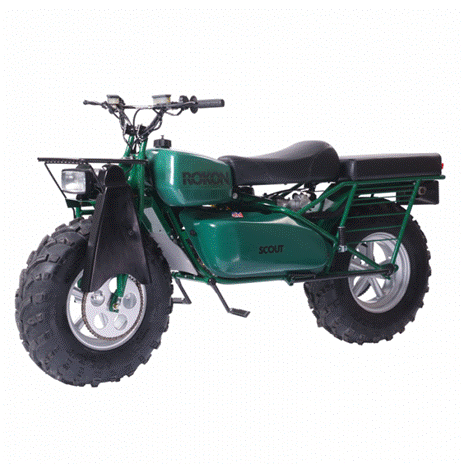
01/10/2015: Swallows nesting here at Jeeralang Junction: ‘We take the fall and spring migrations for granted, but they are in fact miraculous feats and remarkable adaptations to the climate changes of the ice age era (which we are still in today - and have been for 2.6 million years with lulls and expansions of northern hemisphere ice. If you can apply "normal”; this planet normally has no ice).’ (Bird Dog)
30/09/2015: Not Quite Alone in the Wilderness:
I faced a week of enforced bachelorhood anyway (as Della is craftily away) so I decided to take the pups for a week’s walk…Four hour’s driving later including a couple on bumpy 4WD tracks we gazed up a river somewhere, wondering…

Who knows what wonders lie around the river's bend? Delightfully there are a number of Victorian wilderness rivers whose entire catchment has only one (or NO) vehicular access point eg the Wellington, Avon, Moroka (none of which THIS is…)
Sometimes I have to get myself and the two dogs across. You need to find a shallower spot (this looks good). Tiny fits in my daypack worn backwards on my chest. Spot has perfected his trick of standing on my shoulders. Away we go:

A few hours’ later we are at one of my old camps:

Against late arrival I always leave a cache of firewood at my campsites.

My first Tyvek bivi design provides luxury accommodation for 2-3 at least. It clearly has the JR’s tick of approval. It is a triangle with base 32’ and height 10’ (the roll width). Pitched thus it forms a triangular shelter approx 8’ deep and 16’ on a side. The two ‘wings’ can be swung inwards to provide more shelter from rain (or smoke) if the wind shifts. I have spent at least 100 dry nights camping thus.

Side view: I like an open shelter, because you have a greater sense of freedom, a better view, and access to the warmth of a cheery fire.

Like this: It’s great to be putting my feet up at day's end.

The modified 200 gram dog beds worked a treat down to 0 C

Tiny agrees. I have ordered materials to make the dogs new beds at approx 100 grams each. I will post the design when they are done. They would scale up for larger dogs, though why you need larger I cannot imagine…

Spot actually prefers my sleeping bag.

Tiny agrees.

Perhaps both could fit?

Next morning, how's this for a kitchen sink?

There are so many beautiful side streams to explore. Another time for this one which rises many miles away…

Of course it is Spring. The bush is alive with wildflowers. The dreadful prickly Hakea is ablaze with colour. There are always Erica festooned with tiny bells. Many wattle species yet shed their gold along the river…

Traveller's Joy lies ever beneath my feet.

Everywhere clematis clads with snow plants it holds in wild embrace.

The road goes ever on and on...

Secret pioneer pack tracks provide access yet to many wild places.

So much work went into their construction. So much work (by me) too went into (re)discovering them and clearing them twice or three times over the last 10-15 years. This one is nearly 30 km long! Here the Gerber Brush Thinner machete (http://www.theultralighthiker.com/?s=machete) is an excellent tool. Of course where I led others certainly have followed, but when I first ventured here, no-one had journeyed along this river for many years. There were thickets hundreds of yards long along the river not even deer could force their way through. Deer were as tame as sheep. Fortunately the deer have worked alongside me, keeping the path largely open.

Another day over, Tiny remembers this is a fine place for a camp.

Herbivores are wonderful. They maintain so many beautiful park-like clearings along the river flats.

The birds are slowly returning: pallid cuckoo. I tried and tried to get more bird photos, but they are so quick. There are now many warblers, sitellas, wrens, honeyeaters, kingfishers, parrots… By day along the river there is much wondrous birdsong, but yet nowhere near the cacophony of old. The evening chorus is muted yet…

There is beauty everywhere: afternoon white ant flight.

The trout agree they are beautiful as they hunt them down…

Here too there be dragons...
Very warm weather arriving and forecast to continue, worsen even, I decided we might canoe out:

Faux packraft cache, complete with an Aerovest for emergency life jacket: http://www.theultralighthiker.com/home-made-pack-raft/

Duct tape is SO versatile. You can also use polystyrene balls for tie outs. http://www.theultralighthiker.com/worlds-lightest-tarp-clip/

Ready to set sail.
Unfortunately we didn’t get far. Two dogs and a heavy(ish) pack meant that this wasn’t going to be much fun for the dogs, particularly Tiny. One dog is one thing, two quite another. Tiny at 15 ½ is getting a little beyond some of these trips. My intended morning and evening hunts were much curtailed by her indeterminacy. She just could not decide whether to stay in camp or follow, and being partially sighted and deaf, it was quite uncertain whether she would find me if she set out later. I had to be sure to return along exactly the same route, could not cross the river in case I lost her & etc. I guess this must be nearing her last long wilderness trip. Bittersweet. Her balance in a canoe is not what it was either, so that after a couple of spills which she didn’t enjoy, I backtracked, repacked the raft and decided to hike out again.
I had 'picked' a poor time for a hunt (though a good time for a walk). The Spring growth, the warm weather, the full moon all meant that the deer were very seldom down along the river during daylight hours (much moreso in winter when feed is scarcer). Of course they can see excellently in moonlight. Every night they visited us in our camps, honking constantly to keep us wake. I could have shot a number of fine stags by torchlight. http://www.theultralighthiker.com/mini-super-torch-a-weeks-light-weighs-50-grams/ I'm sure others would have. Who, but for conscience is to know?

Drying out: a little warmth from last night's fire yet lingers.

Tiny is such a grub: she loves a wallow, and needed a good wash (which she resented) in the river every time after we passed one.

The bone reminds me: Steve once shot a deer for me right here. It lay here just like this:

I can still see it in my mind’s eye

And he shot a lovely stag just for me just around that bend past those leaning trees. Ah, memories...

There remain other mementoes of past hunts.

Perhaps after all though they look better here than on the wall?
See also: http://www.theultralighthiker.com/sambar-stalking-101/
25/09/2015: Four Gram Fishing Handlines: Found these 100mm x 12 mm screw cap aluminium canisters in the shed. Room inside each for a few hooks, sinkers, spinners, a needle etc. So I have ditched the 15 gram dental floss, and my 10 gram BCB fishing kits. This Dyneema line will suit well enough for fishing, repairs, first aid etc. My whole fishing kit is now less than 2 oz (50 grams). I used to figure 150 grams for a fishing kit was justified if I landed the odd 250 gram fish (I frequently did). This is even better. I am heading off soon for a wilderness trip for a week with my two JRs. They deserve to enjoy our wonderful National Parks they pay so much in taxes for! Whilst I was shaving down my fishing kit, I also shaved 834 grams from my pack weight in toto – which I find hard to believe, as I have gone through it so many times before. If I had a little more time (I leave tomorrow) I figure I could find another 200 grams. Soon my pack will be carrying me! I regret that the material I ordered for my new JR beds has not arrived yet, as the new ones will weigh 100 grams each (with a waterproof bottom), as compared with 200 grams for their (remodeled) old ones. I think I have a really good design for a dog bed now. I will let you know what the dogs thought of them when I return. Of course, I have dehydrated a week’s rations for them too!

24/09/2015: Paw Paw: There is a North American variety which should grow in

23/09/2015: Ultralight Pack: It is quite difficult to buy a sub-600 gram pack (@55 litre) ‘off the shelf’ for reasonable money. I have tried a number over the years and would not carry anything else. The ‘list’ below is not exhaustive but intended as a good starting point:
Gossamer Gear’s (now 54 litre http://gossamergear.com/g4-ultralight-backpack-all-bundle.html) ‘tried and true’ G4 lead the field (576 grams inc hip belt) US$150 and was my first ‘ultralight’ pack; (You can sew in some pieces of webbing to enclose carbon fibre arrow shafts for load transfer or, I find Big Agnes’ ‘Cyclone Chair’ underneath the ‘Sitlight’ pad works quite well).

Mountain Laurel Designs have an excellent contender with their Exodus pack (485 grams http://www.mountainlaureldesigns.com/shop/product_info.php?cPath=25&products_id=103) at US$195. Certainly the lightest and most rugged ‘off the shelf’ model. I’m sure Ron will sew in a couple of pad holders or webbing tubes for carbon fibre arrow shafts if needed for a custom charge. I might also option the pockets in solid Dyneema as I have found the netting which many manufacturers use for their pockets to not like blackberries overmuch, but Ron has at least made the critical wear surfaces of these from Dyneema!

Granite Gear’s Virga 2 (54 Litre) 540 grams http://www.granitegear.com/virga-2.html US$139 is another fine option.

Terra Nova’s Quasar 55 is another option at 436 grams http://www.terra-nova.co.uk/packs-rucksacks-poles/all-packs/quasar-55-pack/ and US$320

Zpacks Arc Blast 52 litres (595 grams http://www.zpacks.com/backpacks/arc_blast.shtml) $US315 looks a beauty and is pretty much the only one with load transfer, though I query if you are carrying less than 10 kilograms you need much load transfer. You can upscale to their Arc Haul in Dyneema (680 grams for 60 litres) if you want something completely bulletproof.

Joe will still make you one of his ‘Blast’ packs (optioned from his ‘Zero’ range) - try the ‘Wayback Machine’ (https://archive.org/web/) to see what these were like. In 1.43oz/yd2 cuben a 58 litre ‘Blast’ weighs 235 grams approx $200 (Yes!); 339 grams in 2.9oz/yd2 ‘Hybrid’ cuben material; & probably around 420 grams in 4.8oz/yd2 Dyneema. I can’t see how you can go past that 339 grams. Della is still using her 235 gram model, but mine needed quite a lot of repair tape: I am rougher on my packs than she is, and mine has had a lot more use. The original Blast in Hybrid/Dyneema with Pad sleeves for my chair and Sitlight pad is my choice. I option an oversize pocket one side for my tent.

21/09/2015: Dyneema Braid: Most fisherman already know this stuff is around and is replacing nylon monofilament, but you may not. I bought this .34mm lineit to make a method of securing my hearing aids against loss. (See: http://www.theultralighthiker.com/securing-hearing-aids/ & http://www.theultralighthiker.com/spots-hunting-adventures-mystery-river-3/) I may well restring my 10 gram handline with it, as its 50 lb breaking strength will make it more suitable for many uses: emergency guylines, repairs etc, and dipped in some Methylated spirits it will no doubt still work well for first aid: http://www.theultralighthiker.com/bcb-fishing-kit-as-good-as-it-gets/


20/09/2015: Woven Dyneema: new fabric for hiking packs etc. This stuff should be ultra tough yet very light. It will be difficult to even cut it with a knife! So far these folks seem to be the first to make it into a pack, but I’m sure more will follow. I am hoping that it will also come in grey or green further down the track. I was going to order a new (Dyneema Ripstop) pack from zpacks for Xmas, but I may hold off until this stuff is available. http://www.cilogear.com/dyneema60.html

Cilo 60L Worksack
19/09/2015: More Emergency Boats: The Tarp Boat: This demonstration leads me more and more to the inescapable conclusion that it would be possible to make a canoe using a poncho as the skin. More about that later: http://willowhavenoutdoor.com/general-survival/improvised-tarp-boat/

18/09/2015: Improvised Bow Saw: You can make an improvised bow saw from a bent branch and a couple of large key rings (or similar) I noticed Erin & Hig used small carabiners in Ben Fogle’s New Lives in the Wild Episode 2: https://www.youtube.com/watch?v=jOUcDt96IrU Since a bow saw blade itself only weighs 50-100 grams, this could be a useful addition to a wilderness camp. Many areas in the Victorian bush are a bit light on short pieces of firewood since the bushfires cleared much of this debris. By the same token those same fires have killed and brought down so many trees, there is an ample supply of longer pieces of firewood. This cooked hardwood burns more like pine though, so be warned you need at least twice as much of it as unburned wood. For other info see: http://willowhavenoutdoor.com/featured-wilderness-survival-blog-entries/fat-guys-in-the-woods-blog-skill-series-make-an-improvised-bow-saw/ & http://rockymountainbushcraft.blogspot.com.au/2012/05/how-to-make-primitive-bow-saw-in.html

17/09/2015: Surprising Treasure Hidden Within A Nine Volt Battery: 6 x AAAA batteries: http://survivaltek.com/?p=4535

16/09/2015: Cotton Reels: Did you realise the end caps come off Gutermann 100 metre thread reels (7 grams) so you can wrap the end of your thread around it... or that you can store a needle inside the reel? There is quite a wide choice of different threads for various purposes (including a transparent one). If stored in a small snap-lock bag to keep it clean, it could easily be dipped in some methylated spirits to sterilise it for sewing up wounds. Of course it is great for rep[airs to clothing, gear, etc. The stronger threads would be useful in an emergency for catching small fish. You could sharpen a stick and force it on the lid end to make a small caster. (Some hooks etc would also store in the middle- you may want to tape the end a little more securely though. The paper end sticker may come off.)

15/09/2015: Mokai Jet: You are going to want one of these modular jet-powered canoes with a draft of 100mm (4”) powered by a Subaru engine. 8-10 hours cruising at 15-20 knots. US$5,400. That would have to get you effortlessly to some interesting places, up or downriver (over 100 km round trip; some great places await!): https://www.youtube.com/watch?t=48&v=HfmWzP_FSqk & http://www.mokai.com/the-mokai-es-kape/

15/09/2015: Something else new under the sun. Move over sheep: http://www.inspirationgreen.com/suzanne-lee-kombucha-fabric.html
14/09/2015: Sale Common: After we closed the shop at lunchtime we went across to Sale and spent the afternoon walking along some of its dozens of kilometres of amazing wetland walking paths which would take days to fully explore: Gippsland’s ‘Everglades’! What a gem, whose existence is almost certainly a secret to most people. You should give it a try on a couple of beautiful days like today; take a picnic lunch and a bottle of wine…there are innumerable great places to sit and wonder at the area’s delightful natural beauty and astonishing wildlife!

There are miles and miles of beautiful walking paths

Vast wetlands.

Beautiful birdlife

Astonishing colours

Majestic river red gums.
13/09/2015: Securing Hearing Aids: Having nearly lost one of my Siemens Aquaris Hearing Aids during my recent walk (http://www.theultralighthiker.com/spots-hunting-adventures-mystery-river-3/) I have had some feedback from a reader who has managed over time to lose three of them, all covered by insurance at the time, but he has now been refused insurance, as the bastards do! Given that most Oz audiologists want @A$7000ea for them; these folks http://www.hearingsavers.com.au/ A$4200 and these folk http://www.thehearingcompany.com/ US$1595 (= A$2248!) you wouldn’t want to lose/destroy too many of them, which is why I opted for this model – the world’s only WATERPROOF hearing aid, as I had previously had lots of issues with my older aids getting wet/dying etc. You CAN get a ‘Sports Clip’ for the Aquaris (http://precisehearing.com/hearing-aid-accessories/siemens-aquaris-optional-sports-clip) which has a covered bendable wire which additionally secures the aid below the ear. Also Siemens have a ‘Concha Lock’ for RIC hearing aids (comes standard with Aquaris) which do help a bit. My reader has decided to have his ears pierced and to connect the aids to studs in his ears - which is going a bit far to me (do not like cicatrices anyway!), but reasonable in view of his insurance situation. I notice the ‘Life Tubes’ on the Aquaris, the clear bit that go down into your ear, has a hole drilled in it to which you could attach a split ring or cord. A cord could attach the two together around the back of your head (so that you would lose both at once!) You could continue the cord around your forehead and tighten it with a micro cord lock. You could also slip the arms of your glasses through the split rings then link the arms with one of those neoprene or etc glasses ‘keepers’ so that you don’t lose both. I will be pursuing one/other of these measures to ensure I don’t lose my aids hiking/canoeing etc as I am not, (contrary to rumour) made of money!

Sports Clip: The plastic bit clips over the BTE aid and the wire bends underneath the ear.
12/09/2015: Spot’s Hunting Adventures: Mystery River #3: Despite having a cold developing, I decided to take a couple of days off from my weed spraying, fencing, tree planting, sheep husbandry etc and head back to the ‘Mystery River’. While I live I can yet journey on, one step after another – unlike my schoolboy friend, news of whose unpleasant death reached me as I was about to set out. The pleasures of my latest hiking adventure were somewhat muted eg as I listened to the Seekers sing ‘The Last Goodbye’ on my smart phone whilst reading Conan Doyle’s ‘the Lost World’ – none of these coincidences planned…I’m sure he would have preferred to be with me.
I spent the afternoon of the first day exploring some country upriver where there are some beautiful flats and clearings – unfortunately they do not join up easily with the flats where we camped. I essayed a riverbank approach but was continually bluffed out till I gave up. There is a lengthy traverse across the top of a promising grassy gully to get there, which would be difficult in fading light, should I take a companion/s with me planning to split the hunting opportunities.
My cold slowed me down somewhat and robbed me of energy so that I did not cover much new country. I continued to observe though that some much less ethical tally hunter had (again) followed my instructions to this spot and had been shooting numerous deer and leaving them quite otherwise untouched to rot mostly along the riverbank: half a dozen at least! Spot was keen to roll in them but was sternly rebuked for his ambitions as I certainly did not want to share a small even open tent with a foul-smelling canine. All the dead deer I found could have been shot with a telescopic sight from the other side of the river, perhaps explaining why they had been left (but not why they had been shot!) Some would have been very long shots.
The quite numerous remaining deer have quite naturally become a little warier! Except perhaps for this youngster stalking Spot and I as I went for water at sunset. So often I see deer whilst about this chore. It is next to impossible to ‘bag’ a decent trophy armed only with a billy and water bottle! She was just crossing the river towards me and was quite taken by Spot’s fetching new Tyvek raincoat which I had just put on him against the descending evening chill. (http://www.theultralighthiker.com/tyvek-jack-russell-rain-coat-13-grams/)
She had certainly never seen anything like that and was keen to get a closer look. She approached to less than 3 metres from us before fleeing in alarm. I was keenly snapping away with my new camera, and was so assured of some great shots I failed to snap his mother afterwards honking at us from the opposite shore from amidst some shrubbery as I reckoned (probably correctly) that the light was against me. When I returned to my tent’s glowing firelight I was appalled to find that the control knob on the camera was somewhere between ‘Auto’ and ‘Short Movie’ so all I had except these blurry shots was even worse blur of a deer face to face. Dammit! I will have to decide on a strategy to prevent this in future! Imagine how badly I would feel though if this had been the first NZ moose photo in @ 50 years!

Young deer @ 10 metres crossing river centre just below bank and right of overhanging tree.

Deer (centre) approaching Spot @ 5 metres with ears held upright in a questioning manner.

The same deer ears straight up @ 2.4 metres about to bolt.
The deer’s ear language is interesting. This deer is curious and determined . So many critters with mobile ears and tails express interesting nuances with them. I have spent thirty years observing body language in sheep, which is much the same. Everyone understands the meaning of a ‘hang dog’ look. You can certainly judge whether you have been ‘made’ (out) by a deer by paying attention to its ears. I maintain that looking it straight in the eyes is a dead-set giveaway. For example, a dog will wag his tail to his right side when he is feeling happy, positive or confident about approaching something. On the other hand, the dog will wag his tail to the left if he feels scared or wants to bolt from the situation. When observing deer, keep your attention on their ears and tails.

I just could not believe what my camera had taken!

The same spot next morning - it is a beautiful river!
During the night a very large deer approached quite near our camp (perhaps 3 metres away) before it honked deafeningly and bolted for the river. I caught a glimpse of its derriere in my torchlight before it hit the screen of shrubbery along the river’s margin, which is why I know that this shot is a deer print next to my glasses case – else I would have had to suspect a moose (!) or cattle. There is a small herd of wild cattle about. I saw a mob of approx six (didn’t think to photograph them). None had ear tags, and they were a long way from someone’s farmland, but may be rounded up some time I guess, if anyone suspects they are there. I would guess this print belongs to a resident stag who most like is only out and about at night, as is their wont. If his rack is anything like his feet, he is a monster. Mind you I have shot does with feet near as big as this. Foot shape and size is one of those myths of the tracking world: like people deer have different foot sizes and shapes. There is some correlation between size and gender, but the notion that rounded tips are stags and pointed ones does (or vice versa) is down to someone who has not paid any attention to the feet of the deer they have shot, or they have not shot many. I did once start on a collection of deer’s feet, but they were smelly things to have around and the dogs were apt to find and eat them! Clearly though a long stride bespeaks greater height, and splayed toes indicate flight (or downhilling). They will use their feet as tools betimes: to gouge out a lick or a bedding spot, or when jousting, preaching etc. Likewise their antlers.

There is a VERY large deer FOOT around there somewhere!
This was our comfy little camp for a couple of nights by the river. Amazing that all that gear can fit in such as mall, lightweight pack. As usual I took too much food and came home with it. Exercise diminishes my appetite for some reason. I need urgently to undertake a very long journey…well, I am working on it!

Hard to believe all of this fits in the small grey-green pack right.

Spot likes to help with packing away!
The second day I decided to explore the pack track downriver I had stumbled upon before. I had decided to camp the second night on a river flat I had glimpsed from a hilltop in the distance previously, so I eschewed just taking my daypack (worse luck!) and set out with all my gear. I had a detour of a couple of kms exploring a nice clear double gully system: there is some beautiful grazing around there. Clearly in the past there was a grazing licence or private property which has reverted to the Crown as evidence of this old fence shows:

Historic remnants - hard to believe someone once building a rabbit proof fence in this terrain. A good deer trail Spot found.
Mostly I was marking the pack track (perhaps for a later machete clearing
job so I can bring Della with me) by breaking the odd dogwood or manuka branch
off along my route. It is very overgrown (mostly due to the fires a few years
back), and seriously eroded and hard to follow in places, but altogether worth
it on balance. Eventually after a few kms it met an old overgrown vehicular
track heading downriver whose gentle gradient made easy walking. I guess I had
proceeded along it a couple of kms before I noticed that one of my hearing aids
was missing. These (Siemens Aquaris waterproof – highly recommended!) cost
upwards of $7,000 each in Oz (though I bought mine from this guy in
So, instead of proceeding forward to a nearby camp and rest (!) I headed back whence I had come thanking my lucky stars I had been breaking trail as I went so that I could be assured I was looking in the right place (except for one enormous detour though mostly over clearish country). I had Spot sniff my remaining hearing aid in the hope he would get the message I was looking for one of them. Unfortunately hearing aids do not have four legs! In the end he walked right over it as I nearly did too. I had been expecting it might be hung up in one of the whippy branches but in the end it was lying on quite a clear patch of ground, still very hard to spot. It must have come off my ear and balanced on my pack for a time before sliding off. It was hard enough to find on clear ground; I would never have found it in a worse situation – though you can be sure I would still be looking!
Spot’s nose (or his training) might have failed him in the hearing aid hunt, but his breed (Jack Russell) really is a scent trailing type. I have noticed many times him ignore the clear sight of some game at distance whilst he proceeded to follow their scent instead. Mind you what passes for ‘clear sight’ to me might be quite different when your eyes are less than a foot off the ground! On the way in on the first day we put up a large animal on a stag’s rub line. These are boundary lines anyway, so it could be that it was a doe, though it no doubt adds a tingle of excitement to imagine it has a large tempting rack! There had been some rain recently, though the bush is becoming surprisingly dry and ‘crunchy’ underfoot, so its tracks were not so hard to follow. I showed his nose the marks and indicated ‘fetch’ (which would be no mean feat!). He led me on its trail a couple of kms downhill, (every now and again accompanied by a distant thump as it struck the ground in warning with its forefoot, or the crack of a distant twig) until it finally crossed the river and eluded us. I am certain that (properly trained – this may never happen to mine!) Jack Russells will make excellent deer dogs – their keenness would be accentuated wonderfully by shooting a few deer off them now and then, if only I had the enthusiasm (or hunger)to do so. They are wonderfully compact dogs who can fit inside your shirt or balance on your shoulders on difficult river crossings; their gear and food weigh so little, yet they are just as great a companion as bigger dogs, and just as useful in the hunt.

Downstream a step or two: Another beautiful river shot!
When I found it, I confess it felt a bit like winning the lottery. I have just become used to hearing ‘properly’ again having found some wonderful people who WILL tune my hearing aids even if I bought them more cheaply overseas (http://www.hearingsavers.com.au/). Most won’t. Audiology is a huge scam costing the Federal Government billions – but I can assure you the pollies don’t want to know! I had been tuning them (poorly) myself these last several years. Only a couple of weeks ago these folk had tuned my aids for me - and I can hear all sorts of things now/again.
The birds, for example. Maybe when
I was young I would have heard the very high pitched warblers which abound
along this stretch of river. Small dun-coloured sparrow-sized birds they are. I
was never able to get a good look at them (or a photo), though I tried, so I
don’t know their species. They have clearly been breeding very successfully as
there was one every 20 metres or so, but always concealed in dense vegetation.
They must be more aggressive to each other than
The search for my hearing aid was the reason I camped again in the same spot as the first night, the deer now giving me a wider berth. I only stayed the two nights as the temperature was warming too much, and I did not look forward to the danger of snakes to Spot or having to haul myself vertically the few hundred metres to my waiting vehicle in temps in the twenties. And of course at home, there are still plenty of weeds to attack & etc. Also my cold was dragging my energy levels down after a longer than anticipated day carrying my full pack. But, I shall return. I daresay come summer we will venture carefully down this river in our canoes. It is a big river with lots of water at the moment, though the rapids I have seen look manageable. We will have to feel it out carefully as my wife’s failing eyesight make negotiating large rapids treacherous for her nowadays. We have canoed much in the past, and expect a few riverine adventures yet. Hopefully the most dangerous rapids can be safely portaged. I may have to do the trip by myself the first time to check it out – or perhaps I can enlist one of my ever-diminishing group of friends to accompany me; though so many folk my age seem to feel they are safer home in their beds – ‘most people die in bed, therefore bed is a dangerous place and should be avoided,’ my grandfather used to say. Give me the safety of wild places any day!

Spot does enjoy his sleeping bag atop my pack! Of course, at night he nestles inside his sleeping bag: this one weighs 200 grams: he is soon to get a new one which will weigh 102 grams! Every little bit helps! This lady is a useful resource for those who enjoy making their own gear: http://www.questoutfitters.com/index.html You might think about making the ‘Bilgy’ tent and G4 pack or insulated clothing pattern, for example.
See also: http://www.theultralighthiker.com/spots-hunting-adventures-1-mystery-river/ & http://www.theultralighthiker.com/spots-adventures-mystery-river-2/
09/09/2015: Birds in our garden: My new camera is allowing me to make a bit of a collection/study of these guys. We are lucky enough to have over a hundred species of birds visit our garden fro time to time, so it will take a while o get a )complete) collection together, but here’s a start:

Grey Thrush 6/09/2015

King Parrot 06/09/2015

Firetail Finches 06/09/2015

White Backed Magpie 08/09/2015

Pee-wit or Mudlark 07/09/2015

Crimson Rosellas 07/09/2015

Kookaburra 07/09/2015

Jenny Wren 07/09/2015

Blue Wren 07/09/2015
09/09/2015: Last night I learned of the death of one of my oldest friends, John Seamer whom I have known since we were in Year 10 (1964), so 51 years! We were very close at University and in our twenties. Having now lived most of our lives half a continent apart with irregular phone calls and even more irregular visits, I am surprised at the depth of feeling of loss I have this morning: You may guess I ‘hear Time’s wing’d chariot hurrying near’ – and it is true. You may well think there is time aplenty to do all those things you dream of, but for John there is no more time at all, so I hope he did not die with many regrets of things left undone. I had planned a three day hike with Spot in my beloved Gippsland mountains starting this morning, so I will waste no time leaving that particular ambition undone…
07/09/2015: Another lovely Father’s Day. Thanks to my wonderful family.





06/09/2015: Poverty/Disadvantage: This supposed connection is highly spurious: As a child I grew up in what could only be described as a ‘poor’ family. We had no running water or electricity, no heating, no sewerage or septic tank, no ‘family’ car, no television, no ‘made’ road, adequate but (likely) protein poor diet, no ‘holidays’, very few toys, no ‘treats’, second-hand/repaired/home-made clothing, (I personally wore no shoes until I was in High School), haircuts performed at home, we grew most of our own food (so nothing out of season); we all suffered from boils (Vitamin deficiency or inadequate washing facilities?)…the list goes on. We never felt ANY sense of disadvantage. Certainly there was nothing about this situation which prevented us from excelling. Both my parents were quite literate, had beautiful flawless copperplate handwriting and were well informed about world events and the progress of ideas. ‘The Poor’ today are rich beyond my parents’ dreams of avarice (not that they had them anyway), their homes and lives crammed with sci-fi gadgets and robots beyond imagining, their stomachs full of a cornucopia of overly nutritious goodies…their minds and spirits are unbelievably vacuous however, and they are unable to do anything – as the recent SBS programme ‘Struggle Street’ so tellingly illustrated. ‘Disadvantage’ is all in the mind.
06/09/2015: Phosphorus: In the 1960s I was a shift worker for years in a superphosphate plant (Sulphide Corp Cockle Creek Newcastle) and in one of the acid plants, the ‘C” for clean Acid plant, in contrast to the ‘D’ for dirty Acid Plant. REALLY! The 'clean' (battery, etc) acid we made by burning sulphur; the ('industrial') acid used to make 'super' was a by-product of lead smelting. It did contain quite a lot of (radioactive) cadmium. Enough that certain plants (tobacco, for example) concentrate it to dangerous levels if a lot was used on the crop (which is probably why lung cancers are radioactive). That being said, it made the phosphorus soluble and available for plant use. As many Oz soils are seriously depleted of phosphorus (due to centuries of wanton burning) we need to add it to soils to produce a decent crop. Otherwise nothing would grow but inedible grasses (such as poa) and similar 'weeds' such as gums/wattles!
05/09/2015: PLEASE SHARE! Tonight
my daughter Merrin's handbag and phone (as well as Matt's wallet) were stolen
from our car parked in a friends driveway in
Traralgon (

05/09/2015: Water Anyone? ‘Many people believe that the source of this myth was a 1945 Food and Nutrition Board recommendation that said people need about 2.5 litres of water a day. But they ignored the sentence that followed closely behind. It read, “Most of this quantity is contained in prepared foods.”’: http://www.nytimes.com/2015/08/25/upshot/no-you-do-not-have-to-drink-8-glasses-of-water-a-day.html?_r=0
04/09/2015: New Camera: Thanks to my children I received a new (birthday) pocket camera, a Nikon S7000 with 16 Megapixels and 20X zoom which weighs 162 grams complete with battery, micro sd card and wrist strap. I may now get a chance to take (& post) some snaps of astonishing things I sometimes see in the bush which I could never bring into clear enough resolution before. Here for example, is a pair of Yellow-tailed Black Cockies seen at sunset on our walk last night; (more to follow):

03/09/2015: Upper Yarra Track Mementoes: A Big Tree Nr Mt Horsefall (before the 1939 fires!) Thanks to Thomas Osburg for the wonderful photo. I love the dog. I wonder are there still a few of these hiding in the catchment somewhere? Won’t know unless I take a look!
Note to camping at Mt Horsefall: Mt Horsefall has a beautiful @ 5
acre grassy clearing at its summit with @360 degree views so on still days it
is a beautiful spot to camp. Unfortunately there is no water. There is water at
the


02/09/2015: Food
Dehydration: As mentioned before we have a food dehydrator, so Della often
dries some of her superb meals for our later delectation on the trail (her
Shepherd’s Pie, for example). I know some of you are not so lucky (as to have
either a dehydrator or a Della!). You will just have to do without the latter,
and if you can’t afford a dehydrator, you can, very carefully - perhaps with
the oven slightly open, and on the lowest setting, and checking and stirring
very regularly, dry food on a dish/tray in the oven. See: Google. I have just
dried some



1 can corn left, 2 cans sauce right.
01/09/2015: Tick removal: Spot’s First Tick: This is the very first tick either myself or one of my animals has acquired in Southern Victoria – even though I hunted with hounds here for over thirty years and have owned as many as a dozen and a half dogs at a time. I used to see tiny ticks infecting the ears of Bluetongue lizards probably causing the deafness which results in their suffering from so many road casualties. It is possible to tediously remove them – an operation they lizards do not appreciate – but I have long since given up on it: in no time they find some more anyway.
Spot acquired this particular tick West of Yinnar yesterday when he was trying out his handsome new raincoat (http://www.theultralighthiker.com/tyvek-jack-russell-rain-coat-13-grams/) . I can report I have discovered yet another reason for preferring methylated spirits as a hiking fuel. After dousing the parasite liberally with it (from a teaspoon), and waiting about a minute, it was easy to pull the dead tick out complete with its head (as you can see) leaving nothing to cause an infection or irritation. I used a fine pair of tweezers gripping it just above its head. Easier than pulling a tooth! I have no idea whether it is a paralysis tick (probably not), but you do have to be careful to check your pets for the blighters as they can cause death!
In the US ticks have been implicated in the spread of Lyme Disease (a real nasty previously mostly an occupational hazard to rat-catchers!), so apart from the fact that they will create a very nasty itchy spot, and maybe an infection, it is important to get them out (particularly of yourself) as quickly and safely as possible. The meths is also a good antiseptic.

31/08/2015: Tyvek Jack Russell (Rain) Coat: 13 grams! My little chaps can get quite wet and cold if we are in the bush for long days in the winter so I thought I would treat them to some waterproofing. Surprisingly, my first effort worked very well - you can see Spot modelling it here. He was quite happy wearing it for all of our 5km walk (run for him!) this afternoon and didn’t want me to take it off when we came home and I wanted to make Marque #2 using it as a pattern. He needed a little more cover at the rump, along the back of his neck and along his sides. I will just keep using the last one as a pattern for the next one until I get it just right, then will post the pattern, so be sure to come back and check, but you can probably figure it out from the pix. I just used stick-on Velcro for the four attachment points: seemed to work OK.

Stand up & show off Spot. OK!

Do you like it Spot? Yes, Sir!

Can you still run fast in it Spot? My Word!

In my

Tiny: I am not amused. Where's my magic cape?

Left: Marque#1, Right Marque#2.
30/08/2015: Duct Tape Fire Starter:
Fire starters are easily lit and are created to sustain a flame while the tinder placed above it catches fire. In lieu of fire starters, selecting a good material for tinder can be an asset. Small strips of tire inner-tube work well. I have carried one for more years than I can recall. Surprisingly you can use of duct tape for this purpose.
You can take a 2 inch square of tape and drape it over a piece of tinder and place more tinder over it. Then you can light an edge with a match or lighter. Once it catches on fire it burns with a sooty but strong flame. To provide a longer burn time you can create a free-standing candle with it.
You can carry a length eg spooled on your water bottle. If it doesn’t get used for fire starting it may have some other use for repairs. I I imagine other tape (Tyvek, Cuben, etc) burns quite well too.

29/08/2015: Fishing with Floss: It comes in a small plastic box that fits comfortably in your pocket. The 50 metres of cordage inside can be completely withdrawn and tied onto a pole for conventional fishing. Alternatively you can tie an overhand knot on the end and slip it onto your finger or wrist.
Take your floss box and have a rummage through your tackle to see what hooks and sinkers will fit inside the container and if possible look for flies or plastic nymphs too. However there is no substitute for live bait such as bugs or worms that you can find under a stone or log. For a float you can use a length of stick or the polystyrene balls I mentioned here: http://www.theultralighthiker.com/worlds-lightest-tarp-clip/ .
I usually carry it for emergency use (repairs/first aid) http://www.theultralighthiker.com/rope-dont-leave-home-without-it/ but it would come in handy for a spot of emergency fishing too. You will notice that there are (amazingly) several kinds of self-threading needle you can use for repairs. I know the Clayxeye fits in a floss container as I have had mine there for over twenty years (and effected many repairs with it in that time!)

50 metres o floss weighs @ 10 grams

Spiral eye needle

Calyxeye Needle

Easy needle
28/08/2015: Finding Your Way: You don’t really need a compass (and you may not always have one - though a compass and a self-winding watch are a good idea as they are two of the most reliable aids you can have). In the Southern Hemisphere the sun is always in the Northern (third) of the sky. At mid-day it should be pretty much due North.
You can estimate how far it has to travel (or has travelled) by measuring finger widths to the horizon, each finger representing approximately a quarter hour (at arm’s length). (This is just one of my ‘rules of thumb’). Usually it won’t matter if you are a few degrees off your route: you can’t travel very far in a single day anyway, and if you are lost for more than one day, something is seriously wrong, but if so, think about either heading in one direction (the closest known civilisation and/or following water downstream. If you were paying attention when you set out, and as you travelled along, you should always be able to find your way back to where you started that day. Just keeping in mind where a generally Northerly direction is, by the end of the day you should not be more than a couple of hundred metres from any destination you have chosen for the day. If you are not, you have not been paying attention.
You should note important landmarks on the way out, and turn around as you go out so that you can remember what they will look like on your return trip. This is VERY important and should never be ignored.
When you are walking you don’t need any more directions than (at most) the eight cardinal points of the compass. Usually your direction at any given time is determined by topography anyway, so that if you DO want to generally head in a particular direction, necessity will bend your course away from it either to the right or left. You will need to walk for approximately the same amount of time in the opposite (left or right) tendency to keep to your course anyway.
If you need to think more precisely about direction than that, here is another ‘rule of thumb’: the palm of your hand (at arm’s length) is approximately 15 degrees. The tip of your little finger at arm’s length is approximately 1 degree). Should you really need to know (precisely) where East and West are, shove a stick into the ground and mark the spot where the end of its shadow touches the ground. Mark the same spot say 15 minutes later. Draw a line between the two. That line is precisely East-West. Obviously North-South is precisely perpendicular to it.
If you cannot SEE the sun (because it is cloudy etc) often a stick will still cast a faint shadow on pale ground. If not a very small hole (eg made in a leaf) will ‘project’ the sun’s disc onto the ground. Looking around through such a small hole should enable you to work out where the brightest spot in the sky is.
A thumbdial, when you know the time of day tells you the direction of the sun, thus providing orientation. The secret of the thumbdial is that it reveals the sun’s location by revealing its shadow. Begin by standing in an open area and placing the tip of a knife blade on top of your thumbnail and rotate it slowly, watching for a slight shadow to be revealed on the matte textured surface. The location of the sun of course is on the opposite side of the knife blade from the shadow. The wide and narrow silhouette of the blade helps to accent this. The sun’s brightness is defused in fog but still maintains a brighter presence which is revealed by the very slight shadow.

If all else fails moss/lichen grows on the South side of trees/rocks in the Southern Hemisphere and on the opposite side (the one which gets least sunlight) in the Northern. Really though, if you can’t work out where the sun is, you probably shouldn’t be out there unchaperoned!
I bought these watch bands on eBay for $1.99. I think they are great because you don’t lose the watch if you snag it on some brush or a vine and tear out one of the pins (which happens). I also added a wrist compass ($3.99) which makes this Seiko auto-winder ($49.99) set-up just about perfect:

27/08/2015: World’s Lightest Tarp Clip: You can buy these approx 1” polystyrene balls from Spotlight for @ $2.40 for 20. They weigh about .2 gram each. You can carry a few of these in your repair/fishing kit (along with some string, eg 1-2mm Dyneema) for use at need, eg when you need some additional tie-downs for your tent/tarp or when you have torn one out. They also come in handy as fishing floats for use with your http://www.theultralighthiker.com/bcb-fishing-kit/ You could use them to attach the bottom reinforcing tarp to your faux packraft http://www.theultralighthiker.com/home-made-pack-raft/ first tying them to the material as shown below (on the emergency mylar tent http://www.theultralighthiker.com/pitching-the-poncho-warning-this-may-save-your-life/), then tying an overhand knot in the remaining ‘tail’ and joining all the tieouts together with another length of string and pulling it tight so as to secure it to the raft.

World's lightest tarp clips

Tie the slip knot like this:
24/08/2015: Merrin: ‘Not a bad day for building a fence! Mum’s garden was looking amazing as usual.’ Steve: We are stealing a patch of flat ground below our driveway from the sheep to increase our orchard. We already have the plumcots, crab apples, fujis, etc ready to go in as soon as I have finished the fence. I have to build a new fence anyway to keep the wayward JRs in (http://www.theultralighthiker.com/spot/) so it is a case of opportunity. We still have over 100 trees to plant before Spring (?) so we will be busy! Those we planted last year have been doing very well.



23/08/2015: If you
had dined at the Pratt St Alehouse in

22/08/2015: Victorian Hiking Circuits: The Bundian Way: I have been 'working' on
ideas for some other Victorian long distance 'circuits' for some time, eg see
my page: http://www.finnsheep.com/THE%20UPPER%20YARRA%20WALKING%20TRACK.htm
. Thomas Osburg has drawn my attention to this ‘new’ one, ‘the

23/08/2015: Della's Coconut Rice. (Hiking Food): People so often ask me this question, ‘But what do you eat…? I hope you will forgive me if I post about it fairly often and repeat myself…We have a home dehydrator, so this gives us a few more options, but you CAN dehydrate things in your home oven (if you are careful). Dehydrating cooked rice which then rehydrates simply by adding boiling water is a case in point - I am really surprised that no-one sells ‘instant’ (dehydrated) rice; maybe that’s a business idea for you.
Here is our recipe for ‘Coconut Rice’ which works well as a lunch mixed eg with a Sweet Chilli Tuna or as an accompaniment to the evening meal. (We add the boiling water at breakfast to a snap lock bag and eat it cold for lunch). As you can see from the picture Della vacuum seals the rice (you need to double bag it eg with a freezer bag to prevent it from piercing the outer bag) and adds her own label for when we take these meals eg to NZ. NB: we need to add country of origin barcodes in future; see: http://www.theultralighthiker.com/hiking-food-customs-gestapo/
DELLA’S COCONUT RICE
Ingredients:
1.5 cups chicken stock (eg Continental/Oxo stock cubes)
1 cup coconut milk (eg reconstituted powder)
Half teaspoon salt
1 cup long grain rice
Grated coconut, lightly toasted, for garnish
Method:
· Rinse the rice in cold water
· Combine stock, coconut milk and salt in a large saucepan and heat over a medium heat until near boiling
· Reduce heat to low
· Add rice and stir for one minute
· Cover pan and simmer over a low heat, stirring occasionally, for 15 minutes or until the rice is almost tender and most of the liquid has been absorbed
· Remove pan from the heat and let the rice stand, covered, for 10 minutes or until it is tender and all the liquid has been absorbed
· Lightly fluff rice with a fork.

Great Tucker: Della's Coconut Rice.
19/08/2015: Hiking Food: French Onion Soup Plus: Mixing dehydrated ingredients can make an interesting and nutritious meal. You SHOULD try this at home before heading out. Here is an example: McKenzie’s Superblend Fibre ‘Freekah, Lentils & Beans’ (350 grams) plus Continental French Onion Soup (49 grams) plus Continental Classic Tomato CupaSoup (24 grams) . These three ingredients weigh 423 grams and deliver 5873 kj (1468 calories = 3.5 calories per gram!) in a 1 litre billy (@ 15 minutes simmering) probably enough for FOUR people! I found it a little salty for my taste (at home – I might feel differently after a hard day on the trail). This could be adjusted by adding the tomato soup (where most of the salt is) to taste at the end.

18/08/2015: Dorsogna Mild Twiggy Sticks (Safeway & etc). These are very tasty and last exceptionally out of the fridge. I have had one sitting on the kitchen shelf now for a month without any outward sign of spoilage, though of course it has gone hard – but still tasty, and no doubt lighter. They work well for a snack eg with 9 Grains VitaWheat Biscuits and perhaps Babybel Cheese which also lasts well outside the fridge in its red wax wrap. Also cut into tiny pieces they bulk out the protein portion of cooked meals such as Ainsley Harriott’s Lentil Dahl or Continental Four Cheeses Pasta. At this energy density, they are well worth carrying anyway: 1341 Kj/100grams = @3.5 calories/gram.

17/08/2015: World Record Free Solo Slacklining: https://www.youtube.com/watch?v=EzrI8BeOw_0 I can see it saves a long hike, but I think I will stick to the ground myself!
17/08/2015: Second Air Bead Locks: This robust inner tube allows tyres to be run at low (or even zero) inflation increasing traction by as much as 40%. Also a great safety feature in the event of a blowout, or you could look at them as representing another FOUR spare tyres. So much more convenient than the messy job of fitting and removing wheel chains (though I would always recommend carrying them still). It always seems to be wet, muddy and cold when you need them – I wonder WHY that is? I have tried Diff Locks which have a tendency to smash some other part of the vehicle (eg Prop Shafts) probably marooning you somewhere very difficult for rescue and recovery (as we have found out from bitter experience). Limited Slip Diffs may be a better option. http://www.secondair.com.au/why.htm


Second Air Bead Lock inner tube allows tyres to be run at low inflation increasing traction by 40%

Stuck on the Butchers Country track 30/03/2013
15/08/2015: Highlights of the Outdoor Retailer Summer 2015 Trade Show. There are some wonderful new products here. Katadyn’s new water filter has arrived. Lots of new shoes to try out (under 400 grams), new raincoats, packs sleeping bags, etc. The Thermarest Easy Inflation system gets my vote. http://gearjunkie.com/topic/outdoor-retailer & http://www.outdoorretailer.com/summer-market/show-info/product-showcase.shtml & http://gossamergear.com/wp/coverage-summer-2015-outdoor-retailer-lightweight-and-ultralight-backpackers

14/08/2015: Time: I
am unable to keep up with daily posts as I am very busy. This is normal for the
time of year: there are lambs to attend, thistles and rushes to spray, trees to
plant, vegetable garden to sort. This year I have some dog fencing to complete;
a pump has quit and needs fixing and moving as the creek is about to claim it;
I need to build a bigger greenhouse (and move the existing one). Della is
having eye surgery and follow-up treatment which involves (alternate days)
drives to

10/08/2015: Duct tape Raft: Further to my post here: http://www.theultralighthiker.com/diyemergency-watercraft/ I have been thinking, ‘Can one make a raft ENTIRELY from Duct Tape?’ This may be a good team building exercise for your next in-service – or maybe I should just maroon you on an island somewhere with nothing but duct tape and bananas for a time and see what happens? My solution is to form the duct tape into a tube, then lengthen the tube into a doughnut, then tape in a duct tape floor. Throughout I would use double thickness so that the non-sticky side is always on the outside (but also on the inside of the doughnut so it doesn’t stick to itself). You would leave a small inflation hole which you would blow up by mouth, then seal. It might not be good for Grade 3 rapids (though duct tape is surprisingly tough) but it would get you safely across an icy river, for example.
My next (slightly more practical) project is to see whether a ‘standard’ 5’ x 7’ silnylon poncho (without a hole (as I posted about here: http://www.theultralighthiker.com/hole-less-ponchoshelter/) could be used for the ‘skin’ of a (very) small canoe which would (in an emergency) get you safely across a similar obstacle. You could only make a craft whose internals were (approx) 5’ x 3’ with sides 1’ high. This is very cosy, but surely enough? That’s approx 15 cubic feet to displace. My plastic kayaks are less than 10’ long and average much less than 2’ wide and are less than 1’ high, so comparable: there should be enough flotation in such a craft. I welcome suggestions.

09/08/2015: Gearboxes: This is pretty neat: a 1936 film showing just how your car’s gearbox works: http://www.popularmechanics.com/cars/a16686/1936-film-perfectly-explains-how-a-manual-transmission-works/
08/08/2015: FOOT CARE
 Keen
Targhee 2 Sole
Keen
Targhee 2 Sole  Keen
Targhee 2 Upper
Keen
Targhee 2 Upper
This is from my http://www.finnsheep.com/HIKING.htm page: Looking after your feet in the wilderness is supremely important, as sore feet will make your journey a misery. You should be very confident about your shoes before you set out on an expedition. Hiking footwear is THE most perplexing problem. The expensive hiking boots are almost universally terrible. Don’t go and spend several hundred dollars on a pair and then set out. One of the chiefest problems is ‘How much do they weigh? AND How much do they weigh when they are WET? NOTHING makes for harder work than heavy feet. I have a whole large box of hiking footwear I have worn ONCE! I honestly don’t know what will suit YOU – available free, if you are game – and silly! YOU will have to work that out, but not by spending a fortune.
Sneakers and runners are one of the best choices (for light weight – but bear in mind foot PROTECTION) providing they will not puncture too readily from below (or from the side) and (IF – check!) they are still light when they are wet and they are not too narrow in the toes (because when going downhill, if they are, life will become a MISERY! You MAY need half sizes (wider) as I do, but many stores don’t carry them or pretend they don’t exist. Many shoes will MORE than double in weight when they are wet, and some of the hiking sneakers pump water in and out with each step in such a way that you still have the weight but also a shoefull of very cold water all the time. They may even pinch the nerves at the base of your big toes and create an aching numbness which will last for weeks!)
Shoes MUST GRIP ON WET ROCKS, wet leaves and sticks. Almost nothing does – and you can only find out by trying. If they don’t, you WILL have a nasty fall, often straight on to the back of your neck: Ouch! In my opinion the makers of most hiking shoes should be SHOT! I am yet to find a Vibram sole which will grip on anything in wet bush, and I will never again buy any boots which have them. Some of the light leather (soft toe) work boots are good, practical and economic choices. Blundstones and Redbacks, for example. They HAVE to be lace-ups as you will roll around mercilessly in pull-ons, and your feet will KILL you! The basic models of both brands absorb very little water in my experience (only 50-100 grams per shoe) – but the manufacturers are always working at making their shoes worse! They have decided to fill in the space in front of the heel for example – so you can no longer ‘dig your heels in’ when going downhill; if you do you will notice they have chamfered the back of the heel so they ‘assist’ you in falling hard on your back when you do! I used to wear only Highmark ‘GP’s’ for years when suddenly they became unwearable to me, similarly Rossi hiking boots – but they MAY work well for YOU.
With leather boots it is a good idea to fill them with water for a few days and have them sitting in the sun on the verandah, then when you are about to go on a hike of a couple of hours or so, tip out the water and put them on. This will mould them to your feet like slippers. Old hands use to urinate in their new boots and leave them stand to soften. This may work even better! Afterwards, when they dry out again, you will have to dubbin them up again to resoften the leather. At the moment I have been wearing some nice wide Keen Targhees shoes (which have a good protective rubber toe). They have been quite comfortable for me, but the grip on the sole does not last long. At my weight, the shoes are failing after a few weeks’ walking, at most. Still, I would rather throw away a pair of shoes after a week if that’s how long they gripped well (but I had a good time in them while they lasted) than repeat some other of the footwear disasters I have experienced. I spiked a pair of very light New Balance for example with a tree root as thick as your thumb right in the centre of my foot, and a LONG way from home! Fortunately I was OK, but you don’t want to repeat this ‘experiment’!
Who would have believed a hiking/running shoe which weighs less than 200 grams? http://www.inov-8.com/Products.asp?PG=PG1&L=26 and these people have a river crossing shoe which weighs 53 grams: http://www.sprintaquatics.com/prodinfo.asp?number=901
Foot care is very important: YOUR FEET are what are going to get you
there AND out of there, but more importantly are what is going to ensure you
have a good time, especially if you are a foot fetishist! Sore feet are NO FUN!
You should prepare your feet for a long walk ahead of time. If you suffer from
dry feet (and cracking of the heels, etc) you need to copiously apply ‘heel
balm’ (there are many brands) at least once a day eg before you put your socks
on in the mornings until your feet are just like babies’ feet. I would
recommend this anyway. During your hike you should reapply it every morning to
ensure that your feet are soft and well lubricated. This will help to prevent
blisters (which you should NEVER SUFFER FROM!) You can decant enough into small
containers such as are sold by Coughlin’s – useful also for insect repellent,
sun screen, hand cream, toothpaste etc. Gossamer Gear also sell micro dripper
bottles which are very useful for small quantities of various liquids. A small
tube or quantity of anti-fungal cream is a medical essential. If you contract
tinea on a long walk it will quickly make your life a misery unless you have
something to eradicate it. BEWARE: it can also strike in the crutch region (as
can chafing – hand cream here at the beginning of the day is a good idea). Cut
your toenails VERY short about ten days before your hike. This will make the
flesh under the front of them quite tender for a few days before it toughens up
(This is part of the idea!). Then, the day before the hike, file them back
again so that the toenails do not protrude more than the flesh of your toes. It
is the flesh of your toes which should encounter your shoes, NOT your toenails.
BE WARNED! One of the worst problems you will encounter on a long hike (mainly
caused by down-hilling) is the toenails striking the fronts of your shoes and
being driven back into the roots and quicks. This will quickly cause them to
blacken, become very sore and they WILL FALL OUT. It IS AGONY! Avoid this at
all costs! It is ONE reason why I look for wider shoes. Blisters are another
VERY unpleasant experience. As a preventative wear a pair of lightweight
wicking liner socks (such as are sold by Wigwam – makers of some excellent
socks!) They WILL help to prevent blisters as they move relative to your shoes
and your socks, eliminating some of the friction. Take plenty of Band-Aid
‘Blister Pads’ (two sizes) and apply them the INSTANT you start to get a hot
spot. They will stay on for days and really DO prevent blisters. You should
have already chosen shoes which do NOT move against your feet and create
friction. If you haven’t experimented extensively with your shoes before a
multi-day hike you are a goose! A roll of Leucotape is AN ESSENTIAL. About ¾”
inch is good. You have NO IDEA how many people I have seen on hikes whose feet
resemble some nightmare from
Sandals are well named (if not well-spelled). They certainly DO fill up with sand and grit so that you have to stop frequently to empty them out (a more arduous task for me these days because of my arthritis) but they ARE much cooler for walking in hot weather. My personal choice are these Keen Newport H2s. (Della seems happy with her couple of pairs too): http://www.keenfootwear.com/us/en/product/shoes/men/waterfront/newport%20h2 I have weighed the Newports (422g) and the Arroyo 2 (411g) each (in US size 9). Probably the Arroyo IS a better trail sandal:
SOCKS: I have found Wigwam brand very good over the years, and liner socks are VERY important (especially if wearing boots rather than sneakers) as already mentioned, but they ARE pretty dear: there is nothing wrong with the old-fashioned ‘Holeproof’ brand: Heroes (summer – and as liner socks!) and Explorers (winter). I just bought some online from Harris Scarfe. To protect yourself from leeches, tuck the ends of your trousers into your socks. I NEVER wear gaiters: they will just add unnecessary weight to your feet, and remember: Every pound on your feet equals about TEN pounds on your back!
GAITERS: If you MUST have gaiters, (a mental deficiency I have never understood) get some ultralight ones, eg from Mountain Laurel Designs: Super Light Gaiters @ 50 grams per pair: http://www.mountainlaureldesigns.com/shop/product_info.php?cPath=37&products_id=114 These are great too, waterproof/breathable rain mitts for when it is VERY cold. Surprising how unpleasant frozen hands really are. You really don’t need much insulation: just keep them dry. These weigh 35 grams per pair: http://www.mountainlaureldesigns.com/shop/product_info.php?cPath=24&products_id=51 Zpacks makes something similar out of cuben – and even lighter, (from 27 grams per pair!)
Just to lighten up a bit, you might want to bookmark this one. Knots are very handy and this site shows how to tie them easily. There MAY be a hangman’s noose there as well, which could be handy in this political climate: http://www.animatedknots.com/
07/08/2015: More Fun With Sticky Tape: 23 grams Ultralight Mylar Vest: Pattern will follow.


06/08/2015: I have been thinking about this for a long time, but have got only as far as http://www.theultralighthiker.com/home-made-pack-raft/ whilst others have ACTED: This girl is seriously clever: http://www.instructables.com/id/Backyard-Duct-Tape-Kayak/ here is another variation: http://www.instructables.com/id/Duct-Tape-and-PVC-Kayak/ and http://www.shelter-systems.com/kayak.html and a coracle: http://thehomesteadsurvival.com/build-coracle-person-boat-twigs/ or https://books.google.com.au/books?id=RQUETx6ha48C&pg=PA12&lpg=PA12&dq=tarp+coracle&source=bl&ots=tLN_3AyKJU&sig=2Sd_eiIyMaRThg2I3bd0Woj9jWU&hl=en&sa=X&ved=0CC4Q6AEwA2oVChMI-ObshLuRxwIVJiqmCh3xhgjC#v=onepage&q=tarp%20coracle&f=false This is probably the next step up: http://gaboats.com/ or this: http://www.instructables.com/id/Skin-on-Frame-Canoe/

05/08/2015: Hidden Doors: http://www.finehomebuilding.com/item/26779/hidden-doors-secret-rooms-and-the-hardware-that-makes-it-possible
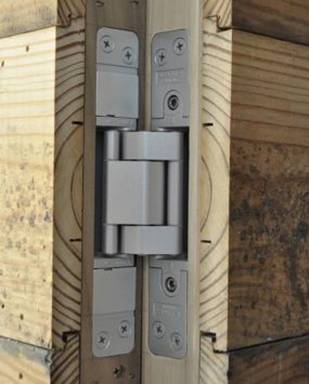
04/08/2015: Thrilling
Tales: Sir Samuel Baker: Hunting sambar with spears/knives has been illegal in

03/08/2015: Fair Chase:
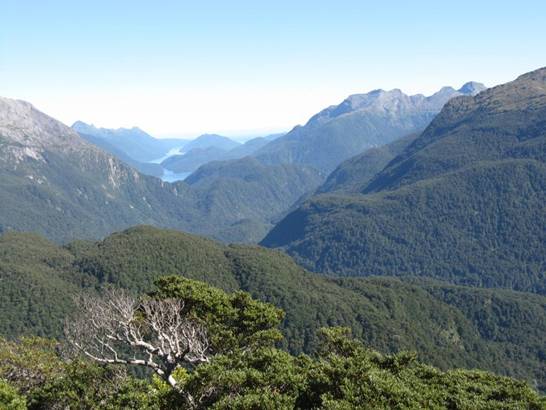
Moose Country, Fiordland NZ: Looking down over the Jane Burn into
the
Seems to me too many hunters long since crossed the boundary between hunting and vermin eradication/culling. In many cases the latter is what is called for (eg with foxes at lambing time) but with game animals we move to such behaviour with the risk that they will thereby lose their status as game animals, resulting in the Government legislating for their extermination.
More importantly still, from an ethical perspective, we lose all respect for them as an animal worthy of our endeavours. The hunter’s prey should have these rights: to be able effectively to employ its senses, intelligence and ability to flee from danger. If we degrade them to the extent that they no longer have these rights then we are not hunting them; we are culling. Sometimes culling may have to be done – but there is no honour in it. It is an (unpleasant) job! Unfortunately much of what many hunters do is simply that.
Long-range shooting with a telescopic sight deprives the animal of any opportunity to see, hear, smell or flee the hunter. It is culling. It is no different from spotlighting, which has the same effect as well as paralysing the prey. Similarly employing trail cameras (a wildlife biologist’s research tool surely?) to locate, monitor and predict an animal, then to await it camouflaged or perched in a tree above it is not hunting. No deer has camouflaged natural predators which it could expect to strike it from a distance from high above. A deer is not camouflaged, yet it is a master of blending into its surrounding and using cover and topography, and moving silently. So should the hunter try to be.
The possession and display of a vast array of clearly ‘unfair’ gadgets and pieces of equipment which inform the passer-by only that you intend to dominate your prey, only advises those who don’t like hunting already that they should act to prevent your hunting. It would be far better for the sport if all hunters wore a tweed jacket and tie (as they used to do in the past), as this would at least indicate you were not rednecks and yobbos!
There are any number of technological means I can imagine of killing animals, but neither would they be hunting. Employing drones, for example. Traps and deadfalls. Poisoned baits and waterholes. Helicopter shooting. Shooting from vehicles or horseback. Why not go ‘whole hog’ as ‘hunters’ and employ helicopter gunships, machine guns, bombs and napalm? People need to wake up to themselves and what they are doing. To be able to hunt is a privilege too easily lost for us to tolerate the macho antics of such a ‘hunting brigade’ with all their showy appurtenances.
Having been evicted from a number of hunting groups for expressing the opinion that hunters need to behave more ethically here: http://www.theultralighthiker.com/sambar-deer-stalking-103/, I may put this idea on Kickstarter: I call it the Trophy Acquisition System. It is designed for the time poor but well-heeled, overweight sportsman. The idea is that a trail cam will be connected to a small PC which has a Target Identification System. You will be able to programme it: eg Sambar Stag. When the target comes in view the camera will begin filming, then a .30 calibre rifle will cleanly shoot it through the heart. More photos of the trophy will follow of it in its chosen death pose. Then the system will communicate with the remote hunter, sending him SMS messages, co-ordinates, snapshots, etc.
The system can even be programmed to Photoshop the hunter into the scene, eg with the dead deer. If the absent hunter does not wish to retrieve the trophy, he can purchase the optional Carcass Disposal System which will tow it away into the bushes somewhere, at which point the Trophy Acquisition System will re-set itself to await the next trophy. For the price of a stamped return-addressed envelope I will be offering a ‘hack’ for the system which allows the target ‘trophy’ to be re-set to an image of the person who purchased and deployed the system.
02/08/2015: Sambar Deer Stalking #103:

2006: Ten Days by Myself: Moose Hunting Seaforth River Fiordland - 70 kms (& at least 3 days!) from the Nearest Road
I have been a hunter for over 60 years. I still feel much more thought needs to be given to the ethics of the hunt. It never ceases to amaze me (for example) that Rene Descartes, one of the West’s pre-eminent thinkers (and someone I also recognise as an outstandingly bright hombre cf his contribution to the calculus…) could nonetheless conclude that animals were merely automata; that they did not have souls (as they called it then); that pain they might feel and express (during live dissection for example - YES!) was simply the output of an automaton.
To me, you would not have to have much contact (eg) with our two little Jack Russells before you would conclude that they are intelligent beings, though in many ways different in their intelligence than us. By the same token, you would not have to have much contact with many human beings before you concluded that many had rather less intelligence than our Jack Russells! Before I consult the experts (or received opinion) I first assess carefully the evidence of my own eyes and senses. And think hard upon it. You would do well to do likewise!
Deer ARE sentient beings. They are NOT mere playthings for human beings, nor simply trophies. The Minnesota Dentist who is everywhere on the news at present for ‘hunting’ a ‘protected’ lion in Zimbabwe with a bow and arrow, also so POORLY that it had to be tracked for TWO days before it could be dispatched, is a symptom of a sick attitude to our prey. It is one thing to hunt and kill a deer; it would die someday in any case; a quick clean kill of this year’s ‘surplus’ production is very much better for the deer as a whole than pitiful starvation (or cruel poisoning), the alternative consequence of an unmanaged population. Nonetheless, there is a right way and a wrong way to go about this ancient activity (hunting). Respect for the prey animal must be paramount, or else the anti-hunters have the stronger case - and we deserve to have our recreation outlawed! Mind you, I have no sympathy for Mugabe who recently ATE many more ‘protected’ wildlife than the Minnesota dentist, but also some years back murdered one of my dear gentle friends.
There are some elements which have not just crept into hunting practice – they have well nigh overwhelmed it. In hound hunting, for example, there is a near universal use of vehicles, radios, tracking collars, GPS and computers as an ‘aid’ to the ‘hunt’, even though ALL are illegal. Such practice is NOT a hunt. All these electronic aids are just as unfair as spotlights and game finders, and ought not be used. Already you have a GUN: that is surely unfair enough? Stalkers are overwhelmingly using camo, trail cameras, hides, tree stands, scent lures, telescopic sights, etc. ALL these things are just as bad, and ought to be outlawed, in my opinion. It is impossible to police such things, of course. It is just that if people cannot hold to enough ethics to eschew such immoral behaviour, then the anti-hunters (and they are the majority after all) will have a field day with us! It is easy for them to know what we do: folk boast about it in magazines and forums all the time.
Most of my deer hunting has been in horrible inaccessible country pretty much that no-one else would hunt. I mentioned (in a previous post) hunting for many years with the ‘legendary’ Arthur Meyers. Much of this hunting was behind the locked gates (legally) in the Upper Thompson catchment where we had to walk the hounds in on leashes for an average of seven kilometres before we began a hunt. Most of the tracks there then were permanently closed (MVO). ALL our hunting was on foot. We returned to our vehicles (if we were lucky – sometimes we were not) only at the very end of the day (usually after dark) after walking for about twelve hours through very rough, thick, steep country, riddled with mineshafts! We each had a four hour drive each way to get there. At least we had no need of a 4WD! Usually we arrived home over 24 hours after we had left.
Arthur used to call us ‘the last of the hound hunters’ because that was mostly what we did: hunt for the hounds! In that country CB radios worked infrequently and very poorly, so each of us (usually 3-4) was typically on his own from dawn to dusk with nothing but our eyes, ears and native intelligence to guide us. Time enough then to chew the fat and a sausage over a cook-up about your part in the day’s hunt – and everyone else’s. We took deer infrequently, and with great difficulty. We carried the meat out with even more difficulty. We richly earned every deer we took, and the deer had as good a chance as we did; probably better. One stag who used to camp near the Ross Creek Hut ruins I practically knew by name!
Arthur was a very fit man. I can remember talking to him on the radio one afternoon; I had just struggled up out of Blue Jacket and the Dry Creek onto the Mount Victor Spur; I asked him where he was, ‘I’m just running up the Bald Hill Track’ was his answer (he was 65 at the time; AND it was a VERY steep track), ‘The dogs have gone over into the Red Jacket and I am going after them’. (There was a ridge you could follow down.) ‘I’ll meet you at the bottom (junction)’ I said, and off I went too to our rendezvous approx seven km away through the bush. You can have a look at the maps: it is big country: we mostly walked 20-40 kilometres on a day’s hunt.
I remember another day meeting up with him after many hours, miles from camp. Yarning, whilst listening to one of his bloodhounds (Thunder?) working a gully above us, a giant tree just suddenly and silently crashed to the ground right next to us, the tips of its branches whipping our legs as it fell. There would have been nothing we could have done to avoid death had we been standing 20 yards closer. On the other hand most folks die in bed, therefore as my grandfather used to say, ‘Bed is a dangerous place and should be avoided’. Most of my hunting life I have chosen places where I would have a vertical climb of 350-750 metres sometime during the day (sometimes several times!) What virtue is there in an ‘easy deer’?
I notice a lot of people nowadays who expect to stroll out on their
first or second hunt and take a sambar. I think it would be just as reasonable
if they never took a deer until their second or third YEAR of hunting - if they
were giving the deer half a chance! Or if they never even SAW a deer in their
first year! What is the hurry? We all eat well in
There are all these chaps who must have a big head on the wall, but you and I know that many of them were taken in the lights or from a fixed position informed by their trail cam’s data, or even from a thousand yards away. This is NOT hunting. This is EGO. How many wounded animals are left to suffer and die because of this unethical behaviour? Over the years I have found some horrifically injured deer who survived awfully - for a time! I was once drawn by the awful noise to a moaning, blubbering young stag whose bottom jaw had been blown off and was flyblown! Creatures who do have feelings and souls – even if Descartes did not think so. Descartes was WRONG. He was just as wrong believing that he had invented a proof of the existence of God (the cogito ergo sum’ argument). Or indeed in thinking that there WAS any God at all!
When I see your spotlights, I want to cock my rifle and aim at them: that would give you about the same chance as you were giving the deer. When I see your trail cams I want to do just the same thing. Such wicked devices are much more ‘fair game’ (for me) than a deer is at the end of a telescopic sight, or at a thousand yards. (I realise some people just want the pics). I think everyone should have to use iron sights (except cullers) so that they would have to learn to hunt (and shoot), to get close to where the deer are, to track and identify the deer and take them with great difficulty and skill - in remote locations.
I sometimes see people with whole deer on their vehicles. Who do they think they are kidding that they are hunters? Have you ever TRIED to carry a whole sambar deer (even a small hind) any significant distance – and almost always uphill (a long way) from where you likely would have taken it through rough, thick bush? I have, and I used to be pretty strong.
Many people are proprietorial about their favourite hunting spots. I know I am. Territoriality is common in both deer and men. I have had to go back through the many posts which mentioned locales here, and edit out the most precise clues. I had noticed how people were tracking through my website, opening this post after that, clearly giving away that they wanted a tip on the best spot for them to go. Some even sent emails, or tried to solicit invitations despite my oft repeated homily, ‘No company is better than bad company!’ One place I recently wrote about had received other visitors next time I visited – even though clearly no-one else but me had been there for years!
One thing that separates out the sportsman or the hunter from the wanton slaughterer or trophy seeker: is energy and self-pride. The latter are slovens and want only the easiest way. The true hunter will go out of his way to make the chase difficult, so that there is a sense of achievement in obstacles overcome. A ‘friend’ has decided that he will take a group of eight this weekend for a week’s hunting to a spot I injudiciously mentioned to him – even (as an afterthought) telling me I would be welcome TOO! You wish. What s/he ignores is that where I park my car will be at least a day’s journey, probably more, (in this case 3-4) from where I hunt – so they are not likely to benefit overmuch from my parking spot. Still it does irk, I know.
Of course if it WAS my favourite spot they ought have pretty much cleared it out for some time to come – at least if they had any competency at all. It is clearly what they wish for anyway. And what good is that? Eight! That is a small army! It is too dangerous a number for a small(ish) area. As it happens the forecasts tell me they will have few river crossings, much damp bush and damper, colder clothing. I might have taken ONE person (I often have, in the past), even two perhaps, (my two boys perhaps?) but never eight – and never (others) if I suspected they were planning to return without me!
I used often to take young hunters ‘under my wing’ in this way, first teaching them the essentials: 1. How to light a fire in the rain; 2. Meticulous firearms safety and competency; 3 How to ‘read’ the lie of the ground, 4 How to get ‘unlost’, 5 Tracks and browse; 6 Deer (and other nature) behaviour…etc. I have spent overmuch time hunting for such folks when they become ‘lost’ – and I have experienced more times than I wish to repeat (ever) their ingratitude, so no more.
It seems to me that anyone can study the maps: first (perhaps) the GMA’s maps of where it is lawful to hunt – whether you obey them is your business: there is nothing unlawful (you would think) in hunting with a camera or your eyes only, but unbelievably there IS! Then road and topographical maps, wildfire maps, etc. Work out for yourself where a good spot might be. Go there for a few days. Have a Look-See. You don’t need a ‘serious’ 4WD. You have FEET! There is a lot of bush out there – quite enough that we should not be squabbling over it. I particularly like wilderness areas, mostly because I almost always have them to myself, not because there are more deer there. I love the solitude. There are most deer along the road - or in some farmer’s paddock where it is legal to shoot them with a spotlight and put them on the wall just as if it was some significant achievement! Personally I always regret having killed.
I am always looking first whether there will be a pleasant place to camp, as I like to return to a beautiful spot again and again. Experts will tell you that you should never camp on top of a hill (too cold and windy) or in the bottom of a valley (too cold and wet), but somewhere half way up a ridge. Experts will also tell you that it is impossible for a bumble bee to fly! I like a flat spot (with water) out of the wind with plentiful firewood. It does not have to be very big. The ‘footprint’ of my http://www.theultralighthiker.com/tyvek-solo-fire-shelter/ is less than 6’ x 6’. It will usually be my home again and again, so I probably spend more time hunting IT than hunting deer. It is often harder to find! Fresh fish are also always welcome!
Valleys which are dry where they join the main stream still frequently run much higher up. Sometimes there is a soak right at the top. Deer which inhabit such a valley will have no need to ever visit the river for a drink – particularly the large stags. A small flat in such a position is a gem indeed. Sometimes where a side gully comes in, but there may be a small level bench almost anywhere.
You CAN camp in a hammock (I often have – both my own and Tom Hennessy’s) – it can be very pleasant. I find it hard to stay on my mat in his – Della does not. The hammock’s virtues are comfort plus, and that you can camp on any slope. Wet ground is also no impediment. A hammock also makes a comfy seat. Hammock camping with a fire is more difficult than ground camping, so it may be more pleasant in the warmer months. You would normally pitch the hammock side-on to the wind, so that you would need to lift (and prop) one side of the tarp to be warmed by the fire – and peg it down when you turn in for the night. The hammock will not keep your back so warm as the shelter above. Also, when you sleep in a hammock you MUST have a well-insulated sleeping mat – or you will freeze! It is also much harder finding a spot where two can hang nearby each other, though it IS possible to double-bunk. My wife often accompanies me on these travels – though her failing eyesight is making this increasingly difficult, alas, and alas for many other reasons: she is a much better cook than I for one thing! The lightest hammock camping arrangement I can find/make is 160 grams for the hammock and less than 100 grams for a cuben fly: http://www.theultralighthiker.com/hammock-camping/
You need to plan your approach to these wilderness areas: for example, following ridgelines is always easiest but it is dry work. I hate carrying scads of water vast distances. Sometimes you have to. For example, there is little water on the various possible Mt Darling circuits. They are cooler places to walk in the hotter weather though because of their elevation. Badly denuded of game by wildfires though latterly. You might think about moving uphill as the weather warms – but water will be scarcer, so knowing where it IS, is crucial info. You want to minimise your route as much as you can, but also it is pleasant to have a large circuit you can enjoy: one with 3-7 separate camping spots so you are always staying somewhere different – and do not exhaust the wood supply at your camping spots. Of course you only need a fire in the cooler months. Each camp might only be another hour or two’s walk from the last. You can always move on to your next camp if (unlikely) you encounter others. Plan what you are going to do – or what you believe you are going to do. Remember though, everything is subject to change without notice! Also, it is foolish to be in the bush without a sat phone! Dicing with danger is one thing; courting death quite another!
Mostly when I visit such places I am happy just to see the deer (and other creatures). I have no need any more to kill things for egotistical reasons. Knowing that I could have (had I wished) is satisfaction enough of a job well done. I have tried in all these pages to recommend some gear (and other tricks) which might safely get you to such spots (and back again) – and what I hope is some useful advice. I trust you have some time to browse, and maybe recommend them to your friends eg by ‘Liking’ my Facebook page, not just the individual posts! There are over 450 posts now, so you will be reading for a while yet.
01/08/2015: Useful information for folks who don’t cook. NB Calories per oz/gram is everything: http://sectionhiker.com/10-ultralight-backpacking-foods/
31/07/2015: A further use for drinking straws: emergency fire starter storage: http://www.instructables.com/id/Fire-Tube-Drinking-Straw-Hack/
See also: http://www.theultralighthiker.com/single-use-antibiotic-packs/
31/07/2015: Civilisation:
Kenneth Clark. We did not have television in 1969 so we missed this wonderful series
which we are catching up with at last, now! It is such a series of revelations,
wonderfully erudite in a down to earth way, and replete with visual delights.
One of my favourites so far is the depiction of Eve (I think) on the
31/07/2015: Fun with Sticky Tape: Mylar Poncho: 49 grams and five minutes that may Save your Life: Follow the instructions here: http://www.theultralighthiker.com/hole-less-ponchoshelter/ As you can see you can sit down against a tree in front of a fire wearing it and be perfectly dry - with a little help from your small dog, Spot!



30/07/2015: Tyvek Bivi, Poncho, Tent Floor: 7’ x 5’ of ‘Tyvek Homewrap’ (and some waterproof zippers (eg here: http://www.zpacks.com/materials.shtml scroll down – 13 grams and US$4.78 per metre) is all you need to make this multi-use piece. Most people who use a tarp use a Tyvek groundsheet/footprint anyway. If it can double as a bivi, before bed you will have a spacious comfy floor, and when you turn in you can be confident that however the rain and wind may blow you are going to be snug and dry, and your sleeping bag will stay clean.
Tyvek is breathable so your body ought not saturate your sleeping bag so long as you don’t overheat. The fact that it cuts any cold draughts and ought to reflect some of your body heat back at you should also mean that it will substitute for a sleeping bag thermal liner (taking your bag down probably another 5C), and it WILL keep you dry.
If you configure it as a poncho as well (http://www.theultralighthiker.com/hole-less-ponchoshelter/) , it should also cut down your pack weight by replacing at least these three items for an overall weight of approx 200 grams. Given that you would have had an approx 100 gram groundsheet anyway, plus an approx 200 gram thermal liner and at least 150 gram raincoat, you should be saving about 250 grams! In an emergency you could no doubt sleep in it right out in the rain! You might carry it in your daypack along with your lightweight sleeping bag with this eventuality in mind!
You will have to configure the zippers in such a way they do double duty. There will be two 3’6” zips which will become the chest zip of the poncho; the shorter zips will do double duty as the arm closures. When you go to lay it out you will see how many (separating) zips you need and which way/s they have to run.

28/07/2015: Toaks Bail Handle: These folks have re-introduced billies with bail handles (along with side handles): http://toaksoutdoor.com/potwithbailhandle.aspx It adds a little bit of weight but means that you can cook by suspending it over a fire. You have to buy the frypan lids separately unfortunately, eg: http://toaksoutdoor.com/accessories.aspx

28/07/2015: Poncho/Shelter: Here is the pattern for my poncho/shelter which I promised some time ago. When we first made this (back in 2000 – for my first ‘moose hunting’ trip to Supper Cove, Fiordland) there was no such thing as a waterproof zip. As you can see we used 2 oz ripstop and Velcro. Della made three of them in such a way that they two or three could be combined to make a bigger (and bigger) shelter by joining them edge to edge (which I still think is a good idea if you sometimes tramp with friends).
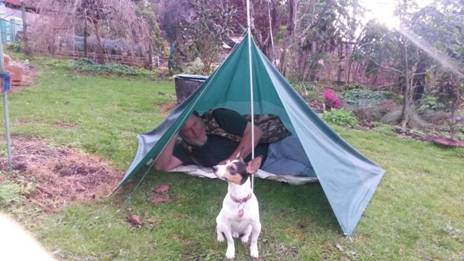
Pitching the Poncho as a Shelter: Just enough room for a man and his dog – an essential on a cold night!
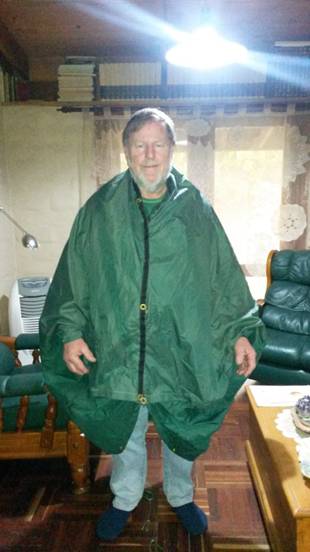
Hoodless Poncho
Now that there ARE waterproof zippers (eg here: http://www.zpacks.com/materials.shtml scroll down – 13 grams and US$4.78 per metre) you can make a far more waterproof poncho using (probably) 1.3 oz/yd2 ‘silnylon’ (eg from here: http://www.questoutfitters.com/coated.html#SILNYLON%201.1%20OZ%20RIPSTOP ) – US$10.49/yd = 2.5 needed) OR .51oz/yd2 cuben fibre from either of the above if you want it ultralight. (NB zpacks have .67 oz/yd2 cuben avail. In camo!) In silnylon it will weigh a little over 150 grams; in cuben it will weigh less than half that – about 65 grams! That is a SERIOUSLY lightweight raincoat AND tent! You would make the tie-outs out of Grosgrain ribbon (available from both of the above).
You can see how to wear it as a hooded/hoodless poncho in the pix, and how to pitch it as a shelter here: http://www.theultralighthiker.com/pitching-the-poncho-warning-this-may-save-your-life/
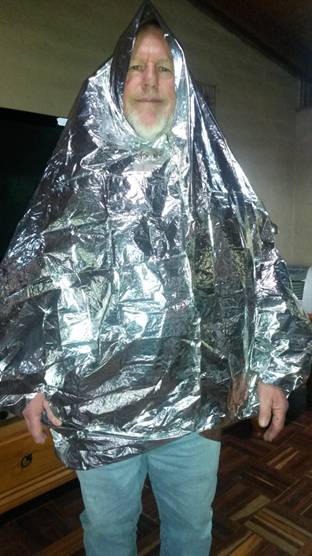
Space Blanket Poncho
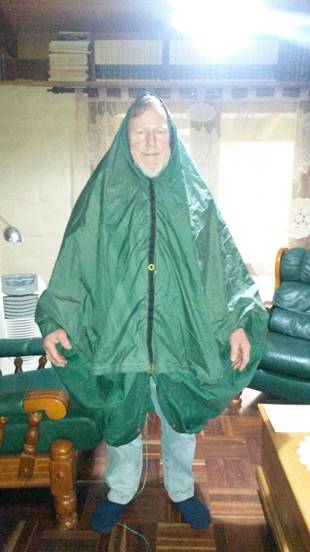
Hooded Poncho
Instructions: Feel free to make ONE yourself, but (as with my other patterns) if you are going to manufacture them for profit, I would appreciate something in return! Cut the material to size. Hem all around. Sew zippers to close AB to AC, BD to DF & CE to EG (leaving openings of the approximate size shown. You might run a thread around inside the hem of the ‘hood’ with a drawstring/s, having left an approx 1 cm gap in your hem stitching at each side for that purpose, so that it can be closed tight around the face. Sew (approx 1” – 25mm) grosgrain tie outs on all four corners and half way along each of the long sides. NB: If you form the grosgrain loop with one end sewn to one side of the material and the other end to the other side with an 180 degree ‘twist’ in the middle it will be easier to peg out.
If you find these directions a little difficult, try making the poncho out of a space blanket with sticky tape as illustrated here:


28/07/2015: Every child (in us) should own one of
these to help eradicate

27/07/2015: Cute Poem: "Worst Day Ever?" By Chanie Gorkin
Today was the absolute worst day ever
And don't try to convince me that
There's something good in every day
Because, when you take a closer look,
This world is a pretty evil place.
Even if
Some goodness does shine through once in a while
Satisfaction and happiness don't last.
And it's not true that
It's all in the mind and heart
Because
True happiness can be obtained
Only if one's surroundings are good
It's not true that good exists
I'm sure you can agree that
The reality
Creates
My attitude
It's all beyond my control
And you'll never in a million years hear me say that
Today was a good day
**Now read from the bottom to top.
27/07/2015: Water
babies: As Charles Kingsley said, ‘No-one can say water babies don’t exist
because no-one ever saw one not existing’! BUT look at this BEAUTY come all the
way from ‘God Know Where’ to die on our roadside at the back of the farm. I
found it yesterday afternoon whilst fixing the back fence. At first I thought
it was a dead sambar because of its size and colour. In a life spent in the
bush I have only ever seen FOUR of these things (including this one). That is a
120cm (4’) fence dropper approx 50mm x 50mm (2” x 2”) lying along it. You will
note its right arm is over 50 cm (2’ long) and thicker than a ‘longneck’ beer
bottle. Its tail is thicker than a 2 litre bottle of coke. Its front claws,
30cm (1’) below the right hand end of
the dropper are 100mm (4”) long! It is/was a wallaroo, the marsupial version of
a Great Ape. Unbelievably, my father Lawrence once (around 1958) managed to
kill one of these with his bare hands, as one of the beagles had it bailed –
and it would otherwise have killed the dog. You can see that he was a VERY
strong man, MUCH moreso than

Wallaroo
26/07/2015: Making drinking straws into mini containers: Now that is a genius idea: http://briangreen.net/2011/07/diy-single-use-antibiotic-packs.html ‘Place the straw over the opening of the ointment tube and carefully squeeze in a small amount of the ointment that is approximately one quarter of an inch in length. You’ll notice that transparent straws work best for this. Use you fingers to squeeze the end of the straw so that it pushes the ointment further up inside the plastic straw. This will provide a clean area for sealing the end of the straw without having the ointment ooze out while you are holding it with your pliers.

Melting the ends.
Hold the end of the straw with your needle-nose pliers so that a small amount of the straw is protruding. This will be used to melt and seal the end of the straw. Take your Bic lighter and carefully melt the end of the straw so that it forms a seal. I like to quickly pinch the melted end with my pliers to ensure a good seal. Turn the straw around and find the point where the ointment went up to inside the straw. Pinch just past that with your needle-nose pliers and cut off the excess straw with a pair of scissors making sure to leave a small amount of the straw protruding for sealing with your lighter just as you did in the first step.’
Easy Open Hack for DIY Single Use Antibiotic Packs: ‘I experimented on several small anti biotic pouches that I had recently made, by cutting tiny ‘V’ notches with the tip of a sharp knife into one of the sealed ends. The idea being that these tiny notches would be all that was needed to start the tear if two corners were torn in opposite directions.’ http://briangreen.net/2013/10/easy-open-hack-diy-single-use-antibiotic-packs.html

Making the 'Vee'.
‘How To Make Seasoning Straws A quick and simple way to bring seasoning with you while backpacking or camping without having to bring way more than you will ever need! I bring these with me when I go backpacking, they allow me to season my food without all the extra weight. Directions: Use the lighter and melt one end on each of the straws. Fit the funnel on one of the straws and carefully pour in the seasoning of your choice. Once they are all filled, cut the straws to size and melt the ends’ https://www.pinterest.com/pin/131097039128017714/

Seasoning Straws.
25/07/2015: Soda Can Stove: easy to Follow Instructions: http://www.ehow.com/how_12340111_turn-soda-cans-portable-camp-stove.html
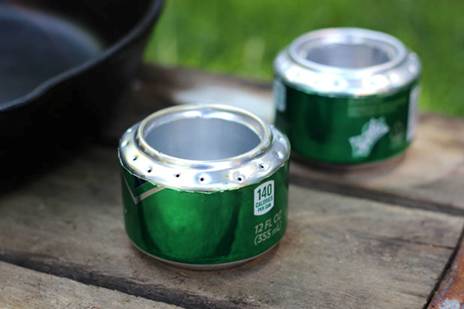
Side Burner Soda Can Stove
24/07/2015: Making an SUL tarp, pack, and stuff sack out of a single 5-yard piece of spinnaker fabric: What a great project – even lighter in cuben, of course: http://www.backpackinglight.com/cgi-bin/backpackinglight/make_your_own_gear_5_yards_to_sul_part_1.html#.Va2ux_nq3ct

The finished 6.3 ounce tarp, with protected ends and catenary ridgeline.
23/07/2015: Hiking Food: Mckenzie’s Country Chicken Soup with Lemon & Black Pepper Tuna (which we had for tea tonight) is quite delicious. I added only HALF the water on the directions, making roughly one litre of soup - I have an 1100ml pot – a good quantity for two. You need to simmer for approx 15 minutes, after which I added two sachets of Safcol tuna (as above) stirred it in and waited fro the soup to come back to the boil. Done. Next time I would add only ½ of the Mackenzie’s flavour sachet at the beginning, adding some more near the end if it needed more salt (it was a little saltier than we like with the whole sachet). You could (as usual) add some Surprise Peas and some Deb Mashed Potato to thicken if desired. The soup was quite delicious just as it was though, and would taste even better on a cold night in the backcountry sometime (soon!) 2456 kilojoules in the soup and 1056 in the tuna = 1756 each or roughly 440 calories. I usually have something like 30 grams of Mrs May’s Almond Crunch for an entrée (650 kJ), a cup of Jarrah Hot Choc Frothy Classic (45 kJ) and perhaps a Carman’s Muesli Bar for dessert (698 kJ); Total 3149kJ (787 calories) - plenty enough for a growing boy!

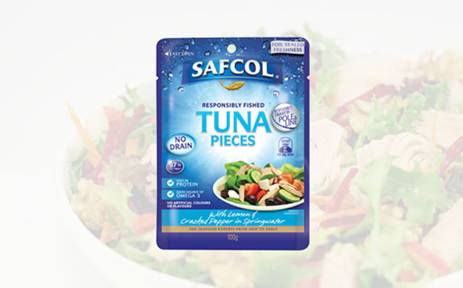
22/07/2015: Roman Swiss Army Knife: Category: tool/implement. Name: compound
utensil. Date: 201 — 300 AD. Period: Middle Roman. Description: eating
implement, folding, with three-pronged fork, spatula, pick, spike and knife.
Production Place (legacy):

Roman Swiss Army Knife
21/07/2015: Power from Heat: The Candle Charger can power your phone in a blackout ‘When the power is cut, modern life is thrown into disarray. But thanks to a new project you may not have to worry about your smartphone dying. The Candle Charger is described as an "indoor power plant for smartphones," providing USB charging capabilities with just a candle and five ounces of water.’ http://www.gizmag.com/candle-charger/38461/ Also see: http://www.gizmag.com/flamestower-fire-charger/29290/ I had long ago seen that you could buy the Peltiers here: Peltier + circuit http://www.customthermoelectric.com/powergen.html?gclid=CLTl4JPpxrMCFchbpQodszYAow
plus the circuits to stabilise output voltage and provide USB power. I was speculating about simply attaching one to a platypus bottle (of cold water) and sitting it near the fire so that its two sides had different temperatures. Some current must be created. I can see that a metal tongue which will get one side hotter without warming the other side is an improvement on this, but at 198 grams! My simple set-up would weigh perhaps 50 grams. Still on my –To-Do- list. If there are others out there with a little more electronic nous than me who want to get into this, please message me.

The Candle Charger
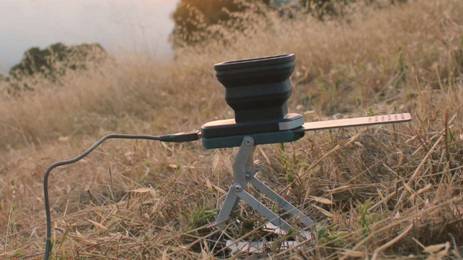
The Flamestower
21/07/2015: Sensible people don't fill their children's head with nonsense like 'fairness'! The universe is completely indifferent to us: to think otherwise is a form of insanity!
20/07/2015: UPPER YARRA TRACK UPDATE: HISTORIC PHOTOS: Courtesy of Thomas Osberg, here are some wonderful photos of the track in bygone days. They begin at approx McVeigh’s Hotel (now under the Upper Yarra Reservoir), and finish at Walhalla. The captions are my surmise (and might not be correct). The changes in hiking costume and gear from that day to this are quite interesting!

2. MacVeighs Hotel
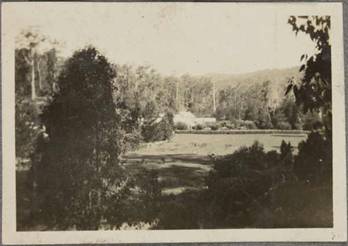
2. Looking back towards McVeighs

3. Between McVeighs & Upper Yarra Hut(s)

4.

5. New (Left) & Old
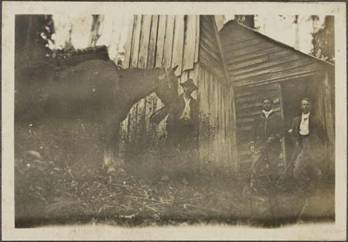
6. Old Upper Yarra Hut

7. Ridge above the

8.

9.

10. Top of the ridge above Falls Creek?
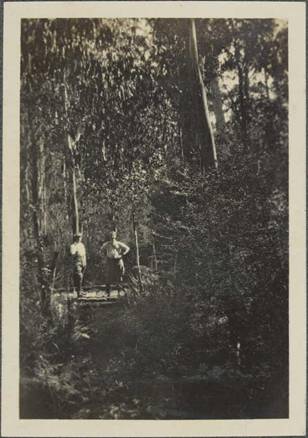
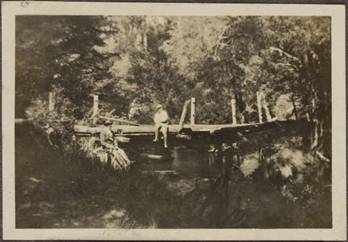



15. Myhrree area?
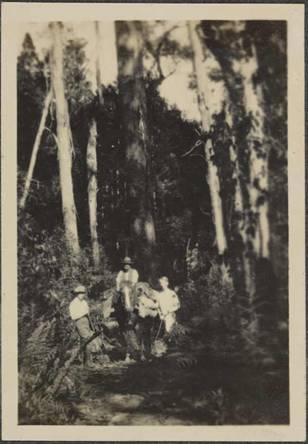


18. Prob. Mt Whitelaw Hut.

19.
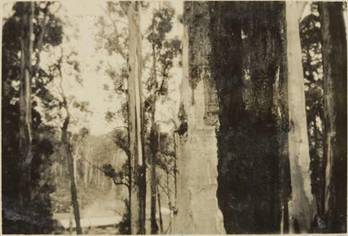
20. Track Marker Tree.
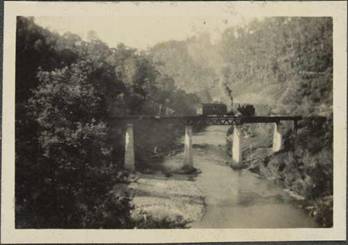
21.

22.

19/07/2015: Automatic Gate Controllers: Prompted by Spot’s near-miss (http://www.theultralighthiker.com/spot/) , I have been working on a JR-Proof fence (I know you will say, Good Luck with THAT!’, but I am an optimist. THIS section has him stymied at least. The electronic gate controller also has the local ‘tea-leaves’ in somewhat of a quandary. We used to have some low-life drive right up to the house about once a week, yet when we opened the door, they would scuttle off – or if we had them trapped, they would give some preposterous story about searching earnestly for someone who never existed. In the 2-3 years since we installed the push-button gate there have been NONE! It will soon have a sign saying, ‘For entry ring this number------‘ and a digital keypad so you can let yourself in with a code if you haven’t got a remote – after you have rung when we are not at home –when we would let you in with a button at the house once we knew who you were. I know old folks feel the need to protect themselves more; but we are increasingly living in more dangerous times. Crimes against the person are up over 17,500% since they outlawed carrying pistols for personal protectionin the early C20th! Read these two articles: http://www.breitbart.com/london/2015/02/19/britain-is-getting-more-dangerous-so-give-us-our-guns-back/ & http://www.adamsmith.org/blog/liberty-justice/make-britain-safer-bring-back-handguns/ A number of folk make these gate units. We bought ours from these people. It has been working fine now for quite some time; the batteries need charging once in mid-winter because the solar panel is too shaded by a large blackwood – I should move one of them: http://www.solartronics.com.au//?file=home

18/07/2015: The Secret of Domestic Bliss: Two products which will ensure you always have sharp kitchen knives: ‘Smith’s 2-Step Knife Sharpener features two tungsten carbide blades with pre-set angles to ensure the perfect edge every time. Three or four strokes through the carbide sharpening slots will restore the edge on a very dull knife. The two crossed ceramic rods also have pre-set angles and provide a smooth finished edge to already sharp knives. It is lightweight, portable, comes with a lanyard hole, and has non-slip rubber feet for added safety. Excellent for use on all types of knives, especially filet knives.’ Available at a variety of stores from $10: http://www.smithsproducts.com/product/ccks/ 45.5 grams; and Victorinox’s 10cm vegetable/paring knife (24.5 grams) from $6, just the best preparation knife I have ever found – and back to razor sharpness with a couple of quick strops on the Smiths 2-Step: http://www.victorinox.com/ch/product/Cutlery/Category/Household-knives/Paring-knives/SwissClassic-Paring-knife-10-cm/6.7706.L115;jsessionid=316228109C695A50923596CF087DD817


17/07/2015: Ultra-cheap, Ultralight Rain Gear; neat idea: Jacket =149 grams; Chaps = 74 grams: http://gossamergear.com/wp/tip-of-the-week-make-a-hooded-tyvek-rain-jacket-and-chaps-for-under-10 Youtube video: https://www.youtube.com/watch?v=39chVyur8Lg

The finished Tyvek hooded rain jacket is extra long and weighs just 5.25 ounces. The chaps weigh 2.6 ounces. You may get some comments about the white color (like “where did you park your space ship?”), but it is actually quite functional because it stays cooler than a darker colour.
16/07/2015: This is our rig. We have a Landrover Defender – the 1995-99 models with the 300TDI engines are BEST – after that vehicles all became electric and impossible to FIX when things go wrong, especially in the bush. In 2010 the camper cost us under $20,000 delivered.
This vehicle suits the pop-top camper we have which has living space of 8′ by 6′ with a Queen sized bed over the cabin. It folds down to being about the height which any 4WD would be with roof racks and a spare on top, meaning someone has usually already cleared overhanging timber. It is quite big enough for us, has stove, fridge, dinette for four, space heater, water heater, outside shower. Also, once you try to push out dimensions (you could probably go out to 6’6″ wide) you start to not be able to fit down 4WD tracks. Similarly length increases mean you can’t get over steep sections etc.
Our Landie has 2” lift, twin diff locks and winch so it will go most anywhere – and has! (I intend to install http://www.secondair.com.au/why.htm to extend its range even further). I may also add a side awning for socialising and a small rear one for the shower/toilet, etc. I have purchased four under tray boxes which will contain wheel chains, Alpacka rafts https://alpackarafts.com/ etc. These <2 kg rafts (suitable for Grade 3+ rapids) are a great way to access remote country. I have the Fiord Explorer which they also describe as a ‘moose boat’ for obvious reasons! If you have a take-down rifle (as I do) it fits inside my pack liner bag; otherwise Aloksak http://www.loksak.com/products/aloksak make a waterproof rifle bag.
I also intend to build a motorcycle carrier for the rear for my Postie bike http://www.theultralighthiker.com/honda-ct110/ so I can get back to where I started on canoeing/hiking trips http://www.theultralighthiker.com/motorbike-hitch-carrier/ . We often take it into remote mountain country where it make a great base for walks, fishing, hunting, canoeing etc.
We had our camper built by http://www.fourwh.com/ They now offer a variety of tray-tops – basically to my design (which I gifted them). See also: http://www.theultralighthiker.com/staircase-for-camper/ & http://www.theultralighthiker.com/?s=camper I had to modify the suspension and tray to make the rig ride comfortably and safely. I will cover that in a future post.

Horseyard Flat,
15/07/2015: Can Knives get any lighter than this 3 Gram Knife: http://www.traildesigns.com/accessories/ultralight-knife It makes the ‘Dermasafe’ I posted about here (http://www.theultralighthiker.com/dermasafe-ultralight-knives-and-saws/) positively cumbersome, as is the Gerber zip-Blade mini knife: http://www.countycomm.com/gdczipblade.html by comparison.

Trail Designs 3 Gram Mini Knife

Gerber Zip Blade.
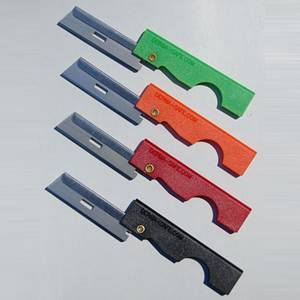
Dermasafe 8 Gram Razor Knife
14/07/2015: Uses for Antlers: For many years’ hunting I was completely uninterested in antlers: the bones and antlers were only so much weight to carry out of the bush, so I carried out only the meat; some for the dogs, some for the family. After many years of experimenting with venison I reached the conclusion, ‘there is no such thing as a tough rissole’ so it all went through the mincer; adding some pork fat at this stage made for an acceptable Spag Bol or cottage pie – but venison will never be lamb (which, being sheep farmers we had plenty of), just more fun to hunt! Occasionally someone else would want a nice pair of antlers so I let them have them. Travelling around NZ with my son in 2008 we spotted this excellent Antler Arch near Hokitika; my wife would like one too! It is one thing acquiring enough antlers for such a project by helicopter culling in NZ and quite another putting them together from sambar stalking in Vic – but I will work on it! My wife also admires those antler chandeliers, hat racks etc, and has many crafty projects for them cut into itsy pieces, so I drag one or two back now and again for her amusement. At 66 though, I am more interested in just getting myself to and from some mountain stronghold without being encumbered by unnecessary weight. The Jack Russells appreciate having their efforts rewarded by my knocking over a deer now and again, but they are doing well to eat half a kilo – and live quite well on ‘Smackos’, which are lighter!

Antler driveway arch near Hokitika NZ, Bryn Jones 2008
13/07/2015: Toaks Ultralight Titanium Cook System; US$58. Weight: Total: 4.4 oz (122g) Includes: Pot with lid: 550 ml; 3.0oz (85g) Dimensions: Pot: 3 1/2" (95mm) (external lower part) (D) x 3 1/8" (80mm) (H); Solid alcohol folding stove: 0.5oz (13g); Folding spork: 0.7oz (18g); Windscreen: 16" x 2 7/8" (405mm x 72mm); 0.2oz (6g). The system comes with a mesh storage sack: http://toaksoutdoor.com/titaniumcs01.aspx Add one of http://snowpeak.com/products/hotlips-2-piece-set-mgh-001?variant=671143453 4 grams. Total 126 grams. Just great for daytrips or overnighters.
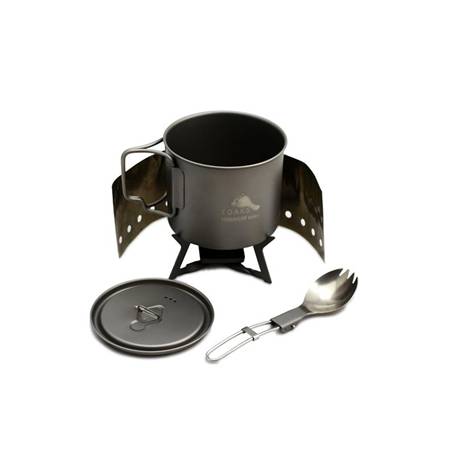
12/07/2015: Hiking Food: Making (delicious use) of everyday supermarket dehydrated food instead of those awful backpacking meals: Continental Spring Vegetable Simmer Soup + 500 ml water (1/2 quantity) + I Tablespoon (approx) Surprise Garden Peas + 8 Teaspoons Continental Deb Instant Mashed Potato. Try it. After you have done so, start thinking about other dehydrated (eg Continental) products such as their Gravies and Sauces and their meal bases. Cheaper and much tastier.

11/07/2015: Hiking 101: If you don’t know that you must NEVER wear COTTON in the bush (if it gets wet, hypothermia and perhaps death will follow soon after!), then these elementary tips ARE for you: http://www.theadventurejunkies.com/backpacking-hiking-tips-for-beginners/
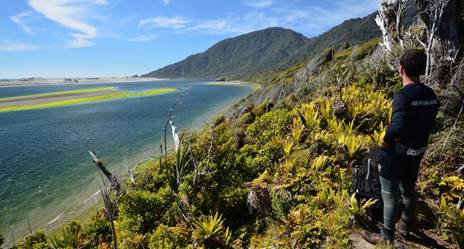
10/07/2015: ‘Can do’ and ‘Make do’ are two of my favourite expressions; they deserve a wider popularity!
10/07/2015: Windscreens: If you don’t use one you are likely using twice, maybe three times too much fuel – which you most likely had to carry many hard miles. You can check this out for yourself: 250 ml of water should boil with about 7 ml of methylated spirits. Try it yourself on a home-made ‘Supercat’ stove: http://jwbasecamp.com/Articles/SuperCat/ Without a windscreen you may need 15-20 ml. Smarten up. You can make your own, as shown here on my old Snowpeak 1400ml (210 gram) pot http://snowpeak.com/collections/all/products/trek-1400-titanium-cookset?variant=671149753 from a piece of aluminium flashing with just a pair of industrial scissors. Notice it is joined with just a couple of paper clips. I have put bottom air events only on the lee side, which is the best idea, I think. It weighs 40 grams – but I can see how I could have trimmed it a bit and maybe shaved it down to 25! You should bring the windscreen about an inch up the pot and have a gap between it and the pot of less then 1/8”. You want to capture ALL of the heat from whatever stove is underneath the pot. In this case it is a Brasslite 47 gram adjustable stove http://brasslite.com/products/brasslite-turbo-i-d-backpacking-stove/ which is wonderful! For years I used the lightest simple boiler soda can stove I could get which weighed 7 grams from https://www.minibulldesign.com/productcart/pc/viewCategories.asp?idCategory=2 It is still in my overnight camping kit. You can see from its blackening that the pot has had a fair bit of use on my Bushbuddy (145 gram) Stove: http://bushbuddy.ca/indexs.html which is a ‘fuel-less’ stove ie, you burn twigs you find on the way. Sometimes the metho stove is good for a quick cuppa though. Now I have a titanium windscreen which weighs only 7 grams on my Toaks (156 gram) 1100 ml pot: http://www.traildesigns.com/cookware/toaks-titanium-1100ml-pot-ckw1100 You can buy one here: http://www.titaniumgoat.com/windscreens.html You can probably figure the weight saving from switching pot + windscreen 210 + 40 = 250 grams; 156 + 7 = 163 grams. Saving: 87 grams – enough meths saved to boil over 3 litres of water (12 cups of hot soup perhaps!) Some people sell a pot with a heat exchanger on the bottom. You will never save enough fuel to compensate for its extra weight. Indeed, if you had adjusted your windscreen properly (as above) you would not have saved any fuel at all – just be lugging around a clunker! Instructions for making your own windscreen here: http://brasslite.com/instructions-for-making-the-brasslite-windscreen/ Another way to save fuel (instead of simmering) is to use/make a pot cosy. See instructions for making your own here: http://brasslite.com/make-your-own-pot-cozy/, or buy one here: http://www.antigravitygear.com/shop/cozy-collection/antigravitygear-pot-cozy/ Locally (Oz) you can buy Toaks’ windscreen (http://toaksoutdoor.com/search.aspx?find=windscreen) here: http://www.backpackinglight.com.au/ which is just about the only store in Victoria specialising in lightweight hiking gear. DO pay them a visit. Say, ‘Hello’ to Tim from me!
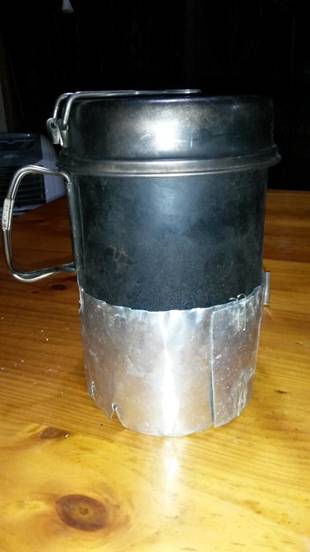
09/07/2015: DIY Head Torches: You can save some weight and have fun by making your own head torch with a length of hat elastic, a couple of O-rings (or elastic bands) and a micro cord lock to convert eg any AAA torch into a head torch – or you can sew a couple of pieces of elastic together to create a comfy head band with an elastic sleeve for the torch (as shown) – we could have chosen lighter elastic; this is what we had. Converting the Photon Freedom http://www.theultralighthiker.com/photon-torch/ (as shown) makes a head torch which weighs a mere 9 grams (including battery)! This would be good for a day pack. Other weights: the Fenix HL10 https://www.fenixlighting.com/product/hl10-fenix-headlamp/ (which weighs 19 grams – compared to the Maratac http://www.theultralighthiker.com/mini-super-torch-a-weeks-light-weighs-50-grams/ at 11) comes with its own head band which weighs 27.5 grams. My elastic version weighs 19, my hat elastic one a mere 4 grams.

Top: Photon Freedom + hat elastic + 0-ring +micro cord lock
Centre Fenix HL10 + hat elastic + 2 o-rings + micro cord lock
Below: Fenix HL10 + two pieces of sewn elastic + tensioners
08/07/2015: Mini Super Torch: A Week’s Light Weighs 50 Grams: Maratac AAA Torch, 138 lumens, weight 11.5 grams including removable pocket clip. You will not believe how bright this torch is on the highest setting! You could shoot a fox or rabbit with it at 30-50 yards, seriously! The light diffuser (included) at 1.5 grams turns it into a VERY creditable lantern. It also glows in the dark, as does the torch – handy when you need to find it in a dark tent.
It has three light settings quoted as 1.5 (55 hours), 40 (7 hours) and 138 lumens (70 minutes). I did a previous post about ‘Tent Lanterns’ here: http://www.theultralighthiker.com/tent-lanterns/ and I also mentioned this torch back in February: http://www.theultralighthiker.com/138-lumen-single-aaa-flashlight/ . With a birthday coming up I decided to order one. Now it has arrived I will order several more! I was pretty happy with my old Fenix LD01 at 14 grams and 85 lumens with its three settings 9 (11 hours), 28 (3.5 hours) and 85 lumens (1 hour) . (The LD02 has 8 (15 hours) , 25 (4.25 hours) and 100 lumens 30 minutes). This torch is shorter (67mm compared to 75 mm and looks more compact too. I was astonished actually that a AAA battery fitted in it. The newer Cree Led is obviously pushing out 62% more lumens per watt than the old Fenix’s model and 38% more than the new – which means you will have to carry correspondingly fewer grams in batteries .
You are getting 7 hours at 40 lumens (on the middle setting)
compared with about half that at about half the brightness. That’s a lot of
light. Your AAA battery will last approx two nights - more if you switch it
back to the lowest setting – all you need for sitting in the tent talking or
reading an ebook on your Android phone anyway afer you have finished cooking.
The Enerloop’s rechargeable 750 mAh AAA batteries I use weigh 11.5 grams each,
so you are getting all your light for a carry of 13 grams (torch) and about 6
grams per day (batteries). A week’s light - all up is about 50 grams! It is available from http://www.countycomm.com/aaa.html
(US$29.75ea) . He doesn’t usually ship to
The diffuser works quite well and also fits the Fenix torches (and probably others) and costs only US$2.50! It certainly is an alternative to unlocking the Loktite the head of the torch is screwed on with on the Fenixes – I can’t see whether the Maratac can be unscrewed or not, but with the diffuser it doesn’t need to be! As usual the addition of a bit of elastic and/or a couple of O-rings and a micro cord lock can turn this torch too into a head torch – as I have already observed with the LD01. I will do a post about ‘Home Made Head Torches’ soon.
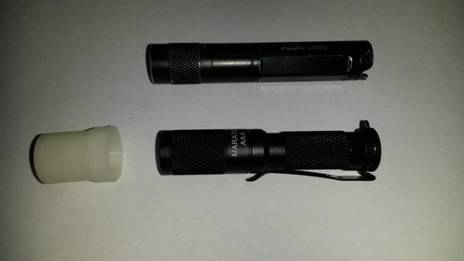
Above Fenix LD01, Below Maratac AAA, Left Light Diffuser.
07/07/2015: Spot’s
Adventures:

Nothing beats a warm fire and a good book - in this case 'the Adventures of Sherlock Holmes'.
So, Spot and I headed back to the ‘
I had made a few minor improvements to my tent (http://www.theultralighthiker.com/tyvek-solo-fire-shelter/), which worked well. I think I will alter the positions (upward ~2”) of the two windward outer tie downs as these were preventing the tent from tautening perfectly on slightly uneven ground. It doesn’t matter, but it would look better. I may tape an extra bit onto the floor to make it wider so one can sit up straighter. I will update the post when I have done this. The additional glue-on tie outs about 1’ up on this side certainly held the fabric further away from us. Between laying the fire and lighting it a couple of hours later (after a quiet stalk) the wind altered its (forecast) direction and instead of blowing NNW was blowing from the South (which I failed to note) so that the smoke was inclined to scoot into the shelter annoyingly. I cured this by closing one of the storm flaps so the smoke just sailed on past. It would have been annoying to have had to move the shelter in the night. Note to self: take more care with forecast and wind direction.
You may notice my chair in the bottom photo. This is a Big Agnes Cyclone SL Chair https://www.bigagnes.com/Products/Detail/Accessory/CycloneSLChairKit which weighs about 170 grams. It is just wonderful to have a comfy chair at the end of a hard day. You can imagine the glass of wine to go with it: Myself, I go for Bacardi 151 and water – it is the lightest booze on the trail! You can pretty much use any inflatable hiking mat to form the chair (in this case it is the Thermarest Neoair Xlite Women’s (340 grams R 3.9 ie good down to approx minus 10C). I see Amazon have the chair from $44.95. Another Big Agnes product I highly recommend (if you don’t want to afford the Neoair mat) is their Insulated Air Core range which are much cheaper, probably more durable and have a higher R-rating than Thermarest’s pads, so down to minus 15C: https://www.bigagnes.com/Products/Specs/Pad
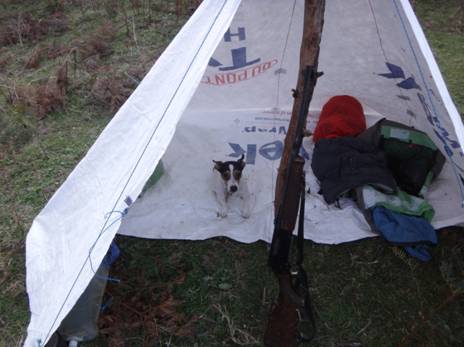
Spot is a big help setting up camp!
I use a -1C degree Montbell UL spiral stretch bag http://www.moontrail.com/montbell-ul-spiral-down-hugger-3-reg.php which is enough for most Victorian conditions. You CAN lower its comfort limit by up to 8C with one of these http://www.seatosummit.com.au/products/liners/thermolite-reactor-liner/
but it adds 248 grams to your pack. I carry a UL Montbell insulated down coat and vest (which together weigh about 400 grams, and a pair of these https://goosefeetgear.com/products/1-down-socks which weigh about 60 grams and instead of a down balaclava (also available there) I have an insulated helmet Della made me from a Rayway kit http://www.rayjardine.com/ray-way/Insulated-Hat-Kit/index.htm which weighs 30 grams. As all of these items add nothing to my packweight as I would need them in camp anyway; if I wear them to bed they reduce the comfort level of the bag by a corresponding amount. (Tip: I wear the vest upside down from approx my knees to my waist). Tip Two: To avoid a cold nose I pull the insulated helmet down to the tip of my nose which works wonderfully. NEVER breathe (or sweat!) into your sleeping bag: moisture rapidly reduces its insulative ability, and you WILL freeze!

Time for breakfast, Boss?
I found an old packtrack on this trip, but I have not cleared it yet. They are wonderful things. Another elsewhere which I cleared for a distance of over 30kms (and injudiciously informed various ‘friends’ of) has become somewhat of a magnet for hunters who never before hiked and camped out in their lives: I always leave a pile of wood at each of my camps so that if I arrive in camp late I do not have to collect it before dark. It is just common sense and good manners really. There is always a limited number of places which share all the qualities needed: a level spot, out of the wind, near to water, available firewood. I was annoyed one night to arrive at one of my camps to find two chaps already burning ‘my’ wood quite needlessly (it was a warm enough night no fire was needed). Some people have not understood that one of the chief reasons folk were nomads is that a group quickly depletes the available firewood in an area, requiring that they move on. This situation has become even moreso as a result of the bushfires. I was forced to travel further on to another camp in the twilight. Even though I asked them to replace ‘my’ wood, they did not. They clearly thought I was some sort of public servant whose facilities they could just wantonly make use of. The things you see when you DO have a gun!
This (new) packtrack extends many kilometres along the river (I
followed it for at least five) and also it (interestingly) snakes up a large
valley I am yet to explore. At the point I turned back I could see some
splendid flats opening up further along the river in the distance (to which the
packtrack clearly provides access). Another time. These packtracks, built by
cattlemen, diggers, etc long ago are such a treasure. They are not marked on
any map. As is usual they skirt high above steep-sided sections of the river
which would make difficult walking. They are almost always at just the ideal
height for deer to bed down near them for the night so that when they are clear
enough so you can make your way along them undetected, they make easy hunting
opportunities. There is one opposite Huggetts on the
I intended to stay away two nights, perhaps three, but I am home after one. Such is the penalty for increasing deafness. When I called Della on the sat phone I was surprised she expected me home after only one night, but I thought something must have come up she did not want to mention on the phone, or… anyway her wish is my command – only it wasn’t evidently. I will stay a little longer another time. I have another more remote spot I often go which takes me 3-4 days each way to get to/from & which I haven’t yet visited this year. Winter is the ideal time for camping out; if I appear to disappear for a week or so, you will know I have heard the mountains’ call once more.
04/07/2015: Thrilling Tales: ‘The Overlanders’(1946):
Set during WW2: ‘Inspired by a true tale, this
film follows horseman Dan McAlpine (Chips Rafferty) as he guides a massive herd
of cattle across the punishing terrain of northern Australia. At the outset of
World War II, Dan is advised to kill the animals, lest they be used to feed
Japanese troops. Instead, he and a diverse group of hired hands
and volunteers take the cattle over mountains and across rivers, in an attempt
to reach what they hope is safety on the furthest reaches of the country's east
coast.’ A neglected part of
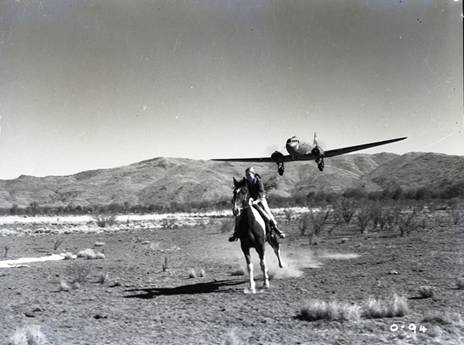
02/07/2015: Lightweight packrafts: Some new packrafts and paddles will make it easier to cross rivers and lakes. These two (suitable for flat water/Grade 1 rapids) weigh less than a kilo: Alpacka ‘ghost’: https://alpackarafts.com/product/ghost/ @ 1.5 lb & $595 and Klymit LiteWater Dinghy: http://www.klymit.com/index.php/litewater-dinghy-lwd.html now 35 oz & $199. Note also this ultralight paddle: http://www.packrafting-store.de/Paddle/Special-paddle/Supai-Olo::472.html @ 365 grams!

01/07/2015: LEVER ACTIONS: Think about this: Colonel Townsend Whelen could reportedly hit man-sized target at 200 yards using the bolt action, open-sighted M1903 Springfield .30/06 service rifle, scoring six hits in ten seconds flat, could do it on command - and trained thousands of soldiers to emulate him: http://artoftherifle.com/the-townsend-whelen-challenge/2011/11/the-townsend-whelen-challenge.html & http://riflemansjournal.blogspot.com.au/2010/07/history-townsend-whelen.html Most shooting groups have already come out in opposition to any ban on lever action firearms; the story is probably mostly a ‘beat-up’: http://ssaavic.com.au/

30/06/2015: Hunting in Fiordland:
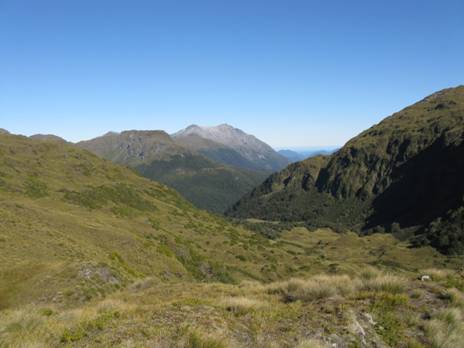
Head of the Jane Burn near Loch Marie looking towards Dusky Sound.
It is incredibly difficult. Some ‘easier’ areas (eg along the South Coast Track) are flatter and safer. There are both pigs and deer there. In NZ they have these excellent DOC (‘Dept of Conservation’) huts all over the place (roughly a solid day’s walk apart with a pack; all have a helipad) which make good accommodation at mostly $5 a night, eg in ‘the rut’ – which in those latitudes is late March-early April when the bush comes alive with the loud roaring of the red stags, or strange bugling call of the Wapiti. There is also a handful of us who have heard (much earlier in March) the echoing call of the moose – both sexes call, but differently. It is astonishingly loud: it needs to be for them to hear each other even with those huge ears over the vast distances. It is nothing to them to leap into one of the Fiords and swim several kilometres across to join up with a mate on the opposite side. Those vast long legs are excellent for forest travel. They can step over shoulder high logs which I have trouble scrambling over. I have found their thumb-sized droppings on the top of just such logs. They are big critters – nearly as large as a Clydesdale!

There are often clearings along rivers (and on slips, see hillside).
Lighting a fire in the huts is now more difficult as ‘environmentalists’ have mandated that all the old ‘pot belly’ stoves be replaced by these newfangled ‘pollution-free’ models which simply will not take a fire – and certainly will not boil a billy! Such is progress! Mind you the bush is so wet it is hard to get dry wood, which is petty scarce nearby the huts anyway. With the new stoves installed I seldom bother. Some huts are supplied with wood. Usually they cost $10!

Everywhere you point the camera is this beautiful serene forest.
The ‘roar’ is the best time to go as that is when the Kiwis are out in the bush outnumbering the hordes of backpacking tourists, so there is opportunity to make some useful contacts with them, swap hunting stories, perhaps invite them across to Gippsland for reciprocal visits, etc. These guys really know how to hunt deer. High up on the tops in odd spots there remain a few Thar and Chamois, but not many. The best places to take the reds is near the leatherwood fringe of the snowgrass treelines which universally reek of stags, near forest clearings along river bottoms, clearings near the sea, on newish slips etc. In the roar, it is much easier to take stags in forested areas as they will come to your call much like puppies! It IS a good idea to have a blaze orange hat though as fellow hunters also sometimes come to your answering call, as has happened to me a couple of times! Not the sort of contact you necessarily want to make with Kiwi hunters – though I am told an Aussie trophy on the wall is highly valued! So, beware!
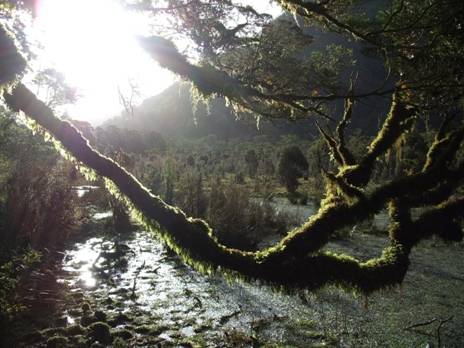
As I say, there are morasses.
Many places have astonishing morasses which are something to avoid. It is VERY wet there (over 10 metres of annual rainfall), so if you sink into one of these beauties, you may disappear from sight. The going is rough enough in lowland forest and along river bottoms, but when you head up the ‘Burns’ which fringe the fiords or begin to climb the walls of the fiords themselves it is hard to believe. But this is where the moose are. You need to remember that fiords were carved out during ice ages; ie they are the remains of glaciers, so their sides and bottoms are one vast moraine field. A nightmare jumble of giant boulders which, over the years have more or less filled with soil and debris – but there remain deadly moraine holes you may slip down in to your detriment, or death! I have slipped suddenly down into one which was head high. Now I walk carefully, trying to test whether the ground will take my weight each step; you need to step carefully ever ready to throw yourself forward or backwards if you feel yourself falling.
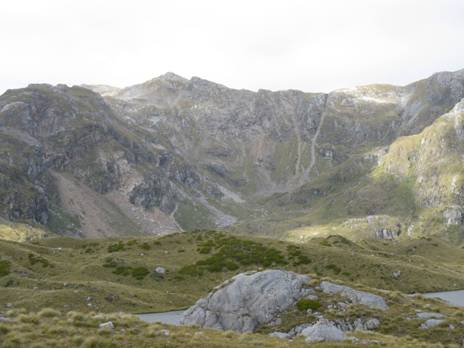
Above (and below) the treeline, the going can be very steep.
Above the snowline is much easier as you can much better spy out the ‘lay of the land’, but the going is frequently precipitous and the ground loose or shaly and prone to awesome slips. Getting ‘bluffed out’ on forested slopes is far too easy. This happens when your descent is interrupted by a perpendicular fall – if you proceed! You know how much easier it is here to follow a ridge to the top than to follow it to the bottom. How many times have you ended up in the side gully rather than the main stream unless you pay close attention? Over there the ground is much more riven. There are innumerable ‘gullies’ so that you very frequently cannot find your way back down. You OFTEN have to re-ascend and search for another route. You must ALWAYS be prepared for a night (or two) out. The worst thing you can do in such a situation is panic or hurry. Or worse risk a dangerous descent. Much better to camp out. Of course that is not easy on steep slopes. In Fiordland you will only manage to travel a fraction (1/3?) of the distance you would normally make in Gippsland.

Lake Roe Hut right on the leatherwood fringe.
In NZ I always carry a hammock. There are, after all plenty of trees. A hammock swung between any two trees makes a flat spot out of the worst slopes. In Oz a 7’ x 7’ tarp will usually suffice. In silnylon such a tarp weighs less than 250 grams (with tie-outs). In .5oz/sq yd cuben fibre the same tarp weighs less than 100 grams! In NZ I would go for at least an 8’ x 8’. The lightest hammock (the ‘nano’) weighs 160 grams including dyneema suspension cord. Where it rains a lot, I would probably opt for a slightly larger tarp. We have a home-made cuben tarp with ‘storm-doors’ at each end which will keep you dry in the worst downpours and which weighs 200 grams. This is what I usually carry in Fiordland. If there are two of you, it is possible to swing two hammocks under one tarp, but you need to ‘boost’ the lighter person into the upper hammock. My wife is small enough I can manage this. Cuben fibre comes in slightly narrower widths than ‘normal’ cloth (eg silnylon, etc = 5’ wide; cuben = 4’6’), so you can sew/tape two pieces to make a rectangular tarp 9’ wide and long enough to completely shelter your hammock whilst allowing the ends to meet at the bottom (11-12’). You need to learn how (not) to tie a hammock to two trees. If you tie any ordinary knot, after you have lain in the hammock you will NEVER get the cords untied! The TRICK is to pass the cord around the tree, then around itself, then around the tree again (at least three turns); then a simple running hitch or even tucking the end under one of the loops will hold it there, yet it will not lock up and be impossible to untie. If you are really concerned about the cord cutting into the bark you can protect it with a few short lengths of finger-thick twigs.

Cuben tarp pitched as a fire tent with one flap closed.
The other great thing about a hammock and tarp is that being so easy to erect, they make a pleasant dry spot to stop for a break, a cuppa, lunch etc. It is quite delightful to be lying back during a rest stop in the comfort of the hammock while you wait for the billy to boil (on the Brasslite Stove) under the tarp. If you have a cuben tarp which is quite translucent (you can see right through it), the view is just delightful. Night-time thunderstorms viewed through it are quite spectacular. Like Tyvek it makes a pleasant drumming (reminiscent of a corrugated iron roof) in the rain.
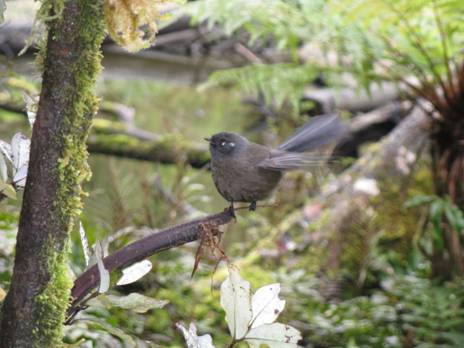
The birds are incredibly friendly, though rare.
A satellite phone is a MUST in NZ. Frankly I am astonished by the majority of folk here not having one. Other people squander $50,000+ on a fancy 4WD (frequently one unsuitable for off-road conditions!) and lots of other fancy gear (bizarre unwieldy, impractical camo clothing & etc) but cannot ‘afford’ even a 2nd hand sat. phone at maybe $600, which could so easily save their lives. Clearly their lives ARE worthless! The helicopter pilots are so good (and the ‘medevac’ so well organised) that half an hour after you call, you can be flying to hospital. I have had to call in a chopper for quite a number of folk over the years, including my wife! Be warned: they fly a few human bodies out of the Seaforth alone every year!

Looking South into the Seaforth from near Centre pass - you can see how difficult some of the going is. Imagine climbing Tripod Hill in the centre.
The SILENCE of the Fiordland bush is astonishing. There is so much moss: it covers every surface in a deep carpet and shrouds the tree-trunks completely; it is also SO wet, all sounds are muted save the ever-present sound of water, flowing, raining, dripping. Here we are used to the cacophony of the evening chorus and to birdsong as so constant a companion we are scarcely aware of it. In Fiordland the stoat and possum has reduced birdlife to a spectral presence, a brooding silence. Less than 1% of 1% remain. They never had anything like the avian richness we are used to (close enough to a thousand species); they never had a hundred. Most are so terribly rare you will never see them. The fantails and robins are the most common; they are even friendlier than they are here. They will alight on your foot or pack, or on a stem within inches of your face. It is so silent, I have been working up one side of a gully while my friend worked the other (as you do!) At one point I caught sight of him less than fifty yards away. Thinking to stop for a yarn, I blew as hard as I could on my Fox 40 whistle (louder than a 747 taking off!), but the moss and the wet just soaked the sound away. He could not hear me. If you hunt with someone else (I usually don’t – which may one day be my undoing, particularly in Fiordland – you only die once!), a radio is a good idea: I would invest in an Aloksak waterproof bag to carry it in.
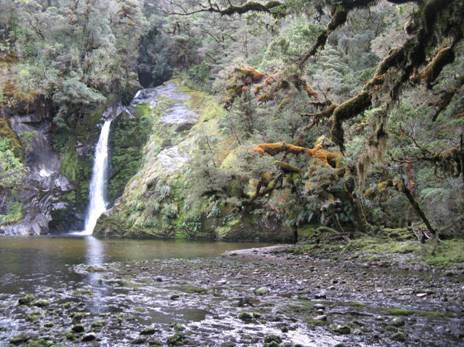
I spent all day (unsuccessfully) trying to get up past this waterfall.
It is the topography that draws one back there: the utterly superb views (especially in the Fiords), mountains which seem to have just come off some master’s brush…and the wonderful, magical medieval forest; utterly unlike anything we see here.
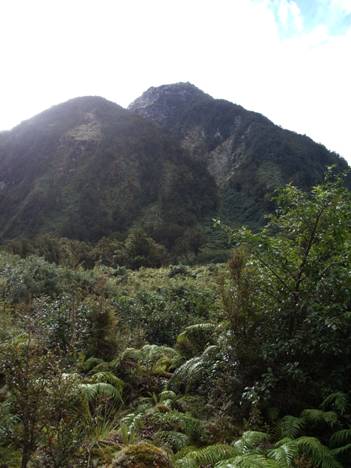
Regrowth fuschia on a giant slip, Kenneth Burn - a favourite moose food plant. An acre here had been moose trimmed last time I passed.
Of course there are the innumerable sandflies. You simply MUST be prepared for these: http://www.theultralighthiker.com/insects-can-ruin-a-camping-trip/ You will not believe how many there are. If you fly in somewhere (eg to Supper Cove - recommended), and have forgotten to apply the repellent (I specified) before you land, the minute you step out of the plane/chopper every bare piece of skin will turn instantly black with them. People are reputed to have killed themselves to end the torture of them. I can well believe it. They are as large as mosquitoes. My suggested remedies WORK. Many others do not. Be warned.
Regarding flying: if you have $10,000 to spare, spend it on flying around those fiords in a helicopter or float plane. You will never regret it. The views are just mind-blowing. One girl I had flown out with a badly injured knee said afterwards she was glad she had injured it or she would never have had such a flight. There are two main operators at Te Anau: Southern Lakes Helicopters (http://www.southernlakeshelicopters.co.nz/) and Wings and Water http://www.wingsandwater.co.nz/ . Both provide great service – but it is not cheap. The best way to economise is to share a ride. Often if you can wait a couple of days, they can organise to take you in or pick you up as a ‘back load’ - meaning that someone else is paying for the return journey.
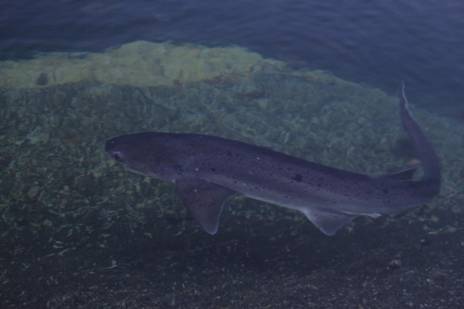
Seven Gilled Shark Supper Cove Hut.
The fishing in the Fiords is truly wonderful (and easy), so don’t forget at least a good handline, some basic tackle and some bait (it doesn’t matter what). You will very easily catch a ‘Spotty’ which you can cut up for bait for larger, better fish such as the delectable Blue Cod. There are many others: groper, barracuda, seven finned shark…For your first trip there, I wouldn’t plan to take a gun. It’s just an extra 3.5 kg to carry. Plan to do a lot of walking and looking around. If you still want to hunt there, do so on a subsequent trip – or just buy a better camera. They are much lighter, after all.

Good leatherwood/snowgrass fringes like this are a deer magnet.
I usually fly Melbourne-Queenstown (service not always available)
starts some time mid March usually, instead of
I usually stay in the backpackers or the caravan park in Te Anau for
the couple of nights I am not in the bush or staying in the DOC huts. There are
a couple of quite good supermarkets in Te Anau, a really good hunting/gun shop,
hardware, and a number of other businesses catering to hikers and tourists.
Naturally I usually have a meal in the Moose Bar! Even so, I usually take my
dehydrated food from
It is a bit of a fiddle, but you can get a permit to export and import your gun, obtain a NZ shooters’ licence, apply for a balloted area & etc. I have done so in the past, but these days I would just as soon hunt with a camera, or just sightsee.

That is my glasses case in a sandwich bag. Next to it is a very
large deer print – for comparison a
If you want to learn more, you will notice that I have posted about the Dusky Track and the South Coast Tracks (especially) a number of times over the years. Scroll back through my old posts and you will come across some more information. Have a great trip!
Books to read:
Ken Tustin: Wild Moose Chase
Max Curtis: Beyond the River's bend
Ray Tinsley: Call of the Moose
29/06/2015: Point
Smyth Coastal Reserve (


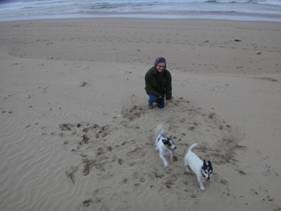

28/06/2015: Things you should not do with a moose. PS This is most unlikely to happen to me in Fiordland: https://www.youtube.com/watch?v=Kl4kJ9TGhJA
27/06/2015: Parrots: This afternoon on our walk (around the forestry plantations West of Yinnar) a huge flock of these beauties came in to roost on some young gums near us. There must have been 200-400 of them, so it was quite a spectacular display with their strange erratic flight and loud complex calls. There was an astonishing variety of vocalisations from them as they settled down for the night. Having read about Alex, the African Grey Parrot who clearly had the ability to form meaningful sentences in English – whilst no member of what we like to call ‘homo sapiens’ has ever learned to speak parrot at all, I began to wonder whether it is possible to ascertain whether their wonderfully varied sounds represent true language. It must be possible to devise a computer algorithm which will enable a computer to identify whether a pattern of sounds represents a language. You would start by playing it a large chunks of individual human languages to see if it can learn to discern a pattern which identifies ‘language’. As you add new languages, the algorithm must become more and more sensitive. If you slip in chunks of nonsense sounds every now and again to test it, eventually after you have fed it enough languages it will be able to identify something else as language: the songs of whales, say – or in this case the songs of the yellow-tailed black cockatoo.

Yellow-Tailed Black Cockatoo
26/06/2015: Pitching the Poncho: This information may save your life: Some folks did not find my instructions quite clear enough about this (here: http://www.theultralighthiker.com/sambar-deer-stalking-102/). These pictures may help. You can pitch a 5’ x 7’ nylon poncho as quite a good dry shelter (with a fire out the front). Tie the centre of one of the 7’ sides to a tree (or stick) about 3’ up, pin out the other 7’ side to the ground taut, bring the remaining two corners in as close as they will come to the tree, again as taut as they will go. Now you have an excellent three-sided waterproof shelter open only on the lee (fire) side and long enough to lie down in. You can heap it with leaf litter for a soft bed & insulation then wrap yourself in a space blanket in it. Some STRING (spectra cord) in your pack is always a good idea. You can even use one of those mylar emergency space blankets in lieu of the poncho. They are surprisingly strong; the wind will not catch and tear them pitched like this. You can roll a teaspoonful of earth into a ball the size of a marble and tie a noose around it, catching the material in the noose in order to guy/tie it out. If you have a knife you can whittle some emergency tent pegs, or tie the guys to rocks. Shown is a ‘standard’ 5’ x 7’ nylon poncho. This one has no hood you will notice. There is a secret about that you will learn from a future post (soon).

Just enough room for a man and his dog – an essential on a cold night!

Side view.
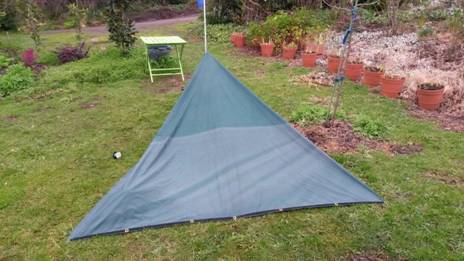
Rear view.

Make a noose
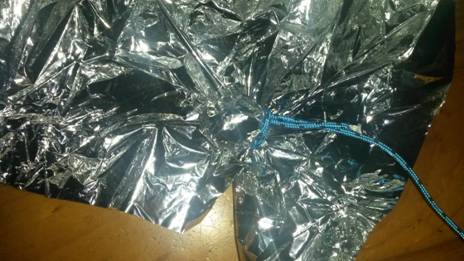
Catch the marble (macadamia) and the mylar in the noose. Tie out.
25/06/2015: Ah, Shotguns…Adler A110: Isn’t THIS nice? https://www.youtube.com/watch?v=GrIEnhWQrH0 Forget the ‘Bucket List’ Bring on the Birthday List - or the Xmas List: From A$749: http://nioa.net.au/news/latest-news/view/38/adler-lever-action-shotgun/latest-news & https://www.cleaverfirearms.com/Products.aspx?Category=Shotguns&Brand=231

24/06/2015: Terriblisation: I think this is the chiefest cause of human misery. Some folks just can’t help but cry, ‘Woe is me’ at the drop of every merest hat! There is no sense to this constant litany that all is terrible. An immense logical fallacy is involved: the external world is WHOLLY indifferent to us (and everyone else). IT is neither good nor bad, and entirely uncaring. Nor should it be. It is INANIMATE. It is not peopled by malevolent spirits or any other sort of boojums. It is the little wo/man riding in your head who is responsible for this mis-identification. It is he (or she) who discerns all as being terrible. It is your RESPONSE, to what is more like than not no calamity at all. Sometimes it IS, though. A young friend of mine posted yesterday on the ‘secret’ of his happiness. Judged by what the external world has ‘done’ to him, you might think he has no ‘right’ to be happy. The love of his life was wrenched terribly from him in her early twenties. He CHOOSES instead to be happy – AS SHE WOULD HAVE WANTED! She LOVED him, you see! Partly because of her, he has a duty to be happy. And so he is. To end the terriblisation, you have to make a choice, to slough off that despond, to pass it by, to not be rapt in it. LET IT PASS. Move on. So many joys await…DO try this: ‘Smile and the world smiles with you’. It may SOUND silly, but smiling MAKES you happy!
24/06/2015: Sambar Deer Stalking #102:
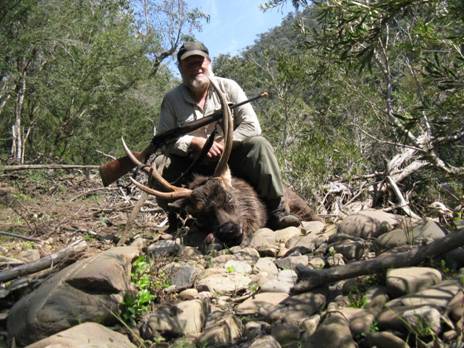
Having mastered the art of lighting a fire in terrible conditions (I hope you have: http://www.theultralighthiker.com/how-to-light-a-fire-in-the-wet/), and making a passable comfy shelter so you can enjoy your time in the bush, the next big step is mastering the art of walking. Too many men take overlong strides and land on their heels. I don’t know whether they seek to avoid seeming effeminate by taking over-small steps or what, but it plays hell with the back, feet, and the knees over time. More importantly it makes too much noise in the bush. There are many hunters I can still hear coming – and I am VERY deaf. Besides, there are many different gaits; you should try out some new ones even if you are mistaken for John Cleese’s ‘silly walks’ sketch. There are many lighter gaits which not only make much less noise, but eat up the miles with much less effort. Scientists have even measured the energy required by those African girls who carry large calabashes of water atop their heads and marvel at their energy efficiency. Watch them walk! Walking should be well-nigh effortless. A gliding. Why not try a rolling gait, a sliding gait? Watch people walk: particularly people who appear to effortlessly glide along: lightly built women and children can make a good study, but occasionally you will notice a very large person who seems to float along. Most people clomp hopelessly. Avoid that. You are probably walking badly. At least let those footfalls quieten. Even at 66 and somewhat overweight, I still sometimes walk 20, even thirty kilometres in a day in the bush (carrying a hiking pack). The further you walk, the more deer you will walk past! Remember that. And remember this: if you want to walk uphill without becoming breathless, breathe OUT longer than you breathe IN. Count, if you need to. Make those outward breaths 50% longer than the inward. You will find you can walk all the way to the top without stopping! I KNOW you find this hard to believe. It has something to do with the CO2/O2 exchange and partial pressures...I am not a scientist. Just try it! You will see that it works. After a while it can become automatic.
Different areas have quite different sambar deer. Long ago I
used to hunt a particularly steep locale, one of the many ‘Deep Creeks’ –
others eschewed it for the selfsame reason, which suited me fine. As I have
remarked before, ‘No company is better than bad company’. For whatever reason,
the deer there were built like hogs or
His mate took another monster in the same area around 1990 off
my outstanding foxhound, ‘Harpoon’. For one reason or another ‘George’ had to
camp in the bush that night with his trophy. You MAY need to do this too, so be
prepared (http://www.theultralighthiker.com/hunting-daypack/)
We found him about 8:00am the next morning sitting huddled by a miniature fire,
badly needing a drink: we offered him a choice between water and spirits – you
can guess which he took first! As I came over a ridge, I saw him part way up
the next sitting near a large log – but no sign of the deer. When I was twenty
yards away, still puzzled, I blurted out, ‘Where’s the deer, ‘George’?’ More
than laconically he gesticulated at the large log! I was astonished! Lying, it
was taller than my thigh! This giant stag had fallen side on to the ridge with
its legs facing uphill on an approx 15 degree incline. ‘George’ was only a
slight man (and had a twisted ankle) so I maybe figured that was why he had
been unable to turn it facing downhill so he could gut it properly. I have
always prided myself on being stronger than average. I had a BIG try and could
not budge it! It was as much as two of us could manage just to turn it over! It
was as large as a
I have spent more than one night out myself eg at c1300 metres up, the ground frozen, a cold wind blowing, snow lying all around, sitting on a thick piece of bark, wet woolen clothes wrapped in one of those pocket-sized ‘emergency space blankets’ in front of a fire which I had to tend on and off all night. It is not the best of camps, but it is utterly survivable. TIP: Nothing is warmer than long-johns – particularly woolen ones! Another TIP: You can pitch a 5’ x 7’ nylon poncho as quite a good dry shelter (with a fire out the front). Tie the centre of one of the 7’ sides to a tree (or stick) about 3’ up, pin out the other 7’ side to the ground taut, bring the remaining two corners in as close as they will come to the tree, again as taut as they will go. Now you have an excellent three-sided waterproof shelter open only on the lee (fire) side and long enough to lie down in. You can heap it with leaf litter for a soft bed & insulation then wrap yourself in a space blanket in it. Some STRING in your pack is always a good idea. I forgot to mention that here: http://www.theultralighthiker.com/hunting-daypack/ You can even use one of those mylar emergency space blankets in lieu of the poncho. They are surprisingly strong; the wind will not catch and tear them pitched like this. You can roll a teaspoonful of earth into a ball the size of a marble and tie a noose around it, catching the material in the noose in order to guy/tie it out. I hope that’s clear!
Here and there elsewhere you will come across truly giant
sambar…in the head of the Aberfeldy, in the
Harpoon was an excellent tricolour foxhound. During winter his muzzle was always completely naked. He would fly through blackberries like an eel completely disdaining pain, wearing all the hair off. We hunted sambar on Saturday and foxes on Sunday. You could never leave him home on Sunday even if his pads were worn quite off and he could barely lift his head with exhaustion from the day’s Herculean efforts. If you tried, he would climb a six foot electrified fence to come with you. He was a very keen hunter. I have clocked him at over 40kph on the flat. In an easy day he would run 70km. He had a manifold voice. All who heard it swore that there was a pack of hounds voicing – which was how I knew it was Harpoon. One morning he started a large stag at 7:00 am. He was on it by himself all day until another crew shot it about 3:30pm. A walking bail for several hours, but he would not give up! Quite a run. I knew they had; I heard the shot from atop a mountain miles away, and hied myself back to the car so I could cut them off - to tell the truth in case they decided they might just like to keep him. They too had heard him going up and down the river all day, miles from where I was, or could get to - and thought it was someone else’s pack. Many gullies in this area have blackberry thickets twelve foot high and more than a hundred yards across. The guy who shot the stag was quite loth to give the dog up, truth be told: he had fed it all his own tea, and would have shared his beer with it too only Harpoon was teetotal! He offered me $2,000 for him there and then – but I would not have parted with him for far more than that!
Once he put a deer up in Blue Jacket (a tributary of the
I know my great-grandfather William Jones hunted with hounds
in the Southern Highlands and
I hunted with hounds in our Victorian mountains for over thirty years until just a few years ago when my really bad back (now ‘fixed’) and increasing deafness (I could no longer hear the beagles we now had to have) meant I hardly ever went - which was unfair on the hounds, so I reluctantly gave the last beagles away to a young local hunter. Now I guess I am a stalker – at least a walker. I am keenest now in just being in the bush, marveling at its beauty and diversity, spying out its secret places, walking all day, making a quiet camp, and then the same next day…for often a week or ten days at a time – if I can get away. Oft times I take no rifle. Such solitude is what I call ‘civilisation’: I have scarce ever met anyone in such a place who was other than ‘civilised’. More often than not (it suits me) I meet no-one. He IS a nice man! And excellent company! None who travel so far have need of laws to bind or control them. They have their own resilience and rules of moral conduct and need no others. The worse the roads and tracks are, the more ‘civilised’ the folks are, I have found. The closer you get to better roads and more people, the more riff-raff there are; the greater a need for police, rules and regulations – this is what I think of as barbarism. You don’t have to agree! But I prefer the wild freedom of the mountains. One day you may stumble over my weathering bones under some tree fern on one of your walks. Leave them there. It will be where I wanted to be.
22/06/2015: FIORDLAND MOOSE: Contrary to popular
culture, these monsters are NOT a myth, but alive and well and living in
Fiordland. My own observations are that they are quite widely dispersed. This
is more than confirmed by Ken Tustin’s Herculean efforts over 40 years to spot
just ONE of them. During many trips along the Seaforth River (still probably
their ‘headquarters’) I have seen lots of moose sign, a glimpse of one once,
another calling once. I also noticed some sign much further East along the
South Coast Track: pretty clear (very old) browse between the Francis Burn and
the Percy Burn; even some possible sign as far East as the Waikoau River. A
moose was seen this far East
many years ago. Recent moose sign has been found as far North as
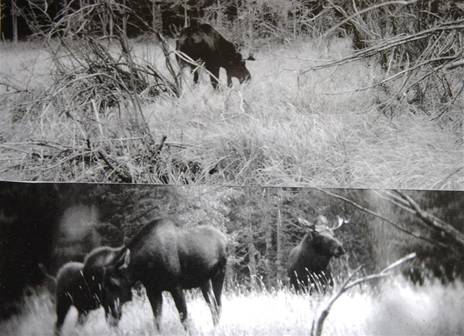
Fred Stewardson (78), of Hikurangi, in Northland, took the photographs on a hunting trip to Wet Jacket Arm in 1953.
21/06/2015: THE LAST REBELS: If THIS is true http://www.zerohedge.com/news/2015-06-19/last-rebels-25-things-we-did-kids-would-get-someone-arrested-today (and I suspect it IS) there is MUCH to be
done (removing countless
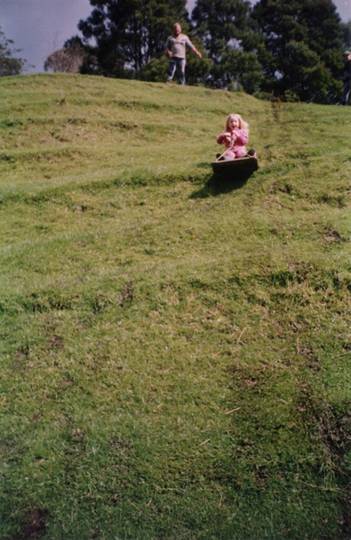
Grassboarding Sept 1993

Canoeing our flooded creek Sept 1993
20/06/2015: GOLDEN EYE MINI SPOTTING SCOPE: Some people have quizzed me about this. Old hunting friends probably still have one of these from me courtesy of Xmases long ago, but alas they have not been available for a number of years. Keep looking though. They are GREAT! As you can see, it is a high-quality mini monocular which actually fits in a used 35mm film canister (23.5 and 5 grams respectively!) If you don’t already own one, or can’t source a 2nd hand one from eBay or etc (unlikely), you may just have to console yourself with the much larger, heavier and possibly inferior products from other manufacturers. I usually do very little ‘glassing’ preferring to simply GO where my eyes can SEE. I think it is fairer on the deer too (as are iron sights). A rifle is a BIG advantage enough (but can give a quick and painless kill) without disadvantaging our noble quarry further with a panoply of tricky gadgets (infra-red sensors, high-powered optics, tracking collars, etc). Some places in the US restrict deer hunters to shotguns and solid slugs (mostly to protect other hunters it is true), but also making it impossible to take game which is further than, say fifty yards away. Bow hunters’ inestimable ethics are even fairer on the quarry than this. I think the INTENT of these restrictions are sound. Sometimes, however, my aging eyesight is not as good as it once was, which is when my tiny ‘Golden Eye’ comes out of my pack’s shoulder pouch to confirm what my eyesight is indicating: more usually than not for me it is some unusual bird or plant…http://www.atncorp.com/atn-golden-eye-archived-product
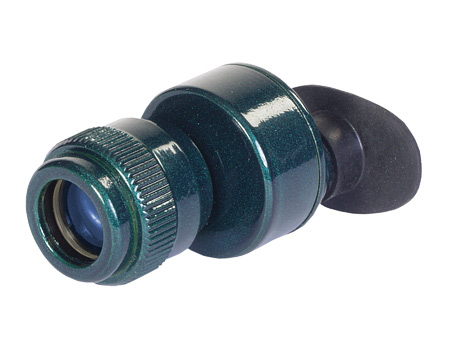
Golden Eye Mini Spottting Scope
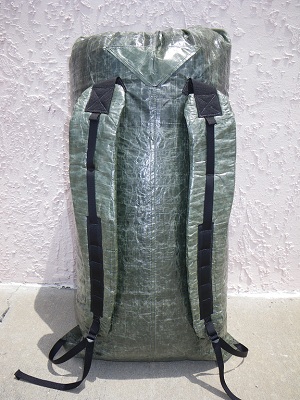
Zpacks Zero Backpack
19/06/2015: Hunting Daypack: Updated: Most everyone carries too much gear (whether multi-day hiking, or just as a day pack). After my first solo hike of the Dusky Track Fiordland in 2006 (http://www.theultralighthiker.com/dusky-track-adventures-1/), the first thing I did when I came home was THROW OUT my old hunting daypack. I had spent some time working out how to carry enough gear on (what was then) a 57 year old body to last me up to a week in very rugged country where sub-zero conditions, torrential rain, and being flooded in were reasonable likelihoods – whilst at the same time being safe and comfortable. In the end I started out carrying just over 13 kg which diminished by over half a kilo a day as I ate the food and drank the Bacardi 151! The same trip now would see me starting with less than 10kg. I was there last year. This year my wife and I (now 65) hiked the South Coast Track which I wholly recommend (http://www.theultralighthiker.com/fiordland-2014-2/ & following).
I had chosen Gossamer Gear’s G4 pack at 454 grams to carry all this. Nine years later I am still using it for longer hunting and canoeing trips. When I weighed my hunting daypack I found it to be 1.25 kg EMPTY. Out it went, and off I went with my scales looking for something MUCH lighter. At the time I could not find anything locally less than about 300 grams, but now I know there are a number of quite serviceable smaller packs which weigh much less than that. My current 52 litre (!) hiking pack from Joe Valesko at http://www.zpacks.com/backpacks/zero.shtml weighs 320 grams and has been with me MANY hundreds of rugged miles (eg across Tasmania, http://www.theultralighthiker.com/tasmanias-south-coast-track-hells-holiday/ etc) As you can see, Joe’s 27 litre Zero pack weighs 113 grams! That’s quite big enough for a day, probably overnight! You could also use it as a stow bag in your main pack, and take it out and use it for hunting when you had made camp. Here is another (waterproof) possibility: http://www.seatosummit.com.au/products/outdoor/ultrasil-dry-day-pack/ (Joe also has a waterproof model). That taken care of, what should you take with you IN your day pack?
Clothes: Raincoat. I have one from zpacks which weighs 130 grams, is wonderfully waterproof and breathable. Warm Jacket: a synthetic insulated jacket is a MUST in wet bush in the winter months; down is GREAT – what I use hiking – but riskier when it is VERY wet and cold, as in a Gippsland winter. A Montbell Thermawrap vest (188 grams) and jacket (240 grams) would be hard to beat along with an eg Icebreaker merino wool beanie (35 grms). A peaked cap is a MUST. You CAN buy these in blaze orange (a good idea if you venture where there are likely to be others – I try not to). Really important if you are looking towards the rising or setting sun.
Should you be prepared to sleep out? I think so. It happens sometimes to everyone! A very lightweight shelter and emergency space blanket bag is a good idea. You CAN make a mylar space blanket into a temporary shelter if you carry a bit of string – I always carry a small dental floss for 1st Aid and repairs: http://www.theultralighthiker.com/rope-dont-leave-home-without-it/) I will cover this in a future post about my Home-made Poncho-Tarp. If you can’t light a fire, something like a Blizzard Bag (http://www.blizzardsurvival.com/product.php/100/blizzard-survival-bag) might live in your daypack, but at approx 385 grams, you might just as well carry your down sleeping bag and hiking mat (See http://www.finnsheep.com/HIKING.htm) – perhaps 397 + 320 grams. Mind you, the ‘Blizzard’ can just live permanently in your pack. It will never get wet, will keep you safe even if the temperature falls to below zero, and IS waterproof. Includes a hood, so no shelter needed. Adventure Medical Kits have some other great options.
You might notice that my weights 113 +240 +188 +397 +320 + 35 = 1293 grams are now almost exactly the same as my old EMPTY daypack. I need only to throw in an ultralight shelter such as this at 113 grams (http://www.zpacks.com/shelter/hexamid_pocket.shtml) and I am good to stay the night in sub zero conditions, wind and rain for 1406 grams, the equivalent of my old pack with a single muesli bar in it!
The most important thing you will EVER learn is HOW to light a fire when conditions are really dreadful. If you can’t do this, you really shouldn’t be out on the woods alone! See my advice about that here: http://www.finnsheep.com/HIKING.htm & here: http://www.theultralighthiker.com/how-to-light-a-fire-in-the-wet/ You will need (another) mini Bic lighter in a snap lock bag in your daypack with some bicycle inner tube as a fire starter – I assume you already have a mini Bic in your pocket for testing wind direction – but sometimes it drops out of your pocket, so another is just good insurance.
I ASSUME you will already have a knife so you can split wood and shave the inner dry wood to make excelsior, the very best fire starter. No doubt it has a secondary purpose for butchering/caping work. About the lightest suitable knife is this Ka-Bar: http://www.theultralighthiker.com/carry-a-knife/ – under 30 grams including sheath. Outdoor Edge’s Razor Blaze replaceable blade lock-blade folder (143 grams inc six spare blades) is a useful choice if you do much butchery. A bone saw can be useful (antlers). I usually carry a length of ‘embryo wire’ available from veterinary suppliers. You just need to knot a length to two short pieces of wood (as handles) then you can saw someone’s head in half in a few seconds!
You really should have a 1st Aid Kit. I have already mentioned the dental floss! A needle should accompany it – if only for sewing up your ripped trousers – I have also used it for sewing up ripped dogs; it would be equally useful for sewing up a ripped me! You CAN go overboard here. By the same token, you may carry, eg an elastic bandage or a sling (I have) in your pack for years before you really need them (in this case because my wife had dislocated her shoulder in a really REMOTE place!) Some Panadeine Forte and anti-inflammatories will enable you to keep on moving when otherwise it would be very difficult. I recommend some Imodium: in the event of diarrhoea it is invaluable! Blister pads: also essential. Some bandaging (Band Aids, Elastoplast) and Leucotape. Likewise, Small quantity of iodine (sealed in a drinking tube); anti-fungal cream (Daktarin) same: a really bad sudden case in the crotch WILL be agony! Repellent – same. Mylanata Rolltabs in case of indigestion.
Food: Probably the best thing to have in your daypack, because
they will remain fresh for weeks and need no cooking are a full day’s ration of
Carmen’s low GI Muesli bars (or like). If you are going to cook something, this
is a great cup: http://www.traildesigns.com/cookware/vargo-450ml-travel-titanium-mug-eca355
Other items: Whistle: I have one on my chest band. Small
waterproof camera: I use a Sony Cyber Shot DSC-TX200V (18 megapixels + 5x zoom.
Weight 120 grams. Phone: Samsung GalaxyS4 Mini + Waterproof case: (maps, GPS,
music, ereader, fair camera: 150 grams including long-life battery 150% and
case. Platypus bottle 600 ml (20 grams) + water (600 grams). Emergency dog
leash (2 mm spectra + zpacks carabiner 9 grams). Fenix AAA torch (eg LD02/HL10
+ Elastic cord 2 X O-rings+ micro cord lock – to convert it to a head torch + 1
Photon Freedom emergency torch 7 grams) plus three Enerloop batteries
altogether (20 – torch + 34.5 grams – batteries). Pocket Pack Kleenex Tissues
25 grams – enough for three days if you are careful! CB Radio (if you hunt with
a mate) eg GME TX670 114 grams plus eg 6x Lithium batteries (14.5 ea) NB AA
PS: If you have been adding all this up you will see that the Daypack and all its essentials to survival (plus an enjoyable day or two hunting) still weighs LESS THAN 2.5 KG! If you don’t own a gram Kitchen scales, BUY ONE NOW! How much does YOUR daypack weigh?
18/06/2015: ONE POLE TYVEK TIPI: The ‘skin’ of a tipi is very nearly a semicircle. If it is a ‘normal’ 60 degree (cone) tipi, then (apart from a slight overlap for keeping out drafts), that’s exactly what it is. A semicircle with radius ‘R’ (eg 10’ – the width of the widest roll of Tyvek) will make a tipi which is approximately 10’ wide at the base. (C = 2xPixR - divided by 2 for a semicircle; D= C/Pi, so C = 2x3x10 = 60/2=30/3=10 – taking Pi as approx ‘3’). So, any width of fabric will make a tipi which has a diameter the same as its width. You will need a piece that is twice as long as its width to make your tipi. If you cut out a little more of a circle than a semicircle, you will get a tipi which has a less acute angle than 60 degrees (say 45 degrees) and which is correspondingly wider (and shorter). (You would need to stick this piece on with Tyvek tape). You can work out how wide by dividing the piece’s circumferential length by 3. This is close enough. A 10’ wide tipi is quite a handy size, (will obviously sleep at least four people) but is hard to erect unless you tie the ‘skin’ to the pole first (otherwise you can’t reach). If you are using only one pole you will need someone to hold the pole whilst you peg the sides down. That’s why folk normally used 3 or more poles (usually six) tied together at the top where you attached the skin’. You can cut the circular edge into eg six equal straight lines (a hexagon) if you like, and it will still pitch flush to the ground, and give better angles to the wind. You can make such a tipi out of a readily available blue poly tarp for less than $20 if you want (I have). If you are going to have a fire in your tipi, you must beware of carbon monoxide. You need airflow in at the bottom and out at the top. Any open fire is almost IMPOSSSIBLY smoky. A chimney is a great idea. Titanium Goat (http://www.titaniumgoat.com/cstove.html) has lightweight (titanium) stoves and chimneys for just this purpose. The chimney will probably NOT be hot enough to melt the Tyvek at the top, but if you are worried you can wrap that section of pipe with some fibreglass cloth or etc. As you will see at his website, he also makes really lovely tipi tents out of silnylon (pictured). This is something like what your Tyvek tipi will look like, (sans the cost!) Such an arrangement would suit car, motorcycle or horse based camping better than backpacking, but maybe you and your friends are quite strong!
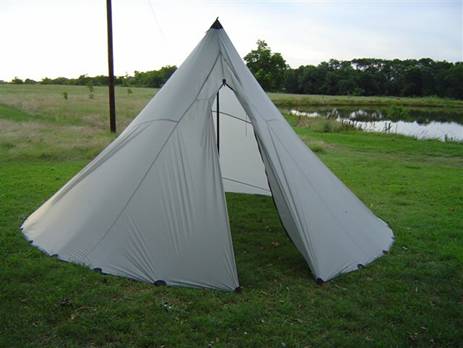
Titanium Goat Vertex Tent
Here it is with a stove:

17/06/2015: Tyvek Twin Fire Shelter: I have completed this design today. I know it will make a wonderfully comfy shelter for 2-3 people. The photos are of the prototype. The tent is 6’ (1.8m) high at the front. Some finishing work and bush-testing is needed, but if you are keen to make your own and try it out, here goes: Again, (as with the single: http://www.theultralighthiker.com/tyvek-solo-fire-shelter/) it can be cut from a single piece of Tyvek three metres wide, so no sewing is necessary. You will have to attach a floor (if you want one, or ground sheets if you do not. You should have plenty of scraps of Tyvek left by now! If you are not sewing, I recommend the tarp holders pictured (available from ‘Aussie Disposals’ (or elsewhere). There are only about three types of tarp holders which actually WORK (all button type). These are probably the best but not the lightest. The large disc and rubber band ensures the tarp is not damaged. You will also need a roll of 2” Tyvek Tape probably available from the same folk you bought the Tyvek from. You can use it for making a hem (taping completely around a ¾” hem will make a nice strong one). You can also use it for reinforcing the tie out points (eg both sides where you are going to attach the tarp holders. Or, learn to sew (in this case hems, Tyvek reinforcing patches plus webbing tie-outs). Again, the two guys ropes at the front meet the ground about where the wings/flaps do when they are in fully open mode, so there is nothing to trip over. You might want to include a few of Joe Valesko’s stick-on tie outs here and there perhaps to keep a side pulled out, so here is the link again (http://www.zpacks.com/large_image.shtml?accessories/tape/stick_on_loop_clear_l.jpg) The basic pattern will give you the option of making three slightly different configurations: You can make a shelter with a square windward end, or one which tapers to a point, you can make a shelter which is approx 4’ (1.2m) wide at the windward end and 8’ (2.4m) at the open end, or a slightly smaller and lighter one which is approx 3’ (.9m) wide at the windward en and 7’ (2.1) wide at the open end. I found that if I tapered it at the windward end, and again slightly at the sides, I achieved an octagonal shaped tent with just that many tight corners ready to cut the wind. PS: Post will be updated with diagrams and instructions ASAP.
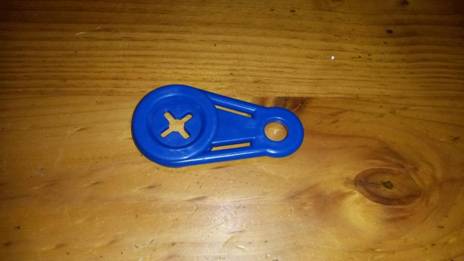
Best tarp holder
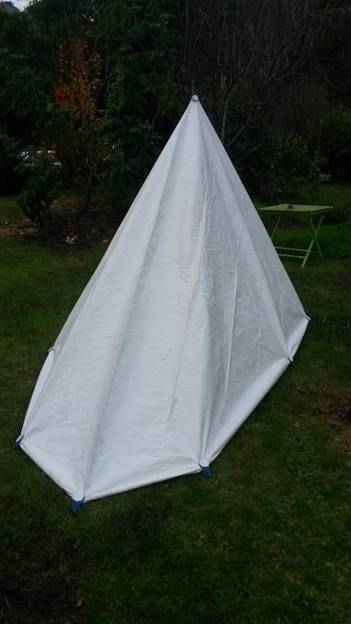
Windward South View

Windward North View
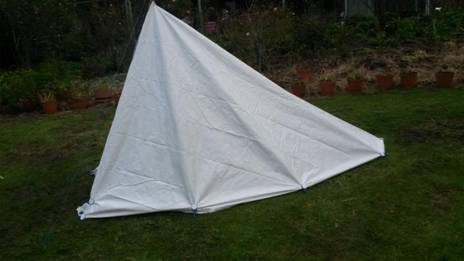
North Side View
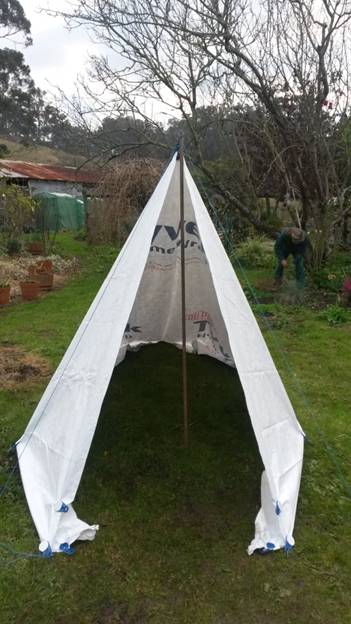
Partially Closed
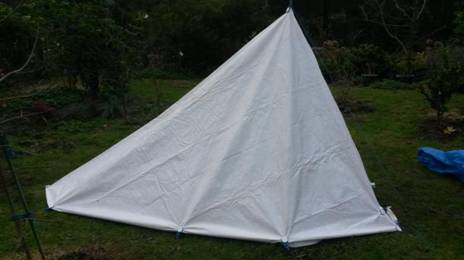
South Side View

Fully Closed

Fully Open
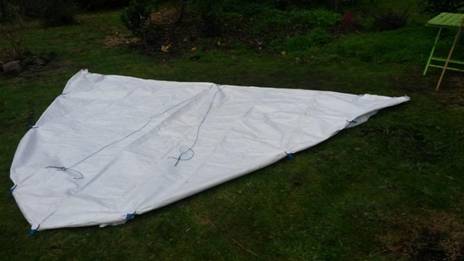
Tarp Top View
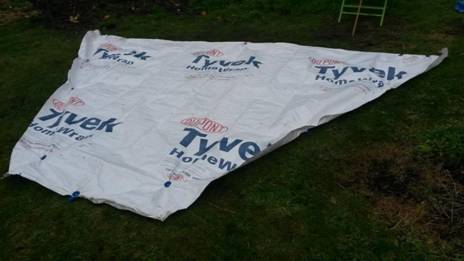
Tarp Bottom View
16/06/2015: ACROSS THE DIVIDE: Whatever you
political persuasion, surely you cannot help but be moved for the poor
creatures of the
16/06/2015: The Ultimate Survival Gun: My first one
of these was my Armalite AR-7 .22 calibre. What a beautiful little gun it is:
the way it folded up into its own stock with its 8 shot magazine is just
excellent. At 1100 grams (2.5 pounds) and 400 mm (16”) long it is ideal for
backpacking. Unfortunately as it is a semi-auto, John Howard/Port Arthur has
made it unusable, as it is now a Class C ‘weapon’ which I can only use around
the farm. How times change! I was down in

AR-7 Assembled

AR-7 Take Down

Rutalocura .22 Magnum 'Pack Rifle'
16/06/2015: It makes you wonder whether these things can loop the loop? Hopefully not with THIS 'little black duck' aboard: http://www.news.com.au/travel/watch-this-boeing-dreamliner-in-incredible-near-vertical-takeoff/story-e6frfq7r-1227396679878
15/06/2015: DIY Hiking Gear: I guess I started doing this before I was 13 (or so). One of my first projects was (what is NOW called – there WAS no name, or THING then) a bivy bag which I sewed out of PU coated 2oz green ripstop nylon as I didn’t have a tent, and my (kapok, Yes! – how many today know what THAT was – or could recognise a kapok tree?) sleeping bag and any available tent would not have both fitted in my A-frame pack! Quite some years I didn’t have a tent. One of my first was a sort of one boy GI ‘PUP Tent’ something like those ex-WW2 affairs, also in PU ripstop mayhap called a ‘Rancho Poncho’. First few times I took Della camping (on my Honda CB175 motorbike!) we just slept under the stars with maybe a nylon poncho over us to ward off heavy dew. I have slept under a poncho many times since then. Finally we bought a two-person hiking tent, the forerunner of many. Now, in old age, we are back to some sort of tarps again such as THIS homemade one: (http://www.theultralighthiker.com/tyvek-solo-fire-shelter/) I posted about the other day. Instructions are being updated. Check back. Others 2 + person ones are in preparation. There IS a great deal of pleasure and satisfaction to be gained in MAKING and USING your own gear, so we do. Here and there in these pages you will find other suggestions for homemade gear; I have had a lot of fun making various hiking stoves such as you might find here: http://zenstoves.net/ or in earlier posts. We have made quite a lot of clothing over the years, as well as hammocks, hammock insulators, quilts, tarps (obviously), tents, a variety of bags, pouches, pockets, leashes, belts, harnesses, ponchos, fishing gear…all sorts of things. For example, you can make a pot which weighs a couple of grams from a beer can which you can boil with an esbit on a stand made from some 1 cm mesh. A wide rubber band will prevent you burning your mouth when you drink your coffee. Quest Outfitters (http://www.questoutfitters.com/ http://thru-hiker.com/materials/index.php) have some very good patterns (and kits) and are very helpful and expeditious in sending materials. For example, their ‘Bilgy Tarp Tent’ looks quite interesting. I will adapt some of its features for a new two person ‘fire shelter’. Obviously it would be much lighter in cuben, or more fireproof in Tyvek. Their G4 pack pattern and kit are excellent. The G4 was my first ultralight pack, a brilliant concept (approx 450 grams & 60 litres!) from Gossamer Gear founder Glenn van Peski – one I still use when I am packrafting, as it is a HUGE pack. Della sewed two webbing tubes into it vertically on each side into which we slipped carbon fibre arrow shafts to simulate a pack frame for weight distribution. This added less than 40 grams and worked quite wonderfully. http://gossamergear.com/ have some GREAT ultralight gear (and an interesting website - eg see ‘Tips & Tricks). I have spent quite a few dollars with them over the years. Their featured product this month is an 18 gram trowel. Well, if you need one! Their carbon fibre hiking poles are wonderful! Ray Jardine (http://www.rayjardine.com/) pretty much ‘invented ‘ the ultralight pack (and concept). He is known as the ‘father’ of ultralight. He has a kit for one, and an excellent tarp. I still use his ‘Bomber’ hat (30 grams) every time it’s a really cold night. His quilt kit was an original great idea too. His website details his many amazing adventures, including skiing to the South Pole when he was over 60! He also sells some of his own excellent hiking books. Ray Garlington was one of the first to devise a ‘wood gasification’ stove for backpacking: http://web.archive.org/web/20130820032105/http://www.garlington.biz/Ray/WoodGasStove/ I have spent many hours trying to make this work. Another guy perfected it with his ‘Bushbuddy’ stove: http://bushbuddy.ca/ (well worth the C$120) - or you can make your own, eg http://www.instructables.com/id/Woodgas-Can-Stove/ or http://www.treehugger.com/clean-technology/build-ultra-efficient-diy-wood-gasifier-backpacking.html A 150 gram stove which does not require any fuel (other than what you find on the trail) is a great idea. This guy has a lighter - 86 grams - (and more expensive) one: http://www.suluk46.com/products.html Here is another site which has some interesting plans and kits: http://www.backpacking.net/makegear.html, likewise this one: http://jasonklass.blogspot.com.au/search/label/DIY%20Backpacking%20Gear There are many others, but these will be enough to get you started. Have FUN!
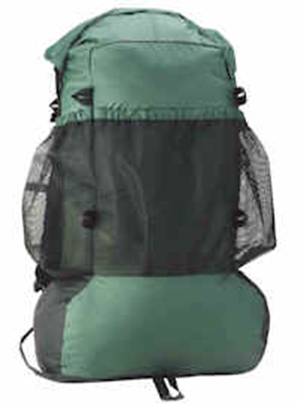
G4 Ultralight Backpack
14/06/2015: Cuben Stuff Sacks: Weigh less than HALF what snap-lock bags do (and beat everything else hands down), eg a camera pouch weighs 1.6 grams! Given that you need to sort your pack gear some way, you probably have a dozen or more bags which could be replaced with these beauties – probably saving you the equivalent of ½ to a day’s food (or three days’ booze if you drink Bacardi 151 when hiking!) You can buy them here: http://www.zpacks.com/accessories/stuff_sacks.shtml or you can make your own having bought the material (and patterns eg) here: http://www.questoutfitters.com/ You don’t need to be able to sew – you can make them just with cuben fibre and cuben tape (see yesterday’s post – available both sites above).
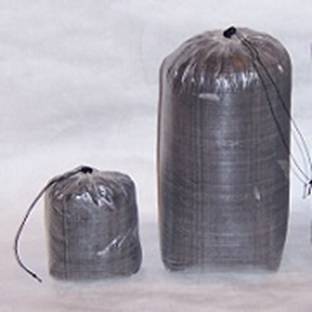
13/06/2015: Cuben tape: This stuff is WONDERFUL. First, there is its obvious utility in joining/repairing cuben fibre. There is a single-sided and a double sided version – and it comes in various widths). You normally use it to make joins to create a wider tarp, or to make ‘no-sew’ cuben fibre stuff sacks. Where it really comes into its own is for repairs. This stuff sticks (well nigh invisibly) to all sorts of things and makes excellent waterproof repairs. My house and camping equipment have bits of it stuck in all sorts of unlikely places. It repairs most ripped raincoats and tents very well (Check first). Packrafts too. Where I have found it really wins out is in repairing leaks in Thermarest Neoair pads. These guys are SO light they are fairly easy to puncture. Mostly I get minute thistle holes in mine which take ages to let the pad down (in the middle of the night!). They also suffer from my habit of using them for padded insulated floors in our packrafts. Jumping in and out of them at portages drives all sorts of nasties into their delicate fabric. Spot has excelled himself here too. In his puppyhood he managed to drag one pad out through the doggie door onto the lawn where he had quite a lot of leisure time CHEWING it. THAT pad looks somewhat like Kevin Rudd after a VERY bad morning’s shaving. It doesn’t QUITE have more tape than pad, but you can certainly tell that it has been repaired. The great thing about cuben tape for repairing air mats is that it works INSTANTLY. The proprietary Thermarest repair kits (in my experience) work slowly and poorly at best – be WARNED!

13/06/2015: Winter Fruit Surprises: Kiwano (African Horned Melon). Usually this time of the year, it is citrus & guava in the garden, and not much else. I was quite surprised yesterday when Della found some of these guys lying ripe on the back slope where they had sprung up as weeds from the sugar cane mulch we spread to keep it moist last summer. They have a refreshing taste – something like a sweet cucumber. I WILL be saving some seeds to plant them again next year. Good groundcover too.

12/06/2015: Sambar Deer Stalking 101:
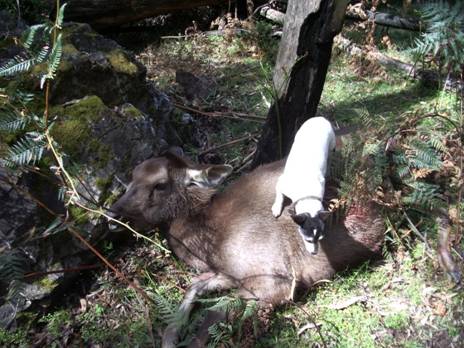
Tiny loves deer - she likes them cut up a little smaller though.
I have hunted sambar deer for over 30 years in the Gippsland mountains. Mostly I did it because it was fun and an excuse for a day out in the bush which I love. I still prefer lamb, and having been a sheep farmer for just as long, I always had plenty on hand. These days I rarely shoot the deer I see, and I see many – more than half a dozen a day usually, AND I hardly ever bother any more to hunt the mornings and evenings. If I did, I would see over a dozen a day I guess! I prefer to get where I am going mid afternoon, make camp, enjoy a fire, a good book, perhaps some music, a lie in mornings…Anyway, it is good to make it to camp, get the tent pitched, collect the wood, lay the fire (unless it’s raining - in which case the kindling is IN the tent), perhaps hang your pack out of reach of dingoes, then have the last 1-2 hours of daylight for hunting the river bottoms; that is when the deer will be coming down to feed (and drink). Then hunt the FIRST hour or two of daylight before the deer creep off to bed.
Long before you venture into the bush to hunt or DO anything, first you need to know how to SURVIVE in the bush, how to not STAY lost, how to make a shelter and light a fire in the rain…how to be comfortable there. You might benefit from a perusal of my many thoughts on this here: http://www.finnsheep.com/HIKING.htm I will soon, as often promised, get up a GEAR LIST, but I am sure you an guess at most of it in the above..
First you need to go where there are lots of deer.
Deer are lazy just like everyone else, and don't want to travel too far for a
feed, so there will be lots of them where the feed is best. The feed is best
just where it is best for normal livestock: creek & river flats and improved
pasture on private land - or what was once private land (eg the Wonnangatta
National Park), the east side of North facing gullies
&etc. The bush ABOVE clear paddocks ALWAYS has bedded deer. Often there is
a 4WD track in turn above it. Very handy. Deer love
areas around water supply catchment dams for the same reason (eg Thomson,
Deer will almost invariably come by and make all
sorts of noises within a chain of your camp (if you are alone/quiet) during the
night. You could easily shoot them even in the light of the Fenix LD01 AAA
torch I wrote about the other day, as it is enough to light up their eyes. I
never shoot at night. First, you don’t really know what you are shooting at,
particularly if you miss. Second, if you take a shot and wound an animal, it
will suffer horribly before you can possibly locate it (unlikely). I once found
a spiker whose lower jaw had been shot clean off by spotlighters, and which had
suffered dreadfully for many days. If you want
to drive around at night to OBSERVE deer, that is another matter. The
So, go where there are lots of deer. It is best if the bush is not too thick. You can also pick this up from Google Earth. Sometimes there are fire tracks not shown on Victopo maps, or old closed tracks which give access to less frequented country. I prefer NOT to run into other folks when hunting/hiking, so I usually hunt mid-week now, because I can. It is good if you can SEE through the bush. You need to TRAIN yourself to look THROUGH it anyway. Your eyes/brain naturally want to focus on the nearest objects which means you are NOT seeing the deer through the trees; you are just seeing the trees. You can practice looking through the cracks in paling fences as you walk around the town streets, or looking through hedges as you drive along until you are used to focusing on the things that are on the other side of the screen of vegetation. You have to look INTO the distance. It is a trick worth learning. Then too you will be better able to see the lie of the land, which is supremely important in finding your way and assessing a deer’s likely path. I can guarantee you that the critters which live in the bush ALWAYS do this – which is why they (almost) always see you first unless you are moving VERY SLOWLY! Really thick bush is a pain anyway, and it will be harder to shoot a deer in it – unless you are hound hunting perhaps. When a deer honks at you but doesn’t run off is an excellent opportunity to test your ability to see THROUGH the bush. You can guarantee it is watching you, and will respond to your every movement, so its eyes (at least) MUST be visible to you. Practice finding those eyes; maybe an ear: they will be behind vegetation perhaps, but are in clear view. Deer WILL stand for an hour!
Some folks have become ‘ambush predators’. They place camo cameras on trees near game trails, drinking spots and wallows, record the deer’s movements, then lie up in wait for them. Others have high powered scopes and ‘glass’ the opposite sides of valleys (up to a kilometre away) and shoot their deer long distance. I would find both these methods boring and unfair. I prefer to travel past lots of deer (and other things). There is always something new to see and learn in the bush (new things which are blue for example, in a satin bird’s bower). I prefer to be moving. The ‘Theory of Searches’ notwithstanding, (see Robert Sheckley’s ‘Mindswap’), you WILL see more deer (where there are lots of deer), if you walk past more deer. You will also learn where they bed, and especially where they go in really bad weather. Important knowledge for middle of the day hunting and when it is cold and rainy but you still want to be ‘up the bush’. Tip: Learn where there are ‘perched gullies’. In undisturbed areas, they often don’t travel far from where they feed. Often no more than 200 metres UPHILL. They also like to sleep in spots where YOU would - if you had to live in the bush and had no man-made shelter, or protection from (potential) predators. They always have a view of their back trail; they like some cover but not so much they can’t see through it - particularly when they are lying down. Hunt the faces during the day and the bottoms at the ends of the day. Stags particularly can still be about near their thrashing places and wallows in the middle of the day - especially IF they are in rut. This is a smell you need to learn to recognise - as is the difference between stag and hind smell. Smell is VERY important, especially if like me you are very nearly deaf!
Mind you, sambar don’t make a lot of noise. If they are moving along normally, you are unlikely to hear them, save for the very occasional snapped twig or chink of stone, particularly when they are crossing a stream. Rarely you will hear them wallowing, thrashing. VERY rarely fighting. Or the preludes to fighting: howls very like an old hound. Sometime you will be challenged by a stag with such a call. Do NOT think it is a hound. A lost hound SELDOM howls. You can howl and they will howl back. You can spend an entertaining hour at this play. They have their warning honk, not unlike a car horn, and there are many small sounds passed between hinds and fawns which you will only hear when they are at play coming down to graze in the early evening – and if you are VERY close. Being deaf is not so much of a disadvantage in sambar hunting.
Learn to ‘read’ deer sign: droppings, browse, rubs, thrashing, scrapes, preaching trees, combat zones, wallows, towel trees, drinking spots, tracks, paths, bedding spots…You need to learn not only how fresh it is but what it tells you about the deer’s life. Following deer tracks can teach you much, though you are not specially likely to shoot a deer whose tracks you are following (unless it is VERY deep asleep (sometimes) or has little experience (eg of hunters). Concentrating on following the tracks will almost certainly mean you miss seeing the deer which made them (Keep looking THROUGH the bush), but you WILL learn much about its habits, how fast it is travelling, how BIG it is, (I followed a stag - my daughter saw it - on the Ben Cruachan Creek years ago whose STRIDE was MUCH longer than mine), how it travels the terrain, where it beds, where its nursery areas are, what it is doing (browsing, mating, fighting…) This will allow you to later PREDICT where particular (types) of deer are likely to be. During the day you are more likely to get a shot at them by dropping in from the side or above than from below. Learn to walk QUIETLY, but do not stress too much: they are used to things moving about in the bush – and being able to run away from them. Wallows are often found on flats about a chain inside and upstream river bends. Antlers can frequently be ‘fished’ from them. They mostly smell of STAG. Fix the scent in your mind, and pay attention when you next smell it. Scent (that humans can smell) doesn’t carry far – less than 100 metres. Smell THAT: there is a stag in SIGHT, maybe. Unfortunately they DO leave their smell on other things.
Never carry a loaded gun. The breach should always be empty. Forget so-called ‘safety catches’. More people have been shot because of them than triggers! I always use a lever action rifle because I can load it as I swing it to my shoulder. You are much more likely to shoot a running deer than a standing one. I always use iron sights because most shots are close and because they remain accurate just about whatever happens to your gun, and it is EASY to see the deer over them. You ARE likely to drop your gun on rocks some time. Everyone falls over. A dropped loaded gun can easily go off! Make SURE it IS a deer before you shoot. Early days EVERYTHING looks like a deer (stumps, anthills, friends...) A lever action also allows a quick follow-up shot should it be necessary. Theoretically, it should not – but I have put NINE .30-06 rounds through the chest of a sambar stag at close range only to have it still standing there looking at me. I was out of ammo by then, so decided to wrestle it to the ground and cut its throat. I am here: it IS possible to do this – but DON’T! These days I use a .308 because it is lighter but will still make a deer just as satisfactorily dead as say a MUCH heavier .45-70. My current gun is a take-down. This is handy when you don’t want to draw attention to yourself as a hunter, and when you need to put it in your pack because you are tired and want to use your hiking poles (I AM old!), or you want to put it in a dry-bag because you are canoeing: LOTS of good deer country can be accessed by canoe. You can take lots of supplies, stay quite a while in luxury – and it is easy to get the meat out! Oh, and there are fish, which I prefer to eat.
I NEVER wear camo. I can pretty much tell that someone has been (or is at) ‘my’ hunting patch wearing camo from the behaviour of the deer. People wearing camo really SPOOK the deer. They will take days to return to their normal habits. This has NOTHING to do with the camo hunters shooting deer – they seldom do. Other deer do not run away because you have just shot a deer. You can shoot a deer here, then walk 300 metres and shoot another one. I surmise it is the SPOOKINESS to the deer of seeing the forest WALKING. Anyway, they seem always to make themselves a lot scarcer than if you are wearing ordinary clothes so that the deer can figure out what you are, ie some kind of animal like them. Anyway, most of that camo hunting gear is just simply awful. It is (apart from being hideously expensive) typically heavy, sweaty, not at all waterproof, soaks up huge amounts of water, completely impossible to wash and dry in the field, cold, flammable, uncomfortable…Lightweight hiking gear is much better – only avoid blue as the only colour deer are supposed to be able to see is blue which apparently sort of ‘glows’ for them. Deer will NEVER see you when you are standing still. You can stand there all day; they will pass within yards of you – just spook when they whiff you! Most other wild animals are the same. It is laughably easy to creep up on a wallaby and catch it by the tail, for example. Just be still and bent over when they look at you.
Nowadays (it is legal) I always take (at least one of) my Jack Russells. They are better company than most people; they are smart as a whip; they eat little and give much in return. They are easy to carry across rivers on your backpack. They require a VERY small sleeping bag and mat. They know long before you do that a deer is: just there. Deer are not inclined to run from them, but ARE fascinated by them – which means they are ignoring YOU! They enjoy you shooting a WHOLE deer just for them! Once you have done it a few times, you will easily be able to do it a few more. Forget about quietly sitting watching family groups of deer in the late afternoon with them around though. They WILL give the game away so that the deer behave differently. Deer will usually bail instantly for a Jack Russell when they would run from any other dog. Some (this one) snore!
To be continued…
11/06/2015: SMITHSONIAN MULTI-TOOL circa 1880: Even contains a PISTOL! Might be a little hard to lug around though. If you hanker to be a an ultralight hiker, you might decide to trim this down a little but, but the pistol could be handy for scaring bears – and other varmints on the trail, or to harvest some critter for the pot: http://gearjunkie.com/the-mother-of-multitools
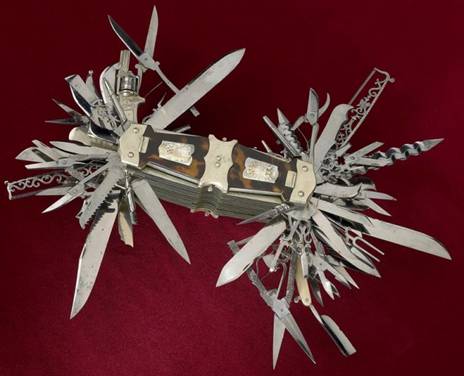
Made around 1880 in
10/06/2015: Dinner Expedition Planning at Jeeralang: That's a map of the Mitchell on Matt's phone, the (white) Tyvek tent between me and Spot, the Brasslite stove sitting on an upturned plastic bowl (a 19 gram leveling aid I am trying out) next to the box of Kiwifruit, my camo vest on the back of the chair, two magnifying glasses we have been examining a click beetle chrysalis with (under the other upturned orange bowl) - what a rustic scene! It was NOT staged! Update: The plastic bowl wasn’t sufficiently heat-resistant for the metho burner – suggest a titanium Sierra cup (50 grams) instead eg from Trail Designs. Also available with a folding handle (64 grams). (Combine with ‘Hot Lips’ 16/03/2015 for added comfort.) http://www.traildesigns.com/cookware/evernew-titanium-sierra-cup-eby151
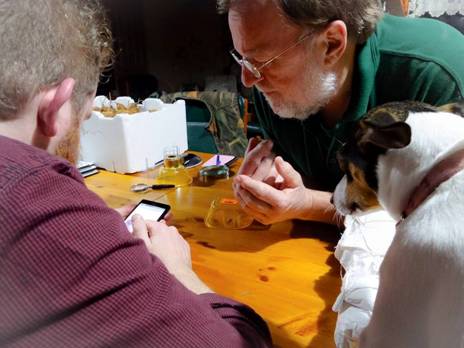
Merrin Caption: The three boys planning their next camping / hunting trip around the dining table.
10/06/2015: DEHYDRATED WATER: Short of water: Suck a Pebble. This was my dad’s advice when I was a youngster. I thought at the time it was just a trick to prevent a dry mouth; something like chewing gum, but it has a more important feature: it prevents you breathing out through your mouth, THUS enormously reducing respiration water loss. It ranks with travelling by night and resting by day as prime water conservation strategies. The Fremen of Frank Herbert’s ‘Dune’ were entire experts at this, - and at water harvesting and storage. Though it is fiction it is worth a read if only for what it can teach us about the importance of water. The famous Ancient Greek orator Demosthenes (384–322 BC), was also a pebble sucker: according to Plutarch he overcame an initial stammer by training himself to speak with pebbles in his mouth, so there might be more to be gained. Far too few folk speak CLEARLY nowadays.

10/06/2015: Cabbage moth tunnels from Maze Greenhouses (avail Bunnings). What an excellent product: I have NEVER before seen our Brassica flourish like this: http://mazedistribution.com.au/product-category/grow-your-own/
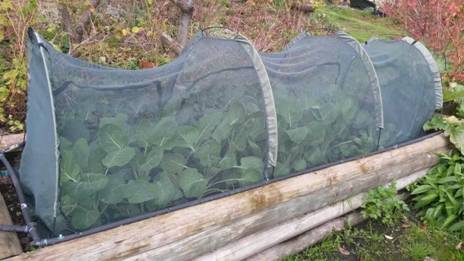
09/06/2015: Most Travelled Cat: Matthew Flinders’
cat, Trim circumnavigated the globe, and

09/06/2015: Rivers in the Sky: NEVER die of thirst:
Surprisingly perhaps that’s where the world’s largest rivers are. Extracting
this humidity from the atmosphere is not necessarily that difficult. In the
Atacama Desert in
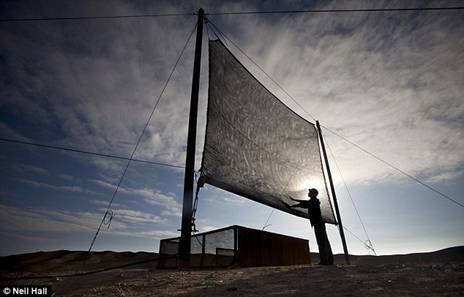
08/06/2015: Baker Lake or BUST: Put THIS on your ‘bucket’ list: http://www.thelon.com/thelon.htm Maybe also check out some of Ray Jardine’s adventures in the Canadian Arctic (eg back, Thelon, Kazan, Coppermine, McKenzie Rivers) here: http://www.rayjardine.com/ Maybe Della and I could someday packraft a section of one of these awesome rivers? Meanwhile there is the Wonnangatta/Mitchell to contemplate for this summer. Quite good enough really. Just need to work out how to get around the ‘Surprise’, ‘Slalom’ & ‘Ampitheatre’ rapids first…

07/06/2015: CANOEING GIPPSLAND RIVERS: I have had some feedback to my posts about the

06/06/2015: ‘Supercharging’ LED torches: Single AA or AAA LED torches are impressive enough with their 100/150 lumens output on a single 1.5 volt battery but these Cree LEDs on which they run are usually designed to run on 3 or more volts which means you usually can run them with either the AA (14500) or AAA (10440) sized lithium 3 volt rechargeable batteries. You can look up the specifications of the particular led to check. Doubling the voltage won’t quite double the lumen output but it WILL go close. The torch MAY get very hot. There may not be enough heat-sink to waste that heat and you may burn out the circuit, but I have successfully run my AAA and AA sized Fenix torches on them without causing them any noticeable harm. The result is a pocket torch good enough to spotlight a rabbit! You will need to buy a special charger: http://www.batteryjunction.com/10440.html

05/06/2015: TENT LANTERNS: I have long used Fenix’s LD01 torch for this purpose, which I now see they have upgraded (the new LD02 model giving approx 20% more light on the brightest setting). It has three settings: 8, 25 and 100 ANSI lumens. The reflector is Loktited on and needs some careful work to unscrew it for the first time. Without the reflector I attach it via a carabiner (1 gram) to the provided keyring and hang the torch from the roof of my tent/shelter with a piece of string where it gives 360 degrees coverage good enough for cooking, conversation etc on the middle setting where one AAA battery will last at least one night. Of course once you are through cooking you can back it off to the lowest setting. It is quite bright enough to light all of a one of the DOC huts in NZ or an circle of over 7 metres radius outdoors if used in this way. You are getting a night’s light (perhaps for a party) for less than 10 grams per night with Eneloops batteries – which is pretty good. You can make a head band for it with a couple of pieces of elastic sewn together or some hat band elastic, two ‘O’ rings and a micro cord lock (2 grams) . I usually use their HL10 for this purpose, preferring to have two separate sources of light for convenience. After all, each of these torches weighs less than 20 grams without any battery: https://fenixlighting.com/product/ld02-fenix-flashlight/ & http://fenixlight.com/ProductMore.aspx?id=75&tid=13&cid=2#.VXDWt0b0ncs

04/06/2015: HOVERBOARDS: I still can’t ride a skateboard so I’d be pretty hopeless on one of these, but I guess we’ll be bumping into them everywhere pretty soon: http://www.gizmag.com/hoverboard-farthest-flight-world-record/37692/
04/06/2015: Great CATS of our time: Tiddles who lived for 13 years in the women’s toilets at Paddington Station. May have arrived there with a sign, ‘Please look after this cat’: http://www.purr-n-fur.org.uk/featuring/wk-rail02.html
04/06/2015: SPOT’S ADVENTURES:
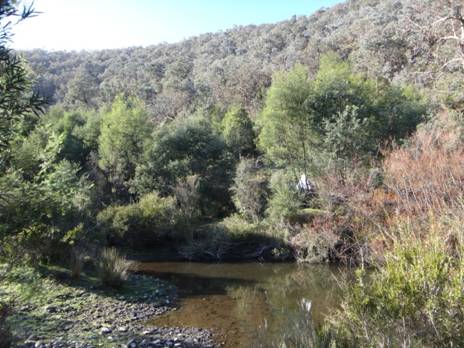
Our tent home for a night amongst the trees (white triangle right centre). Deer wallowed at the left hand end of this pool during the night.
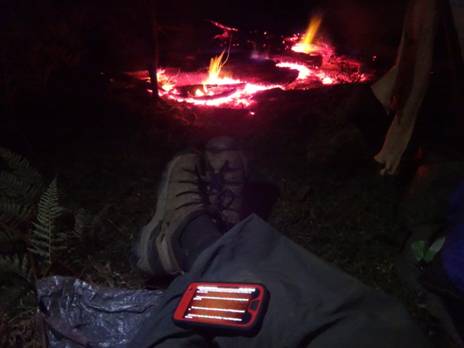
Lovely campfire, warm tent (shirtsleeves at approx 0C), music (Statler Bros), ebook (Idriess, 'Desert Column'), great company (Spot), the lonely dingo’s call... Who could want for more?
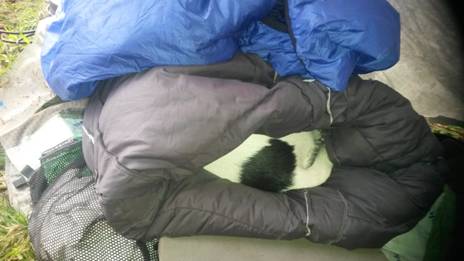
Spot enjoys his sleeping bag.
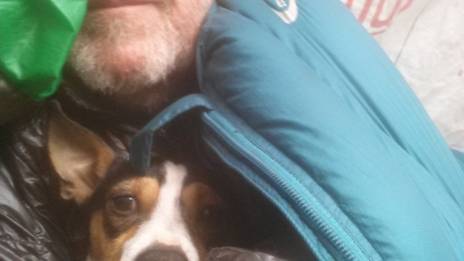
But sometimes he wants to try mine out too!
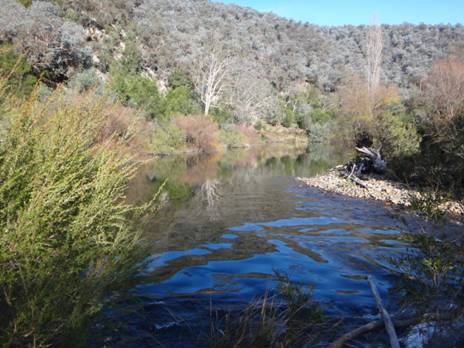
View upstream from camp
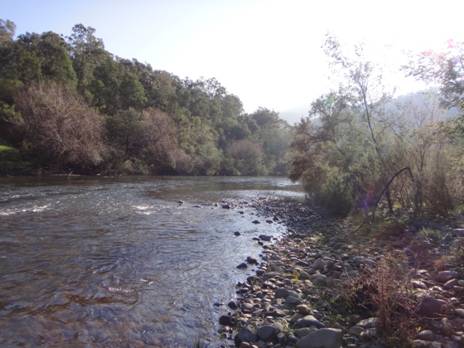
View downstream from camp
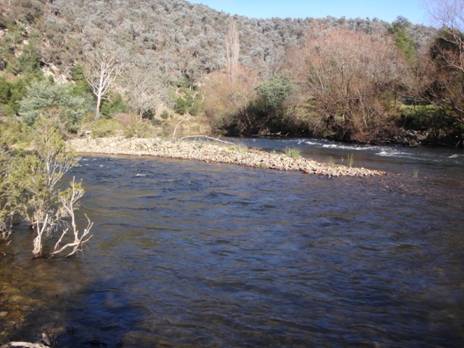
Most of the rapids are quite minor - Della will have no problem with these.
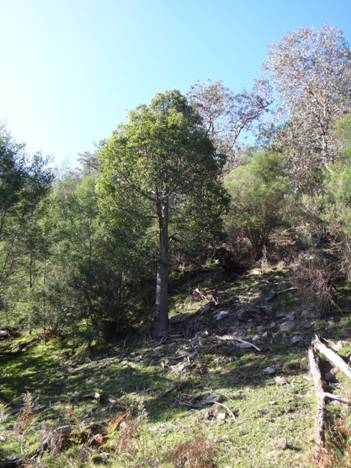
Brachychiton: Quite a few of these relict plants in this area.
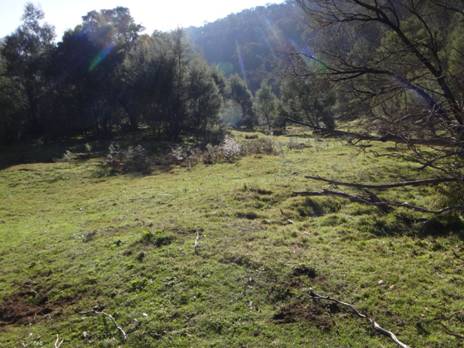
Deer have been assiduous gardeners along this stretch of river
02/06/2015: Mountain goats are amazing climbers – photos you won’t believe. Anyone able to successfully hunt these guys must be suicidal themselves: http://www.earthporm.com/insane-mountain-goat-photos-that-prove-theyre-the-worlds-best-climbers/
01/06/2015: SOYLENT: Emergency (No-Cook) Hiking/Survival food, hopefully NOT such a by-product as in the film ‘Soylent Green’ (Book: “make Room! Make Room! Harry Harrison); 459 gram sachet = 2000 calories: https://faq.soylent.com/hc/en-us/articles/200836809-What-is-Soylent-

31/05/2015: HIKING FOR VOYEURS: Following hot on
the heels of ‘Wild’, Bill Bryson’s ‘A Walk in the Woods’ is soon to hit the big
screen with Robert Redford in the starring cast. Della will want to see this. I
admit I enjoyed the book, though I suspect I would enjoy the walk even more, so
long as too many others aren’t enjoying it at the same time! The

30/05/2015: Keychain
goodies: Spyderco Bug Knife (1 1/8” blade): add this to your Photon Freedom
Micro (torch) and Verbatim Store’n’go
:

Verbatim Store'n'go 32 Gb
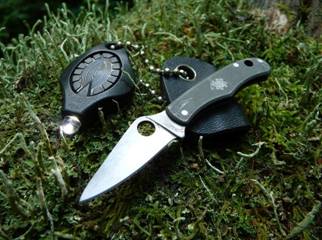
Spyderco Bug, Photon Freedom Micro

Victorinox Swiss Flash LED 16GB
29/05/2015:
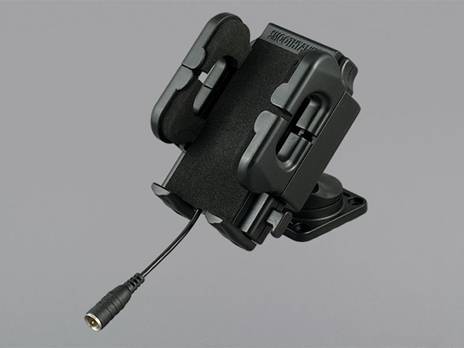
Smoothtalker passive pad
It is a delight to venture into the mountains far from ‘civilisation’; when we do however we don’t have to forego the opportunity of all contact. A carefully chosen antenna system will draw in mobile phone and internet connectivity to quite surprisingly remote places. We have two conjoined (with a balanced splitter/joiner) 6.5 Db fibreglass antennae such as these (https://telcoantennas.com.au/site/rfi-cdq2195-quick-removable-65dbi-bullbar-antenna) Joining two together like this increases the gain by about 3 Db (so to approx 9.5 Db). You should remember that each 3Db equals approximately a doubling of the signal, so that this arrangements represents an over eightfold increase in signal strength. We chose these antennae as they are the highest which will allow the vehicle into the garage without damaging them - else we would have chosen two 7.5 Db = 10.5 Db total. However, we CAN stow two 9 Db antennae (like these: (https://telcoantennas.com.au/site/rfi-cdq2199-quick-removable-9dbi-bullbar-antenna) under the tray, giving us 12 Db when we attach them (or four doublings ie sixteen times the signal strength!) It is important the antennae are connected to the splitter thence to the phone with the shortest possible and best co-axial cable. Antennae usually come with 5 metres of RG58U cable which loses .79 Db per metre, a total of 3.95 Db. If you can shorten this to 2.5 metres (you can!) of 1250 coax with a loss of .0675 Db/metre, you can reduce this loss to .16875 Db, or an effective gain of 3.78 Db (more than a doubling of the signal strength which you are likely losing right now!). (See https://telcoantennas.com.au/site/guide-antenna-cables-connectors& http://www.comnet.com.au/epages/shop.sf/en_AU/?ObjectPath=/Shops/comnet/Categories/Cables/Cables_with_connectors/1250_Ultra_Low_Loss_Antenna_Cables) A patch lead which connects physically to your phone through one of the small connectors on the back (of all Samsung phones anyway if you take the cover off) will mean that you get ALL of this signal. It IS difficult to plug in though, easily broken and CAN damage the phone. Instead, for a loss of only .6Db you can connect with one of these passive pads (http://www.comnet.com.au/epages/shop.sf/en_AU/?ObjectPath=/Shops/comnet/Products/CK589-AMD) which will hold any phone securely. There is a model which powers/charges the phone as you go along too. If you need even more gain, you can purchase a 16 Db ‘Yagi’ antennae (like a television antenna https://telcoantennas.com.au/site/rfi-16dbi-yagi-directional-antenna#) which you can mount on a telescopic pole. This would be a good antenna to use at home if you are in a very poor reception area. If you get the antenna say 3 metres above ground you will effectively get another 3 Db, so approx 19 Db of gain (ie over 6 doublings - or 64 TIIMES the original signal strength!) Of course you can only use the Yagi setup when you are stationery; it will also take a while to FIND the signal if there IS one. There IS a signal strength metre on your phone - apart from the signal strength display on the front. (https://telcoantennas.com.au/site/phone-engineering-menu) It is HIGHLY illegal to use an electronic booster (without a licence) – there is a huge fine for so doing - but a booster won’t get you more gain than this by itself – though it would if you boosted through the array. A booster will knock everyone else off the Network though, and may even lead to someone’s death in an emergency situation – why it IS highly illegal. You CAN buy one here, if you dare (http://www.quantel.co.nz/). If used ONLY in an emergency situation, it may be justified, but a satellite phone would be a better insurance policy.
At home you CAN get a booster licence (we have one) if you are in a poor signal area https://telcoantennas.com.au/site/catalog/home-office/repeater-kits This has been a real boon to us, but obviously only works INSIDE the house.
29/05/2015: VANDALS: These Rainbow rogues are enjoying our REALLY delicious apples too:
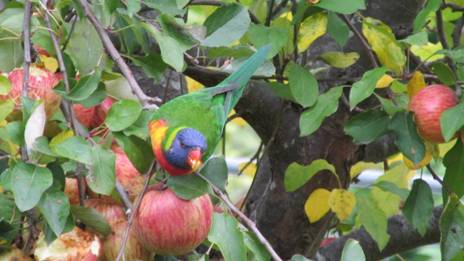
28/05/2015: Root Vegie Pots: No-Dig No-Weed
Growing: Potatoes, Jerusalem Artichokes, Yacon, Yams, Sweet Potatoes in limited
space in plastic pots in potting mix with poly dripper/timer irrigation.
Descending size Reko pots will stack as shown to create greater height (bottoms
cut out). Bunnings also now have black poly garbage bins ($9) which would be
most suitable (shown). I grew this many
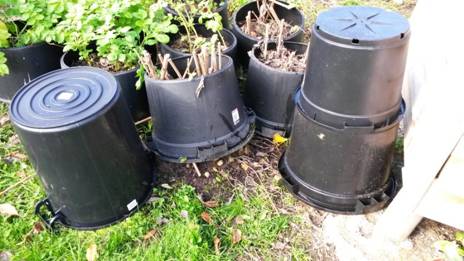
Bunnings $9 bin (left) Reko stacked pots (right)

27/05/2015: SURVIVAL LACES put a fire starting kit on your feet. When out in the wilderness, it can be a good idea to take along a backup fire-maker, just in case your matches get damp or rubbing sticks gets you nowhere. With this in mind, Survival Laces include a small fire starting kit, and some fishing line too, just in case you ever need them. Of course you can also do all the traditional things with them: hang yourself, garote a companion…EVEN tie your boots: https://www.kickstarter.com/projects/1268063329/survival-laces
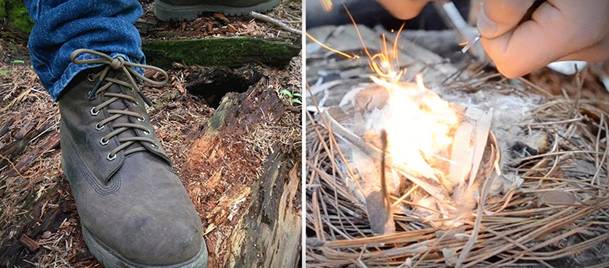
26/05/2015: DUSKY TRACK: CANOEING THE SEAFORTH: Some folks are just downright suicidal, and sometimes I am one of
them! In 2009 I had conceived a plan to be the first person (I think) to canoe
the mighty remote
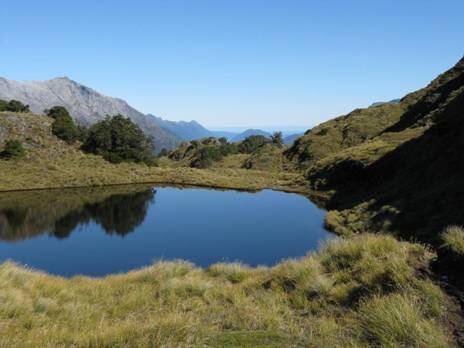
Thousands of beautiful tarns on the way across from
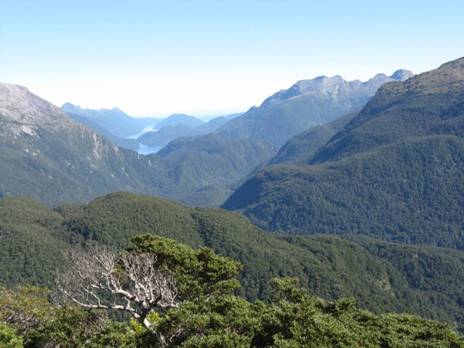
First view of the Seaforth coming across from
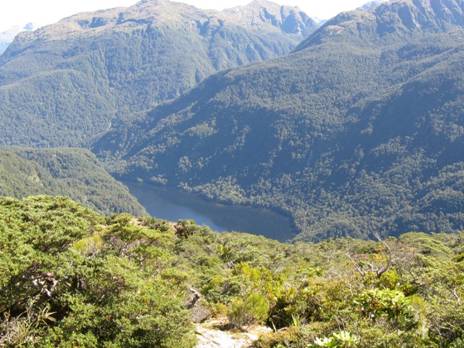
A very steep descent to Loch Marie
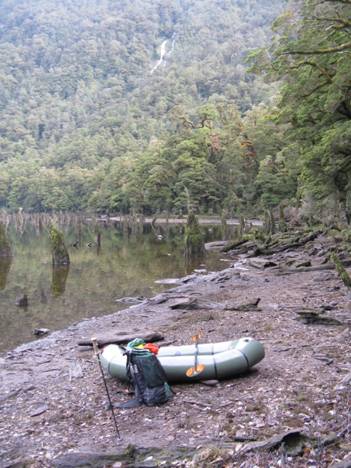
Putting in to cross Loch Marie
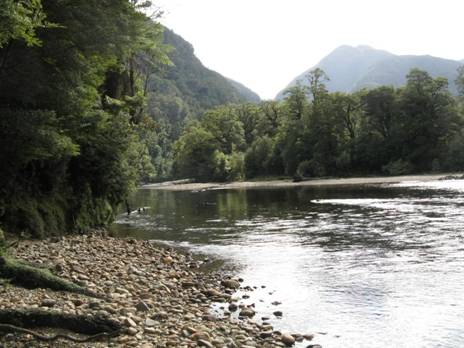
Putting in below the Bishop Burn: Some beautiful serene stretches of river along the way
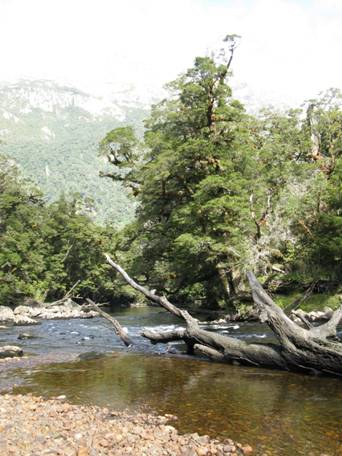
Quite a few log jams along the way
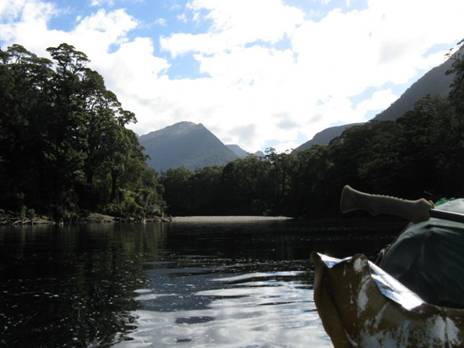
Some beautiful views along the river

One of those ‘killer’ rapids I avoided

Some awesome views
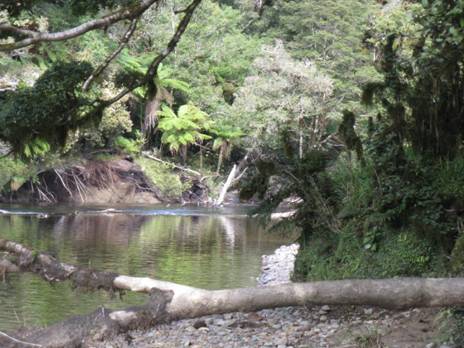
One of those vertical banks I had to climb
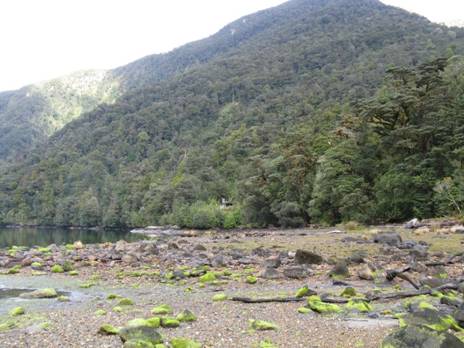
Supper Cove Hut loomed a welcome sight after such a river journey

My daughter Irralee waiting for me on the Boat Shed beach at Supper Cove
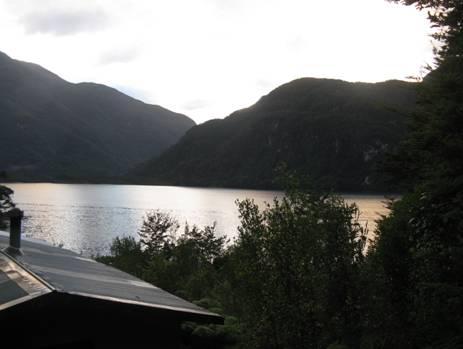
Sunset over Supper Cove Hut

Packraft and Big Agnes mattress/floor inside Supper Cove Hut
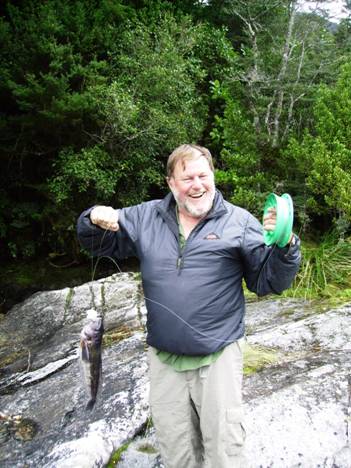
Great fishing for Blue Cod at Supper Cove
26/05/2015: FACEBOOK HIKING PAGE: https://www.facebook.com/theultralighthiker?ref=aymt_homepage_panel Apologies to my friends for this popping up in your news feed ten times this morning. Merrin finally got this going for me last night, and I promptly copied approx ten posts across to it (which is NOT how Facebook pages work, apparently) After today, there will just be 1-2 posts which will link to my new – thanks also to Merrin - mobile friendly hiking page (http://www.theultralighthiker.com/) –should you wish to look at it.
25/05/2015: HIKING FOOD: MCKENZIE QUICK COOK SOUPS (180 grams per packet) : Tried the first of these, Hearty Vegetable tonight. I expected it would need a bit of spicing up but it did not; it was excellent. HIGHLY Recommended. Also discovered that you can thicken a soup (and add nutrition) by stirring in some Continental (Deb) Mashed Potato – about five teaspoonfuls to a cup. I made the soup (as per instructions) with 8 cups of water. Bring water to the boil, add ingredients and simmer 15 minutes. Whilst this would make a fine entree for several people, it would be too much liquid for one (or two) for too few calories (600/8). So I would (in the field for a main) add just four cups and thicken with mash. Two cups for each of us with some mash should come to more like 400 calories each, and half a litre of hot hearty soup each should be enough on a cool night. Tonight I added some extra nutrition to the leftovers with tiny shell pasta, an 85 gram can of Heinz chicken meat finely shredded, and two cup serves of Continental Asian Laksa Cup-a-soup (see photo). It was delicious. There are two other flavours to try: Minestrone & Homestyle Country Chicken. Even if you aren’t a hiker, they would be useful additions to your pantry shelves.




24/05/2015: TYVEK SOLO FIRE SHELTER: It weighs less than 600 grams. Here is my plan for an excellent one person shelter which will keep you safe from just about everything and can be warmed by a cheery fire out the front. You can cut it in one piece (as shown) from a single sheet of 3 metre wide Tyvek ‘Homewrap’ 3.6 metres long costing about $20. Leave about 2cm more for a hem, which you can tape with Tyvek tape. You can add reinforcing patches to the corners, etc in the same way – or you can learn to sew! If you can’t sew hems & webbing tie outs as shown, you can erect it with tarp clips (eg http://www.shelter-systems.com/gripclips/) You could use these stick on loops (http://www.zpacks.com/large_image.shtml?accessories/tape/stick_on_loop_clear_l.jpg) as bottom tie outs or to erect a bathtub floor, attach your raincoat to close the top half of the opening in bad rain, etc One might be good about 60 cm from the ground to hold out the centre of the windward side in strong winds so the material doesn’t press up against you. These velcro strips might be handy too http://www.zpacks.com/large_image.shtml?materials/velcro_l.jpg & etc. There is clearly plenty of room for one person, lots of gear and a dog or two! I guess two people would fit if you are very good friends. Such a shelter is much better than a tent, or bivy bag especially on wet days. You have somewhere warm and comfortable to retreat to, but with a view. You can cook under cover as Tyvek has a melting point of 800C. It will also withstand 160 Km per hour winds and has an R-rating of approx 1-1.5. You will never have a cold back as it will reflect the heat from the fire right back at you, and keep you warm all around. I have been sitting in mine in shirtsleeves on sleety nights when the mercury dropped below 0C. I have also been out in it in torrential rain and hideous winds. Most places (except the tops of hills - never a good place to camp) the wind blows pretty consistently from one direction (check the forecast before you go). If it does turn around you can close in the storm flaps. If it turns 180 degrees, you may have to re-erect it. You just tie it to a tree, any stick over about 1.2 metres, two hiking poles joined together & etc. You need 8 stakes (including two for the storm flaps). Take 9 – one can always go missing. You can certainly scale this up to suit two people, but you will have to sew the wider floor on if you make it wider eg the top piece might be 2.4 metres high and 4 metres wide and the floor perhaps 1.5 metres wide. In that case you would need 5.5 metres of 3 metre wide Tyvek. Della’s winter garden looks great in the photos too:
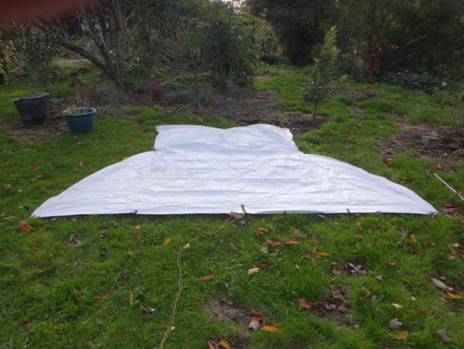
Cut from one piece of 3 metre wide Tyvek
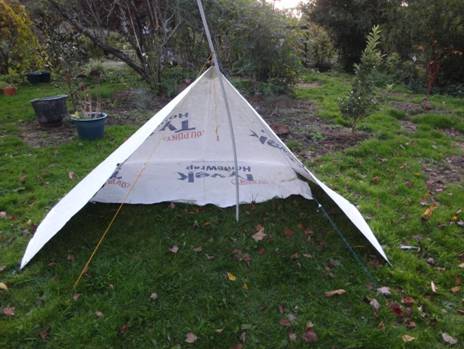
The Lee Side: a cheery fire out the front, protected from the weather 270 degrees
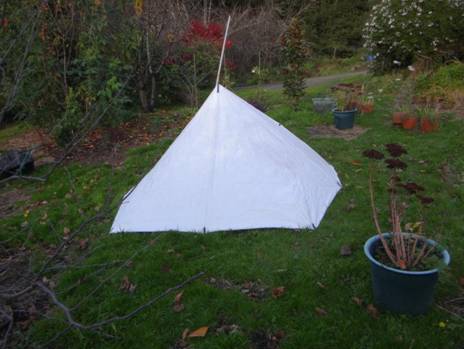
Rear View, windward side: the wind and rain will skid right up over it
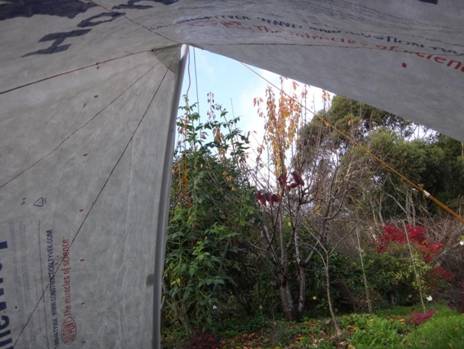
You can imagine the view of a cheery fire out front (Della might not want her garden scorched!)
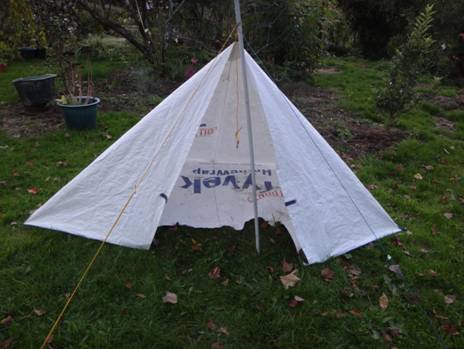
Storm Mode: the top half could be further closed with your raincoat
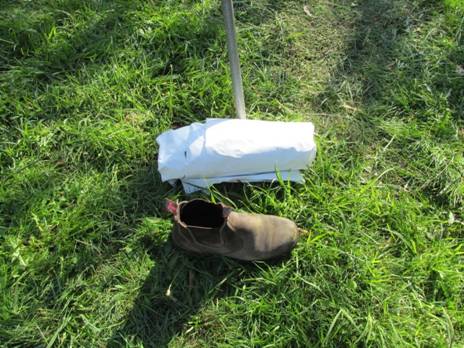
Rolls up a little bigger than my boot, weighs < 600 grams. Costs approx $20
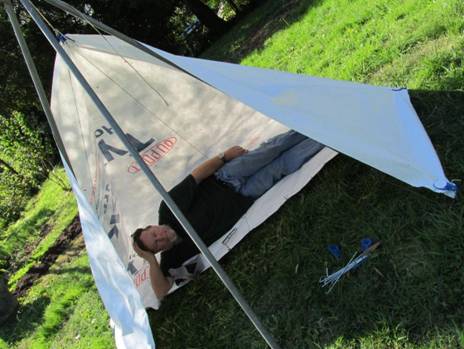
Prototype erected with tarp clips from Aussie Disposals.

Approximate Dimensions in metres
23/05/2015: WIRILDA
TRACK: A couple of delightful hours yesterday afternoon. The lower half of the
track follows the one of the original Morwell water supply pipelines. There
were/are a series of weirs (lowest shown) on the
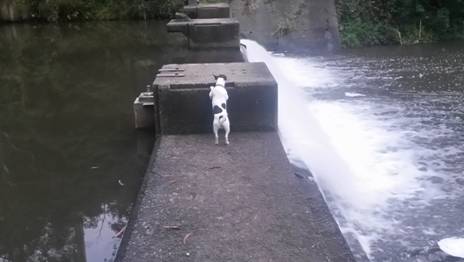
Spot checks out the lower weir, a popular swimming hole in summer
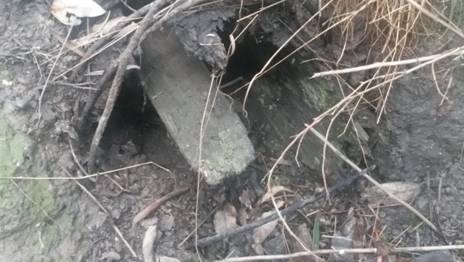
Old wooden pipeline - you can still see the staves and iron hoops
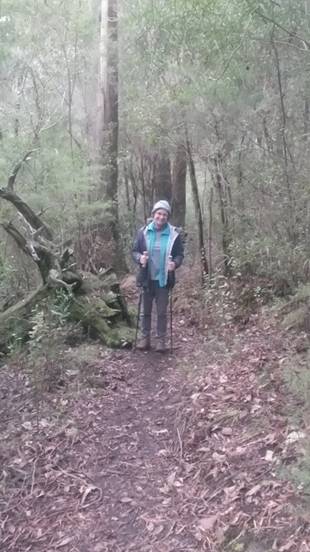
Wirilda is easier going than the South Coast Track: Della led all the way!
22/05/2015: Tasmania's South Coast Track - Hell's Holiday
(Feb. 24th-March 3rd, 2011)
Della’s account of our March 2011 trip: ‘It is now a full week since we reached Cockle Creek after completing the South Coast Track wilderness walk. After a week, I finally feel a little recovered and therefore equal to the task of recording the experience, so that others contemplating the walk may be better prepared than we were.
First of all, we thought ourselves well enough prepared for the trip. We had read John Chapman’s book, checked out reports and video footage on the web, were experienced lightweight backpackers and were reasonably fit. Most reports of the walk described it as ‘easy’ while some suggested that it might challenge those inexperienced at long hikes. John Chapman’s book recorded the estimated track times as being fairly reasonable: apart from 2 long days (6-9 hours and 5-7 hours respectively) all the track times seemed to suggest a comfortable half-day’s walk. It was our trust in this document that was our undoing!
Day 1 Melaleuca to Freney Lagoon
Having left our warm beds at 2.45 am for the drive to
The boardwalks were deceptively accommodating, but they began and ended abruptly, frequently tipping us unceremoniously into boggy patches of mud. The worst part was the wetness of the boardwalks which were, in many places, so slimy that they were as slick as ice. Only careful, ponderous steps could ensure that we didn’t break any bones on this first section of the walk. All the while, the rain intensified, and I was thankful that I had invested in a good quality ‘Event’ rain jacket. The wind whipped mercilessly across the swamp, and the eerie lack of any sight or sound of wildlife in this endless wasteland brought to mind some half-forgotten lines of poetry from John Keats: …the grass has withered from the sedge/And no birds sing. Not quite sure of the accuracy of the line, nor of the poem’s title, but I do remember that the line was preceded by: Oh what can ail thee knight at arms/Alone and palely loitering…. The barrenness of this first day’s walk was certainly encapsulated for me in Keats’ words. We gave up looking for a suitable spot to eat our packed lunch, settling for stepping off the track and sitting atop prickly bushes to keep our backsides out of the mud while we gulped down our food before the cold could penetrate our bodies. Shortly before reaching Freney Lagoon campsite, we met a man heading back to Melaleuca. He had walked for 2 days and then decided to return to Melaleuca instead of completing the walk. We should have talked to him further! The Freney Lagoon campsite was reached via a stretch of lovely (though bleakly grey) beach, and it certainly looked as if our traverse of the ugly plains had rewarded us with some better scenery. Our aim had been to push on (perhaps another hour and a half) to reach the third campsite, Buoy Creek; but evening was not far off, and our early start was beginning to take its toll, so we called a halt and set up camp.
Day 2 Freney Lagoon to
By the time we had broken camp, the sun was shining and our walk along the beach to Buoy Creek was lovely.
Sadly, this was over quickly, and from Buoy Creek we headed inland again over kilometres of muddy, wet plains. At first we tried to skirt what we could of the deeper mud, but eventually we had to just wade on through it to avoid the possibility of foot injuries. The track eventually led us to a steep climb (255 metres) over the Red Point Hills: hard going, but drier.
By around 3.00 pm we reached the colourful waters of the Faraway Creek crossing where we stopped for a brief swim to remove the accumulated mud and sweat. Unfortunately we didn’t dally over this, which proved to be our only opportunity to bathe on the walk… The high tanin content of the streams in this region renders the water the colour of strong urine when collected in drinking bottles. In the Faraway Creek, it was a deep orange…kind of attractive, in an odd sort of way! I may never approach Twinings Orange Pekoe tea with the same gusto again, however!
Sadly, we had misread the track guide at this point, and confused
I had been dreading the
Day 3
We had always expected this to be the big day, the climb of over 900
metres straight up and over the
The traverse of the summit, however, seemed endless, as the cloud
engulfed us and a fine sleet set in. The way was cold, blind and windy. We
forged doggedly ahead, hoping the descent would begin soon. My mother always warned
me about being careful with regard to what I wished for…the descent was
horrendous! Steep, plunging, muddy,
heavily eroded, laced with treacherous tree roots, the descent had become a
deep channel for all the water draining from the summit. And it continued for
hours without let-up. The high camp was
a possible lunch stop, but the alpine weather was so bleak that we just ate a
muesli bar and stumbled on. By late afternoon we were only just passing the mid
camp, which was unsuitable for spending the night due to a lack of water. We
pushed on further, and I started to go lame in response to the jarring nature
of the steep descent on a knee muscle injury I had incurred the previous
day. By the time I alerted Steve and
Kerri to my pain, and then waited for the pain killer and anti-inflammatory to
ease things a little, time had hurried
on and we could see that we had no hope of reaching Little Deadman’s Bay before
dark. Our only hope was the Low Camp, which had no water. Fortunately, when we reached it half an hour
before dark, there was just enough room to pitch our tents (albeit in a low,
wet soak) and send Steve off to find the creek further down the track.
Blessedly, the rain was not too heavy, but enough, nevertheless, to make tents
and sleeping bags damp, so that we craved an earlier and drier camp the next
night. Chapman’s book had this section tagged as 6-9 hours. We took 13 hours. As we descended, another
poem from my past infiltrated my brain. It was written by Robert Browning, and
entitled: Child Rolande to the
My first thought was, he lied in every word,
That hoary cripple, with malicious eye
Askance to watch the working of his lie
On mine, and mouth scarce able to afford
Suppression of the glee that pursed and scored
Its edge at one more victim gained thereby.
What else should he be set for, with his staff?
What, save to waylay with his lies, ensnare
All travellers that might find him posted there,
And ask the road? I guessed what skull-like laugh
Would break, what crutch ‘gin write my epitaph
For pastime in the dusty thoroughfare…
And so on the poem goes. Apart from changing “dusty” in stanza 2 to “muddy”, I think the poem applies perfectly to Chapman, with me as his bitter victim.
Day 4 Ironbound Range Low Camp to Prion Boat Crossing
Chapman had this day tagged as 3.5-4 hours walking from Little Deadman’s Bay. We still hadn’t reached Little Deadman’s Bay, so we had to add on the extra time, however long that would be. Well, the walk to Deadman’s Bay took us a further 3 hours of treacherous, muddy descent, so even without the slight delay of my sore leg the night before, we had had no hope of reaching the camp. Good thing we camped where we did!
And so onward: more boring, buttongrass plains, but no boardwalks now, just mud….vast stretches of it, often thigh-deep, and always unavoidable.
Some pretty forest sections on this day which were drier going, but all in all, 9 hours of walking without a break. The Prion Boat crossing was manageable, thanks to Steve’s capable rowing, but by then we were totally exhausted and in need of setting up camp to dry our bedding from the previous night.
Day 5 Prion Boat Crossing
to
Chapman estimates this day as 4.5 – 6 hours: we took about 10 hours.
Muddy plains, steep climbs, light forest, some beach views, no time to stop…by now I was well and truly over this walk.
As we neared the waterfall cliff that marked the campsite, we realised that the tide was rapidly coming in, and the small area of rocks at the base of the cliff was diminishing. Looking for the path upward, we realised that there wasn’t one: we just had to clamber up the cliff face using hand and toe holds where we could. At any other time, I would have baulked at this and said that I could not possibly achieve it. This evening, with the incoming tide pounding threateningly at my back, I shinnied up the cliff without a pause. Marvellous what fear and desperation can do!
Day 6
Chapman says 5-7 hours for this day: yesterday we met two separate walkers coming in the opposite direction who said that they took 10 hours, and that the mud was hip- deep. A day to look forward to!
We rose at 5.45 am, in order to hit the track as early as possible, as, in addition to the reported mud, we had to climb up and over the South Cape Range – a mere 715 metres or so!
The day proved to be all it was cracked up to be: unbelievable mud stretches, hard, steep climbs, scrubby forest. We spent hours walking through tunnels in the sword grass or tunnels through the tee tree scrub - like rats in a maze.
At the top of the range, the first of 5 hail storms beset us, just as we were pausing for our cheerless jerky and nuts snack. To quote again from Browning’s Childe Roland to the Dark Tower Came…
All the day/Had been a dreary one at best/And dim was settling to its close...
…..when, at last, we came in sight of South Cape Rivulet camp. Chapman notes that at the rivulet, a ‘deep wade’ leads to the camp on the other side. He also says, as an aside, that at high tide or after heavy rain it is best to wait for water levels to drop….
We walked the length of the estuary, looking for a safe crossing point in the tanin-brown, opaque water, and found none. The river had a wild current coursing out to sea, with 2 metre high breakers pounding inwards at regular intervals. Nowhere looked shallow enough to cross. We retraced our steps into the forest, but there were no suitable camp sites to be found. We hailed the walkers at the camp, who informed us that they had crossed earlier when the tide was much lower. Should we wait out the tide, with nowhere to camp and the possibility of further rain in the night? It didn’t sound like much of an option, with the sky threatening and dwindling food supplies. It was grim… just like Childe Roland...
A sudden little river crossed my path
As unexpected as a serpent comes.
No sluggish tide congenial to the glooms –
This, as it frothed by, might have been a bath
For the fiend’s glowing hoof – to see the wrath
Of its black eddy bespate with flakes and plumes.
Steve, in his careful preparations, had added to his pack a coil of spectra cord, in case of dangerous river crossings. The lack of any trees on the far side of the estuary was a problem, but he tied one end of the cord metres behind us on the bank, and leaving his pack behind, waded across, waist-deep, between the assault of the waves. Timing was crucial, as it was necessary to wait for the incoming waves to flow and then ebb so that the water was not too deep, still leaving enough time to accomplish the crossing before the next crashing wave. He then anchored the rope while Kerri and I crossed, both losing our footings in the swift current and plunging holes, and here today only as a result of the rope.
Steve finally returned for the packs while Kerri and I anchored the rope, and last of all he reclaimed the precious rope. Without his forethought and strength, I would not have survived that crossing with my limited swimming skills.
All that remained was a shivering run to camp to remove our wet clothes before we were dangerously chilled, pitch the tents, get water, check our bedding for water infiltration (fortunately the dry-bags had held good), cook something hot, and warm up in our sleeping bags. Steve and I managed to get warm by donning padded coats and vests inside the sleeping bags. Kerri spent a colder and largely sleepless night. All of this was played out to a background symphony of wind : the raging roaring 40’s which had become gale-force.
Only half a day to go….
Day 7 South
“We gotta get outa this place
If it’s the last thing we ever do…”
Chapman says 3-4 hours. We hadn’t matched him before, so why should
we today? We sustained our exhausted
minds and bodies with images of a day in
More long stretches of boulder beach staggering, more climbing: wild craggy cliffs towering over the Southern Ocean, with gale-force winds threatening to blow us over the edge.
More boring, buttongrass swamps: (Childe Roland again – sorry!)
So on I went. I think I never saw
Such starved ignoble nature; nothing throve….
…No! Penury, inertness, and grimace,
In some strange sort, were the land’s portion…
In fact, we heard a frog on this last buttongrass swamp crossing. In the entire walk, we had counted 2 frogs, 4 birds, one paddy melon wallaby, some seagulls, a dying penguin and a dying seal. Not exactly nature’s wonderland!
And now for my final quote from Childe Roland…:
As for the grass, it grew as scant as hair
In leprosy – thin dry blades pricked the mud
Which underneath looked kneaded up with blood.
Despite pushing ourselves to the limit, we took 4.5 hours for this last section. We would argue that it is impossible to do it in less.
We emerged exhausted, bitter, cold, footsore and in need of some
creature comforts, which I am pleased to say,
21/05/2015: DUSKY TRACK ADVENTURES #1: I have been on this track now EIGHT times, first in March 2000; the last time April 2014. I hope it is NOT the last! Other folk go different places, I know, yet I keep returning to this magical place. (I go SOME other places too!) One reason I guess is I really like the solitude, and have pretty much figured out how to have the track to myself – or near enough, so sometimes I am there a week without seeing another soul, which is great. Another is I really would like to take a photo of a Fiordland moose - though I somewhat doubt that will ever happen, but I keep on trying. I guess I have been off track WAY up every watercourse flowing into the Seaforth Valley over the years looking for them (BEWARE: moraine holes!) I have seen lots of sign (prints, droppings, browse, barking, etc), even a glimpse of one once, so I guess I’ll keep on trying while I’m able. I know the DOC in Te Anau discourages people from venturing onto the Dusky (though practically none of the staff has ever been themselves!), but I am 65+, somewhat overweight and not specially fit, and I have no problem with it, so maybe you can give it a go. SOME ADVICE: Make sure you have the Backcountry Navigator App and appropriate NZtopo map on your phone (and a spare battery). Make sure your phone is in Flight Mode, and that the GPS is OFF unless you are checking your position – and turn it off overnight; it should easily last the trip. TAKE A TENT, or other shelter. It DOES rain awesomely at times and the streams can rise astonishingly, maybe leaving you trapped for days between huts/shelter. I usually carry a Nano Hammock (160 grams with Dyneema suspension) and an 8x8’ zpacks cuben fibre tarp (150 grams) and my Neoair pad (320 grams), so for just under 650 grams I can have a dry safe night in the bush anytime (and I HAVE, lots of times!) You don’t need a flat spot for a hammock – and Fiordland has lots of trees! If the river starts rising, walk up a ridge (paying careful attention to your return route) until you are well clear of the high water, sling your hammock and wait it out. Such an eventuality won’t happen often, but if/when it does you will want to survive it (others before you have NOT!) The hammock & tarp also make for an excellent dry lunch stop on wet days. Take a Sat Phone or Mountain Radio &/or Epirb for emergency communication. NB: an Epirb is only for in extremis: Hauroko Tours tell the tale of a party dropped off at the Hauroko Hut who found they could not venture further up the Burn (high water/walkwire out) so hit the button. They were in a dry hut with a boat returning in THREE days. The Burn would also likely have gone down overnight. This is NOT what Emergency Services are for. I think the new Iridium Extreme is excellent (it also has Epirb and location logging functions) and will be updating my older model when finances suit. Lighten your pack weight as much as possible, but be prepared for a hike of at least TEN DAYS if attempting the whole hike. Mostly I do half the trip (Supper Cove either to/from Hauroko/Manapouri) taking advantage of the brilliant air services into Supper Cove (Wings on Water/Southern lakes Helicopters). I always try to share the flight with someone (eg as a backload) to reduce cost. The flight is so breathtakingly beautiful though, it is WORTH THE COST. Put it on your ‘bucket list’ (maybe stay a few days at the beautiful Supper Cove) even if you don’t walk much of the track. NB: You can walk across Supper Cove from approx half tide. In 2014 I placed some marker tapes and a buoy (just after the Hilda Burn) to aid finding this short-cut. It cuts out nearly an hour of not-so-pleasant root-tripping. A tramper we met on the South Coast Track this year said he had found and used it. Another way to lighten your load I have often used is to see if one of the flight operators is going in soon; ask them (for a fee) to hang a bag of food up for you in the Supper Cove boat-house. This way you can plan to stay even a week lazing and fishing at Supper Cove – don’t forget your hand-line and frypan/Alfoil! More posts soon…
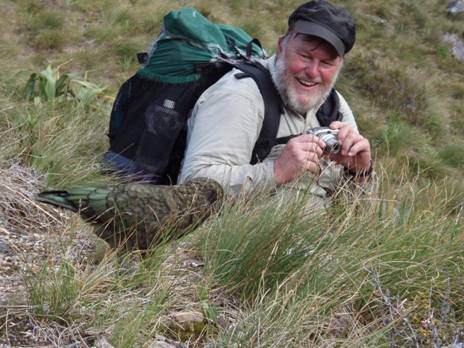
2008: Kea,
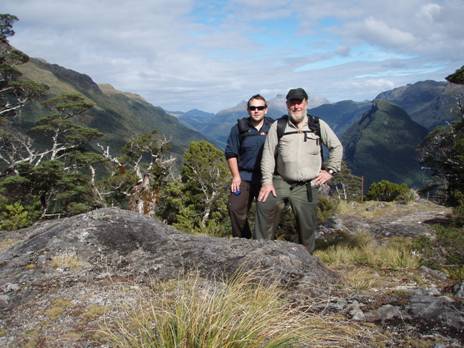
2008: With My Son Bryn, Centre Pass, Tripod Hill, Dusky Track Fiordland NZ
20/05/2015: Ultralight spare glasses: http://i4ulenses.com/
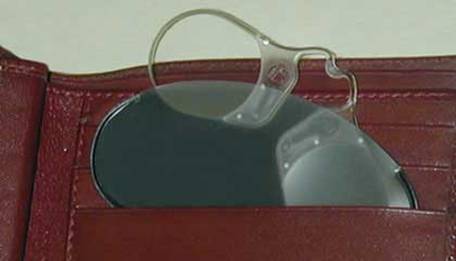
19/05/2015: UPPER YARRA TRACK WINTER UPDATE: Spot
and I planned to finish working on the path to the

Spot keen to walk the Forty Mile Break behind the locked gate Upper Yarra Track
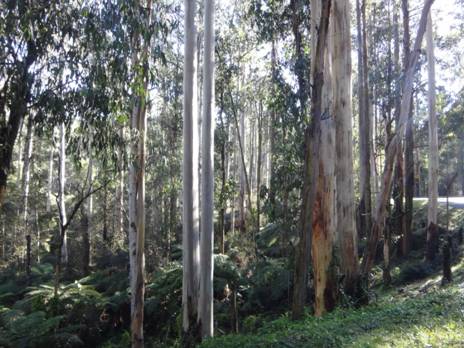
Many beautiful spots along the way, eg
19/05/2015: SATIN BOWER BIRD: Della: And look at this little fellow, snapped from our bedroom window yesterday morning....a satin bower-bird, munching the last of the Royal Gala apples with no less than 18 currawongs for company. Our bird book says that it is either a female or young male. I am not sure if the photo does justice to its amazing blue eyes! This is the second winter we have seen this bird on our back slope, but we couldn't get a clear look at it before for identification. Good to know there won't be any smelly, rotting apples left to attract wasps with all these birds working so hard...
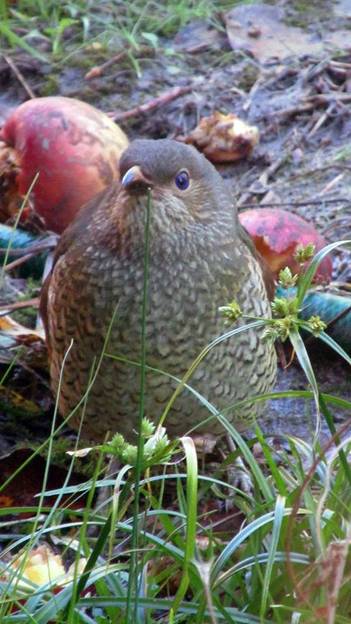
19/05/2015: Dave Canterbury: ‘Good Judgement Comes From Wisdom, Wisdom Comes From Experience, Experience Comes From Poor Judgement’ http://woodlandwisdom.blogspot.com.au/
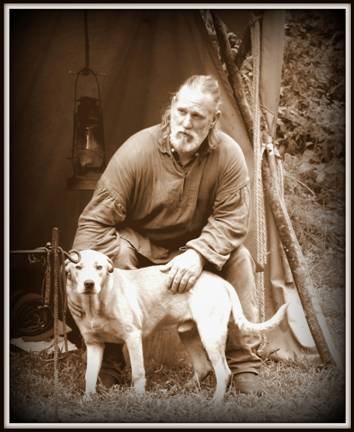
18/05/2015: SURVIVAL STILL: NB: On the Kon Tiki they drank a ‘shandy’ (for two months) of 40% seawater 60% fresh water with NO ill effects. As soon as you realise there is a shortage of water, add your own urine to your fresh water supply to extend it. Boil and distil it if you wish. Those who opt for stoveless hiking may one day thirst to death. If you have a lighter, a billy and any garment, (but a hiking towel may work best) you can use the second (simplest) method pictured to DISTIL pure water from even the most brackish (or alkaline). As you can shandy sea water, you only need to distil 600 mls to have a litre to drink. Two litres per day will keep you alive indefinitely if you avoid excessive heat, and breathe outwards only through your NOSE (the Fremen were right!) You only need enough fuel to boil away 1200 mls of water per day. Everyone will have seen the first method below, but it may be slow work for scant reward. You COULD use your cuben fibre tent if you didn’t happen to have any plastic sheeting handy. Your raincoat would also work, and wouldn’t be needed for its normal purpose in the circumstance. BOILING will get you a drink much faster I’m sure. If you have a length of hose (eg from a drinking tube), you could direct the steam from Method 4 into the solar still, Method 1. NB: You do not need water for a still to work: there is always water in SOIL, no matter how dry (dig down a bit and it WILL be damper). Heating it in a billy will drive it out, as above. A titanium billy is a better survival tool for this purpose than a tin one (the solder can melt) or an aluminium one (which will burn away more readily).
Method 1
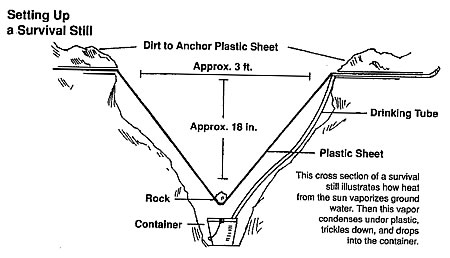
Method 2

Method 3

Method 4
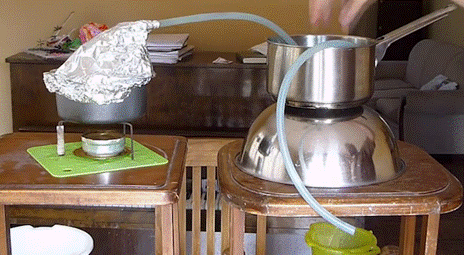
18/05/2015: VEGIE Gardening again today (and tomorrow):
Hoeing: John Updike (1932-2009)
‘I sometimes fear the younger generation will be deprived
of the pleasures of hoeing;
there is no knowing
how many souls have been formed by this simple exercise.
The dry earth like a great scab breaks, revealing
moist-dark loam—
the pea-root's home,
a fertile wound perpetually healing.
How neatly the green weeds go under!
The blade chops the earth new.
Ignorant the wise boy who
has never rendered thus the world fecunder.’
17/05/2015: BLISTERS: This guy is RIGHT: One way to prevent heel blisters is to learn to tie your shoes differently, eg: http://life.damn.com/the-secret-of-the-extra-shoe-holes/?utm_source=nym&utm_medium=cpc&utm_campaign=shoeholesnym

16/05/2015: JETMEN
(in Jetpacks) over
16/05/2015: BACKPACK GEAR TEST: DRY SACKS FOLLOW UP: Folks at this website field test various hiking gear and write a detailed report about it. This is a very useful resource to consult before you launch into parting with some of your hard-earned on the latest new bit of gear For example, here are some reviews of the Sea to Summit Ultra Sil Nano Drysacks I posted about yesterday: http://www.backpackgeartest.org/reviews/Stuff%20Sacks/Dry%20Bags/Sea%20to%20Summit%20Ultra%20Sil%20View%20Dry%20Sack/

15/05/2015: BETWEEN
PLANETS: PROJECT ORION: Cancelling this was on a par with Europe ‘forgetting’
how to make GLASS (and chimneys!) for a THOUSAND YEARS after the Fall of the
15/05/2015: DRY BAGS: Sea to

|
Zpacks: Pack Liner Dry Bag Dry Bag
|
Sea to Summit
|
Size |
Pack Volume |
Oval base x Height |
Weight |
|
Small |
< 50L |
(49 x 16) x 79cm |
74g |
|
Medium |
< 70L |
(51 x 20) x 90cm |
98g |
|
Large |
< 90L |
(55 x 25) x 122cm |
126g |
Sea to Summit
|
ø11 x 24cm |
1L |
20g |
|
ø13 x 29cm |
2L |
23g |
|
ø15 x 33cm |
4L |
26g |
|
ø17 x 46cm |
8L |
30g |
|
ø22 x 53cm |
13L |
40g |
|
ø25 x 61cm |
20L |
50g |
|
ø30 x 70cm |
35L |
65g |
Sea to Summit
|
Volume |
Oval Base x Height (cms) |
Weight (gms) |
|
1 Litre |
(13 x 7.5) x 24 |
13 g |
|
2 Litre |
(15 x 9.5) x 28.5 |
16 g |
|
4 Litre |
(17 x 11.2) x 33 |
19 g |
|
8 Litre |
(20 x 15) x 47 |
24 g |
|
13 Litre |
(22.5 x 16.5) x 52 |
27.5 g |
|
20 Litre |
(26 x 20) x 63 |
36 g |
|
35 Litre |
(31 x 25) x 70 |
46 g |
EXPED FOLD DRYBAG
|
Size* |
Color |
Length x Width |
Volume |
Weight |
|
XXS |
lime |
16 x 14 x 7 cm |
1 l |
12 g |
|
XS |
orange |
21 x 14 cm |
3 l |
19 g |
|
S |
yellow |
30 x 16 cm |
5 l |
24 g |
|
M |
red |
35 x 18 cm |
8 l |
28 g |
|
L |
blue |
42 x 22 cm |
13 l |
34 g |
|
XL |
emerald green |
46 x 25 cm |
22 l |
41 g |
|
XXL |
cyan |
52 x 30 cm |
40 l |
61 g |
14/05/2015: ZPack Hexamid Solo-Plus Tent: NEW Model: I see Joe and Sheryl have added a cross-over ‘vestibule’ to their new model of ‘our’ tent. I had been thinking of extending the beak on ours down a bit as a storm flap, and to add a bit of vestibule room. This crossover design is clever, and eliminates the need for a zipper. I will probably make mine a little longer, as there are two of us (and two dogs!) I will have to order some more cuben fibre…
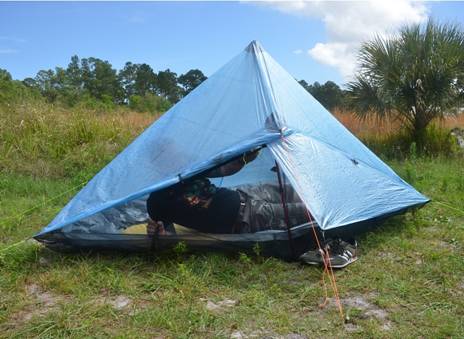
13/05/2015: LET THERE BE LIGHT: Our house is currently lit up like day with these beauties: Phillips 14 Watt 1400 Lumen LED cool daylight globes: These are WONDERFUL! Phillips have pretty much ‘cracked’ the replacement for incandescent globes. These beauties seem to me to put out as much light as the old 100 Watt models (I still have some for comparison!) You can also cluster two, three, four, six or seven(!) of them on one fitting to really light up the joint. Globes available Bunnings approx $18.95; fittings Amazon/eBay: Use search term eg ‘b22 adapter splitter.’
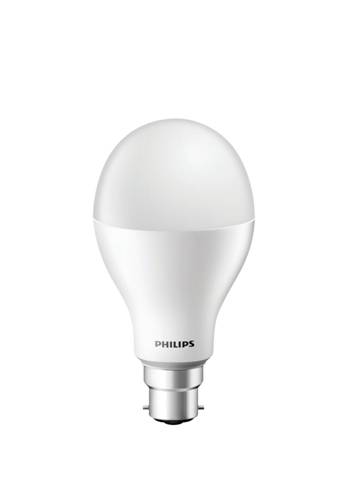
Phillips 14 Watt 1400 Lumen Cool Daylight LED Globe
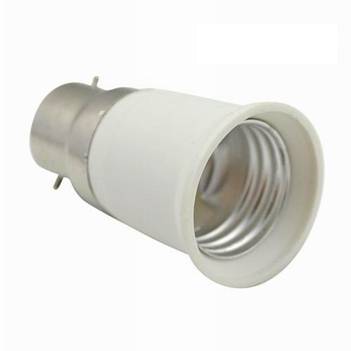
B22 to E27 Adapter
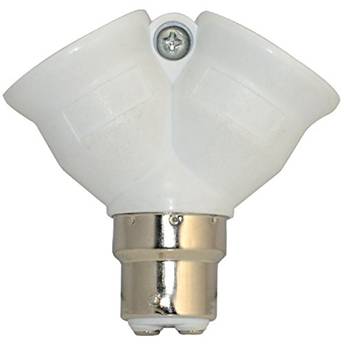
B22 to E27 Double Adapter/Splitter
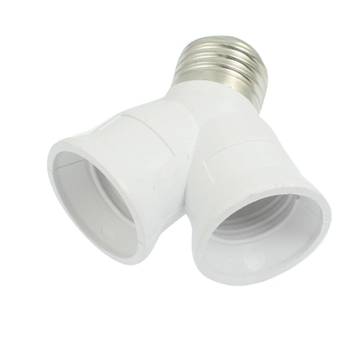
E27 to E27 Double Adapter/Splitter
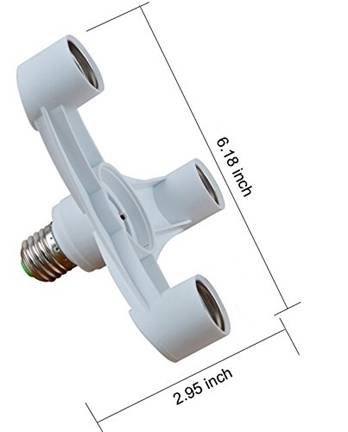
E27 to E27 Triple Adapter

E27 to E27 Quadruple Adapter

E27 to E27 Hextuple Adapter/Splitter
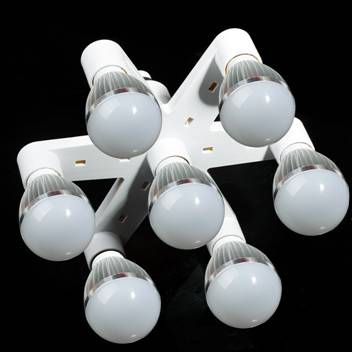
E27 to E27 Septuple Adapter/Splitter
12/05/2015:
‘If you need to cut weight or cost, the Forester tent is a good solution. It's one of the best tents ever devised for a chronic woods loafer, particularly for one who yearns to live close to nature and who objects to spending any of his or her outdoor hours confined in a closed canvas or nylon cell.
The Forester tent is the cheapest of all wilderness tents, either to make yourself or to buy. It's the easiest and quickest to construct and pitch, too. And considering its scant weight and bulk, it's the most comfortable in which to live and do your few camp chores. Also, with the exception of the Whelen lean-to tent, it's the easiest to warm with a campfire out front.
The one weak point of the Forester, at least at first glance, is that if you try to fly proof it, you'll ruin its inexpensiveness and functional simplicity. In bug time, however, it's an easy matter to buy a mosquito bar to drape over the front opening . . . or to make one yourself, or to hang or stake a net closure over your bed.
The Forester tent is triangular in shape when pitched. The smallest practical dimensions for one person, or for two who don't mind a bit of crowding, is about 7' wide at the open front, 3' wide at the back, and 7' deep from front to rear. The peak should stand about 6' above the ground in front, while the triangular rear will be some 3' high. With the entire tent open to the fire in front, the angles are such that heat and light will be reflected throughout the sheltered area. It is, of course, a tent for the wilderness, where poles and firewood are plentiful. This tent is usually pitched with three poles and eight stakes cut at the campsite. The ridgepole should be long enough to extend from the peak and to pass down and out through the opening at the top of the back wall, at such a tilt that it will rest on the ground about 3' behind the tent. Two shorter poles are arranged in front as a bipod brace and, holding the ridgepole at their crossing, run from the peak to the front corners.
The size illustrated in the Image Gallery is for one or two campers, with beds arranged along the side walls. The model I use is made of closely woven, waterproofed cotton that weighs five ounces per square yard, cut and sewn to the shape and dimensions shown in the Image Gallery, with an extra inch being allowed around the edges for hemming.
Note how the bottoms of the sides are angled back 1' to make the tent sit right on the ground. To do this, cut your pattern from rectangular canvas as shown by the dotted lines (see Image Gallery), then angle the front and back. The piece for the rear wall is cut off square at the top, so that when it's stitched to the main body of the tent at the rear, a hole is left at the top of the back wall through which the ridgepole can extend. Total weight for this size Forester tent is about four pounds.’
NB: This weight assumes 12 oz/sq yd canvas is used. If using 1.75 oz/sq yd Tyvek, 1.3 oz/sq yd silnylon or .51 oz/sq yd cuben fibre the weight will be correspondingly much less. You could easily add two ‘wings’ or storm flaps to the front which could be closed at need, and a sewn in floor of (eg 1.3 oz silnylon waterproofed as described here http://jwbasecamp.com/Articles/Silnylon1/index.html) and two overlapping flaps of .7 oz/sq yd insect mesh. You could have an excellent standing room ‘fire tent’ which weighs between 500 grams and 1 kg depending upon materials. PS: I would not leave the gap for a pole. These lighter weight materials don’t need a pole at all but can be simply pegged out – a pole also only creates a drip line.
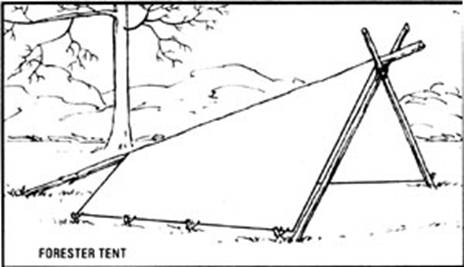
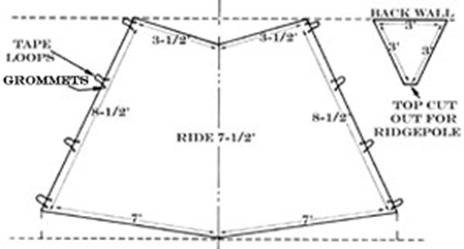

12/05/2015: TIM SEVERIN: WHAT a guy! Not many in modern times have adventured like this chap, eg: The Brendan Voyage (1976–1977), The Sindbad Voyage (1980–1981), The Jason Voyage (1984), The Ulysses Voyage (1985), The China Voyage (May–November 1993), In Search of Moby Dick: Quest for the White Whale (1999): http://en.wikipedia.org/wiki/Tim_Severin
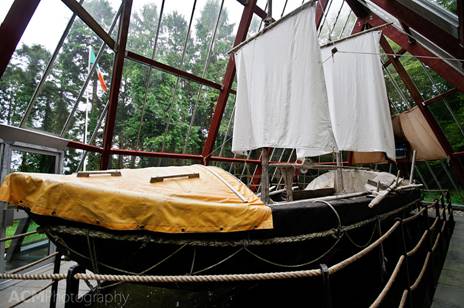
The Brendan at Craggaunowen
11/05/2015: RAILTRAILS: https://www.railtrails.org.au/ Our taxes have been busily at work creating these lately. There are now some really long ones http://www.murraytomountains.com.au/the-rail-trail/ http://www.greatvictorianrailtrail.com.au/ https://www.railtrails.org.au/trail-descriptions/victoria/gippsland?view=trail&id=143 Some could be combined with an existing hiking trail to make an interesting loop walk, eg the George Bass Coastal Walk and the Bass Coast Rail Trail: http://parkweb.vic.gov.au/__data/assets/pdf_file/0003/352803/Park-note-George-Bass-Coastal-Walk.pdf & https://www.railtrails.org.au/index.php?option=com_railtrails&view=trail&id=203&Itemid=244

Trestle Bridge Kilcunda
10/05/2015: LOVELY BOOK: Travels in a Donkey Trap by Daisy Baker: http://www.amazon.com/Travels-Donkey-Trap-Coronet-Books/dp/034020303X
‘A charming memoir. She shares memories of her
past along with her "adventures" in the donkey cart. She looks back
from 1970 to a slower time. We see 1970 as a very different time. What country
road would accommodate a donkey cart these days - certainly extremely few in

09/05/2015: AMAZING TORCH: Pak-Lite Pilot LED Flashlight: Great emergency/hiking light; 80+ hours on the brightest setting and 1200+ HOURS on the lowest from a 9V battery at 45 grams inc batt plus a 10 year shelf life. White and red LED. Also comes with a headband. Some folk have hiked the entire Pacific Crest Trail (2600 miles) on ONE battery: http://www.backwoodssolar.com/super-bright-9v-led-pak-lite & http://www.bestglide.com/pak_light_led_light.html

08/05/2015: KON TIKI: THOR HEYERDAHL: What an
adventure it was: drifting across the entire Pacific Ocean to
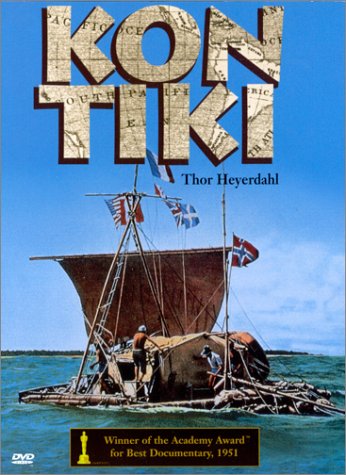
07/05/2015: WAITUTU FOREST FIORDLAND: WARM AIR
POCKETS: One of the things which most surprised us about this beautiful forest
was how warm generally it is – around 3-4C WARMER than nearby Invercargill, so
very similar to

Tiny's Creek Track,
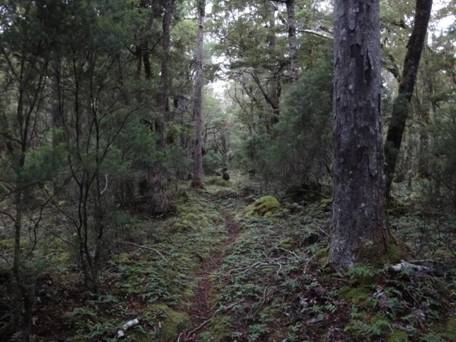
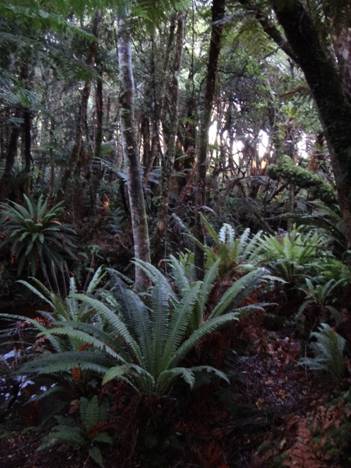
Tiny's Creek,

Old Rimu, Tiny's
06/05/2015: WESTIES HUT: TOPO MAP ERRORS: I have
encountered this once or twice before (also with the Australian series):
Westies Hut, at the end of the South Coast Track is marked in the WRONG
position in the DOC and
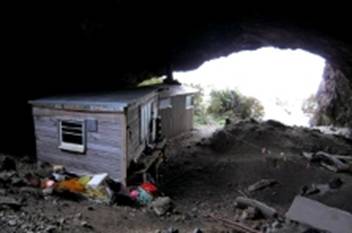
05/05/2015:
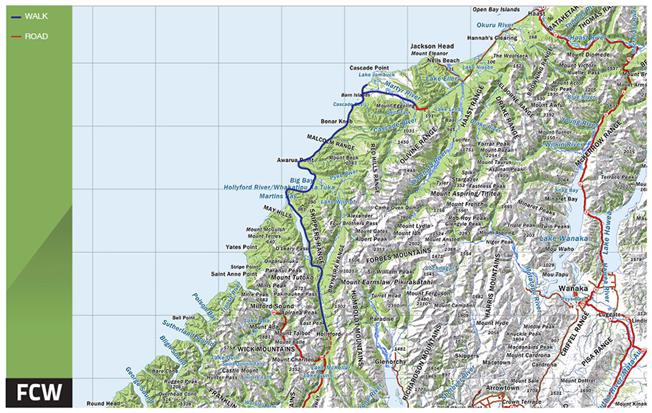
05/05/2015: TESLA BATTERY: This is being touted as our energy ‘salvation’ & etc, at 7 kilowatt hours for $3000, 10 for $3500. It IS cheaper than readily available lead-acid deep cycle batteries: the problem IS NO battery system is CERTAIN in backing up even ONE Day’s demand, yet sometimes the wind doesn’t blow, nor the sun shine for MUCH longer than that. However, at 1,000 recharges per battery the $3500 investment will last you about three years or approx $300 per quarter for 900 kilowatt hours or about $0.33/Kwh, not much more than you pay NOW. Elon Musk has put a ceiling on energy prices. Here where we have SO many blackouts, I would think about installing one and setting it up so it can recharge at the night rate if the sun isn’t shining. It would work out a little more expensive but would be worth it for the pleasure of foregoing the inconvenience of the pumps, fridges, internet, TV, lights etc going out on a regular basis, especially during BUSHFIRES. Of course, such a system COULD also power an eclectic car, such as a Tesla: http://www.treehugger.com/clean-technology/tesla-powerwall-game-changing-batteries-homes-and-businesses-starting-3k.html

04/05/2015: THRILLING TALES #6: A Life on Gorge River; New Zealand's Remotest Family: http://www.odt.co.nz/regions/west-coast/109338/life-bush-family-039beansprout039 Kindle edition: http://www.amazon.com.au/Life-On-Gorge-River-Zealands-ebook/dp/B004R1R4ZM Also see (his & hers versions) http://www.amazon.com.au/A-Wife-On-Gorge-River-ebook/dp/B009AL6FMC
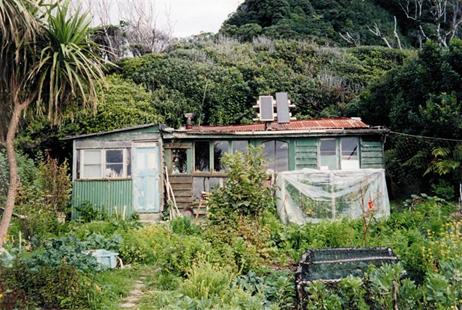
The Long family home Gorge River South of Haast in remote Sth Westland Fiordland NZ.
04/05/2015: This son of Clive Sinclair (who bought us the PC) shows there is still some inventiveness in the family yet: http://www.treehugger.com/bikes/bounce-trucks-your-babel-bike-worlds-safest-bicycle.html
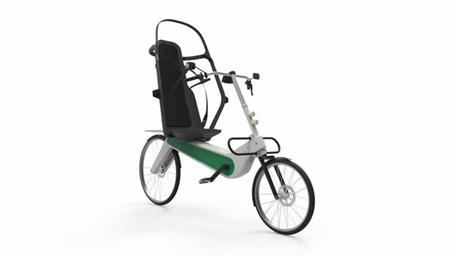
02/05/2015: SPOT: Della: We are very lucky to still have our little Spot to
cuddle tonight. ..Today, while helping me in the garden, he took a moment to
indulge his penchant for car - chasing. Oblivious to my shouts, he accosted the
car as it took the bend but didn't count on the huge, old - style caravan it
was towing. I heard the sickening thud and high - pitched yelp and ran to find
him sprawled semi - conscious on the road. Amazingly, he seems to have come through with only some
head and neck pain which is responding to medication. Hopefully he will recover
fully, but his outside forays will be restricted to the back garden until the
front fence is Jack Russell -proof! (NB the neck wound in the pic is a pre
existing skin rash). 03/05/2015:
He seems quite normal
this morning. TODAY I was to take him on a two day expedition to the '
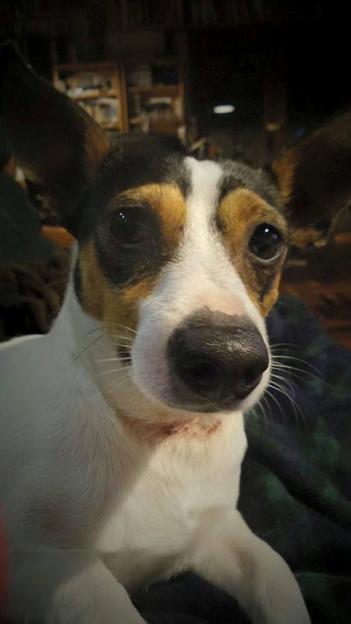
03/05/2015: THRILLING TALES #5: SHACKLETON: 99 years
ago today Ernest Shackleton was half way between
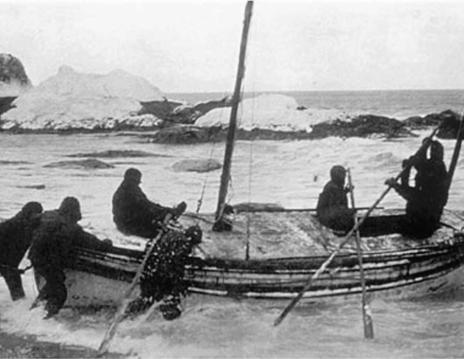
Launching the lifeboat (with improvised deck!) from Elaphant Island.
02/05/2015: JEERALANG DEER: It is now common to
encounter deer sign on our evening walks though when we moved here a quarter
century ago it was exceeding rare: you could search all day for sign and yet be
in doubt. Now FOUR species of deer inhabit the forests behind us: red, sambar,
fallow and hog deer. During WW1 sambar were SO common on this (South) side of the
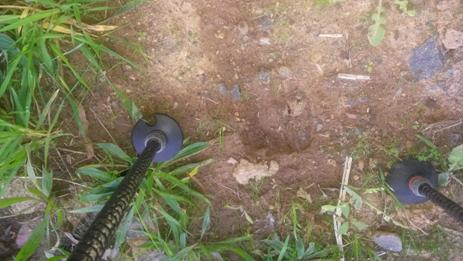
01/05/2015: INVISIBLE WORLDS: On Sunday I noticed one of these (a Grey Butcher Bird) killing one of these (an Indian Spotted Dove) as I emerged from my shift at the Yinnar General Store. The former are fearsome predators of small birds and other critters (often impaling their carcasses on branches, etc in order to devour them later, but this one had taken on a young bird (no adult plumage) which was even larger than itself. There is no doubt in my mind he would have succeeded in making it quite dead though, so I quickly slipped it in my pocket and brought it home for Della. It seems to have made a complete recovery and is living happily in her quail cage.
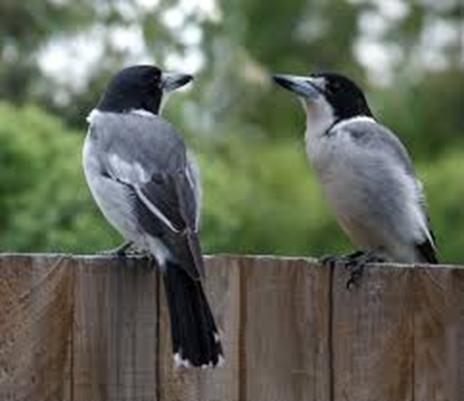
Grey Butcher Bird
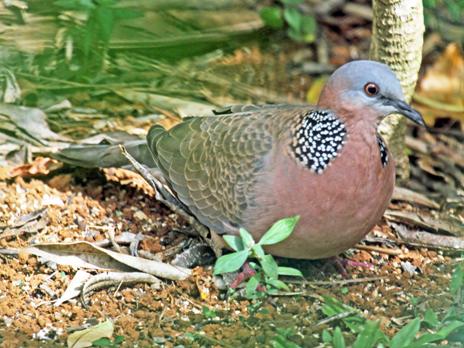
Indian Spotted Dove
01/05/2015: WARM BLOODED: ‘Life uses information (stored in DNA) to capture energy (which it stores in a chemical called ATP) to create order. Humans burn prodigious amounts of energy — we generate about 10,000 times as much energy per gram as the sun. The sun is hotter only because it is much bigger.’ http://www.rationaloptimist.com/blog/the-vital-question.aspx
30/04/2015: MANY THANKS/NEW SITE: My wonderful daughter Merrin and son Bryn are helping me move my hiking blogs to new, young/mobile friendly ones eg here (http://www.theultralighthiker.com/ ) from their current unfashionable addresses/formats, eg here (http://www.finnsheep.com/Ultralight%20Hiking.htm) The work has just begun, but the results look set to be STUNNING.
30/04/2015: HIKING FOOD/CUSTOMS GESTAPO: We had a bad trip with one of these guys at Queenstown airport. Every other time I have been in NZ, they accepted I knew what I was doing, had cleaned my gear properly, had only proper hiking food (no dangerous, illegal imports etc), but this time we encountered a Pommie import who had not worked out that the colonies were long since independent. He went through all our stuff with a fine-toothed comb such that we nearly missed our hire car (they closed at 5:00 pm, and this guy delayed us for an HOUR!. Eventually he confiscated Della’s delicious home-dried Spag Bol and Cottage Pie (no ‘country of origin labelling and barcode! Even though I told him I was going to EAT it for goodness’ sake!) We will have to fix THAT up in future. Immediately we were free of the nazi (and had a car) we were forced to hie us around all the supermarkets to see what subs we could come up with for FOUR delicious dinners! It really takes the edge off your trip if you have to eat those awful ‘Backcountry Meals’ this Nazi must have had shares in. Mostly even our dogs won’t touch them! I will be posting more about delicious meals which can be made from common supermarket items – with which in mind, NB that delicatessen salami (having been properly smoked/salted) is marked ‘keep in a cool dry place ie does not need REFRIGERATION (eg Tibaldi ‘Felino’ salami : http://www.tibaldi.com.au/products/salami-range/ . It should be included therefore (along with sachet tuna, Chinese sausage and Kraft cheese) as an addition to the ‘meat’ component of otherwise often bland dehydrated meals.

29/04/2015: RAIN KILT: This interesting zpacks innovation worked really well for me, keeping me warm (but not too) and dry above the knees, and providing a dry seat whenever I wanted to rest on a log. At 54 grams you are hardly going to notice it in your pack. I don’t CARE if they look silly. Della craves a pair of their ‘Challenger Rain Pants’ as she feels her nylon Mountain Laurel Designs rain chaps have outlived their usefulness. They are VERY hard to keep up. Her wish is my command! http://www.zpacks.com/accessories/cloudkilt.shtml
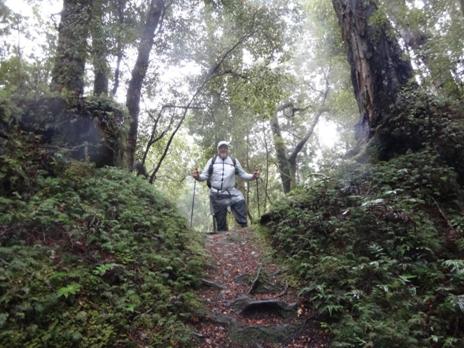
Men in skirts: ask the Scots; ask William Wallace!
28/04/2015: WILKIN-YOUNG
Track: FIORDLAND: Like Westies Hut, this one is on my ‘bucket list’. One of our
two ‘rest’ days we enjoyed an hour jetboat ride down the Makarora and up the
Wilkin as far as the Kerin Forks hut (NZ$119). The other day was spent doing
the laundry and getting there! If we had been a little earlier (or had not had
sore knees), for NZ$399 (http://www.wilkinriverjets.co.nz/) you can
take a helicopter ride around the Mt Aspiring glaciers, view the icebergs in
Crucible Lake (summer is calving season!), land at Siberia Hut, walk back three
hours to Kerin Forks and jetboat ride back to Makarora. This would be a GREAT
day! Or you can walk the full
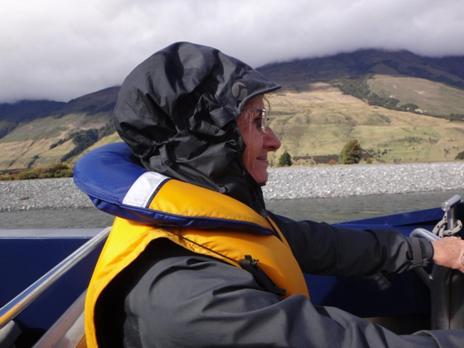
Della LOVES those jetboats...
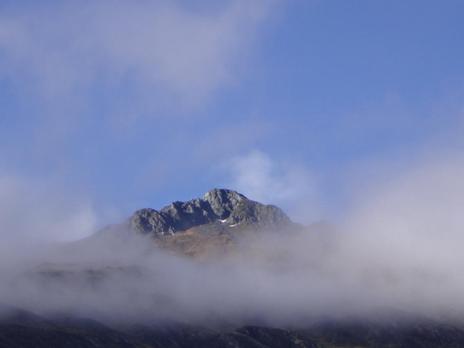
Crowning glory, Wilkin River.
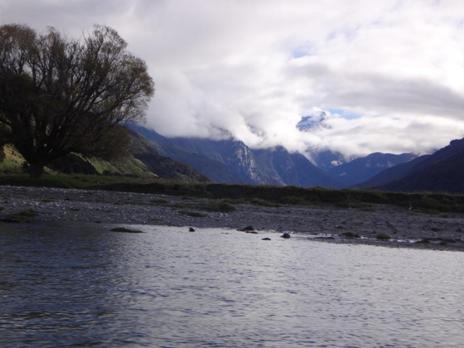
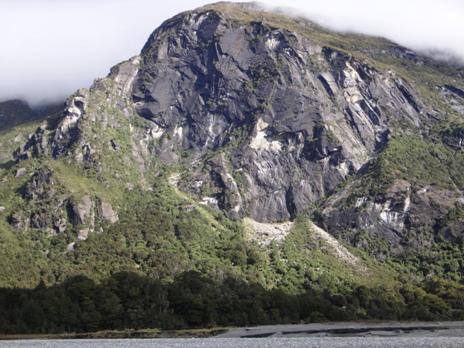
Granite formation, Wilkin River.

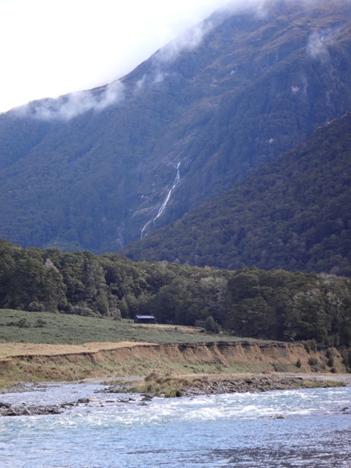
Kerin Forks DOC hut, Wilkin River.
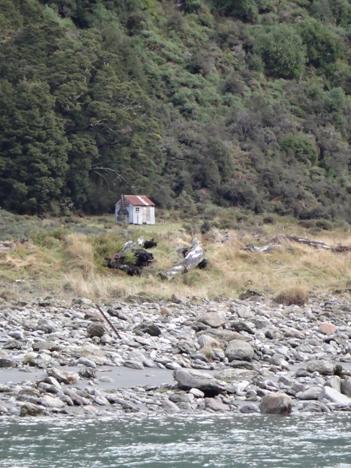
Old deerstalker's hut Kerin Forks, Wilkin River.
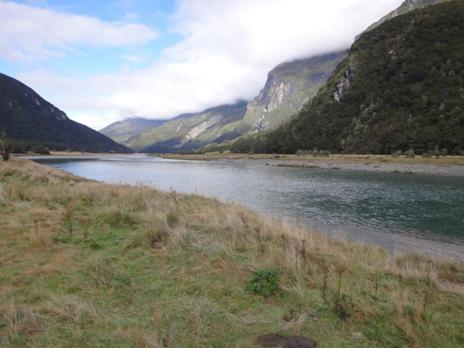
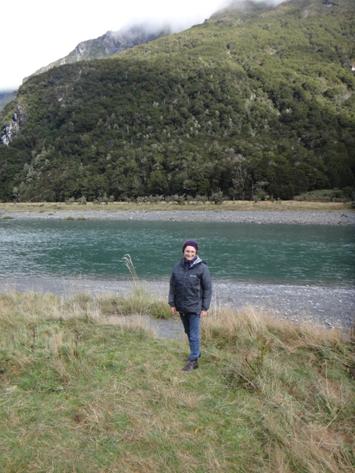
The Wilkin Maid.
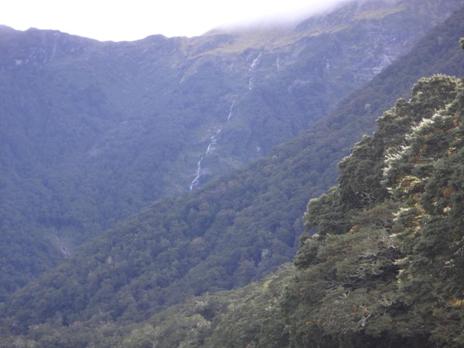
Truly VAST waterfalls, Wilkin River.
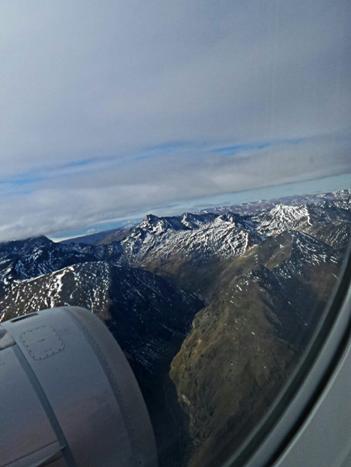
Farewell to Fiordland for another year...
28/04/2015: ION IDRIESS: When I was a lad I thrilled to the works of Ion Idriess http://en.wikipedia.org/wiki/Ion_Idriess (and Nevil Shute: http://en.wikipedia.org/wiki/Nevil_Shute ‘A Town Like Alice’, ‘On the Beach’, etc) I still wonder at his retelling of the Kidman story (‘The Cattle King’) I confess I have not read the wonderful book reviewed so capably here: https://quadrant.org.au/magazine/2011/09/ion-idriess-and-the-desert-column/ regarding his ‘adventures’ at Gallipoli and with the Australian Light Horse in Palestine, but I certainly shall. After you read the review, you probably will too! You can download it here: http://www.nzmr.org/pdf/the_desert_column.pdf
28/04/2015: EPISTEMOLOGY: You have several times heard me prattle on about one of my great teachers, the late Prof David Armstrong of Sydney Uni…Most every science STARTED out as a branch of philosophy (which yet has much to offer). Let’s NOT forget that Einstein also said this: ‘How does it happen that a properly endowed natural scientist comes to concern himself with epistemology? Is there no more valuable work in his specialty? I hear many of my colleagues saying, and I sense it from many more, that they feel this way. I cannot share this sentiment…Concepts that have proven useful in ordering things easily achieve such an authority over us that we forget their earthly origins and accept them as unalterable givens. Thus they come to be stamped as “necessities of thought,” “a priori givens,” etc. The path of scientific advance is often made impassable for a long time through such errors. For that reason, it is by no means an idle game if we become practiced in analyzing the long commonplace concepts and exhibiting those circumstances upon which their justification and usefulness depend, how they have grown up, individually, out of the givens of experience. By this means, their all-too-great authority will be broken.’ http://www.pbs.org/wgbh/nova/blogs/physics/2015/04/physics-needs-philosophy/
27/04/2015: WAIRAURAHIRI
TO RARAKAU: FIORDLAND # 5: Following our gruelling walk to the

Farewell: Waitutu Lodge caretakers Pete and Rose Baldwin. Great hosts.
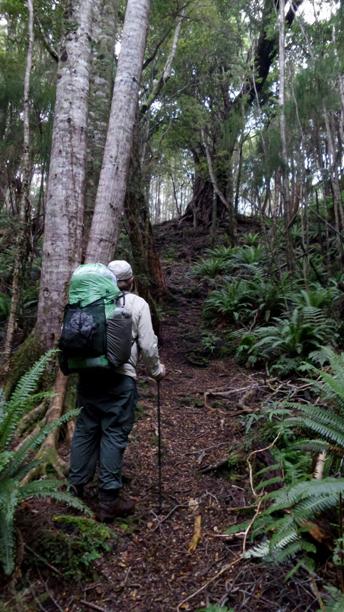
The road goes ever on and on...
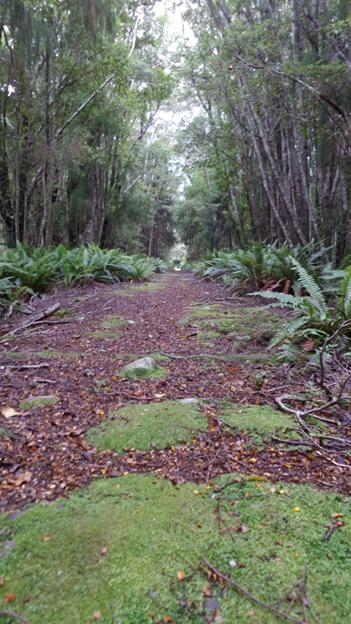
And is often awesomely beautiful...

The wooden sleepers have weathered well their ninety years...
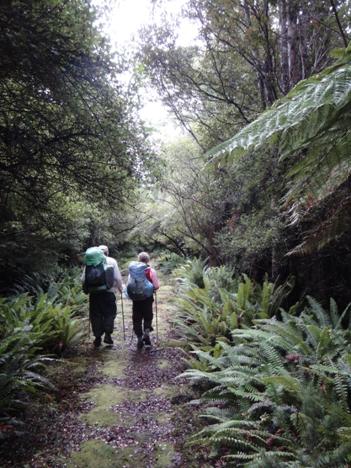
We can still hobble on a little further yet...
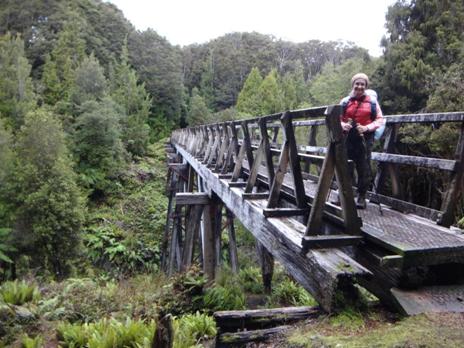
Edwin Burn Trestle Bridge.
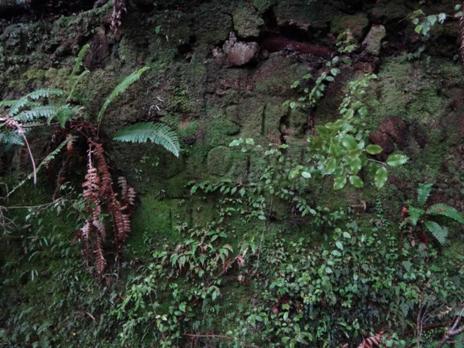
Railway embankment inscription; I can make out 'Don't', but I don't know WHAT!
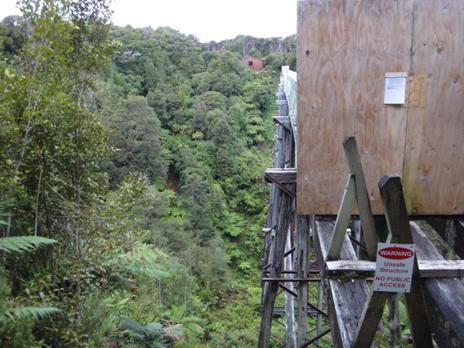
Percy Burn trestle and hut; you can even get a hot shower here!
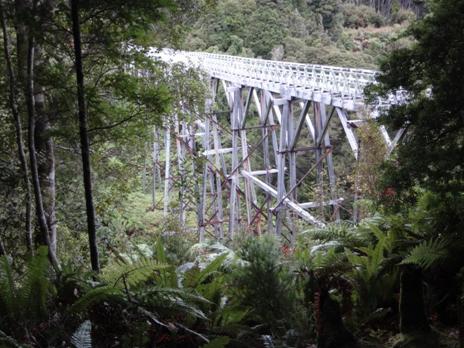
Percy Burn Wooden Trestle bridge, the largest in the world : 125 x 36 metres.
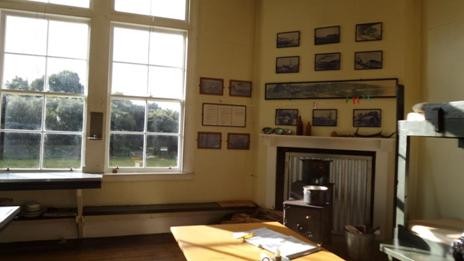
Port Craig schoolhouse, our warm, dry home for a night. On the wall are photos of 1920’s students – see last year’s post 9&10/04 2104.
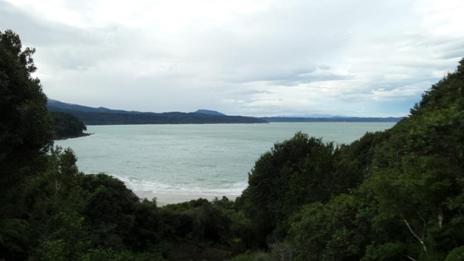
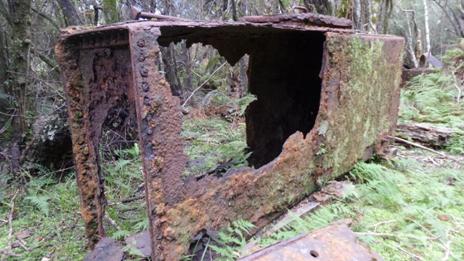
A reminder of yesteryear at Port Craig.
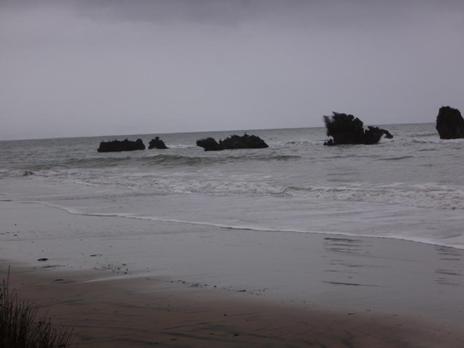
26/04/2015: OCA (Yams = Oxalis Tuberosa): Pete & Rose Baldwin at the Waitutu Lodge (http://www.waitutu.co.nz/) were growing these prolifically in their vegie garden. I had never seen them before, but obviously they would grow equally well in Southern Vic. I will be planting some this year: http://greenharvest.com.au/Plants/Information/Oca.html

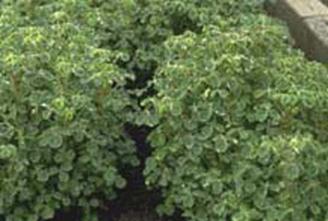
26/04/2015: WAIRAURAHIRI
TO WAITUTU: FIORDLAND 2014 #4: After a delightful night at the Waitutu Lodge (http://www.waitutu.co.nz/) we headed out towards the Waitutu River at 9:30,
plenty of time for the 5 hours the sign at the Wairaurahiri Hut (and the DOC
brochure opined), we thought. Little did we know that the signs at the
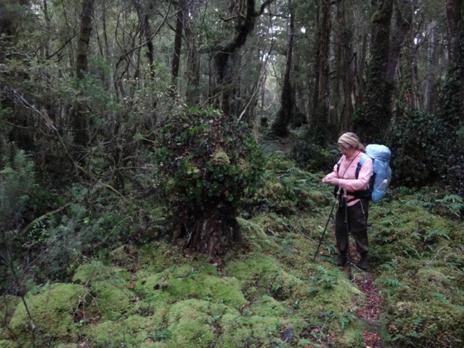
Frequent stops to photograph interesting moss might have slowed us down too!
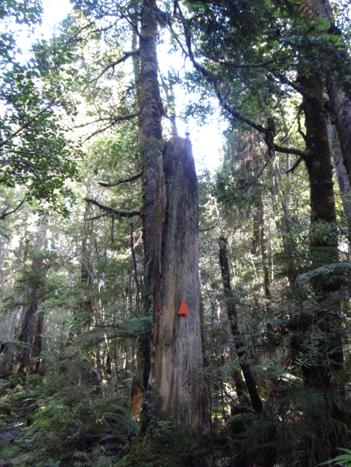
Telegraph Line remnant: tree stump with insulator atop.
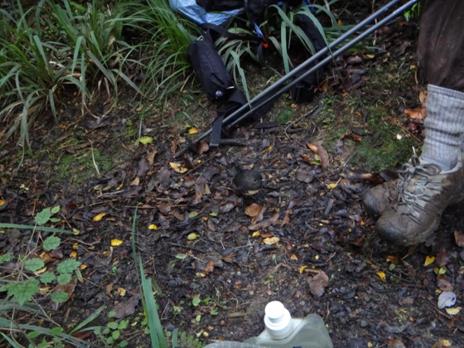
NZ birds are very friendly: this guy wanted to share our lunch (both ways)!
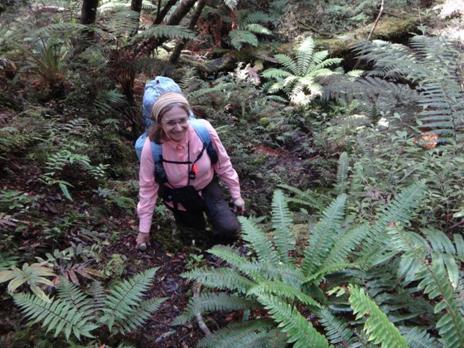
Some steep scrambles up and down through gullies.
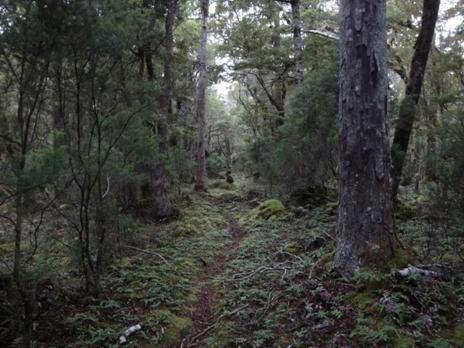
Typical track scene, often muddier.

Crossing the Waitutu.
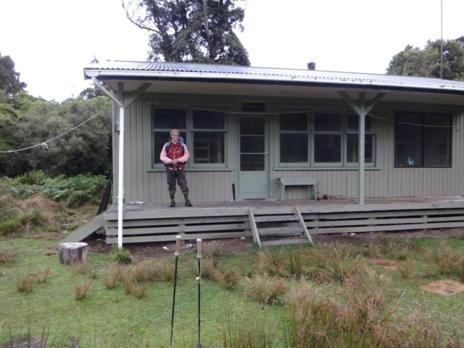
DOC hut
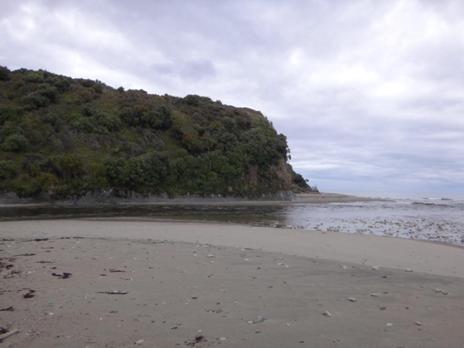
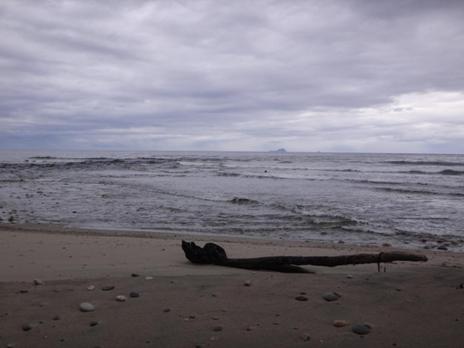
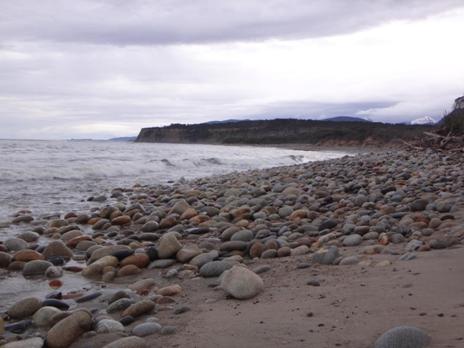
25/04/2015: (VICTOR FRANK)
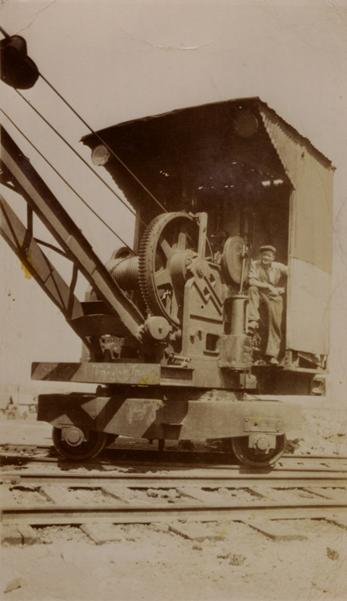
25/04/2015: THRILLING TALES #4: ‘The Far Horizons’ 1955 is a retelling of Lewis and Clark’s famous expedition1of 1804-6. Boy those old guys (I was minded of ‘our’ Bass & Flinders for comparison) could really travel the country. (get your copy here: https://kickasstorrents.im/the-far-horizons-1955-dual-audio-eng-spa-gem-share-t4907276.html) : http://en.wikipedia.org/wiki/The_Far_Horizons
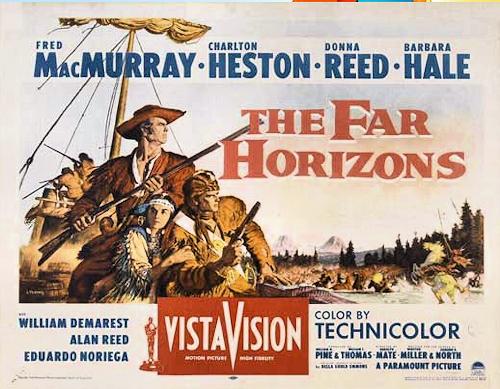
25/04/2015: FIORDLAND
2014 #2: There was a huge dump of early snow the night before we arrived in
Queenstown. Snow lay right down to the road along Lake Wakatipu and even across
the road (having been cleared with snow ploughs making one metre high drifts on
the side of the road in places eg on the road down from Te Anau to Tuatapere –
see photo.) It was fortuitous for us that this occurred (though we WERE
trepidatious unnecessarily about the temp) as it spilled enough water into the
river (which had been too low) to allow us a thrilling jet-boat ride down the
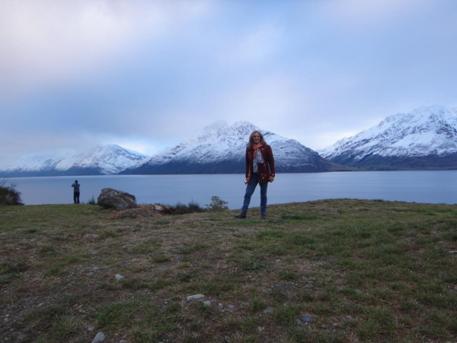
Snow,
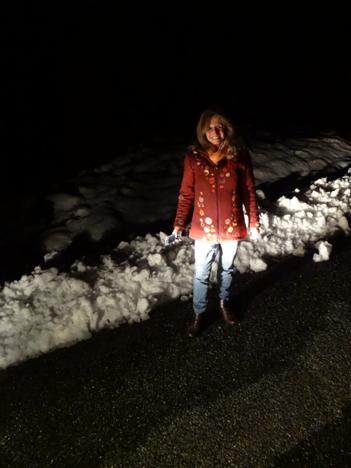
Snowdrift between Te Anau & Tuatapere

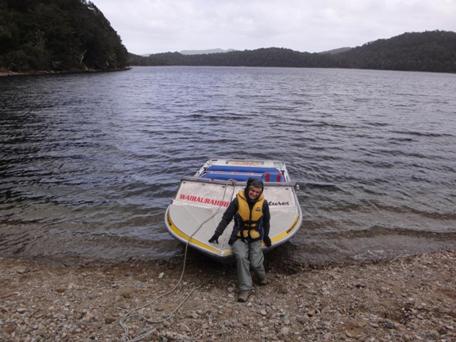

Jetboating:

Jetboating:

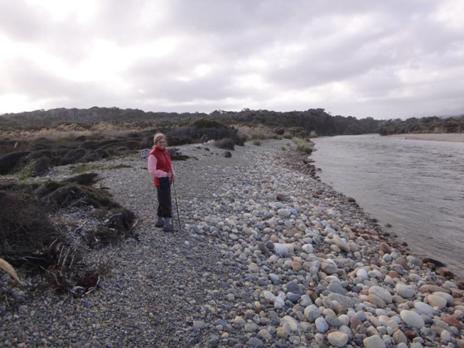
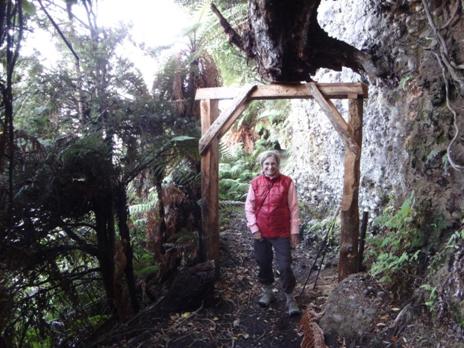
Riverbank detail
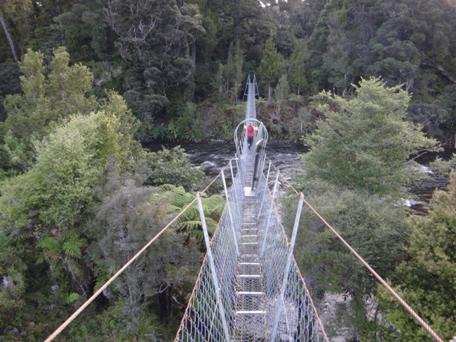
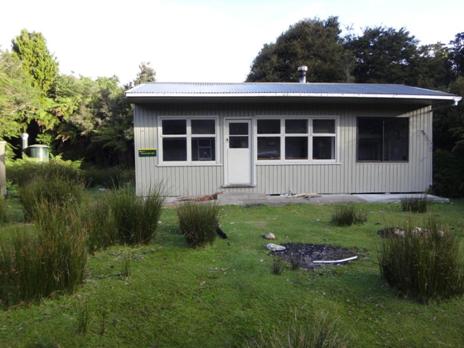
DOC hut:
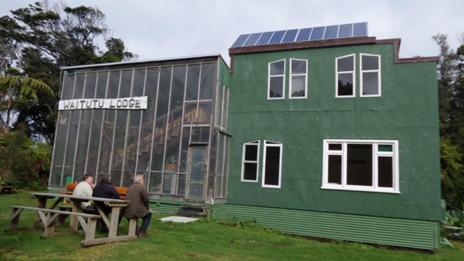
Sunny afternoon at the Waitutu Lodge
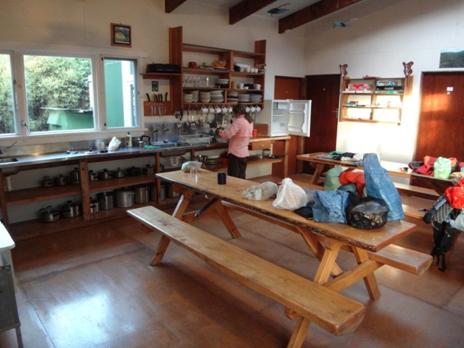
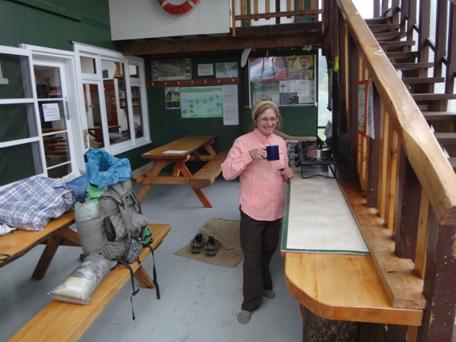
Cuppa time:
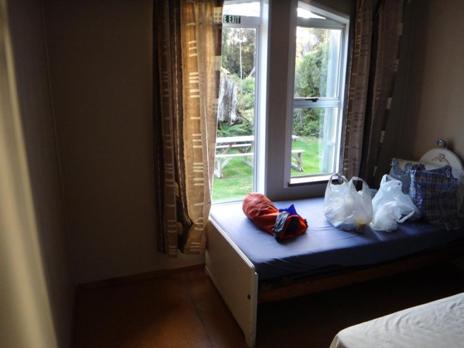
24/04/2015: A WALK
IN FIORDLAND: Home from the
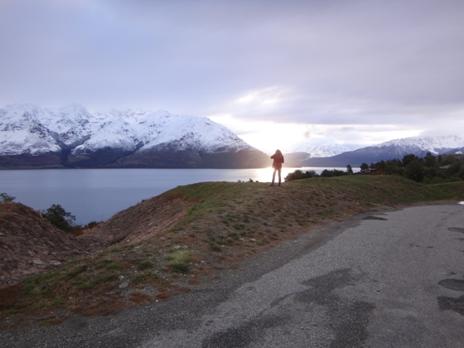
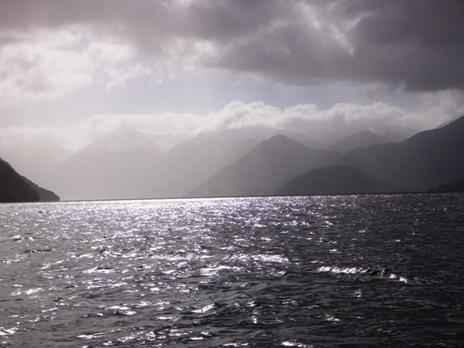
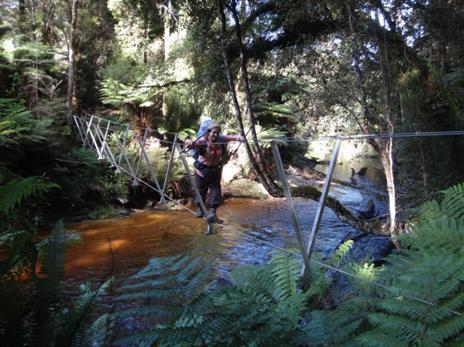
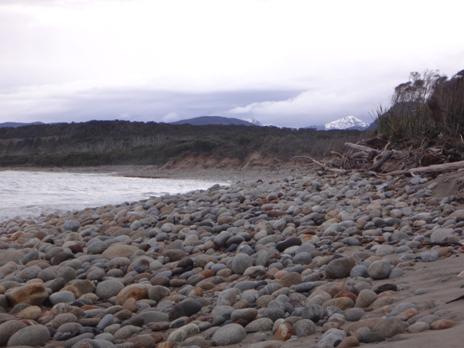

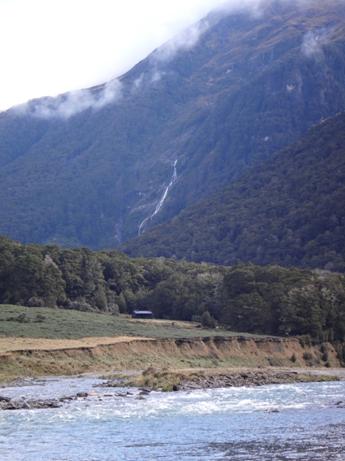
Kerin Forks Hut Wilkin-Young Track Fiordland NZ
13/04/2015: Della: The next hiking adventure begins! Heading off today to conquer the South Coast Track of New Zealand for 6 days with only our backpacks and stamina. Stay tuned for pics and reports when we return to civilization. (NB this pic is an old one of Steve and I attempting to conquer the south coast track in Tasmania (same name, different island!) a few years ago; now we are older and wiser, ...will that help??? smile emoticon ) The weather forecast is not particularly auspicious, with a reasonable dose of rain expected, but what are raincoats for?! Wish us luck! http://www.doc.govt.nz/…/things-t…/tracks/south-coast-track/
13/04/2015: MOTORBIKE HITCH CARRIER: I have been looking at getting one of these for my motorcycle. Unfortunately all those available are either too low, weak or unstable. Some stick out horizontally at least 750mm (some even drop DOWN). Even the rear tie-outs are horizontal instead of angling up 45 deg. They would BOTTOM dreadfully. Nearly all depend on the one central Hayman Reese receiver point when it would be a simple matter to weld two more of these on each side to give greater strength and prevent sway. (In either case you will have to refer to your towbar’s weight capacity and may have to modify shocks etc to compensate). One of my first jobs when I come home will be to build one. The steel has cost well UNDER $100 whereas folks are wanting to charge sometimes OVER $1,000 for these items, so a bit of handyman stuff WILL save money. These folks have some useful bits if you are not so handy: http://www.hitchmate.com.au/ & https://www.etrailer.com/dept-pg-Accessories_and_Parts-pc-Hitch_Adapter.aspx
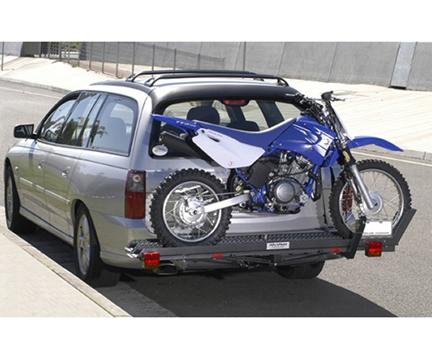
12/04/2015: TRICK KNEE: Things have been conspiring against our upcoming Fiordland hike. We survived the dreaded Lurgi only last week. Yesterday my trick knee decided it would show me a couple of new tricks (just after I had booked the flights!) and is still having conniptions this morning. Still I have completed a number of long walks with it before…hoping the exercise will gradually smooth it out. Can’t be as bad as dragging myself through the Dusky in 2012 with (effectively) a severed spine! Well, I hope not anyway. Nearly all packed and ready to go. You can expect a bit of a break from us for a week or so…Incidentally I find this just about the best knee brace.
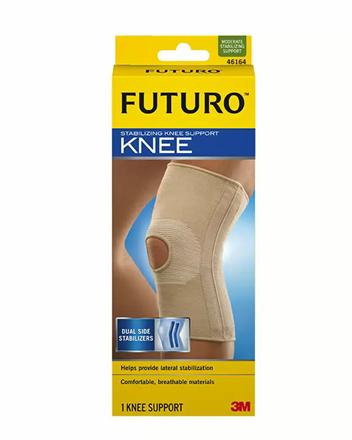
12/04/2015: MEANINGLESS UNIVERSE: Far too many young folks think so – but they are wrong! I woke in the night having a philosophical dream, the result of a mis-spent youth at Sydney Uni perhaps. Its motto, ‘Sidere Mens Eadem Mutato’ (Horace = 'the stars change, the mind remains the same’) has a deep resonance with me still. What a privilege it was for Della and I to attend that great institution (in its heyday!) courtesy perhaps of our and Menzies ‘Commonwealth Scholarship’?) I yet remember many night-time conversations (I was a night student all my University studies) with our greatest philosopher the (late) David Armstrong outside his rooms underneath ‘the tree in the quad’, the tree which was planted (as was the quad - to mirror Bishop Berkeley’s tree & Oxford Uni). The tree which remained, as it was ever perceived by God. David was the C20th greatest Empiricist. A privilege also to have been his student. Certainly he would not have found the universe meaningless; indeed (as my dream concluded) such a concept is IMPOSSIBLE. Only a hypothetical universe WITHOUT an observer would (necessarily) BE; ours could not! It may even be ‘the best of all possible worlds’ as Leibniz maintained. Certainly, despite even this trick knee, the prospect of a week’s walking (hobbling) in the wondrous enriching forests of Fiordland leads me to conclude, it IS!
10/04/2015: BUCKET
LIST#2: Crucible lake (with its icebergs) Gillespie Pass/Wilkin-Young Circuit
via
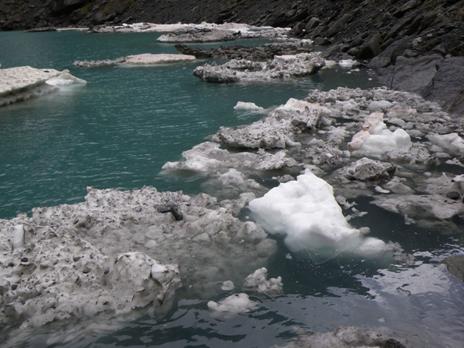
10/04/2015: BUCKET
LIST#1: Westie’s Hut: built in a sea-cave at Price's Harbour on the South Coast
Walk Fiordland New
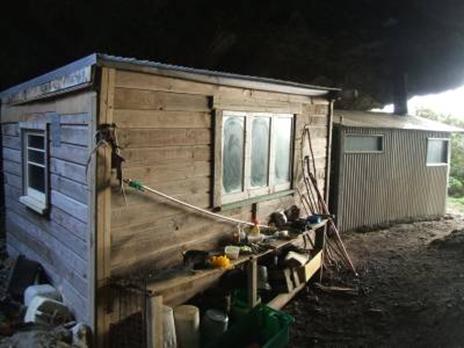
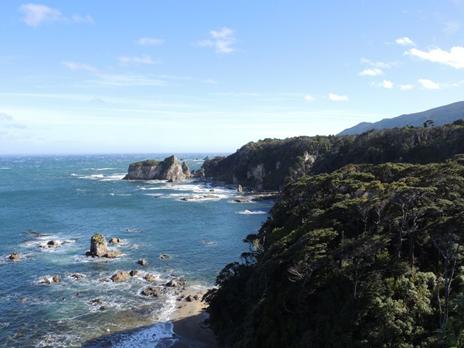
09/04/2015: THRILLING TALES #3: John (Jeremiah, ‘liver eating’) Johnson: If you love Robert Redford (as Della does) you will love this old film (‘Jeremiah Johnson’ 1972, a classic!) Also see ‘Mountain Man’ by Vardis Fisher and ‘The Avenging Fury of the Plains’ Dennis J McLelland (both avail Amazon). ‘In 1847, his wife, a member of the Flathead American Indian tribe, was killed by a young Crow brave and his fellow hunters, which prompted Johnson to embark on a vendetta against the tribe. The legend says that he would cut out and eat the liver of each man killed.’ I particularly like this tale: ‘of being ambushed by a group of Blackfoot warriors in the dead of winter on a foray to sell whiskey to his Flathead kin, a trip that would have been over five hundred miles (805 kilometers). The Blackfoot planned to sell him to the Crow, his mortal enemies, for a handsome price. He was stripped to the waist, tied with leather thongs and put in a tepee with only one, very inexperienced guard. Johnson managed to break through the straps, then knocked out his young guard with a kick, took his knife and scalped him, then quickly cut off one of his legs (as you WOULD!) He made his escape into the woods, surviving by eating the Blackfoot's leg, until he reached the cabin of Del Que, his trapping partner, a journey of about two hundred miles (322 Kilometers)’ WELL DONE: http://en.wikipedia.org/wiki/Liver-Eating_Johnson
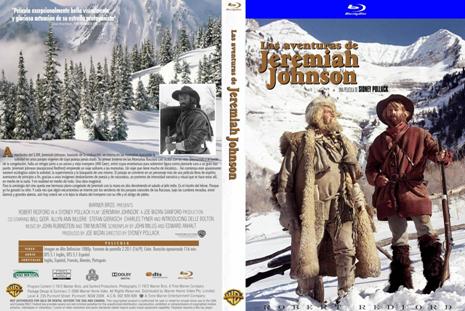
08/04/2015: HOW TO DISAGREE: The most convincing form of disagreement is refutation. It’s also the rarest, because it’s the most work. Indeed, the disagreement hierarchy forms a kind of pyramid, in the sense that the higher you go the fewer instances you find. To refute someone you probably have to quote them. You have to find a “smoking gun,” a passage in whatever you disagree with that you feel is mistaken, and then explain why it’s mistaken. If you can’t find an actual quote to disagree with, you may be arguing with a straw man. http://www.paulgraham.com/disagree.html

08/04/2015: If you thought the Poms were a conservative lot, you were right: http://neveryetmelted.com/2015/03/19/dna-shows-that-tribal-identities-persist-in-britain-1400-years-later/
07/04/2015: FREE WILL: Every ex-smoker KNOWS you CAN choose to change your life. Why, my ‘no booze’ diet has already scythed 10Kg from my avoirdupois, 25% of my target, since 21 Feb! Indeed much of (every Easter’s) Christian message is surely about the dichotomy between ‘free will’ and determinism’. Contrary to the Left’s cant that we are all merely VICTIMS of immutable historical forces (curable only by handing over every control lever to THEM!), Christ’s message was that we can CHOOSE our own salvation. Now I wholly disagree with him on the details of that. Anyone who harbours the slightest notion that there exists a single God and an afterlife or that ANY prophet can foretell the future is clearly an unscientific fruitcake. HOWEVER, we CAN choose to change our lives. ANY of us can. We can, for example, decide to repudiate all this victimhood and remediation gobbledegook, and declare that it IS in the individual’s power to change the world; that it is in the free market of free individuals that prosperity and freedom lie, not in socialism’s deadly state controls…we can also act together to bring an end to the TYRANNY of BELIEFS, and to the dangers of NUCLEAR HOLOCAUST – and MUCH MORE!
07/04/2015: VETWRAP Review: A 2 metre (x100mm) roll of this colourful elastic bandaging (available at horse supplies etc) is 15 grams lighter then the more traditional elastic bandage, and since it sticks to itself stays in place better. It is good for an emergency bandage, but it is almost impossible to RE-USE it, so if you are likely to need it for several days (likely) it is probably better to stick with the old one. Shown here is my old elastic bandage which has been in (& out) of my pack for thirty years (still with my firstborn’s nappy pin I see!) which still after many uses rolls up in ten seconds. I have been trying to re-roll the pink one for ten minutes, and this is as far as I got!

06/04/2015: You might also remember THIS one: Donovan’s ‘The Universal Soldier’: https://www.youtube.com/watch?v=A50lVLtSQik You MAY have forgotten it was written by Buffy Saint Marie: https://www.youtube.com/watch?v=j6imjvgJFvM You MUST remember her lyrics from the great film “Soldier Blue’ https://www.youtube.com/watch?v=WxXtaj051LA Where WERE you in the 70’s anyway?
06/04/2015: On a lighter note, you might enjoy this short Canadian film based on Les Voyageurs, (French-Canadians who ‘conquered’ the West with their giant canoes from the C16th onwards. What a great time to have been alive: https://www.youtube.com/watch?v=m-RNt4wNxb4
05/04/2015: http://laughingsquid.com/a-healthy-breakfast-of-yogurt-peach-and-apple-disguised-as-an-egg-and-fries/

05/04/2015: THRILLING TALES #2: John Colter who was
famous for his adventures with Lewis and Clark (see the 1955 movie 'The Far
Horizon'), for discovering
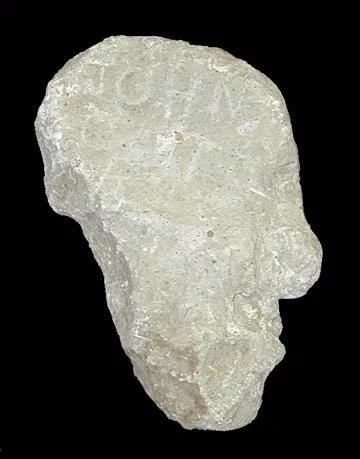
05/04/2015: LURGI: This weekend I begin to know something of the man's suffering as a misspent youth hanging around The Cross (like too many others today!) Della brought home the dreadful Lurgi from some crafty misadventure or another. She suffered with it most of last week taking to her bed until she finally (generously) imparted it to me too which has put paid to all my necessary farm preparations for our NZ hiking trip which may well be postponed for this autumn at least: at present neither of us would make a couple of kms let alone the nearly 100 we planned to walk!

05/04/2015: I am NOT so confident. I would have
BOOKED this weekend. The rainfall forecast seems auspicious enough, but I still
have a major job of work to do, then there is being well enough to walk 100km!
I have found Southern Tasmanian rainfall plus approx two days good enough for
05/04/2015: THRILLING TALES: The Wreck of the Commerce (1815) http://en.wikipedia.org/wiki/Sufferings_in_Africa You can read Riley's complete account here: https://archive.org/details/authenticnarrati00rile

04/04/2015: ‘Extinct’ polies devour ‘extinct’ Fin Whale:
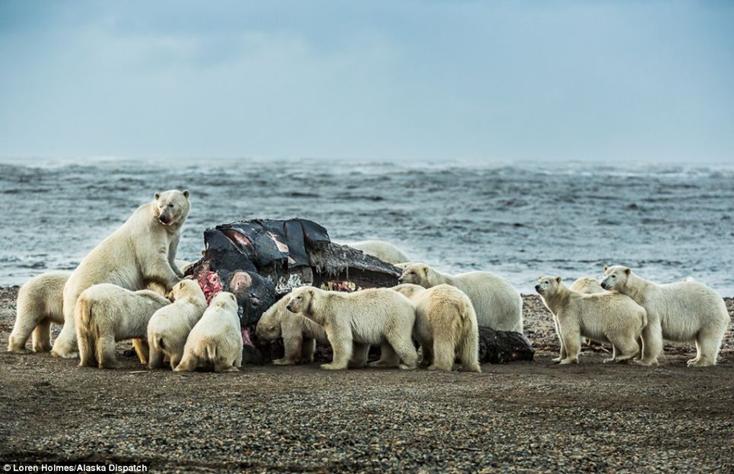
03/04/2015: Many great hiking food recipes: http://www.trailcooking.com/

02/04/2015: GOOD NEWS doesn’t get much better than this: Israeli Company's Vaccine Blocks 90% of Cancer Types: http://www.israelnationalnews.com/News/News.aspx/189429#.VRvV2-FnPcu
02/04/2015: FUSION:
I guess everyone who has read any sci-fi knows the term ‘Bussard Ramjet’. You
may be more surprised to learn that it is REAL: http://en.wikipedia.org/wiki/Robert_W._Bussard
I would guess that in the future Robert Bussard WILL be remembered as one of
the C20th GIANTS (and pygmies like Obama BEST forgotten). I confess I did not
know he had claimed to have ‘cracked’ nuclear fusion, but it seems he might
have (http://wattsupwiththat.com/2015/03/31/the-lost-nuclear-fusion-reactor-design/)
which would certainly add weight to Lockheed’s recent claim that they will be
SHIPPING (portable) nuclear fusion reactors in 2017, and that they will have
completely replaced all other sources of energy by 2050! Maybe instead of
contemplating a career in some wishy-washy touchy-feely TAFE crap, you should
think about Nuclear Engineering; Oh, but we closed our last such Uni course in
02/04/2015: New Zpacks ultralight TENT with sewn in bathtub floor and insect screen: What a beauty, for 1.5 hikers at 536 grams including stakes: http://www.zpacks.com/shelter/altaplex.shtml

01/04/2015: VERMIN-PROOF FENCE: Electrified Ringlock! I fenced a previous farm like this (and it worked a treat). Now I intend to re-fence our home property similarly. I will pin 30cm rabbit-proof netting to the bottom earth wires and to the ground inside. The grass will grow through it and anchor it. After that nothing will come through (or under) this fence, neither animal nor human vermin. Birds can clearly fly over it to a safe refuge. Eventually I will place nest boxes on all my strainer assemblies. Similarly small animals (possums, antechinus etc) will fit through or climb over the weldmesh gates. The gates need to be quite tight-fitting and have a pipe or pole buried under them. Our sheep will be unmolested and raise their lambs without fox predation. It WILL take a while. I have quite a few kilometres of fence to replace over the years; this was just the first. The plastic elements are from DM Plastics. I think you could just use a number of Pinlock insulators (three?) instead of the triangular sleeve – it may also be cheaper.

01/04/2015: ENELOOPS: If you haven’t discovered these wonderful rechargeable batteries, you are in for a TREAT. Unlike conventional’ rechargeables they maintain their charge almost indefinitely. The batteries are low self-discharge NiMH, which lose their charge much more slowly than ordinary NiMH batteries; 10% in the first year, compared to about 4% of their charge per day of storage (for conventionals). Some of these little guys can be recharged up to 3000 times! Sanyo also have a nifty fast charger which recharges four AA/AAAs in a few minutes. All avail Dick Smith stores: http://en.wikipedia.org/wiki/Eneloop
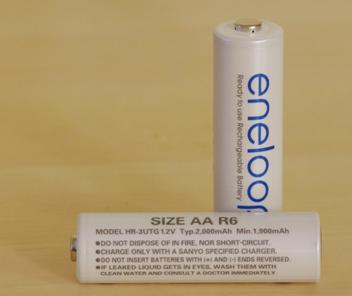
31/03/2015: CLOUDKILT: If you get too hot in rain pants (I certainly do) this might be the solution for you at only 54 grams and $59 – if you can put up with looking a little silly! (Still girls wear them all the time)! http://www.zpacks.com/accessories/cloudkilt.shtml
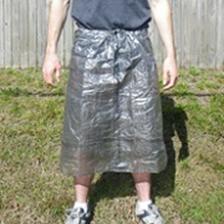
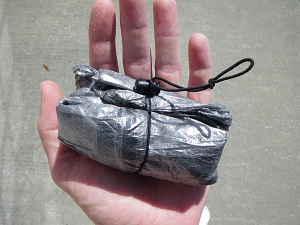
30/03/2015: FORESTRY
TRACKS: Everywhere just behind where we live at Jeeralang Junction there are
endless miles of forestry tracks. Some are very beautiful making anything you
might find on those famous hikes in
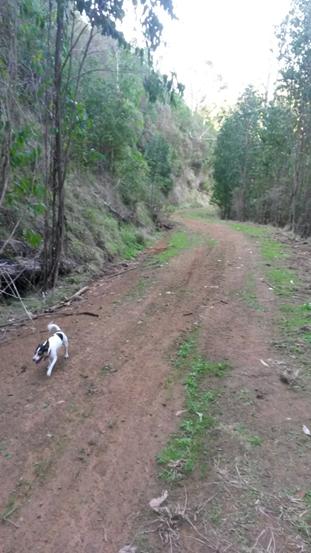
30/03/2015: Photon Torch: At 7 grams this keychain light has to be about the lightest (adjustable beam) torch (4.5 lumens). Some models are also waterproof. The Maxell CR 2106 batteries for it can be bought from eBay for approx $5 for 10. Each pair lasts 12 hours, so that would be enough light for at least a ten days’ trip (at 6 hours per day) giving a total weight of approx 27 grams! You can use one CR2032 instead which last approx 2 ½ times longer. ($7 for 10 = 37 grams for 50 days!). The CR 2032 are 20mm in diameter and 3.2 mm thick – that’s how it works! The ‘necklace’ arrangement can double as a head torch. I often use it for this purpose, or you could make your own with a piece of very light cord and a micro cord lock. You can attach it eg to your hat with a Velcro dot. I always carry one as an emergency torch (in case my main one gives out, or I lose it!) http://www.photonlight.com/led-flashlights/photon-freedom-micro-led-keychain-flashlight/

29/03/2015: TRAINING
WALK: Yesterday afternoon on the Wirilda Track. We spent a couple of hours or
so walking downstream (& back) along the
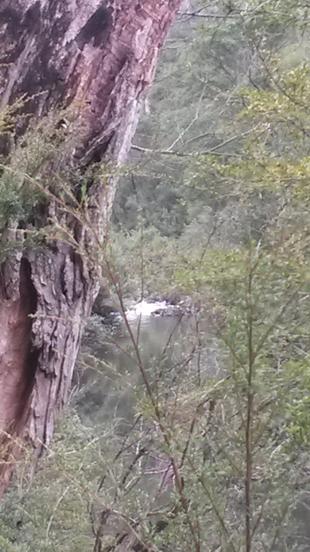
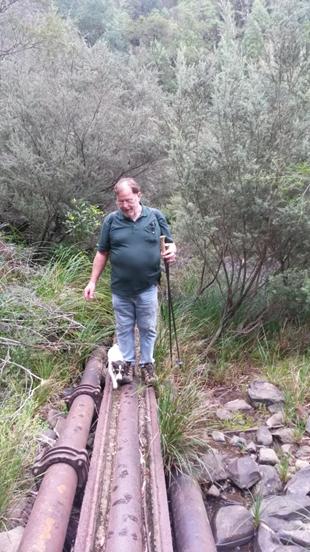
29/03/2015: YOGHURT: This from a CDT thru-hiker: Yoghurt can be made on the trail in a zip lock or a more durable plastic jar. It’s very simple to make:
- Bring a small amount of store-bought yogurt to get it started. Mix powdered milk, water and the store-bought yogurt starter in the container. Shake it up.
- Keep fairly warm either by sleeping with it at night or by keeping it somewhere dark yet warmed by body heat or the sun. Inside your shirt works well or at the top of your pack in a place that would get warmed in the sun. It makes yogurt even if the temperature of the liquid only reaches 20-25 degrees or so.
- If you sleep with it remove it from your sleeping bag a few hours before eating so it will be cold for breakfast.
- Eat but save a little for starter for the next batch. Repeat.
- You can just use one of these ‘Easiyo’ products and water - works well overnight if you can warm it by your fire, then take it to bed with you.
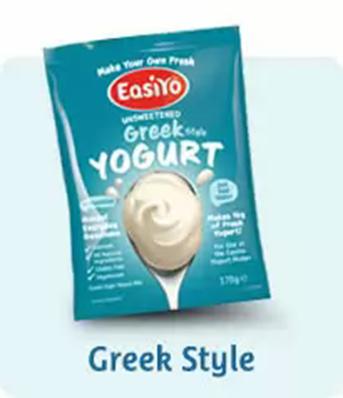
29/03/2015: Della Jones: I don't think I need yoghurt this much on the trail....some people are nuts...
29/03/2015: I admit I am; and that I can probably get by with just powdered milk and instant porridge or (Carmen's) muesli for breakfast, with occasionally scrambled powdered eggs or falafel fried in the fat from last night's Chinese sausages (or a fresh-caught fish) & etc. However, I am thinking about stoveless hiking - more about that later - and trail-made yoghurt might fit in with that. I DO like a hot meal at the end of the day usually though.
29/03/2015: WOOD retains many possibilities (move OVER IKEA): http://laughingsquid.com/a-clever-portable-wooden-picnic-table-that-unfolds-in-seconds/

28/03/2015: Grant Thompson, the ‘King of Random’ is an astonishing human being: http://www.instructables.com/member/The+King+of+Random/?show=INSTRUCTABLES
27/03/2015: How to Mount a Honda XR250 Tank on a Ct110 Postie: https://www.youtube.com/watch?v=-Bdu98bBVEA XR Tank = 7.9 litres + CT110 Tank = 4.8 litres + CT110 Auxiliary Tank = 2.3 litres; Total = 15 litres x 62 Km/L = 930 km! Melbourne-Sydney on one refill ought to be ENOUGH!
27/03/2015: ‘What we're all about is creating meat-based soy substitutes to help save plant life’: https://www.youtube.com/watch?v=cyc_MnHX8FI
26/03/2015: If your spouse ever questions your desire to spend a day hunting (UNLIKELY!), you could show her this wonderful EVIDENCE: ‘Study: Hunting Increases Levels of Love Hormones in Men’: http://pjmedia.com/instapundit/203867/
25/03/2015: Jim Bridger, the Greatest Plainsman: http://donsurber.blogspot.com.au/2015/03/jim-bridger-greatest-plainsman.html
24/03/2015: NZ TOPO:
This is a great App for hiking in NZ: BackCountry Navigator TOPO GPS at $12.99:
http://backcountrynavigator.com/new-zealand-topographic-maps/
You can go to the map page (http://www.nztopomaps.com./) on the App and
colour in the (eg contiguous) bits of map you want to download. Afterwards it
works offline with your GPS. IT WAS SO EASY AND WILL SAVE LIVES! Why doesn’t
someone do this (as easily and economically) for
23/03/2015: Photos you wish you had taken yourself:
UK-based photographer
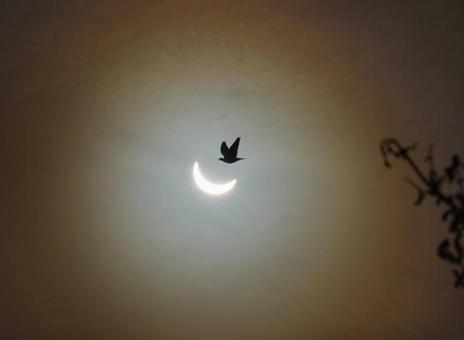
23/03/2015: INSTALLING
DIGITAL LOCKS: I installed the first of these on our front door when the kids
were in primary school so that they could let themselves into the house without
a key. (I KNOW that it was probably ILLEGAL for them to maybe be home without
an adult carer! Get OVER it! So much

Original Lockwood configuration
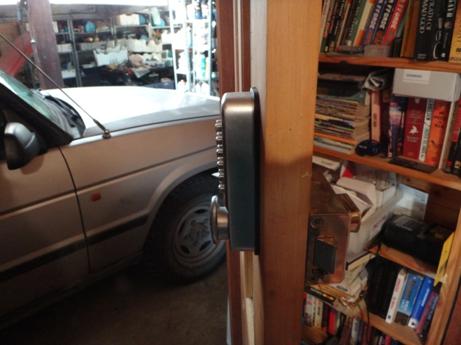
Ikonic front Lockwood back.
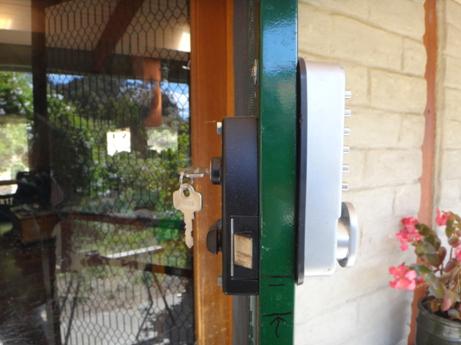
Ikonic front Whitco Safety Lock back.
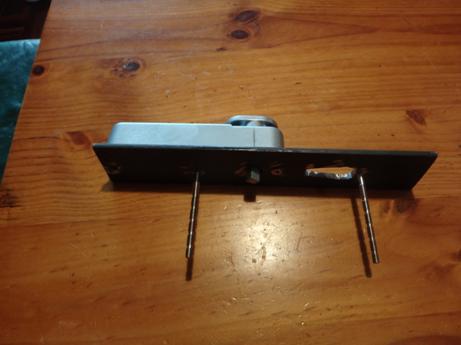
Plate detail for Whitco Tasman mark 3.
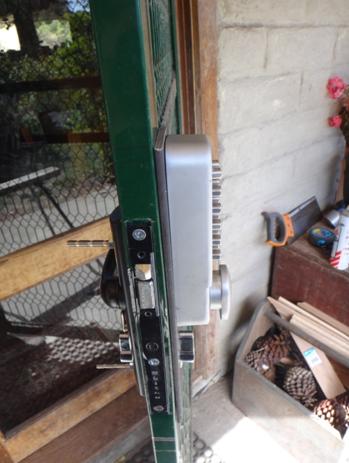
Ikonic front Whitco tasman Mark 3 back.

Ikonic front view showing plate needing some Heritage Green paint.
23/03/2015: MORE HIKING FOOD: Low GI and cooks in seven minutes, and VERY tasty: http://www.barilla.com/content/product/whole-grain-spaghetti
22/03/2015: My brand
new Honda 2010 CT110 Dual Range has just arrived from

22/03/2015: HOMER: I agree with Socrates on this one, (‘the best and most divine of the poets.’) as on so many things, but I very much doubt Milman Parry. To me each book (Iliad, Odyssey) reads as a complete work by a single author (RE-READ THEM - I recently DID with great enjoyment); you should ALSO (re?) read Aeschylus for comparison (and to get the feel of a unitary composition), eg the ‘Oresteia’ – I maintain that his ‘Agamemnon’ is the finest tragedy ever written; it makes Shakespeare’s wonderful ‘Macbeth’ into a lame thing by comparison http://m.weeklystandard.com/articles/no-place-homer_876681.html?page=1
21/03/2015: Fury 325, the world’s fastest and tallest roller coaster: https://www.youtube.com/watch?v=_NCBgxlUVuE#t=103
21/03/2015: I used
to love stuff like this. Now I am wiser! However, I can really recommend a vid
of a guy who went to
20/03/2015:
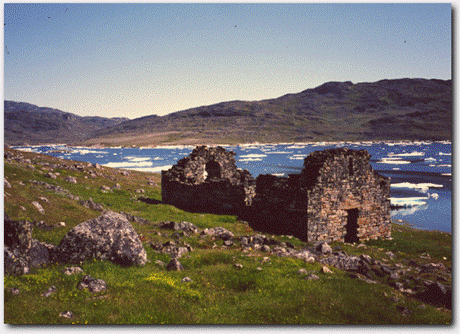
20/03/2015: COUNTRY PEOPLE: I realise that I know practically NO other people. Almost everyone of my acquaintance either grew up in the country (like me) or lives/lived in the country for a substantial part of their lives (or spends large amounts of recreation time there. Everyone else is (almost) ALIEN to me. Is it any wonder I do not understand THEM and that they do not UNDERSTAND the natural world? Urbanisation has produced a curious ALIENATION from the ‘real’ world. I do not think that urban folk should be allowed to VOTE on issues which affect country people. It would be far better if we had entirely separate Governments!
19/03/2015: ‘AG GAG’ LAW: I would SUPPORT this bill: you have NO IDEA how much time I have had wasted over the years by people who THOUGHT they saw a sheep in trouble on our property or in our trailer. I have even been visited by officious RSPCA officers because a sheep was LYING DOWN in the straw in the back of our trailer (it was suffering so much it was nodding off!) There would be no profit to farmers from being cruel to their livestock. That being said, there is a (hobby) chap down the road who is currently STARVING a small mob of sheep. Soon they WILL begin to die - unless I do something about it, and I WILL before they do. I AM checking them every day as I go past. I know his address and telephone number, and will be in contact with him before that happens. By the same token, I do not know his full circumstances, so I am not likely to ring the RSPCA (which would only ensure the animals would be KILLED). They would RECOVER from much worse than they are enduring now. I once saw a group of sheep which went entirely without food OR water, for three weeks in the summer heat (accidentally). The moment they were released, one of the rams ran right past the water trough to join a ewe!
19/03/2015: Answer to a reply: I do not consider ANY of the modes of 'farming' you enumerate CRUEL. Most I have practiced: pigs, sheep, goats, guinea pigs, poultry, dogs...I also stand by my statement that there is no profit in farmers being cruel to their stock: they generally want the best out of them, and the best FOR them. I would rather see an OPEN SEASON on the do-gooders, and particularly the greens/animal libbers & what-nots. We have so much regulation already: the so-called 'puppy farmers' supplied a worthwhile product (sound dogs) which the registered breeders do not. For example, they ever sold Westies as a cross (about 75%) so that the awful PAINFUL skin ailments 'pure' Westies are PLAGUED by would be eliminated. Governments have now made it illegal for me to breed my own WORKING dogs (hounds, stock dogs, den dogs etc). This is intolerable and absurd. When I was a kid everyone had a few pigs: one of my neighbours had a 1/3 ton boar which slept on their lounge; another had a small child EATEN by their pigs - all part of the rich tapestry of life! Della & I have been the victims of such whistle-blower trouble-maker types. We had neighbours who complained loudly about our farming activities to the extent that we were in court for years (and lost a FARM & several hundreds of thousands of dollars - even though we won!) - whilst it cost these bastards NOTHING: it should have cost them their LIVES! We know other farmers who are going through the same Hell right now: people like Peter Spencer - of whom I have written before, and the Giles brothers from Traf (whom we used to trade with - and from whom I got food for my now illegal hound pack) who lost their prosperous abattoir business because of FALSE accusations by just such PETA people. These folks MUST be stopped!
19/03/2015: Two lovely fat bronzewings enjoying autumn under the Fuji yesterday…Was also visited by a pipit on the verandah outside my (computer) window – the first I have seen here, though I have been hearing him/them and wondering, ‘What Bird Is That?’ – you remember? There were many on the Hazelwood Flats farm. ‘I cannot tell If truly never anything but fair The days were when he sang, as now they seem’…One of many things I 'lost' with increasing deafness was birdsong (and batsong!) currently much improved with my new hearing aid adjustment, but I still can't pick who it is sings in our garden!
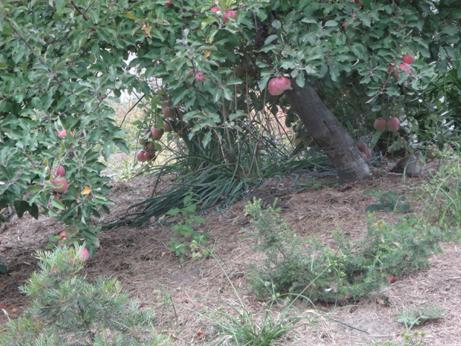
19/03/2015: The pipit ‘minds me of THIS lovely poem: The Unknown Bird - Edward Thomas
Three lovely notes he whistled, too soft to be heard
If others sang; but others never sang
In the great beech-wood all that May and June.
No one saw him: I alone could hear him
Though many listened. Was it but four years
Ago? or five? He never came again.
Oftenest when I heard him I was alone,
Nor could I ever make another hear.
La-la-la! he called, seeming far-off—
As if a cock crowed past the edge of the world,
As if the bird or I were in a dream.
Yet that he travelled through the trees and sometimes
Neared me, was plain, though somehow distant still
He sounded. All the proof is—I told men
What I had heard.
I never knew a voice,
Man, beast, or bird, better than this. I told
The naturalists; but neither had they heard
Anything like the notes that did so haunt me,
I had them clear by heart and have them still.
Four years, or five, have made no difference. Then
As now that La-la-la! was bodiless sweet:
Sad more than joyful it was, if I must say
That it was one or other, but if sad
'Twas sad only with joy too, too far off
For me to taste it. But I cannot tell
If truly never anything but fair
The days were when he sang, as now they seem.
This surely I know, that I who listened then,
Happy sometimes, sometimes suffering
A heavy body and a heavy heart,
Now straightway, if I think of it, become
Light as that bird wandering beyond my shore.
18/03/2015: UPPER YARRA TRACK MEMENTOES: I returned from yesterday’s foray with these two. This afternoon Merrin was alarmed at what she saw as injuries to my right arm, what to me were just scratches, or badges of pride. Swinging my machete, the blasted ‘lawyer’ or ‘wait a while’ vine (so named ‘cause it won’t let go!) cut like a wire saw into my arm, but I needed to get through it and the dreadful prostrate shrubbery underlying it, and I did. I also brought back this interesting potshard. I imagine it forms a relic of the crockery supplied (by the C19th Government) at one of the Upper Yarra Track wayside huts. On a future visit I will try to find some more to confirm this:


18/03/2015: GUNS: An issue nearer to my heart is Mr Abbott’s intention to criminalise gun ownership so forcefully that the ‘trafficking’ of an ‘illegal’ gun would bring a mandatory five year sentence of imprisonment. The Nazis too sought to demonise and outlaw gun ownership – in their case on penalty of DEATH. Yet very few guns were ever relinquished: so deeply held in the German people was their belief in the sanctity of gun ownership that they were willing to risk DEATH to defend it. MILLIONS of Germans held onto their illegal firearms throughout the Nazi era. The same has happened here since gun registration became compulsory (in Vic) in 1983. Abbott’s admission that there are hundreds of thousands of illegal guns (I would think MORE) shows that people would RATHER DEFY such onerous restrictions. This belief is well stated in the American Constitution where the right (nay DUTY) to bear arms is ENSHRINED, a voluntary militia so armed being seen as a necessary Defence of free people against the TYRANNY of Government. Mr Abbott (and his cronies) argue for this measure as a response to the risks that (particularly Islamist) terrorists represent. They would do much better to so correctly identify and eradicate this risk eg by deporting its supporters. I have no problem with criminals and terrorists being executed – indeed I passionately advocate it! What I object to is the criminalisation of ordinary law abiding citizens because they wish to make or own guns, or exchange them with each other. I would much rather see gun ownership being made COMPULSORY than that it be forbidden. Such a step would certainly improve public manners and public SAFETY! It is an absurdity that there are people who believe that the only possessors of guns should be Governments, when it is clearly Governments who are the single biggest ABUSERS of firearms (and especially against their own citizens). It seems reasonable to me that everyone should be armed so that they can DEFEND themselves AGAINST wicked Governments - their own or someone else’s!
17/03/2015: UPPER
YARRA TRACK:
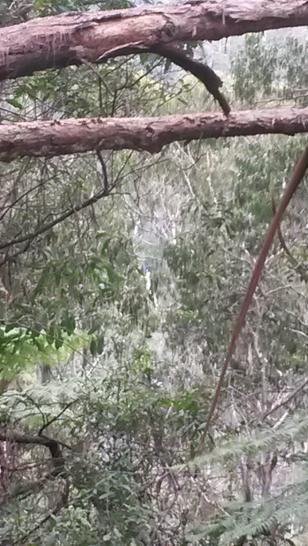
Major Fall centre.
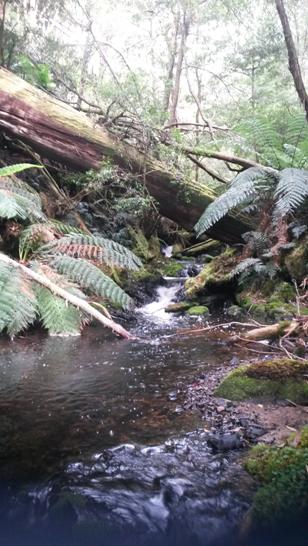
Falls Stream crossing.
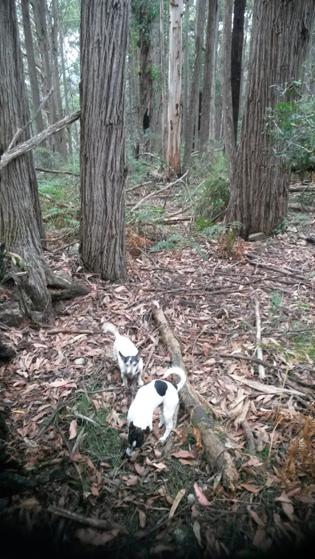
Ridge above the Falls Hut ruins.
16/03/2015: HOT LIPS: Useful product: http://www.rei.com/product/800044/snow-peak-hotlips-package-of-2 & http://snowpeak.com/products/single-600-cup-hotlips-set-mgh-044?variant=671143709
15/03/2015: Best tarp clips: http://www.shelter-systems.com/gripclips/products.html
14/03/2015: This is COOL: Four-Hour Grip Clip Kayak! You can build a kayak of green willow shoots, plus a blue tarp in just four hours! http://www.shelter-systems.com/kayak.html
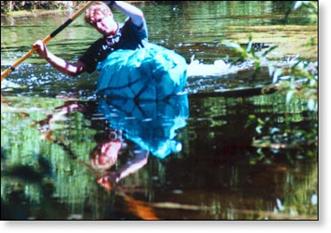
13/03/2015: Conservation: Have you noticed that PLOVERS love ROUNDABOUTS? These spur-winged daredevils really like to stick it up our emerald brethren by deserting the sacred swamps and National Parks and heading for the safety of the suburbs. Have you thought, ‘WHY?’ Out in touchy-feely land there are innumerable foxes and cats who eat them when it’s dark. In the middle of the roundabout there are lots of bright lights, as well as lots of cars to run over and KILL those moggies and foxies – so it is a delightfully safe place to be if your are a plover. QED.
12/03/2015: PRISTINE BEACHES: It would be nice to see a lot more of these (and the same goes for eg riverbanks). I am sick to death of people being allowed to blot out the landscape with their monstrous tasteless, flashy holiday homes, condos, restaurants etc. I am all for banning of ALL permanent buildings, towns, cities, villages along our shores and rivers. I realise it would take a while to buy them all back, bulldoze these monstrosities and revegetate, but it should be done. Otherwise we will soon have paved it all over with urban monstrosities till we have really deprived future generations of their earthly inheritance. Surely people can just visit such places eg on foot or via canoe without feeling they have to own them, to leave their indelible mark?
12/03/2015: Another great metho stove, the ‘Super Cat’: http://jwbasecamp.com/Articles/SuperCat/

12/03/2015: INTERNET: One of our friends has already lost their NBN connection (and it won’t be restored for YEARS!) I feared this WOULD happen which is why we ‘preserved our ADSL2+ connection as well (just scaled back a bit) and hopefully our phone line! Be WARNED!
11/03/2015: NO BEER DIET: I have decided that I am just a bit too like this picture. I would hike a lot faster and further if this was not so. Expect to be seeing a lot less of me SOON:

11/03/2015: USHIP: I
have just discovered this amazing service. I needed another (!) Honda CT110
motorbike I bought online in
11/03/2015: CHARGING: This little guy weighs approx 85 grams and includes a 2200 Mah battery so should have enough grunt to recharge your phone/ebook reader without itself needing recharging from the sun which takes about a day: http://www.bushnell.com/hunting/outdoor-technology/powersync/solarwrap-mini You can also use it to recharge a couple of AAA batteries for your Fenix HL10 torch or similar with a USB AA/AAA battery charger weighing another 20 grams or so: http://premium.aliexpress.com/au/item/Ni-MH-AA-AAA-Rechargeable-Battery-USB-Charger-Best-Selling/32264862894.html?currencyType=AUD&af=ppc&isdl=y&src=Google&albch=Google&aff_short_key=UneMJZVf&cv=1020800000008006&ptsid=1020000000012141&crea=56546947201&plac=&netw=g&device=c&aff_short_key=UneMJZVf&cv=1020000000012141&gclid=COLTyPnancQCFdckvQodkqMAqA
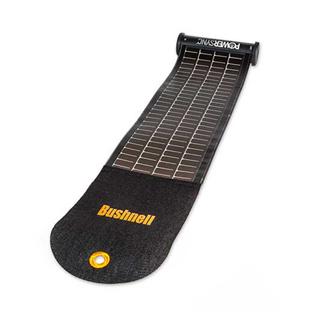
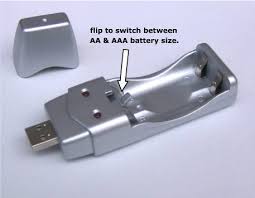
10/03/2015: The WISDOM OF AGE: until recently I did
not know that (either Gideon was left-handed or) he did not have the arthritis
I have which has (by now) so twisted some of the fingers particularly on my
right hand that I find it difficult to hold water in my cupped hand to drink
(so you can see I would not have been given ‘The Jericho Demolition Job’!)
Annoyingly I am forever spilling moisturiser, heel balm etc on the floor as it
slips between my fingers, then I have the arduous job (with my stiff back) of
getting WAY down there to clean it up! They should make such cosmetics more
appetising to dogs so they would clean it up, and I would have nothing to
complain about! Having lived 65 years (over 50% more than the average human
being who has ever lived), I have little to complain about, really. Many young
hikers I have met would not know the Gideon story (cultural education is
getting very sloppy!) and would be afraid to drink from a stream anyway. There
is this excellent lightweight water filter (if you worry about such things or
go paces where lots of folks have shit in the streams):
https://sawyer.com/products/sawyer-mini-filter/ which weighs under 60 grams
(probably worthwhile to have in your pack). If you are walking ‘The Wilderness
Coast’ (19 days along the beaches of
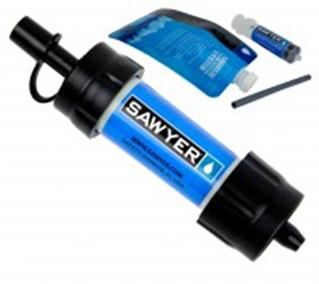
09/03/2015: DIY SIDE BURNER METHO STOVE: The Ray Garlington Yet Another Coke Can (YACC) Stove

Got 5 minutes, a coke can, and a pair of scissors? If so give this little stove a try. It is easy to make, and uses only one can. Also, the pot sits right on top, so it doesn't need a pot stand. Just add a piece of aluminum foil for the wind screen & you are good to go. The YACC stove can raise a pint of 65*F water to 135*F using 1/4 oz of alcohol when air temperature is around 65*F. I have found this sufficient for my lightweight 'cooking' needs. A 4oz supply of alcohol lasts me for 16 stove firings, which equates to 4 gallons of 'hot' water. Of course, if you need more heat, you can add more fuel.
The stove was inspired by the Antigravity Gear stove (uses two cans) and "The One Can K.I.S.S. Soda Can Stove" by DeoreDX on the TLB Forum. I liked the idea of using just one can, and wanted construction to be as easy as possible. The YACC stove can be made quickly with just a pair of scissors.
Here's how to make it: Obtain an aluminium soda can. Remove the opening tab from the top, and tear the top out with a pair of pliers, or cut out with can opener..

Mark the side of the can 3/4" up from the bottom. Flip the can over and mark the side of the can 1 1/2" from the top.

Using a pair of scissors, cut the can in half
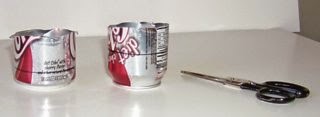
Now, carefully cut along the marked lines. If your marked lines are on the 'thick' side, cut the bottom along the outside of the line (thus making the bottom slightly larger).
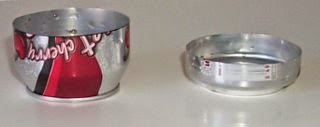
Take the top section and cut slits every 1/2" from the cut edge to just below the shoulder of the can top.
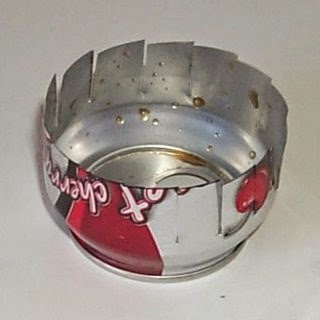
Push the tabs slightly toward the center and slide the top section into the bottom section. Push the top (carefully) all the way down into the bottom. The tabs of the top will follow the can bottom until they jam up against the domed part of the bottom. As the shoulder of the top starts to go under the cut edge of the bottom, look for bulges that might tear the bottom and push them inward with the flat side of the scissor's blade. When fully seated, the top's shoulder should be slightly under the bottom lip. None of your slits should be visible from the top. (If they are, you will need to cut another top.) Hold the can together and roll the cut edge of the bottom slightly inward over the top's shoulder to hold the stove together.

If the details above sound too tedious, just push your two stove halves together. At first, your stove will spring up so that the top slits are exposed. Don't worry, because after you light the stove, you put the pot on, which will compress the stove anyhow. After using the stove a few times it will stay compressed (particularly if there was a little soda left in the bottom).
Theory of Operation
OK. Now that you see how it goes together, how does it work without any gas jets? Well actually, the jets are there, but hidden under the cut-edge of the stove bottom. All those cuts in the top allow gas to pass through which find their way out the small gap between the can top and bottom. So, in the end you have a two wall (well sort of) stove that is pressurized (again, sort of).
Operating Instructions
This stove requires preheating to the point where flame comes out the seam. Details: Pour the metho into the stove body. 1/4 oz of fuel will burn for about 3 minutes. Position the wind screen and light the stove by holding a flame above the large hole. Watch out because the stove lights easily and the flames are nearly invisible at first. Hold your pot about an inch above the stove until flames exit the side of the stove (about 15 seconds). When that happens, immediately position the pot on the stove: http://web.archive.org/web/20130827200008/http://www.garlington.biz/Ray/YACCS/
08/03/2015: HIKING FOOD: Two new recommendations: Breakfast/Trail: Carmen’s Cranberry Apple & Nut Crunchy Clusters (needs no milk) & Snack: Carmen’s Classic Fruit & Nut Muesli Bar. Both these have the ‘Low GI’ tick meaning (both) that they are suitable for folks with diabetes (or helping PREVENT it) and that they will keep you going for a LONG time without feeling hungry. Sometime (on the trail) you MIGHT need a quick energy boost (where maybe eg a square of chocolate is appropriate – I never do), but mostly you want food which will keep on delivering energy all day long. In this context, you might consider wholemeal angel hair pasta instead of the regular two minute noodles, or a mixture perhaps of basmati and brown rice (pre-cooked and dried of course to save fuel when reconstituting) or lentils etc. Obviously fresh fruit and vegetables are an impossibility on the trail, so maybe it is doubly important then to consider the effect on your pancreas of what you put in your mouth. Diabetes is NOT a disease; it is a DIET!

08/03/2015: How MANY kilometres do folks have to TOW a horse around with their SUV before they REALISE that a horse is a MEANS of TRANSPORT?
07/03/2015: ELASTIC BANDAGES: There is now a veterinary elastic bandage which should (perhaps) replace the elastic bandage you have carried in your pack the last twenty years without using it. It is VERY MUCH lighter, and sticks to itself, so you don’t need a safety pin (though this might come in handy for some other use, and I always carry a couple in my ‘repair’ kit) Pretty, isn’t it? http://www.globalmedivet.com.au/order-online.html?page=shop.product_details&category_id=1&flypage=flypage.tpl&product_id=17
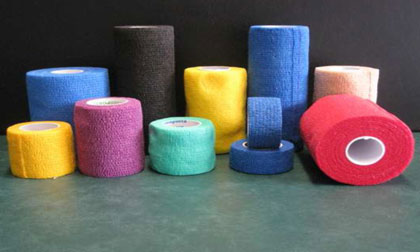
06/03/2015: MATHOMS IN YOUR PACK: We are all always trying to lighten our load, searching for those unnecessary items which would best be left at home, but it would be unwise to jeopardise safety for lightness. A case in point: for over twenty years I carried an elastic bandage and a cotton sling in my pack, the first in case of snakebite sprains etc (I also carried Panadine Forte and Diclofenec anti-inflammatories for the same reason), the second for a broken arm from a fall, etc. Now, after all that time it might have been sensible to reconsider the weight they were adding. Then, in 2011 I took Della to Supper Cove, Dusky Sound, Fiordland NZ. She had not been there better than an hour when she slipped on a rock and dislocated her shoulder, so that I needed all these ‘mathoms’ at once! PS: the ‘Helimed’ evacuation (called ‘Medivac’ in NZ - and FREE!) was a spectacular ride – just a pity Della didn’t enjoy it much despite all the morphine they were giving her! NB: Satellite phones DO come in handy!
05/03/2015: HONDA CT
110: In Australia this motorcycle is best known colloquially as the ‘Postie
Bike’ (for obvious reasons). It is the most common motorcycle in
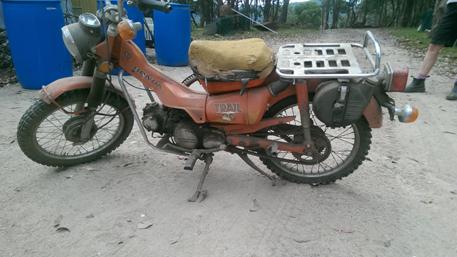
04/03/2015: INSECTS can RUIN a camping trip. You
need a Repellent which WORKS. There has been a move by the touchy-feely crowd
to bombard us with ‘natural’ ones which will see you eaten alive. Be warned.
The product MUST have DEET (not so much it melts your raincoat, but lots). And
if you are going somewhere which you know is seriously infested (eg with
murderous giant sandflies – like the West Coast and Fiordland NZ) then it
should also contain ANOTHER repellent as well, eg DIMP. I usually use
ULTRAGUARD which has 30% of each! If you are allergic to either of these
products, STAY HOME! Even so, you DO get bitten occasionally (and those NZ
sandflies can turn me into something which resembles the surface of the moon -
only monstrously ITCHY!) Unexpectedly unprotected spots need to be considered. The part of your hair. Most caps, for example, have
a gap where they adjust at the back. Some hiking shirts are (thoughtfully?) provided
with (non insect screened) vents. Some materials are too open-woven so that
those nasty probosci can punch right through them. I choose close woven
lightweight nylon in those circumstances, even though you end up smelling like
a horse! The very best thing when you DO get bitten and are itching to DEATH is
an antihistamine cream (BANNED in
04/03/2015: GUN LAW
REFORM: gone wrong: What explains the drastic decline in violent crime,
specifically between 1500 and 1900? And its increase SINCE 1900? ‘That’s a
17,544% increase in
03/03/2015: INSTANT TRELLIS/FENCE Bunnings have these wonderful brackets which attach to standard ‘star’ posts/pickets which enable wooden fence rails to be joined to them (there are also corner ones): http://www.bunnings.com.au/post-accessory-post-bracket-flat-12215_p3040743 Also see: http://whitesgroup.com.au/Products/WhitesSpecialistRuralcatalogue/tabid/126/ProdID/174/categoryId/39/Post-Caps.aspx?sid=[PARENTID] & http://www.waratahfencing.com.au/Product/Tools-and-Accessories/Fencing-Accessories/GalStar-Post-Caps.aspx There also exists a plate to prevent star posts from sinking: http://www.waratahfencing.com.au/Product/Tools-and-Accessories/Fencing-Accessories/Anti-sink-Plates.aspx available elsewhere.
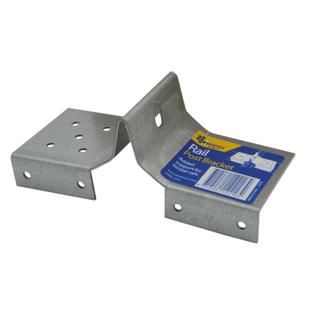
02/03/2015: HIKING: I have been doing some work on my Hiking (instructables) page, here: http://www.finnsheep.com/HIKING.htm It is now 130 pages long, & I believe full of useful information and interest, even though still incomplete. Worth a fresh look anyway if you haven’t been there lately.
01/03/2015: MORE good news: Food production worldwide is speeding up: http://www.drroyspencer.com/2015/01/now-its-peak-food-give-me-a-break/
28/02/2015: RIVER CROSSINGS: This is one of the most fraught parts of hiking. I have seen so many people come to grief doing this (and have had to arrange emergency air rescue for a number who foolishly injured themselves). For example, many folks will spend lots of time trying to find a LOG to cross on. Please, DON”T. If you fall off the log you will certainly NOT be in the best place to cross and may be swept to your death; if you needed a log it probably wasn’t safe to cross anyway, and you may be injured by the fall. Logs are round and slippery; you will need perfect balance – difficult wearing a heavy pack anyway. FORGET it! Secondly, don’t remove your shoes and cross barefoot. A badly injured foot miles from safety/your vehicle etc is a recipe for disaster. Many river bottoms (also) conceal broken glass even in the most remote places; anyway there are always sharp stones/sticks. Either put up with wet shoes or carry purpose river crossing (or camp) shoes, or just a pair of seal skin socks - 80 grams -so that you can have dry feet at night even with wet shoes: I recommend Crocs (300 grams/pair) as you CAN hike many kilometres in them if your hiking shoes give out or you happen to lose one eg down a hole, in the fire etc – or you could try making a pair of my ultralight thongs – 58 grams/pair; see ROPE 24/02/2015. Before you cross carefully choose your spot. Calm water is best. A long ‘still’ patch of river (even if you have to swim) is safer than a fast moving section with lots of rocks (even if shallower). If you have to swim, swim diagonally downstream having carefully worked out that the speed of the current will allow you to get across in the section chosen. Obviously a long, slow shallow section is best of all (eg as pictured). You should have your gear in a waterproof pack liner, your sleeping bag, clothes sat phone etc inside another waterproof bag inside the liner. I use THREE nested waterproof bags for my sat phone! It is your most important survival aid – apart from what is/isn’t between your ears! It is a good idea to ensure there is plenty of AIR inside your pack liner so you can use your pack as a kick board if you have to swim (I have, many times!) I use the Sea to Summit Ultrasil bags. Check them from time to time for waterproofness (when you’re home!) by filling them with water to see if they leak. If they do the supplier WILL replace them, or they can be seam sealed again. You can even blow up your inflatable mat either (partially) inside your pack or tie your pack to it for extra buoyancy. If you can safely wade, obtain a stout stick to make for a third leg, so you always have two points of purchase on the river bottom. Cross (at least slightly) facing INTO the current which is the most stable stance. Thirdly, if you are wearing your pack rather than using it as a flotation device, ALWAYS UNDO the pack straps. You don’t want to be bowled along in fast water with the pack strapped to your back! That’s an excellent way to drown! If you have a rope USE it (see post about ROPE 24/02/2015). Lastly, if it isn’t safe to cross, DON”T: wait for the water to go down or find an alternative route - either upstream (smaller) or downstream (flatter) – topography will decide your choice. You can live for a month without food; you can live for about a MINUTE underwater!

Crossing the Moroka 2012
27/02/2015: PEANUT BUTTER TOAST SOLDIERS: I must say that when our kids were tiny they ate lashings of PB with no thought (from us) that it might be bad for them. Indeed I was astonished to learn there WAS such a thing as PB allergy (Is there?) AND that Statists insisted that PB be banned from kids’ lunches etc. Now, we find that it was the nervous nellies (ever worried that their little preciouses might come into contact with earth, earwigs, evil MEN & etc) who CAUSED the problem. Maybe THEY should be banned from HAVING children. Anyway, fortunately the problem (PB allergy) can be cured, and we can all get on with eating this excellent (hiking) food which has in excess of 6 CALORIES PER GRAM. Even better if you mix it with butter and honey: http://www.theatlantic.com/health/archive/2015/02/is-it-really-safe-to-give-babies-peanut-butter/385892/
27/02/2015: FOOD FADDISTS BEWARE: So what food IS good for you/ Maybe try the red meat, eggs, fat and salt diet: http://reason.com/blog/2015/02/24/the-red-meat-eggs-fat-and-salt-diet-nutr
26/02/2015: MY .308s: I own TWO of these beauties, both presents from Della. Both are Browning (‘Lightning’) Lever Action models (BLRs). She bought me the first as a silver wedding anniversary present back in 1998 (and I should have shot a MOOSE with it in the Hilda Burn, Fiordland NZ in 2000…Oh Well!) The second (a take-down model) she bought for my 60th birthday in 2009. You can’t get a better wife than THAT! A ‘take-down’ model is one which ‘breaks’ in half so it will fit in your pack (a very handy feature) or under the seat in the camper. I now have two carbon fibre hiking poles (thanks AGAIN TO Della this Xmas) which are short enough (they also are two-piece) to fit in my pack when not in use. This means I can use them after I have stowed my gun. Each weighs about 100 grams, while the rifle weighs 2900 grams. This is a great boon if my back is playing up (often, unfortunately) or if I am very tired and/or the going is quite rough: you have MANY fewer falls when using hiking poles and they make walking 40% easier. She ordered the two shortened poles (each section is 2’ long) at no extra cost as a special from http://www.rutalocura.com/ which seems to be an offshoot of the excellent http://titaniumgoat.com/ (Recommend you view website AND especially LINKS!) Some ‘Big Game’ hunters claim you need a much bigger gun than the .308 (which was the lightest of the ‘short-action’ high-powered rifles until the new Winchester Magnum round came along, and excluding the .30-30 and .375 Winchester Magnum rounds - it gets confusing). Anyway, to use a .30-06 (or larger, ‘long-action’) you need to carry maybe a kilo more of steel, which gets tiresome as you get older! Some of the ‘big guns’ such as the .457 Magnum are just TOO big for me at least. The ‘little’ .308 (which used to be the ‘standard’ NATO round - and was the one used in the 100,000 SLRs John Howard ‘gifted’ to Indonesia after Port Arthur, along with a BILLION rounds of ammo in order to make us SAFE!) will ‘spit out’ a nearly half oz. of lead at over 3,000 feet per second. (Imagine those in the hands of 100,000 INVADING troops, if you please!) In my experience this is quite sufficient to seriously discommode even the largest sambar stag (but may not work so well on an elephant! Though it WOULD on a moose!) Carrying those extra kilos is fine for the young and gung-ho, but the .308 is enough gun for me. Both of mine are already pretty seriously scratched up from rough use, which is as it should be. Neither has a scope as I have never ‘learned’ how to use one – and anyway iron sights are much more stable (against knocks and falls etc) so long as you learned how to shoot straight as a whipper-snapper (which we all did, once – alas for the defence of the realm and other things that those days are gone!) Open sights can also be ‘brought to bear’ much more quickly and are better at ‘tracking’ a running shot – often the case in ‘snap’ shooting of (rapidly departing) sambar deer in the thick forests of Gippsland they typically inhabit. This is also an advantage of the lever action: it can be carried unloaded (which is much safer than relying on safety catches etc) and can be quickly loaded as you swing it to your shoulder. A follow-up shot is also easily taken without the gun swinging off the target. I find it much superior to the bolt action or the pump in these regards. http://www.browning.com/products/catalog/firearms/detail.asp?fid=003B&cid=034&tid=009

25/02/2015: HAMMOCK CAMPING: I have spent months of my life sleeping in them. A plain nylon hammock with the addition of a rectangular inflatable mattress (such as a Thermarest Neoair) is all you need for wonderful comfort. (You need the RECTANGULAR mat to keep the hammock from squashing your sleeping bag at the shoulders which will otherwise make a cold spot.) A quilt is more convenient than a sleeping bag for getting in and out. You can easily make one out of a sleeping bag – just leave the zip done up a little at the bottom to create a foot box. A (fixed) or adjustable centre line (now PATENTED by Tom Hennessy, though a feature which many folks used for a long time before that) tying one end of the hammock to the other does add to comfort and give one something to hang things on (glasses, water bottles ditty bags, etc). Tom’s hammocks are wonderfully comfy and cosy (so long as claustrophobia is not a problem for you), and certainly keep insects out. It is a little difficult for me to get onto a mat in one, but Della has no trouble. I would recommend the Ultralite Backpackers (http://hennessyhammock.com/catalog/#hammock) though he used to make a lighter one named the ‘Hyperlite’ which Della has. The tarp really is adequate to keep the rain off, but make sure it is securely pegged down and taut. You can save a fair bit of weight though with just a lightweight nylon hammock (eg http://www.amazon.com/Grand-Trunk-Nano-7-Hammock/dp/B009M5QRUG) some Spectra cord for suspension and an 8’ x 8’ cuben tarp (LIKE THIS http://www.zpacks.com/shelter/tarps.shtml) - which can do double service as a tent if you want to/have to sleep on the ground (and the hammock can do double service as a ground sheet!) We have sewn a couple of short ‘wings’ on it since Joe first made it using about a metre of .5 oz/yd2 cuben so that we can close it up a bit more )as shown) if the weather turns a bit. It makes an excellent shelter – and you can have a fire out the front, something which is much more uncertain when hammock camping. Hennessy (and others) use these webbing tree protectors instead of tying straight to the tree. I suppose in areas where the same trees are used again and again this might make sense, but otherwise using spectra cord as a suspension system is fine – if you want to add a little protection to the tree’s bark you can always place some finger thick twigs under your rope. You NEVER tie the hammock to a tree. You will never get the rope untied again. There is a special way. You pass the rope around the tree, then around the line going back to the hammock, then around the tree again, repeat about three times, then secure it loosely with a running hitch which comes undone when you pull the end. The friction against the tree ensures the rope does not tighten on itself. Have slept out in a hammock in the most awful thunderstorms where the night was lit like day for hours at a time and bolts were falling all around me so close there was no thunder delay, yet felt perfectly safe as the electricity could not pass through me in the hammock to the ground, but must pass down the tree/s. The translucent cuben tarp is great for such pyrotechnic displays! I have been out in torrential rain when people in tents were flooded, soaked, yet I slumbered dry. And in awesome winds. I have slept in my hammock with four inches of water streaming underneath. One advantage of a hammock is that you need no level spot; only two suitably sized trees (approx 6” diameter) about the right distance (approx 12’) apart, so they are great for camping out eg in Fiordland where it is all ups and downs and lots of trees, and unbelievably wet. There I sometimes pitch it and the tarp for lunch. Two can sit convivially side by side and break their fast, even boil the billy under the tarp! You can even both lie back and have a siesta! It is also possible to pitch one hammock above another under the same tarp. This is a lot easier if one is much smaller and lighter (as Della) whom I can boost into her hammock before I go to bed. Usually we just make our own from some 2oz/yd2 ripstop eg from Spotlight which Della double or triple hems, then thread the suspension rope through the hems and tie off. This material is 60” wide which is comfy. The hammock needs to be about 2’ longer than you are. You need about 12’ of 3+mm spectra ‘rope’ on each end. These home-made hammocks weigh about 350 grams including rope, but last well. My Nano hammock weighs less than 200 grams including suspension ropes. My cuben tarp weighs about the same. If you don’t sew, you can simply tie an overhand knot at each end of the fabric itself and tie the suspension ropes on the inner side of the knot. It WILL not come undone. You can make your own cuben tarp without sewing also as (eg) zpacks have stick on tie-outs and cuben tape for joining etc.
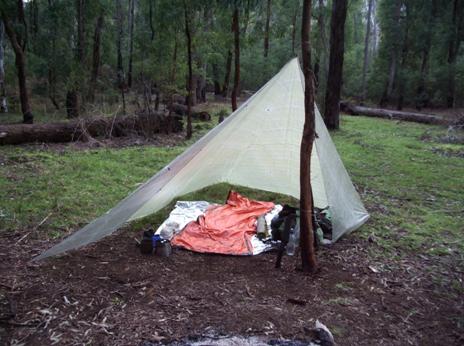
8' x 8' cuben tarp with wings can be pitched as a 'fire' shelter (as shown) or used as a hammock tarp (one end closed as storm shelter) 200 grams Hernes Spur Wonnangatta River 2011-11-18.

Hammock camp Mt Darling Creek 2008/09/21: Large storm tarp shown (unnecessary even for Fiordland, but VERY dry)
25/02/2015: This is definitely for me: http://www.gizmag.com/flow-frame-honey-tap-beehive/36117/
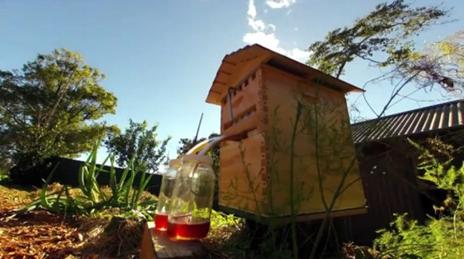
24/02/2015: Moose cascades:
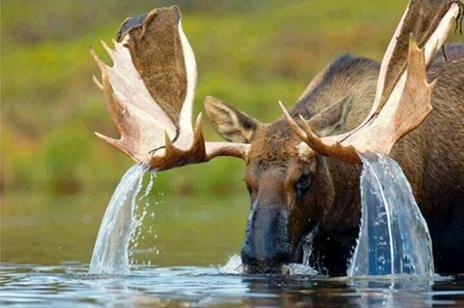
24/02/2015: I have figured a new way to lose a kilo from my pack on a long trip: don’t take any rum! I may also have lost my mind!
24/02/2015: Hearing aids: today I managed to have my hearing aids professionally adjusted correctly! I can hear the radio AND Della in the car – and I can hear most everything she says elsewhere. Oh Bliss! Even better, I purchased two RC double adapters and managed to get the Minitec and transmitter for my Siemens hearing aids working so I can hear the TV: I can even hear the actors and journos BREATHING as they talk. This IS nice!
24/02/2015: ROPE: Sam Gamgee was right, ‘What about a bit of rope? You'll want it, if you haven't got it,’ he
opined, and you would be foolish if you didn’t agree. Some cordage is an
essential on the trail: You need thread and needle for those torn trousers or
wounds. I always have dental floss (a self-threading needle fits in the
container with it – and it is sterile). It has enabled numerous essential
repairs over the years, even though I am certainly not the seamstress Della is.
For heavier cordage ALWAYS choose (UV resistant) dyneema or spectra cord which
are stronger and lighter than any other kind. You will want a lighter length of
this (1-1.5mm diameter) for replacing guys, clotheslines, hanging bags out of
reach of predators, snares, or making a spare pair of SHOES (See Below) etc. On
our trip across the bottom of
The importance of that piece of string: in this case it is for making ultralight thongs/sandals from shoe inserts (these are ‘Redbacks’): 58 grams the pair in Size 8. Great for camp shoes, river crossings, etc. Also: the Gossamer Gear Sitlight Pad @ 30 grams (apart from keeping your bum dry for trail lunches on wet days) will make two pairs of same with the addition of a bit of string if your shoes let you down – and may get you out of trouble. See: http://www.trailquest.net/sandals.html My knots are different from Brawny’s : I pass a (doubled) loop up through the gap between the big toes and have an overhand knot under the thong. The two ends come up through each side of the thong towards the rear (as with normal thongs) and are joined to the loop with two overhand knots. To make them into sandals a bit of elastic (or a ‘clam cleat’ micro cord lock and string – as shown) either over the top of the foot or around the heel and joined to the strings at the rear where they emerge on the top side of the thong works well and will ensure they stay on during river crossings.
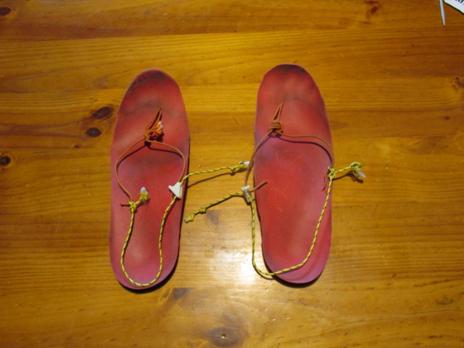
23/02/2015: If you have ever wondered about collateral damage, or whether folks can shoot you underwater, here’s the answer: How many balloons does it take to stop a bullet: https://www.youtube.com/watch?v=hlZRnpyZjBE
23/02/2015: Miso soup: Is it possible to like this stuff if you force yourself to eat it often enough or does it forever taste like (I Imagine) cocky cack? Only persistence will tell. I wonder IS it like olives (an acquired taste)…Perhaps another cup again soon? Argh! Still it is only 6 grams for 19 calories, and WILL make a change!
22/02/2015: A fond farewell from (to?) Oliver Sacks: http://www.nytimes.com/2015/02/19/opinion/oliver-sacks-on-learning-he-has-terminal-cancer.html?_r=0
22/02/2015: And another for Philip Levine (1928-2015): The Simple Truth (1994):
I bought a dollar and a half's worth of small red potatoes,
took them home, boiled them in their jackets
and ate them for dinner with a little butter and salt.
Then I walked through the dried fields
on the edge of town. In middle June the light
hung on in the dark furrows at my feet,
and in the mountain oaks overhead the birds
were gathering for the night, the jays and mockers
squawking back and forth, the finches still darting
into the dusty light. The woman who sold me
the potatoes was from Poland; she was someone
out of my childhood in a pink spangled sweater and sunglasses
praising the perfection of all her fruits and vegetables
at the road-side stand and urging me to taste
even the pale, raw sweet corn trucked all the way,
she swore, from New Jersey. "Eat," she said,
"even if you don't I'll say you did."
Some things
you know all your life. They are so simple and true
they must be said without elegance, meter and rhyme,
they must be laid on the table beside the salt shaker,
the glass of water, the absence of light gathering
in the shadows of picture frames, they must be
naked and alone, they must stand for themselves.
My friend Henri and I arrived at this together in 1965
before I went away, before he began to kill himself,
and the two of us to betray our love. Can you taste
what I'm saying? It is onions or potatoes, a pinch
of simple salt, the wealth of melting butter, it is obvious,
it stays in the back of your throat like a truth
you never uttered because the time was always wrong,
it stays there for the rest of your life, unspoken,
made of that dirt we call earth, the metal we call salt,
in a form we have no words for, and you live on it.
21/02/2015: MOOSE
HUNTING: Watched Ken
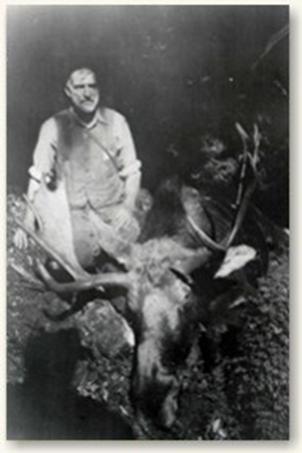
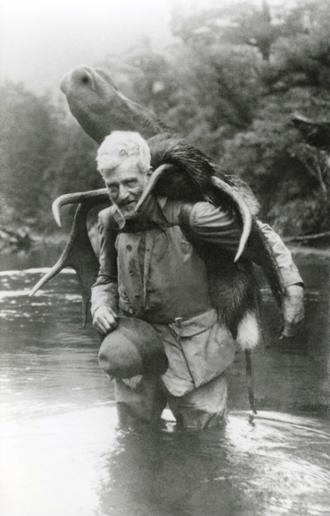

20/02/2015: ORIGINS:
1. WHY: Why do men's clothes have buttons on the right while women's
clothes have buttons on the left?
BECAUSE: When buttons were invented, they were very expensive and worn
primarily by the rich. Since most people are right-handed, it is easier to push
buttons on the right through holes on the left. Because wealthy women were
dressed by maids, dressmakers put the buttons on the maid's right! And that's
where women's buttons have remained since. (I've also heard some claim that
it's to make it easier for guys to unbutton ladies)
2. WHY: Why do ships and aircraft use 'mayday' as their call for help?
BECAUSE: This comes from the French word m'aidez - meaning 'help me' - and is
pronounced, approximately, 'mayday.'
3. WHY: Why are zero scores in tennis called 'love'?
BECAUSE: In France, where tennis became popular, the round zero on the
scoreboard looked like an egg and was called 'l'oeuf,' which is French for 'the
egg.' When tennis was introduced in the English-speaking world, it was
pronounced 'love.'
4. WHY: Why do X's at the end of a letter signify kisses?
BECAUSE: In the Middle Ages, when many people were unable to read or write,
documents were often signed using an X. Kissing the X represented an oath to
fulfill obligations specified in the document. The X and the kiss eventually
became synonymous.
5. WHY: Why is shifting responsibility to someone else called 'passing the
buck'?
BECAUSE: In card games, it was once customary to pass an item, called a buck,
from player to player to indicate whose turn it was to deal. If a player did not
wish to assume the responsibility of dealing, he would 'pass the buck' to the
next player.
6. WHY: Why do people clink their glasses before drinking a toast
BECAUSE: In earlier times it used to be common for someone to try to kill an
enemy by offering him a poisoned drink. To prove to a guest that a drink was
safe, it became customary for a guest to pour a small amount of his drink into
the glass of the host. Both men would drink it simultaneously. When a guest
trusted his host, he would only touch or clink the host's glass with his own.
7. WHY: Why are people in the public eye said to be 'in the limelight'
BECAUSE: Invented in 1825, limelight was used in lighthouses and theatres by
burning a cylinder of lime which produced a brilliant light. In the theatre, a
performer 'in the limelight' was the centre of attention.
8. WHY: Why is someone who is feeling great 'on cloud nine'?
BECAUSE: Types of clouds are numbered according to the altitudes they attain,
with nine being the highest cloud. If someone is said to be on cloud nine, that
person is floating well above worldly cares.
9. WHY: In golf, where did the term 'Caddie' come from?
BECAUSE: When Mary Queen of Scots went to France as a young girl, Louis, King
of France, learned that she loved the Scots game 'golf.' He had the first
course outside of
10. WHY: Why are many coin collection jar banks shaped like pigs?
BECAUSE: Long ago, dishes and cookware in
19/02/2015: ANTI-AGING: There IS some good news: RAPAMYCIN & METFORMIN: ‘Diabetes typically shaves about five years off a person’s life. But a large retrospective analysis found that diabetics on metformin had a 15 percent lower mortality rate than non-diabetic patients in the same doctors’ offices.’ http://www.bloomberg.com/news/features/2015-02-12/does-a-real-anti-aging-pill-already-exist-
19/02/2015: THIS happened all over
18/02/2015: Teddy Roosevelt carried a big stick. Barack Obama carries a selfie stick. For those who can’t resist a selfie but who also carry a stick, there is this: The StickPic Camera Holder for Trekking Poles: http://blicard.com/products/the-stick-pic
17/02/2015: VENERY: This is one of my all-time favourite photos. This was Eddie Herrick circa 1934 in his eponymous creek in Wet Jacket Arm, Dusky Sound, Fiordland NZ with his bull moose. In a moose hunting career in Fiordland which involved Eddie hunting there for nearly three months a year for thirty years (that’s TEN YEARS) of his life, Eddie bagged three of these beasties out of less than ten shot altogether by anyone, Such is dedication. For fifteen years I have been travelling back to this area myself for stays of about a week-ten days just to totally ignore the astonishing scenery and wondrous sense of remoteness, the wilderness challenges etc in the hope that I might catch another glimpse of a Fiordland moose, maybe even capture a photograph of one. The greatest (live) moose hunter is Ken Tustin who has searched endlessly for them since approx 1970! You can see a preview of his most recent documentary here: https://vimeo.com/55687840 or you can download it all (for a mere $10) here: http://www.stealthfilms.co.nz/dvds/dvd005-bundle.html
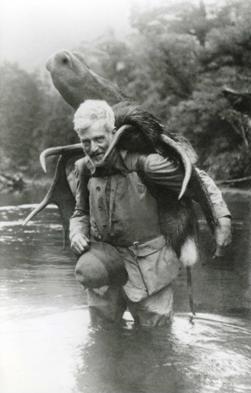
17/02/2015: In
17/02/2015: 177!
WHAT a good ole gal: ‘When Judith Somerby married Tristram Coffin in March of
1653, she was a widow with three children: Sarah, who was eight, Elizabeth, who
was six, and Daniel, almost three. (Another son had died in infancy.) In the
next sixteen years Judith gave birth to ten Coffin children, all of whom,
remarkably, survived infancy. There is an almost saucy irony in the family
name, as though some wind of Yankee humor had swept Puritan Newbury. Death
seldom visited the Coffins. By the time Judith's last baby was born in March
1669 she already had six grandchildren. From 1667 until her death in 1705 -
twenty-eight years - at least one grandchild was born each year. In the most
prolific period from 1686 to 1696, thirty eight infants were born, almost four
a year. Judith's gravestone should probably be taken literally when its says
she lived to see 177 descendants...’ ‘Good Wives: Image and Reality in the
Lives of Women in
16/02/2015: Dermasafe ultralight knives and saws (from 8 grams): http://www.derma-safe.com/product/the-derma-safe-folding-utility-knife
15/02/2015: WEATHER: The GFS (US Weather Bureau ‘Global Forecasting Service) forecast for Jeeralang Junction has had yesterday at Jeeralang Junction involving 44mm of rain for the past FORTNIGHT! Yesterday we received 44mm of rain. Our own BOM had us has having none until approx 7:00pm the day before and then suggested 1-10mm. The difference is almost universal and sufficient to seriously question their competence. Certainly if they can’t get tomorrow anywhere near right they should stop banging on about their forecasts for 100 YEARS hence! I usually take the average of the three models shown here (http://ozforecast.com.au/cgi-bin/weather.cgi?station=Jeeralang+Junction.VIC&radar). If I am thinking of cutting hay/journeying to Fiordland etc, I have a closer look here (http://ready.arl.noaa.gov/READYcmet.php). It is a little difficult to use, but if it predicts a long-term high, you can be pretty sure of staying dry: I have not needed to take my raincoat out of my pack on my last FOUR visits to Fiordland, one of the wettest places on earth! Elders 28 Day Rainfall is very good too for forward planning (http://www.eldersweather.com.au/raindates.jsp?dc=disableCookies<=wzdist&lc=v17) Incidentally, the GFS has another inch or more on the way before the end of the month. I think we can conclude that here (at least) the bushfire season is OVER and the autumn break is ON THE WAY!
15/02/2015: Some great new hiking gear HERE: I particularly like the Berghaus VapourLight HyperSmock 2.0, Adidas Boost Technology, the Bungee laces, & the Cubic Tech breathable 50,000 JIS laminate: http://gossamergear.com/wp/gear-love/winter-2015-outdoor-retailer-trade-show-gear-interest-lightweight-backpackers-new-technologies-new-products
14/02/2015: Cosmology still holds many thrills; mind you I have always wondered that the reductio ad absurdum of a beginning (or a cause) did not lead all cosmologists to the eternal conclusion. As the lady said, ‘It’s turtles ALL the way down’: http://wattsupwiththat.com/2015/02/10/another-settled-science-topic-is-not-so-settled-after-all-big-bang-theory-questioned/
14/02/2015: ANTI
HUNTING HYPE: Animals shot with a bow don't suffer.
This has been assessed objectively: there is a nearly complete lack of stress
hormones in their blood. It is QUITE normal for people to post
photos/stories about their hunting/fishing exploits - just as other people post
about their recreational activities (canoeing, motor bike riding, etc). People
have been ‘up in arms’ about this photo, for example. It was clearly posted on
a bow hunter's forum where it would not have been regarded as objectionable. I
imagine he ATE it too. Likely the guy has tried to clean up the blood for the
photo, but the lack of water around the Limestone area, etc would make this
difficult. It would have required enormous skill to harvest this
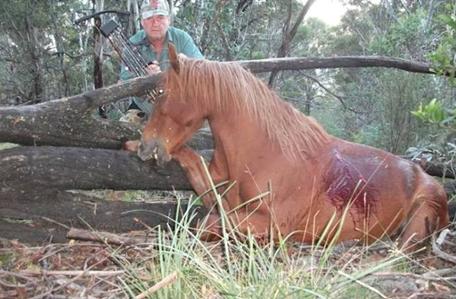
Numerous studies have been done on other game animals (deer etc). The results surprised me too, but when I saw film as well I became grudgingly convinced. The animals are obviously startled (and have some pain) from an arrow passing quickly though their entire body, but quickly settle down again, (eg resume feeding), then mostly simply lie down and pass out from blood loss. Bleeding to death quickly from a silent arrow IS evidently less stressful than being shot with a high-powered rifle - even a one-shot kill, which we would all prefer to be the case. You have to understand that the alternative in the case of brumbies is starvation, parasites, poisoning, capture and slaughter etc. This horse was in quite good condition - indicating their numbers are being kept to a humane level by this and other methods. People might be better to focus on the environmental damage such pests CAUSE rather than on its being a 'beautiful horse'. THIS horse is not 'Black Beauty'! It is a PEST ANIMAL!
13/02/2015: SOCKS: I have always liked the Holeproof Heroes as a summer weight sock. PBs is at least still an Aussie company and the wool at least comes from Australian sheep. I have tried all my life to buy Australian products and am probably the last man standing to wear clothing and footwear either made in Australia (THAT is history, unfortunately) or at least made by an Australian company &/or with Australian materials. These socks have dropped off all the big local retailers’ lists, so I was pleasantly surprised to be able to buy them online from Harris Scarfe for approx $5 a pair!
13/02/2015: Invisible worlds: this morning when I opened my laptop I found this beauty hiding there. I have now returned it gently to the garden:

12/02/2015: Sheep jams (in

12/02/2015: KOOKABURRAS: I wish folks would stop feeding these guys. They are a powerful carnivore, and have bred up to nearly plague proportions around here thanks to ‘Rural Living’ blocks, and this practice. There were an even half dozen in the Blackwood tree at the front gate last night. As I watched one killed and ate one of ‘my’ wagtails (despite my, and her mate’s protestations). They have pretty much eradicated the Indian Mynahs around here. I fear for our wrens, thornbills, honeyeaters, etc. A pity they can’t kill galahs and sulphur crested cockies (nothing else seems to). It is a constant competition to see who will get the first/last apple, them or us! This may have been same the wagtail I suspected (on 3/08 last year of being slightly AC?DC: http://www.finnsheep.com/Steve%27s%20Blog.htm) He must have found a mate over Spring though, as Della found and collected his used nest recently.
12/02/2015: Maybe time to plant some milkweed? By the same token since WW2 farmers in the West have been called upon to feed more and more people on a diminishing percentage of land; likewise loggers to produce more cordage…primary industry generally has lifted its per hectare productivity and vastly larger percentages of land has been returned to wilderness (National Parks, etc) At the same time house blocks have become smaller and much more ‘tidily’ managed. One might have thought that the professional managers of public lands would have seen this problem coming and acted long ago. Problem is that it is well nigh impossible to entice such folks to do ANY real WORK, so now we have this : http://www.washingtonpost.com/news/energy-environment/wp/2015/02/09/the-monarch-massacre-nearly-a-billion-butterflies-have-vanished/?tid=pm_pop I think it is an easy enough problem to get around. Cleared coupes could be seeded at a minimal cost (from the Conservation budget), for example. Here, the problem arises because the Council has taken to spraying our roadsides with glyphosate because practically all the adjoining except ourselves (in a road 34 kilometres long) have failed to maintain their roadsides. The change from slashing to spraying roadsides have deprived many critters of useful and beautiful plants: Queen Anne’s Lace (one of Della’s favourites), wild chicory, yarrow, vervain, fennel…there are many victims of this thoughtless policy.

12/02/2015: Now THIS is a GREAT IDEA:

11/02/2015:
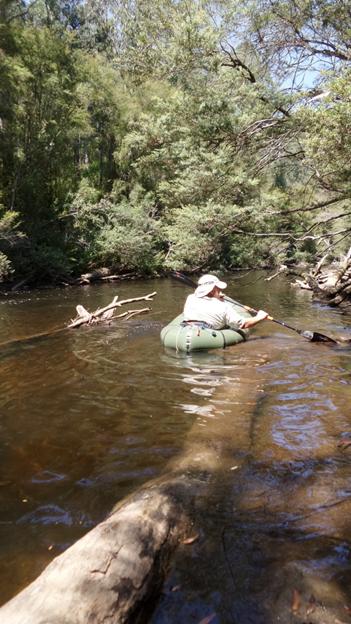
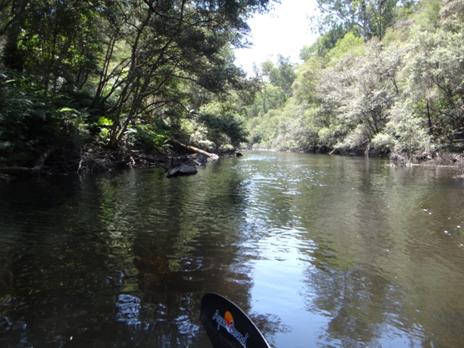

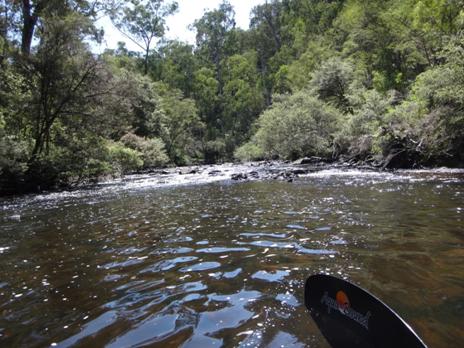
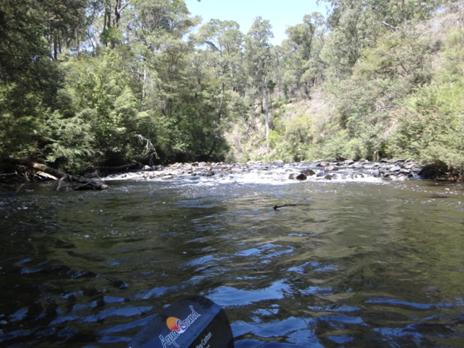
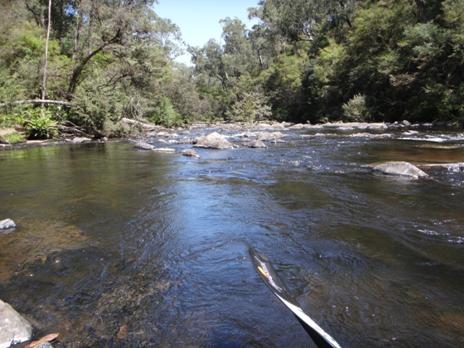
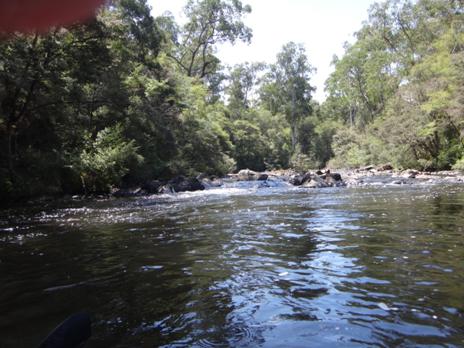
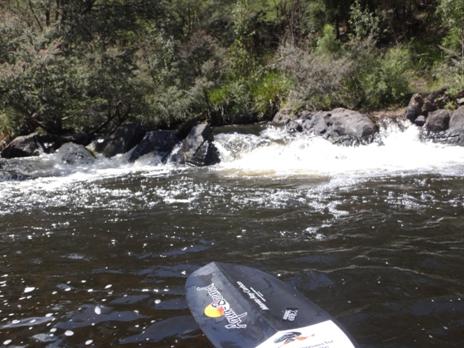
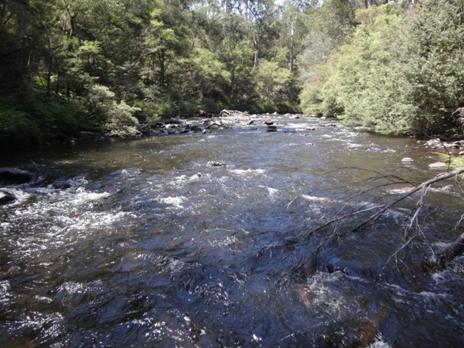
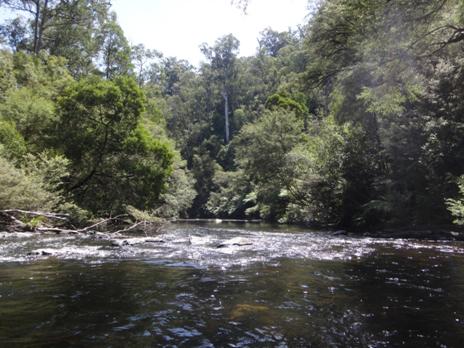
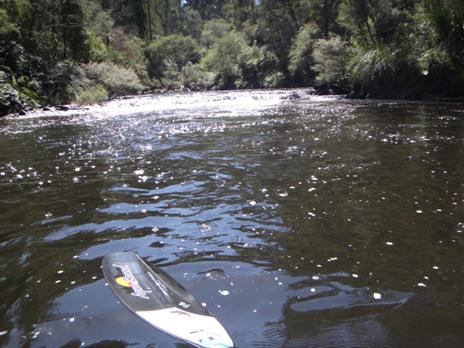

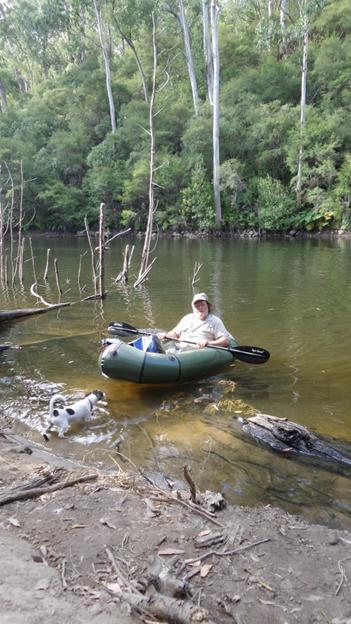
11/02/2015: SILLY IDEAS continue to be our greatest danger. Economically, scientifically and logically challenged folk just love to harbour these. For example: (and in no particular order - PLEASE, NB all of the following are FALSE): We don’t need to pay our way; capitalism hasn’t produced the highest standards of living which have ever existed and lifted the great mass of humanity out of dire poverty; voting for a living is better than working for a living; scientists and engineers are more ignorant than those who can’t pass college entry level maths; government is the answer; someone needs to do something; popular ideas are better than having to do some hard thinking; the world is warming dangerously, becoming increasingly polluted, wildlife is shrinking and mass extinction is happening; religion should be tolerated; you are what you eat; free lunches tomorrow; you should give a sucker an even break; all wildlife is soft and cuddly; things are getting worse; violence never solved anything; there are fairies at the end of the garden, National Parks SAVE wildlife…
10/02/2015: GINGER: BACK FROM THE DEAD; we have had a fair bit of experience with resurrection over the years (maybe one of the reasons I don’t buy the Christian hype). We had a chook do it, a sheep…and now a CAT. ‘Ginger’ disappeared about 15 years ago (when the kids bought dogs which he didn’t like) though from time to time someone would claim to have seen him. His twin brother died about five years back of EXTREME old age and kidney failure. All but one of the dogs are gone too. I was surprised therefore this morning when I saw a ginger cat lying in the grass near our mail box. When I called to him, he looked up then just sidled off slowly, so I followed him carefully to see whether he had the characteristic break about two inches up from the tip of his tail which Ginger had. Given that he was raised by Merrin LONG before she started kinder, I didn’t really expect that he would – BUT, IT WAS HIM! He must be pushing 23 I guess. He was always a good rabbiter, and I have been lamenting his disappearance now that rabbits are breeding up again. He was in pretty fair condition which suggests he HAS been catching a few. The guy across the road admits he has always been hanging around his place for years!
10/02/2015: While on the subject of rabbits: There are some people who espouse to LOVE these giant rabbits (mostly they haven’t had to live with them), but I HATE wombats. ABSOLUTELY; the only good wombat IS a dead wombat. Greenies have ensured there are countless millions of useless acres of bush where these awful pests CAN live, SO STAY OUT OF MY GARDEN you hairy bastards! STOP digging everything over and shitting on it! BE WARNED: you WILL die! (PS: Where we live wombats are declared native VERMIN and it is perfectly legal to eradicate them on sight). No further correspondence will be entered into.
07/02/2015: If you want to find a truly GOOD man, forget Jesus, Buddha, Mohammed, etc – all these shamans and frauds; try Socrates. I would recommend the 'Socratic Dialogues' ie Apology, Crito, Meno, Phaedo, Euthyphro. You can get it for free here: https://archive.org/details/trialanddeathso00platgoog
07/02/2015: Intimations of mortality: ‘Disease is historically normal and natural, and absence of disease is abnormal…We live in an abnormal golden age of artificial health thanks to modern medicine, and have thus tended to be fooled into thinking of health as the normal and natural state…We are in a frenzy of labelling things as diseases these days which would have been viewed as expectable misfortunes, the risks of life…Roughly half of us would have been dead already, in 1800. Childhood infectious disease, childbirth complications, cholera, birth defects, tetanus, influenza, pneumonia, TB, polio, diabetes, war, mental illness, mental retardation, accidents, cancers, animal bites, bug bites - you name it. All normal and natural thanks to a harsh and indifferent Mother Nature who seems to want to disable and kill you - and she will. God may love you, but Nature - no…Try to remember how many old folks, and even middle-aged hobbled around on canes, or sat in wheelchairs and rocking chairs, maybe gasping for breath, or were half-blind, in our youth when they are now playing tennis and skiing. ..Life expectancy has changed very little in the past 200 years - if you exclude the childhood and youth infectious deaths, and the trauma injuries which would have resulted in death - which distort the stats…Wild animals always seem healthy. Why? Because the instant they have the slightest problem, something catches and eats them and they are gone. Sooner or later, they all get killed and eaten because something always goes wrong.’ (Maggie’s Farm)
06/02/2015: Well, ‘Hello Possums!’ – May be time to start making ‘delightful’ garments (and pet food) out of the cuddly sweeties who devour everything in suburban gardens? Of course such laws (as against possum reduction - which no-one can practically obey) undermine the stability of ‘the rule of law’ generally. Once there are numerous laws which it is impossible to obey, sensibly folk begin to pick and choose somewhat about which ones they WILL obey (leaving aside those which it is distasteful to obey – such as refraining from making comment about things which are patently evil to avoid the ‘crime’ of ‘hate speech’). Thence it is a short slide into chaos. Another example from our farm: it is now IMPOSSIBLE to legally dispose of a dead sheep. Either sheep will have to become immortal (unlikely) or we will be ‘criminals’. QED. It is why I no longer concern myself with the invisible lines on public land where eg I may hunt or walk with my dogs. No-one except myself is there. No-one (and nothing) is harmed (save the odd tasty deer), so I proceed with my ‘criminal’ intent: http://www.heraldsun.com.au/news/opinion/andrew-rule-inside-the-secret-nocturnal-world-of-possum-control/story-fni0ffyu-1227203143108 Of course, a few more of these guys in suburbia might help; might help clean up some of those pesky toddlers too!

06/02/2015: ‘Sur La
Pont d’Avignon’: Must’t let Della SEE this or I may NEVER get out of
05/02/2015: While on the subject of cages: People often surmise that a cage full of birds weighs less if they suddenly (all) take off. On the upstroke they are clearly effectively weightless, but on the downstroke the cage may weigh more than when the birds are at rest. My own efforts over the years to lose weight by jumping whilst on the scales has resulted in no decrease in avoirdupois but several broken scales! Man was not designed to fly! Nor scales to assist him!
04/02/2015: There
are folks who are posting pix of nice stags (on MY home page) underlined by
this obvious drivel by E O Wilson, ‘Each species is a masterpiece a creation
assembled with extreme care and genius,’ AND asking that I NOT comment. Well, I
have the good manners NOT to comment THERE, but HERE is a different matter. MY
homepage shows me sitting on just such a dead ‘masterpiece’ which I shot (with
some pride in MY genius at having done so) on the
04/02/2015: GUIDE TO
SHORT WALKS IN VICTORIA:
03/02/2015: The joys of tupping: it might be fun for ovine folk, BUT…I was catching a ram for the delectation of some winsome (hopefully to him) ewes, as I have done a thousand times before. He lurched one way and my hip dislocated with a very loud click, and I guess went back in again…It SURE hurt then, and it hurts yet!
02/02/2015: This guy has been EVERWHERE: http://www.thehikinglife.com/
01/02/2014: Great news for gear junkies (like me). I am particularly interested in Sea to Summit’s new pad and NWAlpine’s new cuben rain jacket, but they will have to be VERY good indeed to beat Thermarest’s Neoair or Zpacks rain jacket: http://www.eathomas.com/2015/01/27/or2015gearreport/?utm_source=feedly&utm_reader=feedly&utm_medium=rss&utm_campaign=or2015gearreport
31/01/2015: Yarra Falls (1928). Further efforts to uncover this ‘lost’ treasure are needed:
30/01/2015: Top Gadget: http://www.gizmag.com/leatherman-tread-bracelet/35731/
30/01/2015: Australia Day reflections: We Are a young country: I have lived nearly a third of our country’s history (65/227 years). My grandfather George (b 1872) used to claim he had met someone who was on the First Fleet which MAY have been true (but he was a notorious story-teller). Certainly Della’s mother, Dorothy who recently passed away could rightly say that HER grandmother had. Her grandmother, Fannie was born in Tiverton Devon in 1844. She lived next door to her grandmother Mary (Madge) Richards (d1855) who was not only ON the First Fleet (as a soldier’s wife) but gave birth to a son, William on the voyage out!
26/01/2015: It just keeps getting better: 138 lumen single AAA flashlight with light diffuser $29.75: http://www.countycomm.com/aaa.html
25/01/2015: Why I hate the Greens – a continuing saga: You might have noticed that we are hunting for canoeable rivers nearby where we might enjoy a warm day paddling, swimming etc. In the past (indeed the average for the hundred previous years) we had always been able to paddle the Macalister and Wonnangatta all summer. The lowest the Macalister used to get on average (in April ) was approx 20 cm HIGHER than its summer level since we had those disastrous bushfires (again and again) a few years back – likewise the Wonnangatta. It seems unlikely that the recovery from those fires will restore summer flows within the next ten years (or my useful lifetime as a white water canoeist anyway!) This is just a fillip to the massive destruction, loss of (wild) life & etc, ALL BECAUSE of these dreadful people and their absurd ‘conservationist’ demands.
24/01/2015:
Tanjil River Rowleys Ridge Bridge Gauging Station Downstream view.
24/01/2015: Upper Yarra Track: Here’s a little TREASURE: ‘The Open Road in Victoria Being The Ways of Many Walkers’ (1928) by Robert Henderson Croll Vice-President of the Melbourne Walking Club With Eight Illustrations http://gutenberg.net.au/ebooks14/1402821h.html It has a whole chapter on ‘The Baw Baws.’ Also see: http://gutenberg.net.au/walking.html for more old Australian hiking books. An excerpt: ‘With the commencement of the bridle track at McVeigh's the way is truly the walker's. For nearly 16 miles it is a sidling pad winding just above and always within sight, or at least sound, of the Yarra, here a babbling stream running at the foot of a steadily deepening valley. Higher and higher grow the hills, well clothed, particularly on the right bank, with tall timber and luxuriant shrubs. The slopes above the river look primeval and un-trodden. But the trail is an old one, as old as the early mining rushes, and doubtless those resolute pioneers, the diggers, left little even of this hilly country unexplored in their search for gold. A reminder of the period is the unusual blaze on the timber—a T, to signify the Tanjil track. Just before the 15-mile post, shown in red on a tree, two huts come into the picture. Each is of iron, and each is well constructed to meet the needs of tourists, it being understood that these bring their own food and bedding. The newer structure has a cement chimney and cement floor, a couple of large windows, a table, a form, and some boxes for seats, half a dozen billies, a frying-pan, a bucket, an axe, a broom, four stretchers, with spring mattresses (and there are as many more in the neighbouring hut) and about a dozen mugs and plates. There are two rooms available for visitors, the space over all being about 50 feet by 15 feet. The old hut is much smaller, but is weatherproof, and at least a shelter in rough weather. On Falls Creek, which joins the main stream at this point, six picturesque waterfalls occur within a mile and a half of the camping ground. They are readily accessible, the track to the main fall (the first) being in good order and of an easy grade. The other five take a little more climbing to see.’ You will see that the hut I already posted a photo of was clearly the old hut. The concrete floor of the new hut (plus chimney) if cleared might make a useful leech-proof campsite.
23/01/2014: 1925 Sketch map of Yarra Falls:
Converted distances taken from 1925 Baw Baw Tourist Maps:
Falls Hut to Falls Creek (4 Chains) = 80 metres
Falls Creek to Main Falls Track (8 Chains) = 160 metres
Thence to View of Upper Falls (81 Chains) = 1629 metres
Thence to Upper Falls Track (7 Chains) = 543 metres
I noticed that ‘Big Ben’ has already been there, and that there is a
campsite at the junction of Falls Creek and the
‘I drove along the dirt track to the south of the river and slowed down to look for the thinnest section of undergrowth to start my walk. There wasn't one really, so I reversed up and picked the "thinnest" undergrowth to walk through. After a short distance the undergrowth became much clearer and the going was much easier. Another 100m or so and I found a piece of yellow electrical tape hanging from a twig. I guessed that someone else had marked a track to the first waterfall at the top of the Falls Creek valley (since there was really nowhere else to go) and sure enough I found another piece on the same bearing that I was walking. Enough people had walked this "track" that you could just make out a trail on the ground. The trail continued along tree trunks wherever possible to avoid walking through the bush.’
(NB: ‘Ben would be referring to beginning in the vicinity of Hill 968 between Toorongo No 3 Rd to the South and Rd 12 to the North off the Forty Mile Break Rd eg on 25K Vicmap Noojee North T8122-3-N)
‘In no time at all I reached the top of the first waterfall. There
used to be a track cut down the north side of the valley that went down to the
other 4 waterfalls just below and then on to
The forest had been reasonably open until this point. It then changed and became hopelessly tangled. The steep slope combined with the almost impenetrable undergrowth and countless slippery branches lying on the ground made the going very hard. I eventually reached the top of the ridge and was disheartened to find that it didn't get any clearer. After struggling through another 100m or so of thick undergrowth it all suddenly disappeared.
Beautiful Forty Mile Break Road
The ever-faithful companions enjoyed the jungle
Mystery Falls First Cascade (1 of 6). This minor fall plunges approx 20 metres.
Diminutive Thomson River: numerous small trout abound.
Many large granite tors are a feature of the Baw Baws. This is a small one.
Frangipani Saddle. Sign reads AWT 3km thataway! Skull of lost walker...
14/01/2014: UPPER YARRA TRACK: Old DSE Brochure (Courtesy Thomas Osburg)
Ferny Track near the end of McKenzies Rd Near Noojee — with Della Jones.
Fantail: Ferny Track near the end of McKenzies Rd Near Noojee — with Della Jones.
Under the Noojee Bridge — with Della Jones.
Tanjil River, Costins Rd near Fumina South looking upstream. — with Della Jones.
Tanjil River, Costins Rd near Fumina South looking downstream. — with Della Jones.
Sandbanks Reserve, Latrobe River


